The hobarT and William SmiTh CollegeS and Union College ParTnerShiP for global edUCaTion
The hobarT and William SmiTh CollegeS and Union College ParTnerShiP for global edUCaTion

Aleph: a journal of global perspectives
a journal of global perspectives
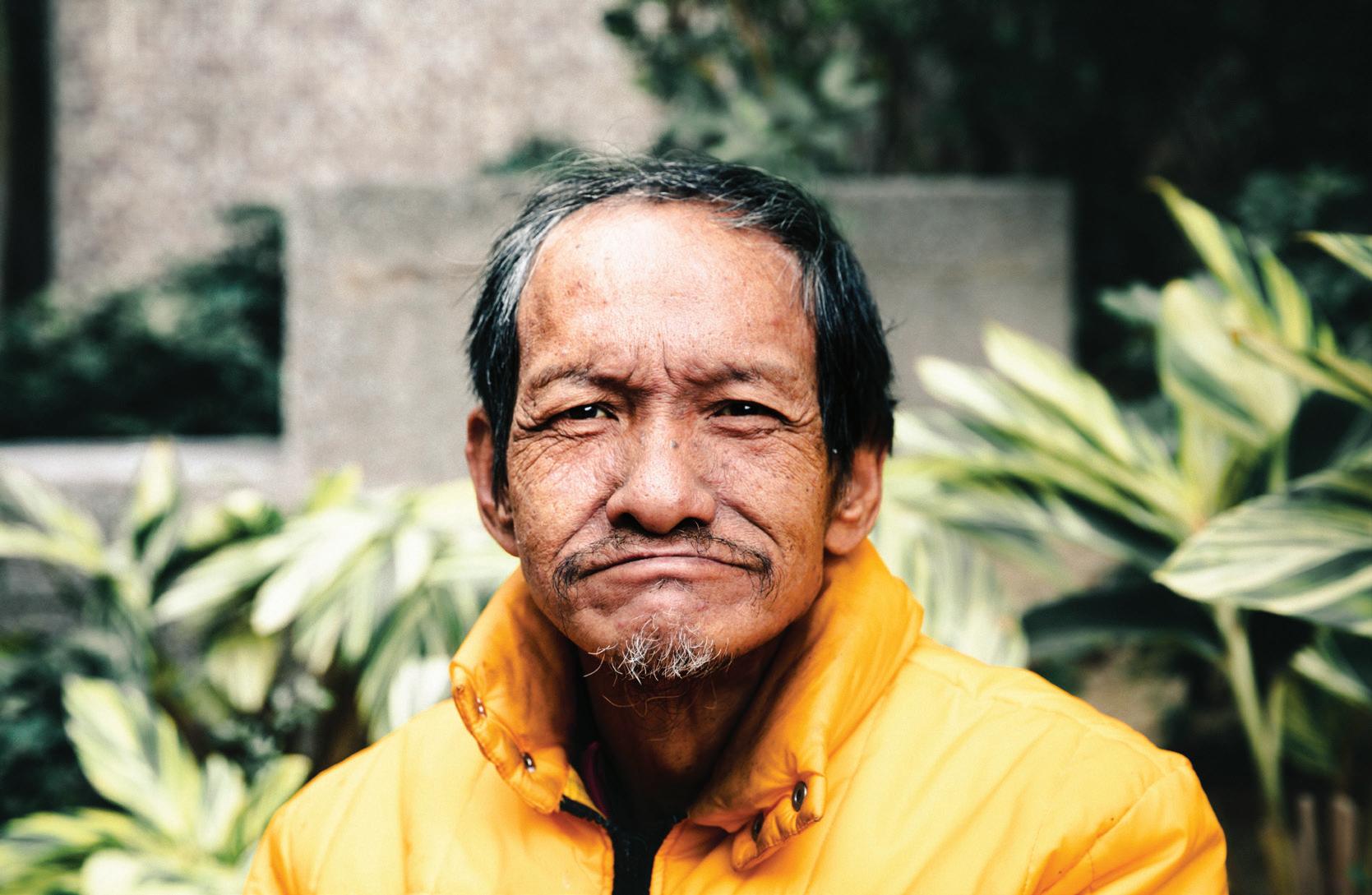
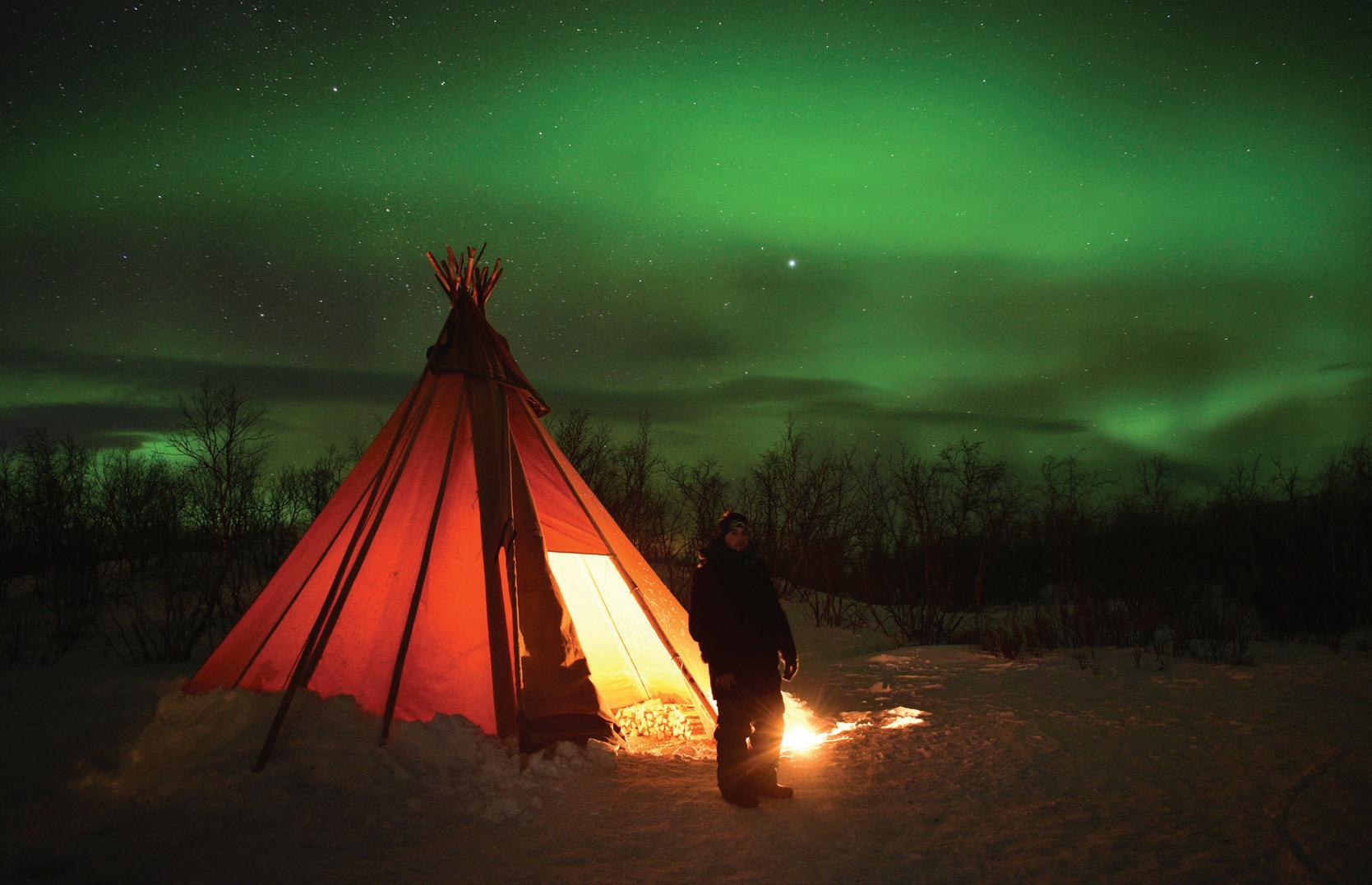

15
The
15
Aleph The

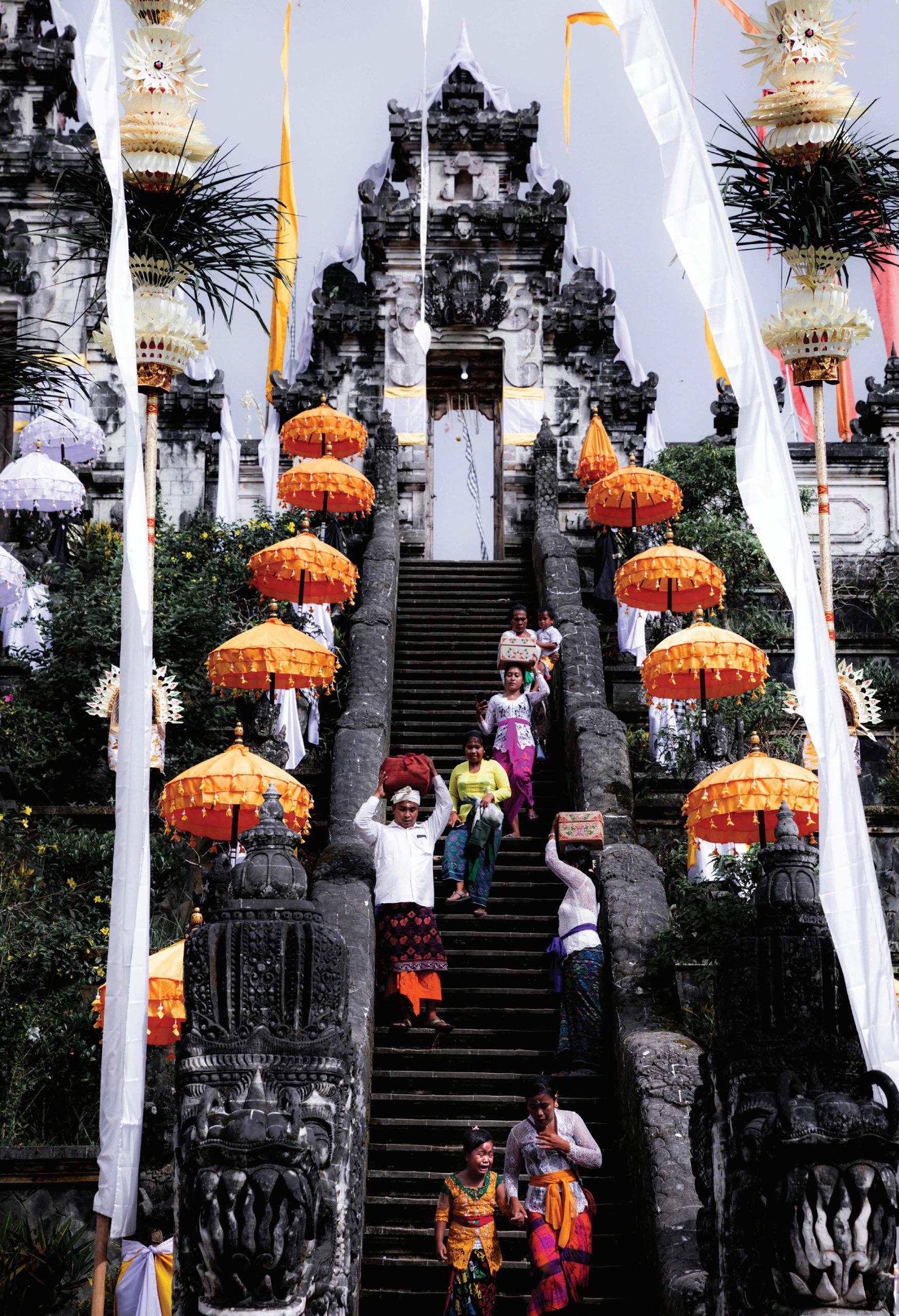
the Aleph a journal of global perspectives
Volume XV, 2022
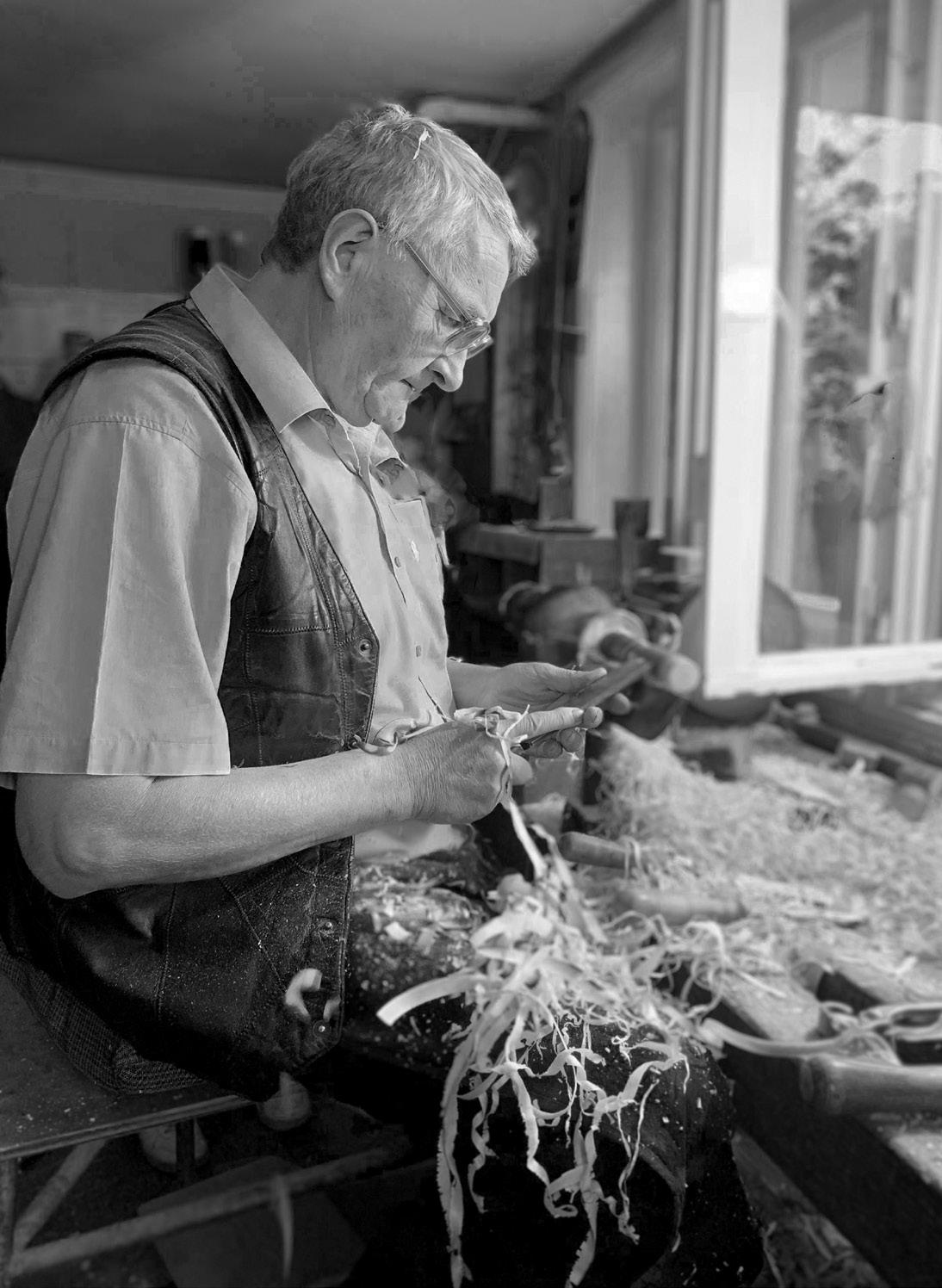 Making Chess Pieces, Transylvania, Romania [Rachel Meller]
Making Chess Pieces, Transylvania, Romania [Rachel Meller]
The Aleph: a journal of global perspectives
Volume XV, 2022
Thomas D’Agostino, Editor-in-Chief
Jennifer O’Neil, Artistic Director
McKayla Okoniewski, Assistant Editor
ISSN 1937-0474
Stories in The Aleph are set in Gentium, designed by Victor Gaultney and adopted by SIL International, an organization working to document thousands of dying ethnic languages, many of which are written in modified Latin scripts. Most digital fonts do not include these extended alphabets and therefore millions of people are shut out of the publishing community. Gentium is an attempt to meet this challenge. The name is Latin for belonging to the nations.
© 2022 Hobart and William Smith Colleges and Union College Partnership for Global Education
Thomas D’Agostino, Executive Director Trinity Hall, 3rd Floor Hobart and William Smith Colleges
Geneva, New York 14456 (315) 781-3307
Cover Photo Credits:
Front Cover: Aurora Borealis, Abisko, Sweden [Mike Goulart], Fu Tei Resident, Hong Kong [Jonah Salita]
Inside Front Cover: Mother & Son with Motorbike, Vietnam [Olivia Bennett]
Inside Back Cover: Pura Lempuyang Worshippers, Bali, Indonesia [Jonah Salita]
Back Cover: Dance in Front of San Pietro, Tuscania, Italy [Susie Register], Fans Celebrating a Goal, Brøndbyvester, Denmark [Joshua Wasserman]
ABOUT THE ALEPH
The first edition of The Aleph: a journal of perspectives was published in 2002 as part of the Partnership for Global Education initiative between Hobart and William Smith Colleges and Union College. Since its inception, the journal has served to reflect the wealth of international experience among students at our respective institutions, and we are pleased to have extended this opportunity to students across the New York Six Liberal Arts Consortium.
The journal takes its name from the 1945 short story “The Aleph” by Argentine writer Jorge Luis Borges. In the story, the narrator (a writer) comes upon “a small iridescent sphere of almost unbearable brilliance” in which “without admixture or confusion, all the places of the world, seen from every angle, coexist.” Through this encounter with the mystical Aleph, he is able to see all things from all perspectives – yet he despairs of the daunting task of trying to convey the enormity of this experience to his readers.
Our students face much the same challenge when they return from abroad: after crossing borders and cultures, navigating societies different from their own in which they are exposed to new values and perspectives, how can they make sense of it all? How can they adequately convey the significance of the experience to this who did not share it?
The Aleph: a journal of perspectives was created to address this dilemma. It provides a space for reflection, analysis, and dialogue that benefits contributors and readers alike. The pieces, both written and visual, offer insight into what captivates, challenges, and inspires our students – and through these words and images we learn about the people and places they encounter, we see how they change along the way, and we are exposed to “all the places of the world, seen from every angle.”
Table of Contents
Crossings (p. 6)
I. A New Year in a New Place (Matt Simkowitz) II. Language isn’t the Only Way to Communicate (Matthew Fox) III. Following the Flow of the Forecast (Sami Foulk) IV. Panopticon (Jack McCarthy)
V. 701 Cumberland Street (Brooke Kelly) VI. Finding Home in Two Cultures (Emma Consoli)
From My Journal (p. 29)
I. Truths on the Tram (Marion Miller)
Moments (p. 42)
I. Bad Urach: A Week in the Mountains (Elizabeth Fajardo) II. Do You Regret It? (Margaret McKean) III. Bergen-Belsen Camp Reflection (Cynthia Kellett) IV. Ancestral Recall (Adrian Shin)
V. Ode to the BVG (Abbey Frederick)
Engagement (p. 78)
I. Local Coffee Shops in Berlin (Abbey Frederick) II. In Dialogue in Durban, South Africa (Carrie Baker) III. Una Carta (Kelsi Morasse)
IV. Onsdagssneglen: a recipe for home (Sarah Walters) V. The Color Black is Vibrant in Berlin (Grace Hoffend) VI. An afternoon with a local Athenian (Barbara Kasomenakis)
Verse & Vision (p. 109)
I. Quays (Molly Englert) II. Left Her Home, Gained Her Sight (Davida Eyam-Ozung) III. LGB(t)Q in Berlin (Gianna Gonzalez)
Lessons (p. 114)
I. We Don’t Need a Taxi! (Elizabeth Anderson) II. Home is Where the Hygge is (Morgan Hamre) III. Walking on Ice (Alexandra Curtis) IV. The Window (Madeline Conroy) V. Within Jinja, Uganda (Lilly Bianchi) VI. Gentrifying Structures (Bramm Watkin) VII. Kleingärten (Ruby Williams)
Portraits (p. 145)
I. Superwoman (Aliya Brown) II. Bean Man and the Start of it All (Lauren Downes) III. Kurt Schwitters: significant scraps (Ruby Williams) IV. Sozi36 (Lauren Downes)

15
Baturi Temple, Bali, Indonesia [Alexa Puleio]
A New Year in a New Place: Experiencing My Own Culture in a Different Language
I am a Jew. Throughout my life, and especially as a college student, one of my strongest identifiers, both in my own eyes and the eyes of others, is my Jewish heritage and culture. My family shares a common narrative with many other North American Jews - my ancestors fled violence and persecution in Eastern Europe in the early 20th century, arrived in New York City, and within a single generation the legacy of the shtetl (a Yiddish word to describe the poor villages in which Jews were made to live under the Russian Empire) was mostly overwritten. My family became, more or less, a family of assimilated English-speaking Americans. Regardless, some of the religious and cultural practices remained strong in my family. Personally, I continue to celebrate the important Jewish holidays every year as my ancestors did, fast on Yom Kippur (the Day of Atonement), attend occasional Shabbat services, and involve myself in Jewish life wherever and whenever I can.
Because of the nature of the lunar calendar (and Jewish tradition), most of the important Jewish holidays fall in the...fall! As a result, for me, the months of September and October tend to be filled with tradition, reflection, and celebration, as well as spending significant time with family. So, naturally, I was completely thrown off when the Jewish holidays arrived not only while I was experiencing the Southern Hemisphere spring, but also while I was more than 5,000 miles from my family in Argentina, a country where the Jewish community was very different from the one I knew well. On top of that, I had to observe the holidays not in English or Hebrew, but in Spanish! While I was lucky to be in a country with one of the largest observant Jewish populations outside of the United States and Israel,
6 The Aleph Crossings I
I was thoroughly confused and nervous to see how my cultural and religious practices would (literally) translate into the context of this completely unfamiliar culture. However, while I initially I thought my being in South America for the Jewish holidays would be an inconvenience, it actually ended up providing a brand new perspective for me, as well as an appreciation for the wide-reaching and persevering nature of my culture.
Specifically, it was the experience of celebrating Rosh Hashanah (lunar New Year) with my host family that truly showed me the ability of my people to congregate and practice our religion and culture in any environment. My host sister’s father (who is no longer married to my host mother, but is still close to my host family) is a practicing Jew, and comes from a long line of Polish and Russian Jews who emigrated to Argentina during the early to mid-20th century. His father, who was present at the celebration, was born in Poland and fled ethno-religious persecution with his parents at a very young age. It was a story not too different from my own family’s story. Throughout dinner, I helped them prepare vareniki, round challah, and manzana y miel (apples and honey). We said all the prayers my family and community says, albeit with a different kind of pronunciation pattern. We even ate the traditional foods that my family prepares, such as brisket, gefilte fish, and blintzes. The experience was surreal yet profoundly touching - my culture and my people were waiting for me wherever I went.
What resonated with me the most about that Rosh Hashanah dinner was the way in which all the different members of the family greeted each other. It was nearly the same as how my family greets each other--loudly, sarcastically, and with a somewhat deprecating but not overly cruel remark regarding one or the other party’s appearance. The only glaring difference was that instead of loud, sarcastic Brooklyn Jewish yelling, I was listening to purely loud, sarcastic porteño exclamations.
a journal of global perspectives 7
It was surreal to experience my own exuberant culture, performing the same religious rituals, in a different language. At the same time, it was profoundly comforting. As I sat in the backseat of my host family’s car after dinner, driving through the streets of Villa Crespo, I felt present and safe and happy in the moment. I knew that the rest of the semester would be similar to that night: full of love, acceptance, and happiness, both as a temporary member of my host family, and as a Jew in Argentina.
-Matt Simkowitz
Street Synagogue, Budapest, Hungary [Matthew Fox]
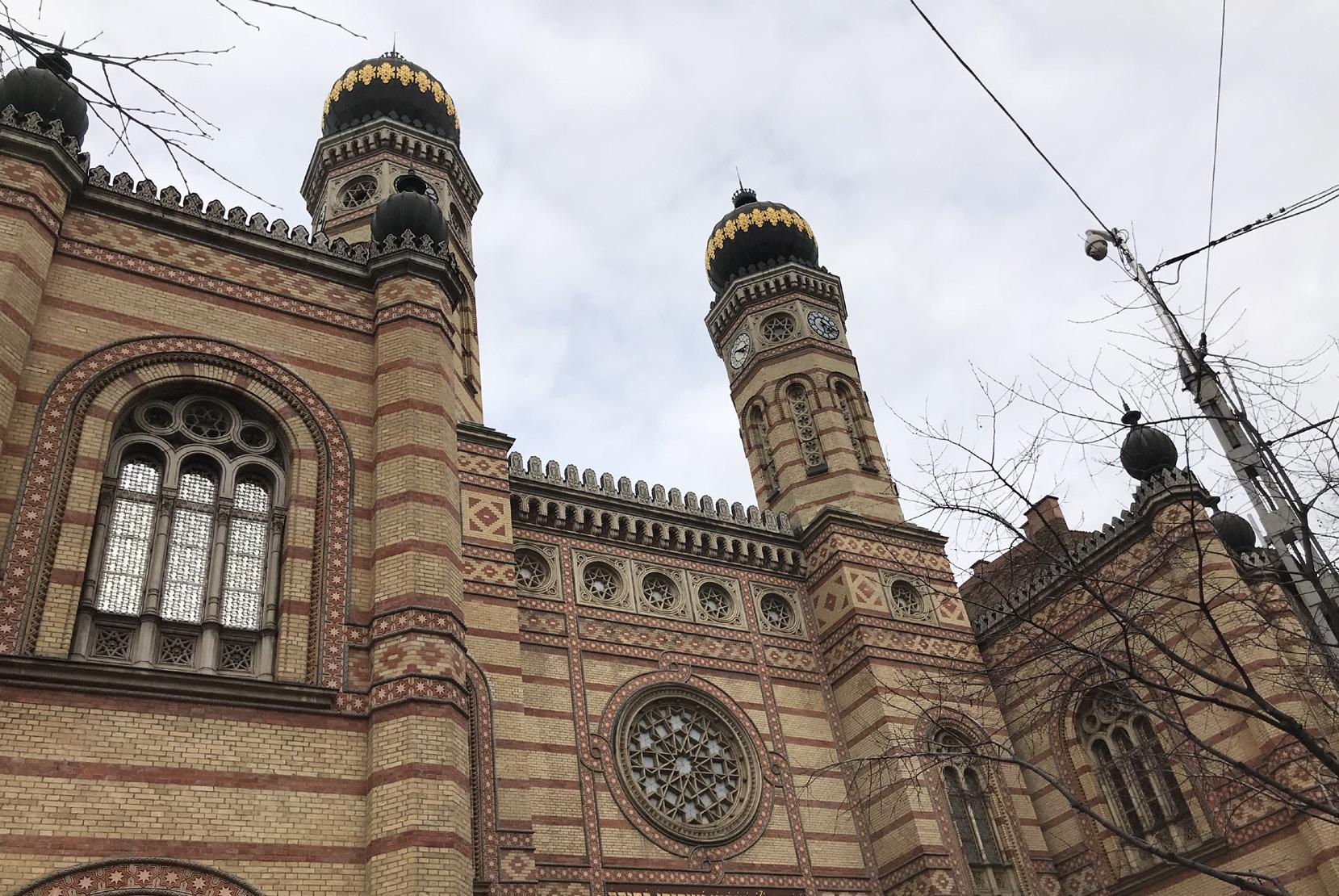
8 The Aleph
Dohany
Language isn’t the Only Way to Communicate
I studied in Freiburg, Germany in the Spring of 2018. During my break I went to Budapest and while there I visited the largest temple in Europe, the Dohany Street Synagogue.
Designed by Ludwig Förster, the temple was built between 1854 and 1859 and has a distinctive architectural style. I was in Budapest during Passover and after seeing this magnificent temple, unlike any other I have ever seen, I wanted to go inside. I found out there was a service the next day and I planned to attend, not really knowing what to expect.
The next day, I arrived at the temple early and a security guard let me in and showed me where to go. I walked into the sanctuary, the main hall where people pray and where the Torah is kept, and I was immediately greeted by an older Hungarian man. He said some words to me in Hungarian and when I replied that I couldn’t speak Hungarian he smiled and continued to the front of the sanctuary. Eventually more people filed into the temple and as they came in, they went to pick up a prayer book from the front and then sat down. Some would smile at me and say something in Hungarian and I would smile back and say hi. Following the others, I went to pick up a prayer book and as I opened the cover I saw the book was more than 100 years old. I was shocked that the temple had such special prayer books like this for anyone to use.
As I took the prayer book and sat down, the service started. It was so surreal to hear familiar Hebrew words but with a different accent, something I was not expecting. I was sitting alone when the service started but people in the temple saw this and walked over to sit next to me. Here I was in a foreign temple, unable to talk to anyone in my own language, yet a whole community was coming to sit with
a journal of global perspectives 9
Crossings II
me. It was an unforgettable moment and one which really showed that language is not the only way in which people communicate.
Throughout the service I marveled at the magnificent surroundings. As I listened to the prayers, I joined in with the ones I recognized and read through the prayer book, thinking of the history associated with it and wondering how it had survived over 100 years. Although I was in this temple and didn’t know a single person, I felt that I had a connection to everyone through our shared prayers. As the service ended, the people returned their prayer books and several smiled at me once again. I returned the smile and realized that even though we could not understand each other with words, we understood each other with our expressions and emotions. I went to the temple not knowing what to expect and ended up feeling a sense of community which will stay with me forever.
-Matthew Fox
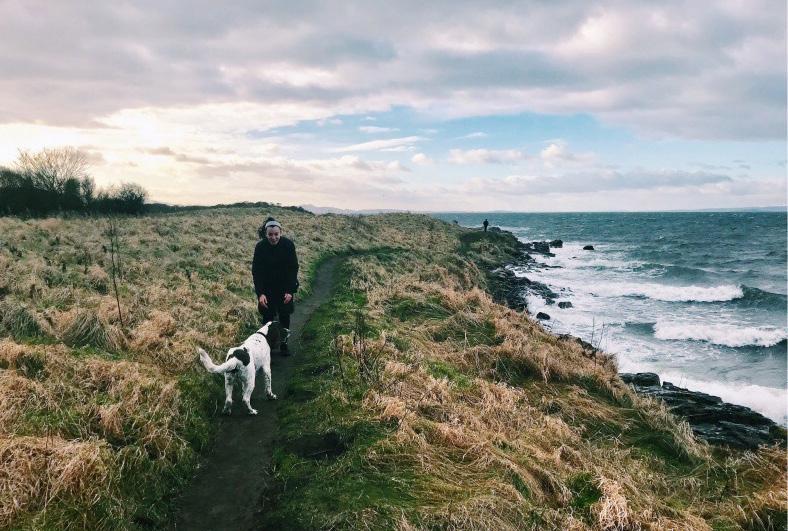 Remote Beach, Edinburgh, Scotland [Kaitlin Hunt]
Remote Beach, Edinburgh, Scotland [Kaitlin Hunt]
Following the Flow of the Forecast
Once again, I was packing my backpack and hopping on another train to Portugal - but this time with my sights set on Peniche. Although I was studying at the University of Seville in Spain, I had convinced two of my friends to come along with me for the weekend to witness the 2019 Rip Curl Pro surfing event that was being held in Peniche, Portugal, the 9th stop out of the 10 stop World Surf League Championship Tour. Just a month before, I had been watching online as my idols competed on the coast of France, and so when it dawned on me that I was going to be watching from the beach this time, I was euphoric.
After speaking Spanish every day back in Seville, I expected I would arrive in Portugal and be speaking in the universal language of English. That was not entirely the case. Little did I know, I would be making home in a hostel with a group of die-hard Brazilian fans who traveled to watch the event and catch some surf. I have been in love with the sport since I first started surfing seven years ago, but for many of the people staying at the hostel, surfing had been a part of their lives for as long as they could remember. Some of our Brazilian friends, such as Natalie, Richie, and Mo, were multilingual and our language of choice alternated between Spanish and English.
In the United States, there is a long-standing relationship between social class and language. English is certainly the accepted language and any other language is frowned upon, unless spoken by an elitist. Whereas in that hostel living room on Supertubos Beach, a variety of languages, including Portuguese, Spanish, English, and even German, were spoken with a real appreciation for diversity. Coming from a country that discriminates immensely based on cultural difference, I was enchanted by the atmosphere of a room
a journal of global perspectives 11 Crossings III
filled with a spirit for human connectedness. Three Americans were learning more and more about Brazilian, Portuguese, and even Japanese culture (there was a boy who traveled solo all the way from Japan just to watch the World Surf Tour event, as well as to score his own waves on the lay days). I believe my friends and I were the only group staying at the hostel - the rest of the people were traveling solo. Yet regardless of how people arrived, there was a common practice of respect and generosity, similar to a family dynamic.
Housemate at Surf Competition, Portugal [Sami Foulk] Surfboard on Bed, Portugal [Sami Foulk]
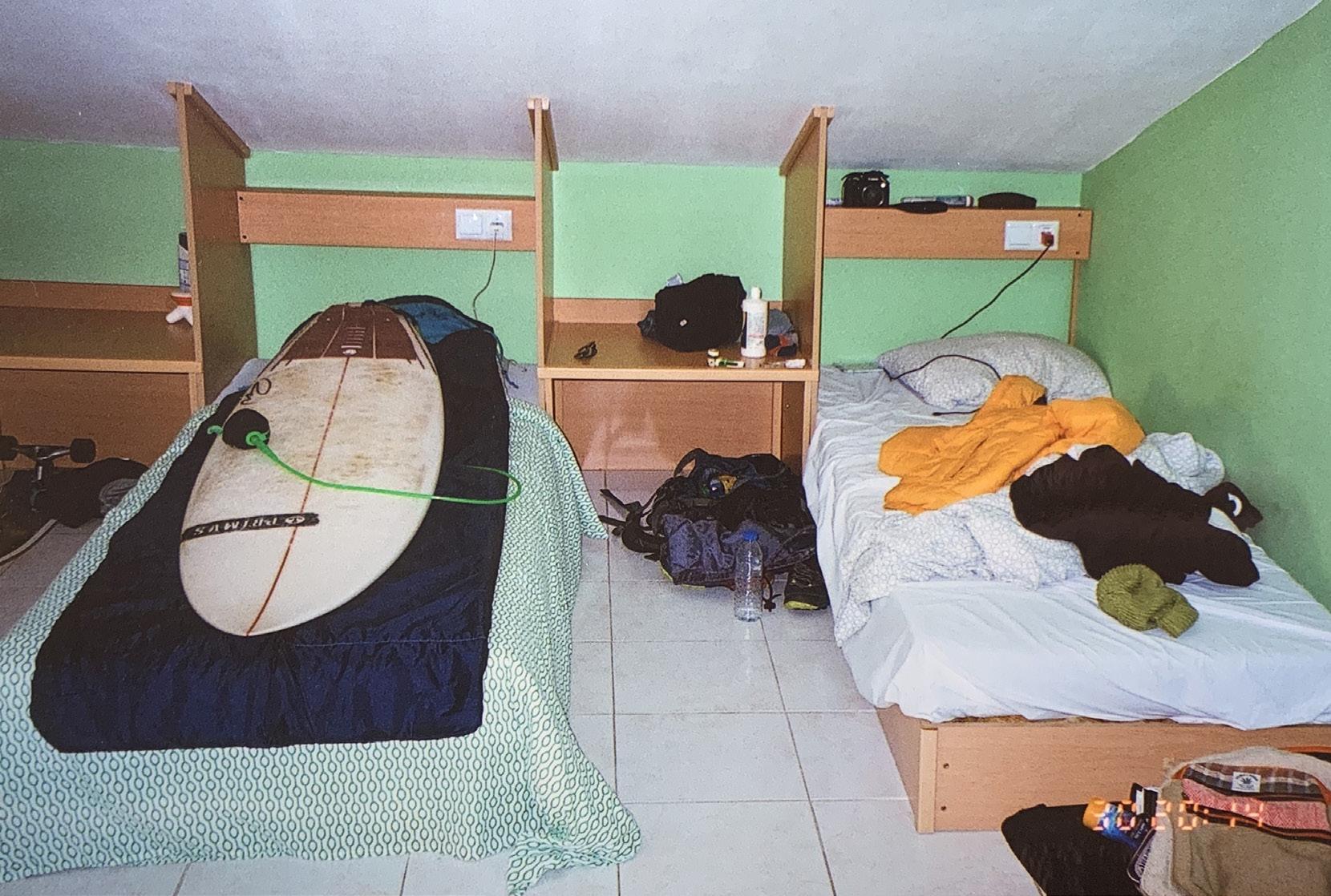
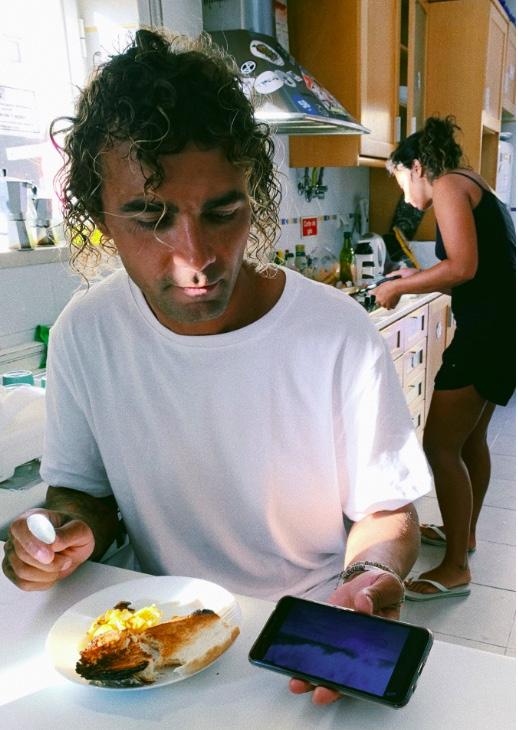
In addition to witnessing Brazilians cook up a storm in the kitchen or jam out for hours, I learned a thing or two about Brazilian hospitality. Going into the weekend, I assumed that my two friends and I would be watching the event alone. I could not have been more wrong. On the first morning of the competition, while everyone was buzzing around trying to cook, take a shower, and pack for the beach, we Americans were constantly included in the plans for the day.
A group of roughly ten of us ended up spending the entire Sunday at the beach watching the competition. If it wasn’t for our friends telling us various facts about the different Brazilian surfers, my attention would have been focused mainly on the American and Australian surfers that I had been following for years. I would have assumed that every Brazilian fan would generally support every Brazilian surfer, but I learned that the region a surfer is from plays a huge role in their fan base. However, it is safe to say that the Brazilians that showed up to Supertubos Beach that weekend (who comprised a large proportion of the crowd) all erupted with cheers and chants when Brazilian surfer Italo Ferreira clutched the first-place title. It appeared the entire crowd was synchronized in melody as they welcomed their winning idol to the beach.
Surfing is such a universal sport because of the welcoming and celebratory nature that the culture has established. A variety of languages, nationalities, ages, genders, and ways of living can be expressed through surfing in a manner that is unparalleled in many mainstream sports. The celebration of sports has always been something that has brought people together, and a mutual love for surfing brought me to befriend new people from an entirely different continent.
-Sami Foulk
a journal of global perspectives 13
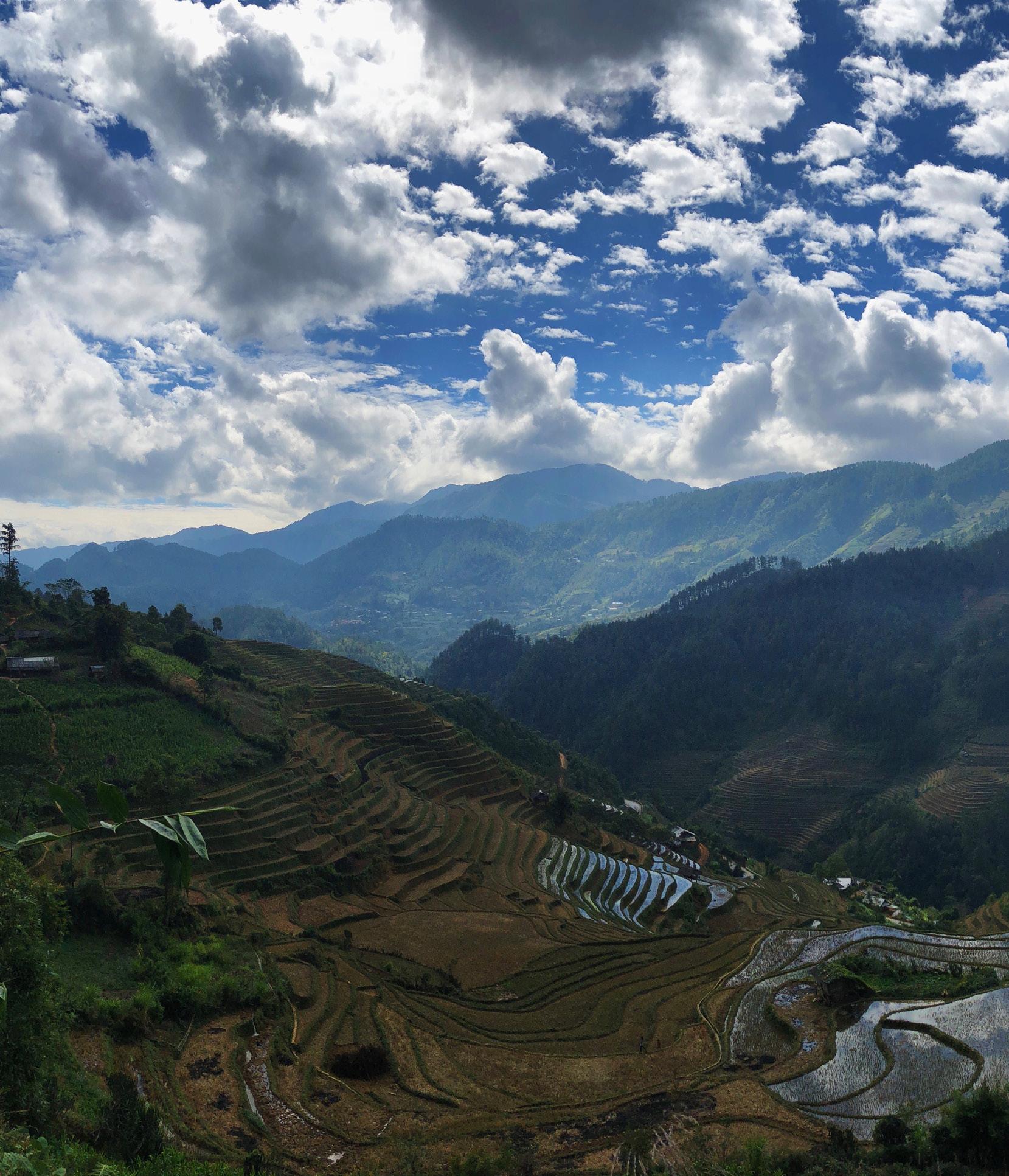
14 The Aleph
Rice Fields, Vietnam [Olivia Bennett]
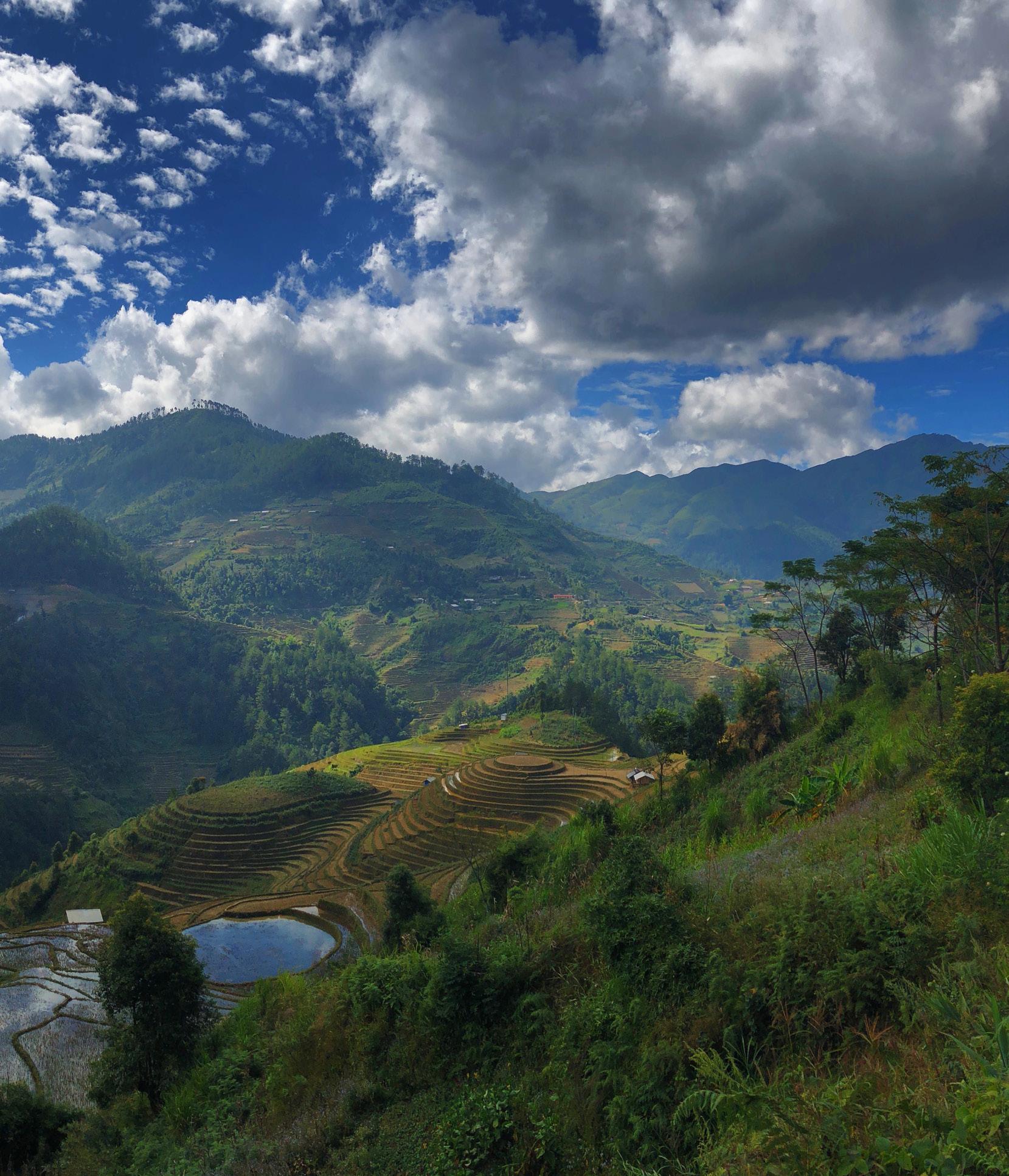
a journal of global perspectives 15
Panopticon
A Buddhist nun once told me, and I’m paraphrasing here, that we live in a world made of glass. That there is nothing we can do, no act so kind, no word so gentle, that will not crack or shatter this delicate place. That there is no way to avoid causing hurt. That if you think you are doing the right thing, then you are not thinking hard enough.
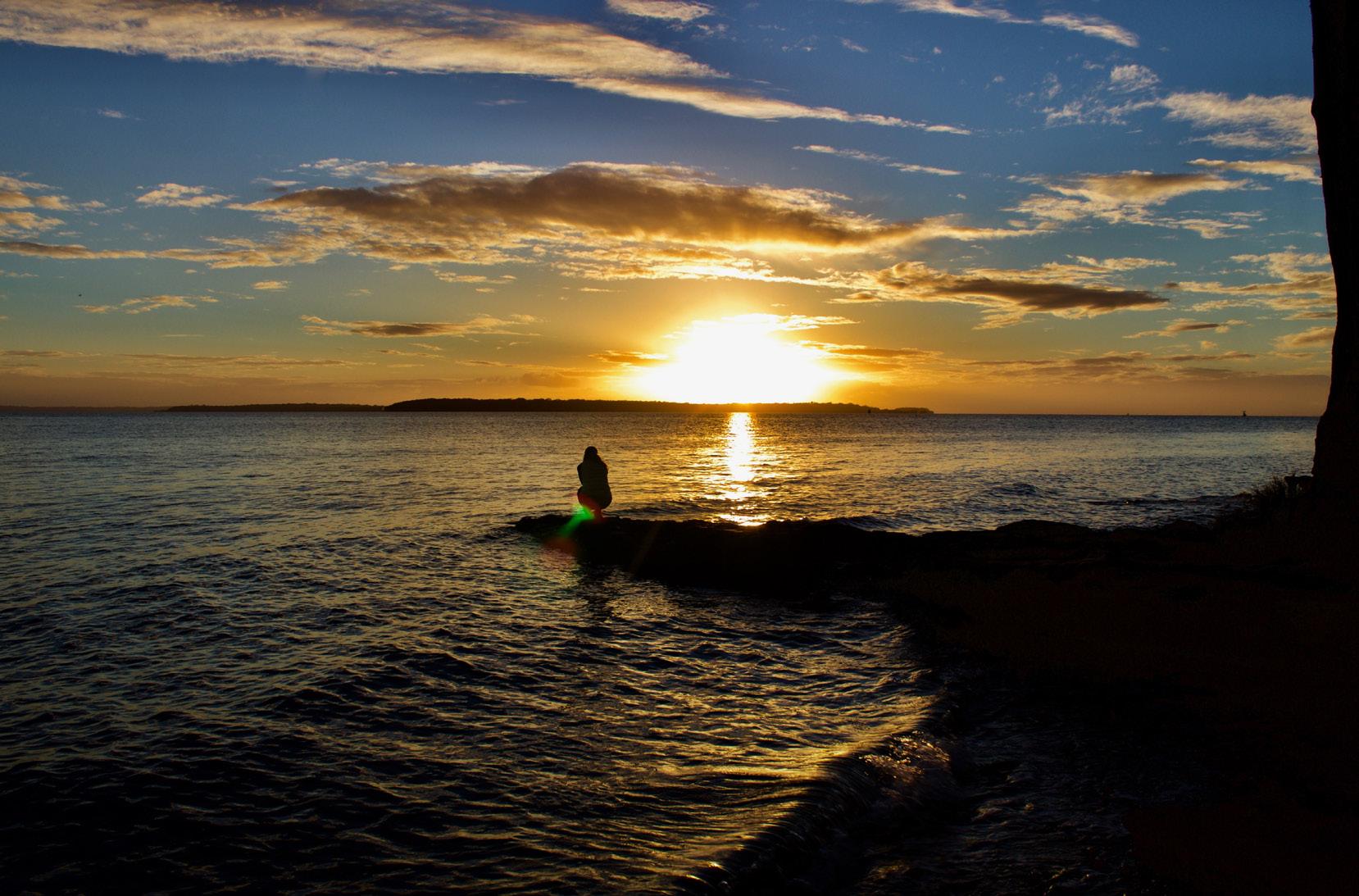
I have yet to find any reason not to believe her.
Have you heard the sound of the prayer wheels on the pier at Khecheopalri Lake? The sound of wood rolling against wood in the vast emptiness of that sacred, wish-fulfilling lake. The slow roll into a hollow crescendo. Like a storm. Like a distant storm in the vast and hollow expanse of my own country.
Have you heard the sound of wood rolling against wood in the empty corners of Bodh Gaya? That most sacred space in
Crossings IV
Sunset on Stadbroke Island, Australia [Amanda Bruha]
all the Buddhist world. Bodh Gaya, a place where religion runs thicker than water. Bodh Gaya, where the world unites to walk in endless circles. Take a walk from your hotel to the main temple. Close your eyes. Listen carefully. Do you hear the sound of wood rolling against wood? Is that the sound of the Khecheopalri prayer wheels? Has that sound drifted so far south?
Keep your eyes closed. You think you can just make out the sound. Like a distant storm in a hollow expanse.
Now open them. Look down.
Further down.
Look down at the beggar at your feet. Look at her legs, bent in ways legs should never be. Look down at the wooden platform she lies on. Look down at the wooden wheels that carry her to your feet.
Now look up and look away.
Listen to her cart roll, the wood of the wheels rolling against cart and ground. That terrible, rolling, rattling sound - empty and hollow and so, so vast.
Close your eyes. Listen carefully and transform the sound, make nectar from this poison. Shhh. That is the sound of prayer wheels on Khecheopalri Lake. The soft and rhythmic roll of sweet religion.
An old man once told me, and I’m quoting verbatim here, that the most important thing in life is to do the right thing. But I have sat at the edge of a lake while the sun set a thousand times and I have done many things. And not one of them was the right thing.
-Jack McCarthy
a journal of global perspectives 17
701 Cumberland Street
It was July 2nd, 2018, when I first spotted 701 Cumberland Street, tucked behind another student flat just off the main road. Having just arrived for the start of my semester abroad in Dunedin, New Zealand, I was eager but nervous as I walked down the path towards my new home. Growing up in Maine, I thought I was prepared for the adventurous, free-spirited way of life that made New Zealand so desirable. I had done my fair share of hiking and camping, and I have always loved the outdoors. I had learned to be in tune with my surroundings and to appreciate not only the view but the process of getting there. But what Maine had not prepared me for was the people who would make my semester abroad in New Zealand much more than just time spent in a new and unfamiliar place. My sense of belonging, I would come to realize, was rooted in 701 Cumberland Street.
The sounds of the busy, two-lane, one-way street were never muffled by the structure dividing us and flooded freely into our flat. Revving engines, squeaky breaks and blaring horns carried into my new home at all hours of the day and night. The aroma of fresh coffee merged with that of gasoline, stale alcohol and freshly baked bread. When the wind blew onshore, I could even smell the ocean, reminding me for a moment of home and summertime in Maine. There was a narrow pathway that ran along the side of our flat, connecting a university faculty parking lot to the street. With the university situated right across Cumberland, the path was used frequently. The window of my room opened directly over it, and I would grow to appreciate the voices of professors that woke me in the morning and drunk university students that lulled me to sleep at night.
Our flat was almost identical to the one separating it from the street, with gray cement exterior walls, green roof-
18 The Aleph Crossings V
ing and yellow window trim. To top it off, the two shared a fenced-in backyard and my bedroom window aligned perfectly with the one next door. The flats weren’t exactly what I had anticipated. There was no intricate lacework along the roof, no white pillars framing the door and no fence posts out front with our addresses, but they were quant in their own way.
There were five of us in total occupying 701 Cumberland: Jamie from California, Austin from Colorado, Hannah from Illinois, Lachie from Wellington, and then, of course, me. While four of us were from the United States, we had all attended different American universities and met for the first time upon arriving at 701. I would come to be closest with Jamie and Lachie, although collectively we constructed a family-like dynamic within the flat. After all, we shared a mutual love for the outdoors, good food and competitive beer pong. Looking back, it was the most ideal outcome for having been placed in university housing in a foreign country with four strangers.
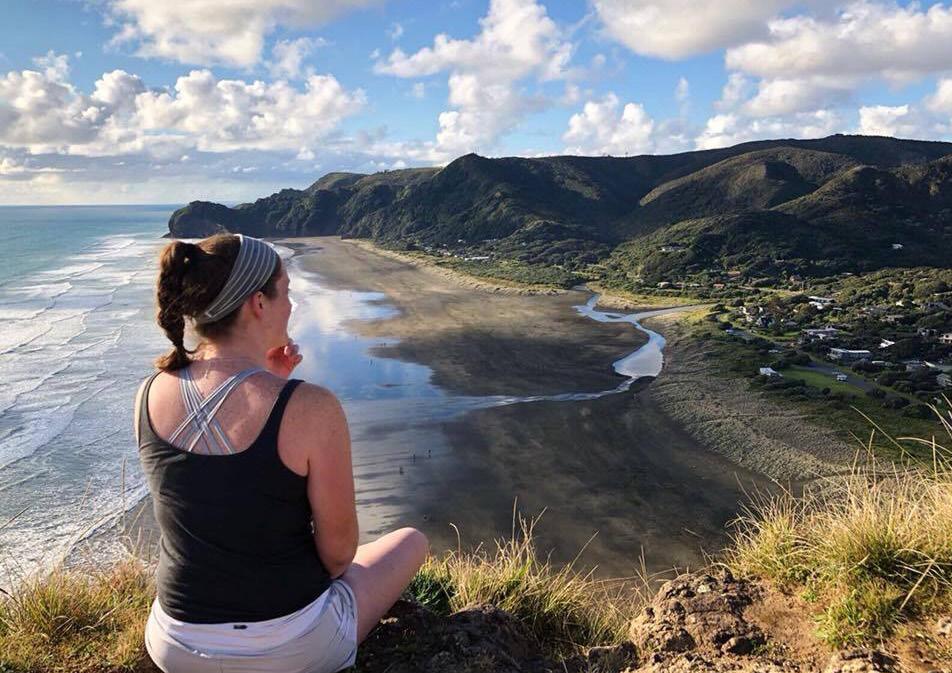 Sitting Atop Lion Rock, Piha Beach, New Zealand [Madison McIntee]
Sitting Atop Lion Rock, Piha Beach, New Zealand [Madison McIntee]
Jamie and I became fast friends, bonding over rosé, trail runs, gossip, and the fact that we could actually fit into each other’s clothes. She stood at no more than five feet and three inches, with soft brown curls and deep brown eyes and a personality that was radiant. Hippy, preppy, and athletic all at once, she was the type of person who can fill a room with energy in a matter of seconds. Austin and Hannah were less outgoing, and loved to watch movies and stand-up comedy. Hannah was tall, with pin-straight strawberry blonde hair that fell just above her shoulders. She wore big, boxy glasses with thin frames, and spoke with just a tinge of a southern drawl. Also tall, Austin had short brown hair, plump, rosy cheeks and glasses that rested on a large, button nose. Both Austin and Hannah did hike, camp, and road trip just like the rest of us, but they proved to be a little less rugged and a little more content using the resources provided by the tourism industry.
Lachie was our Kiwi host, making him the only native New Zealander among us. He was tall and lean, with dark brown
 Mount Brown Hut, Kokatahi, New Zealand [Brooke Kelly]
Mount Brown Hut, Kokatahi, New Zealand [Brooke Kelly]
hair and facial scruff. His glasses were always crooked and he had a smile that made you question whether he was just excited to see you or if he was up to something mischievous. At twenty-two, he was slightly older than the rest, and while home was technically on the North Island, Lachie had been occupying 701 for the past two semesters already. That meant that he had welcomed eight other international students before us, and it seemed pretty clear he had the basics of “hosting” all figured out. He gave us the simplified version of what we needed to know, and reminded us that although we had just arrived, the flat was now our home just as much as his. But for at least the first three weeks, I still felt like some kind of intruder, or a house guest who had overstayed their welcome.
I have always been one to rely heavily on routine. In preschool, my teacher started a seating rotation to help the class bond collectively. I cried every day for a week until they gave me a designated seat that I could return to each morning and depart from each afternoon. So naturally, even at age twenty, in a foreign country on the other side of the world, I fought to find a routine. This consisted, in part, of finding a practical time to wake up each morning in order to take a shower and get out of the flat before everyone else started roaming around. As much as I loved their company, the kitchen was barely big enough for two when we were drunk, let alone first thing in the morning. I decided on eight o’clock. Perfect, I thought. Except there was a problem: Lachie had also decided on eight o’clock. Every morning for the entire semester we fought for the first shower. It wasn’t a physical competition, or a verbal one. It was a silent battle of whose door opened mere seconds before the other. Damn it, I would think, hearing the creaking door hinge. Then I would start a twenty-minute timer, roll over, and go back to sleep. Sometimes, when I really couldn’t afford to wait, I would set my alarm for 7:57am, just enough time to be, quite literally, one step ahead of him. It happened even on Fridays, when most of the city’s
a journal of global perspectives 21
college-aged population was still passed out from the night before. While I got up to enjoy some “me time” over a latte, Lachie got up to go to class. Like many other Kiwi students at the university, Lachie was in the Health Science department, and understandably so.
Similar to America, professions in the Health Science field provide an avenue into high paying, reliable employment opportunities. However, the cost of higher education in New Zealand is much less expensive than in the US. It is also much less competitive; there is no cut-throat acceptance process, only University Entrance Requirements to ensure that students are academically prepared to begin the next level of education. Given the affordability of New Zealand universities and the quality of the education, it should have come as no surprise that Lachie and all of his friends were in Health Science. Affordable, quality education and the opportunity to enter almost any field? Of course, the most practical would be Health Sciences.
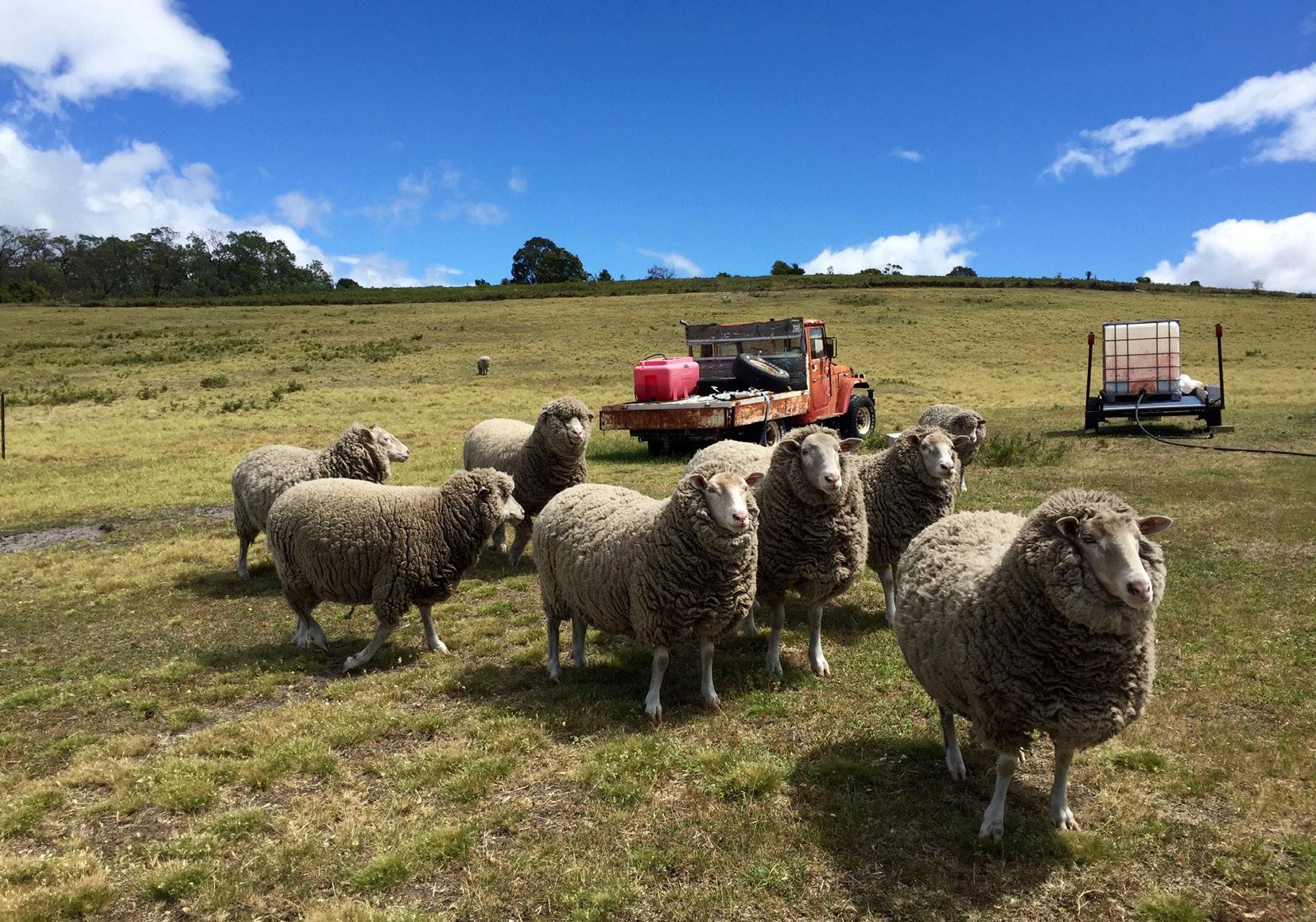 Sheep Gather Skittishly, Australia [Audrey Hunt]
Sheep Gather Skittishly, Australia [Audrey Hunt]
Although annual fees are much higher at St. Lawrence, my home university, students are still encouraged to follow their interests and passions, and not the associated paycheck. Until I came along, Lachie had never even met somebody who was studying English, but honestly, I couldn’t blame him.
Lachie wasn’t uptight - if anything he was the opposite. Which is why, I admit, it made me laugh to picture him taking even the most basic of medical exams. He was, after all, the type of person who forgot his dinner in the microwave and left homemade bread burning in the oven.
“Ah f*** me,” he would say in his thick New Zealand accent, running down to the kitchen. But after pulling the tray from the oven, he would tear the bread in two and eat it anyway.
“That’s three times this week, Lachie!” Jamie would say in thorough amusement and major concern. She gave us both that wide-eyed, sassy but expecting look of hers, and as she laughed, the gap between her front teeth would be revealed.
“No way, I swear!” Lachie would argue, but the smirk smeared across his face told us otherwise. Along with burning bread, Lachie also loved to ask questions and drink vodka mixed with “lemonade” – which, in America, we would call seltzer water – the topic of one (among many) humorous debates that took place within our flat. Debates that could never be won because they were not a matter of fact against fiction, but a matter of mere cultural difference.
I remember asking Lachie one day a complex question about Māori heritage, hoping for an equally complex explanation. Māori is the native culture and language of New Zealand and I had to enroll in an Introduction to
a journal of global perspectives 23
Māori Society course as part of our program. Lachie gave me a solid educated guess in response before clarifying something I had naively overlooked. “Just because I’m Kiwi doesn’t mean I’m Māori,” he told me. “I took Māori Society a couple of years ago, just like you.” And although he knew much more about the native New Zealand culture than me, he certainly didn’t know everything. “If I asked you about the American Indians,” he added, “how much could you tell me?”
“Close to nothing, honestly,” I admit. “I never thought about it in that way.”
He wasn’t being sassy - he was merely putting in perspective the absurdity of my question since only about 15% of the New Zealand population identify as Māori.
Because of his laid-back nature, it came as no surprise that Lachie was anything but a stickler when it came to rules. However, up on the bulletin board by the kitchen door, among fire safety pamphlets and the no smoking signs put up by the university, we had a color-coded chore wheel and each week we shifted clockwise one color. Lachie didn’t care that no one cleaned the bathroom or vacuumed the stairs –neither did he. But if you were on trash and recycling, you better be sure that all glass was cleaned out and put in the blue bin outside the front door, all paper and plastics went into the large gray bin with the yellow lid sitting out by the wooden gate, and you better drag them out to the curbside every Sunday night on alternating weeks. But it made sense Lachie was adamant that we recycle - all of New Zealand was doing so, too.
Lachie knew the recycling pick-up schedule like the back of his hand. “Today’s blue,” he would say, slinging his bag over his shoulder on the way to the library. “Whoever is on trash and recycling this week, don’t forget.” Walking to class on
24 The Aleph
Monday mornings, I would laugh, the entire street lined with overflowing bins, liquor and beer bottles spilling onto the sidewalk.
And so it went. In some ways, I had been right. Growing up in Maine had prepared me well for the free-spirited, spur-of-the-moment, adventurous nature of life in New Zealand. But it was 701 Cumberland Street that became my new home and the foundation of my sense of belonging in this foreign country. It was a bed to rest my head, a room to store my stuff, and a family of five to share stories, memories, and a few – or a few too many – drinks with on Wednesday nights. And that was enough.
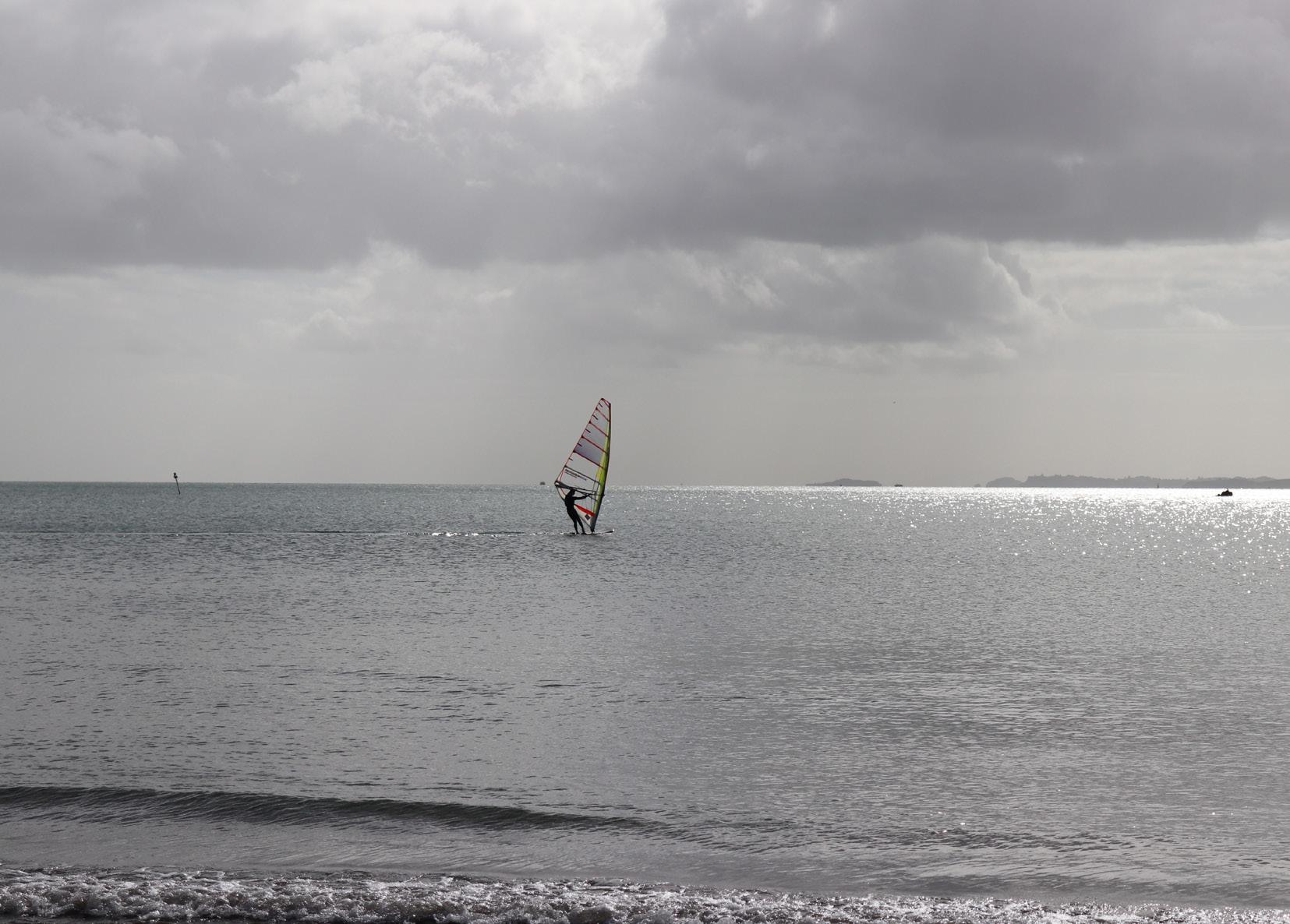 Windsurfer at Takapuna Beach, New Zealand [Grace Stribling-Hough]
-Brooke Kelly
Windsurfer at Takapuna Beach, New Zealand [Grace Stribling-Hough]
-Brooke Kelly
Finding Home in Two Cultures
I am Italian-American. It is an identity that I have been proud of all my life. My dark features and my last name give it away pretty quickly, as does my incessant chatter about family traditions, constant research on Italy for school projects, and perpetual griping for “good Italian food.” Choosing to study abroad in Rome, therefore, was a no-brainer. I would get to live in the country which has guided my selfperception, curated my holiday menus, defined my religion, and, essentially, shaped my life from afar. Also, it didn’t hurt that Rome is one of the most historically significant cities in the world and that Italy is a Mecca of food, wine, art, and culture.
Living in “the motherland” has always been a dream, but being here now I am struck by how much I feel like an outsider. Yes, I am a novice Italian speaker which does drive a wedge between me and the locals. But while I was ItalianAmerican in the US, here I am American-Italian. This might only be a slight change in the linguistics, but it is a significant change in my identity, leaving me suspended between my ancestral and contemporary homelands. I am neither fully American nor fully Italian, and while my actions in the US flag me as the grandchild of immigrants, my actions in Italy scream American.
It is, honestly, disorienting and I feel as though I’ve lost myself in some ways. At home I was always able to reach back to my Italian roots and re-center, but here I am constantly grappling with wanting to immerse myself while secretly praying for familiarity. I do my best to avoid “touristy” places, looking for menus and websites which only offer versions in Italian, but I become overwhelmed when I try to read and most of the words are lost on me. I am quietly relieved when there is English to fall back on.
26 The Aleph Crossings VI
I’m positive that this is not a unique experience, and that others studying abroad feel this same type of panic and disorientation, but mine is magnified by a kind of guilt. I have put my Italian heritage on display for the past 20 years, yet I can’t speak the language. I have eaten many of the dishes, yet I struggle to identify them. My face may look Italian, but as soon as I open my mouth my true identity is learned. My heart bleeds for Italy but my body is squarely American. I am a foreigner.
It is disheartening to see my identity challenged in the harsh winter of culture shock. I am not one who typically cowers in the face of struggle, but it is difficult not to feel defeated when the culture I know best looks at me as though I am an “other.” While I do love being here, my apparent confidence is a façade. I feel the need to keep up an illusion of comfort and ease when around my peers, because my deepest fear is to be written off as an American tourist. I want to be more than that. I am more than that.
 Colosseum, Rome, Italy [Danielle LaBare]
Colosseum, Rome, Italy [Danielle LaBare]
I see the light, though. Spring is coming slowly but surely as I become more comfortable with each passing day. With each stranger that recognizes my face in theirs, with each flowing conversation, I grow into my Roman self. It’s showing, too. I’ve started to get questions on the bus from nonRoman Italians asking me for directions, as if this were my city. I’ve caught strange looks from waiters and taxi drivers when I turn to my peers and start speaking English after conversing with them in Italian. I’ve been asked by shop owners and postal workers where I’m from and they’re shocked when I say the US. These are small victories for me.
I know that in my short time here I cannot become indistinguishable from those who are born and raised on this soil, but I am starting to fit, to blend, and it makes my heart soar. It is validation that I do belong – reassurance that I can be both Italian and American, not one before the other. I am finding my footing again, and with it, the confidence to grow. I am American and Italian, raised by both cultures, and I am from here. Cheers to la dolce vita.
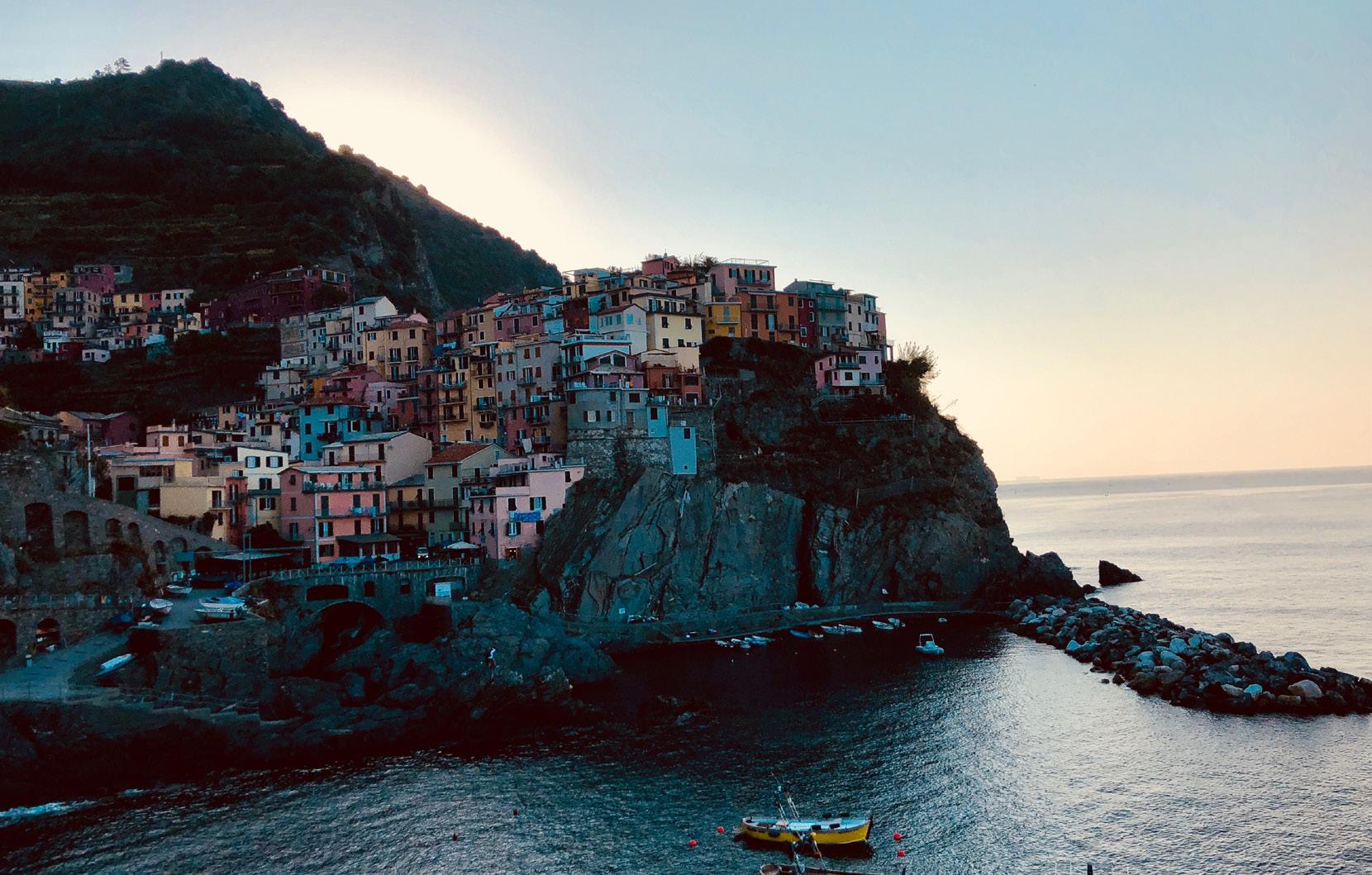 -Emma Consoli
Sunrise over Manarola, Cinque Terre, Italy [Jenna Bredvik]
-Emma Consoli
Sunrise over Manarola, Cinque Terre, Italy [Jenna Bredvik]
Truths on the Tram
SEPT 12
The sun peeks out from behind the perpetual, hazy smog that is Prague on this Monday morning. I clutch my neatly scribbled directions in one hand and my study abroad welcome packet in the other as I frantically rush down the narrow street from my house to the tram stop. After arriving in Prague the night before, I have an uneasy gut from little sleep and unfamiliar food. I am surprised that my host parents expect me to navigate my way from my home in the suburbs to school eight kilometers away. The school is in the center of Prague, which I will only now be seeing in daylight for the first time. As I examine the instructions that I found on the kitchen table of an empty house earlier this morning, I don’t yet realize how second nature this route will become. Get on at Nadrazi Modrani, ride nine stops and get off at Vyton. As I near the Nadrazi Modrani tram station, I see a tram pulling away and my heart races, how could I have missed it!? But little do I know, Tram 17 comes every five minutes, and I am just early for my scheduled ride.
I must look like a newbie. I realize that I am the only one dressed in shorts on this brisk fall day, waiting for the tram with directions in hand and a frantic look on my face. The next tram pulls up within a few moments, its bright red body somehow shimmering despite the lack of sun. The tram sits on tracks like a railway train, but unlike a train it also has cables attaching the body to an overhead line. As I step on and am surrounded by a white noise created by the electric whir of the tram, I realize that my tentative, quiet nature fits right into the tram atmosphere. Although it is packed with commuters going to work, their briefcases on laps, books in hand, my stop is early enough along that
a journal of global perspectives 29 From My Journal I
there are open seats. I slide into a red plastic seat and as we take off, so does my relationship with the tram.
SEPT 20
School is out for the day and all the American students rush down the hill from the building that used to be a monastery, now our school, to catch their respective trams as quickly as possible. Nobody, Czech or American, likes to wait for a tram. I file onto an overly packed one, because nobody tells anyone when it’s probably too full for them to get on. Everyone has places to go and the mild discomfort of having someone’s elbow in your gut is better than waiting. I stand with Maggie, Maddie, and Sally, three quicklymade friends from my first week. I recognize many of the passengers who fill up the tram because most are fellow abroad students. As I look around I make eye contact with a boy from my Architecture class. He smiles. I grin and look away. Despite the fact that we have only been here for a couple weeks, we already know not to sit in the few open seats as they are reserved for the elderly. The Czech people respect their elders.
My friends and I are on a mission to explore the castle gardens at the end of the tramline. The stop where we get on is a segway for many people as one can either take the same tram continuing along the river towards the castle (as we will), another that crosses the river towards Zbrovská, or one that goes inland towards town. Behind me I can make out the top of the Basilica of St. Peter and St. Paul which sits a couple hundred feet up, next to my school building. To my left lies the river which accompanies Tram 17 from my house all the way to the castle. I can see over the river by way of the Charles Bridge that leads to Zborovská, where many student apartments are, as well as the mall with the fancy gym. If I lean to the left and put my cheek up to the window I can just make out Prague Castle in the distance, perched on top of the city, spires standing tall,
30 The Aleph
guarding over Prague like a hawk over its nest. I take it all in for the few moments while the tram is stopped at the station. As we start to move again, I see my favorite coffee shop speed by to the right and then the road that leads into the city through the old renaissance apartments. As I admire the view and chat with my new friends, packed like sardines in this tight space, a thought occurs to me about how easy it would be for someone’s hand to sneak into my cross-body bag or unzip my backpack. What a disruption of space that would be, in a peaceful place where even though the passengers are shoulder to shoulder we are in our own bubbles. I remember how my friend’s phone had been pickpocketed on the tram in the first week. And I am not about to get my phone stolen, hundreds of photos already filling up the storage from only a few weeks in Prague, and many to come. Not today. Not any day. I warn my friends and we make a mental note to keep our bags close at all times from there on out.
OCT 1
It is 4pm on a Monday and I am sitting in my Czech class. Today we are learning how to pronounce the Czech ř (pronounced like “rzj”), a sound that does not occur in any other language. The class (primarily female American students), in an attempt to stall and change the subject, begins interrogating our young teacher on her personal life. She is surprisingly eager to tell us about her American fiancé she is going to visit in a week. “Awwww, how did you guys meet!?” several students cry out, surely imagining their own potential “abroad bae” relationship in the months to come. Our teacher explains how the two of them met on a tram one day when she was speaking English with a visiting friend. A man walked up to them and said, “Hi. I heard you two speaking English, I haven’t heard my language in so long, where are you from?” And that’s how the romance began. They hit it off and went out to dinner that night. But these things don’t just happen, right? I’m starting to think
a journal of global perspectives 31
maybe there’s something magical about the tram. Until this point I’d only thought of the tram as a mode of transportation, but maybe there is something more.
OCT 20
There are times when I zone out to the buzz of the tram, and today is one of them. I let my pupils flicker across the wide, fall-colored branches of the linden trees and go in and out of focus. They remind me of home, although they are only a dull version of the vibrant red maple trees that create the famous Vermont fall view. But just as the thought comes, it leaves, as the trees come and go from view. The tram is a form of meditation I don’t realize I am participating in. My mind is blank. I just sit. I can’t be the only one in this state, because the tram is so quiet. The general vibe is similar to what I imagine a yoga retreat would be like, a moving meditation lounge. There is no eye contact. Everyone is in their own space even when crammed together, and it is as if we are all alone. Just a person in a tram. It may very well be a reflection of the distrust that was planted in the minds of so many only a generation ago. I think back to a Czech history lesson when we learned about the Communist era. It was a time when the regime employed secret police to “out” any illegal behavior. A time when a friend, a neighbor, or even a brother could be untrustworthy. Perhaps this historic distrust and unease explains the lack of eye contact that has turned into peaceful contemplation on the tram.
OCT 26
It’s 5 pm on a Thursday. Plopping down across from two strangers, I let out a sigh of relief that there are enough open seats for me to relax, exhausted after walking around the city all day. Oh, whoops, they clearly aren’t strangers to each other, I think as their lips begin to touch, catching me offguard. Although I’ve been here for a couple months already,
32 The Aleph
I am still in shock every time I am confronted by PDA in my quiet peaceful place. How can people be so private and distant with strangers, yet show such public, deep affection in view of everyone? The couple looks to be in their late forties, much too old for PDA in my opinion. As they get closer to one another, what started as a playful kiss turns into a full-on makeout session, five feet in front of me. I feel so uncomfortable, as her hand grazes up his leg and he grabs her face. Am I jealous of their intense love? Honestly, yes. But that’s not what makes this so awkward to be a part of, as somehow, I feel like a background character in their love story. I think about the boy I met the other day in my Architecture class, and dream about a day when we could be the couple in the tram, unable to keep our hands off each other. But realistically, I wouldn’t be as bold as that couple, having grown up in a modest family, a modest American society. But, as I will
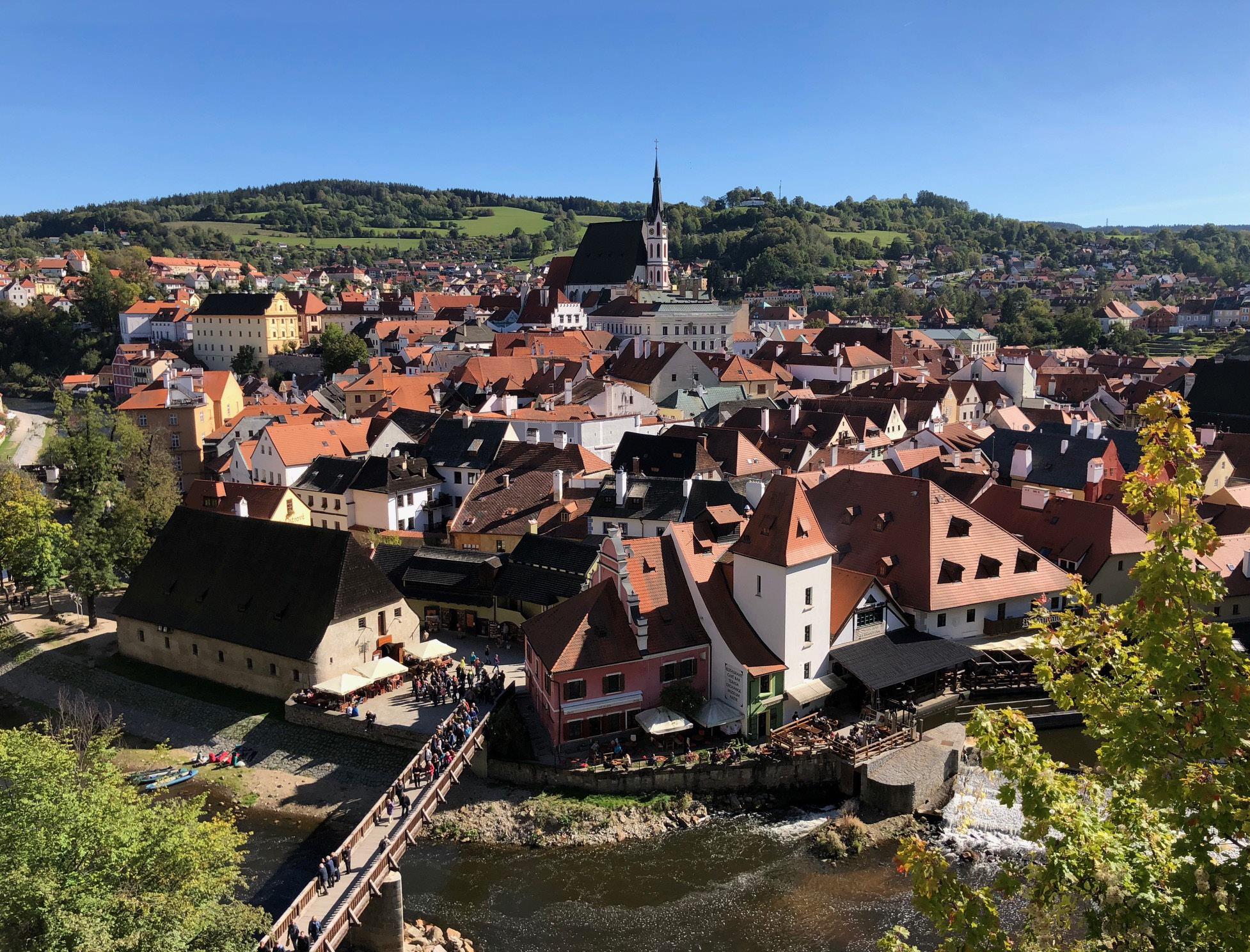 View of Český Krumlov, Czech Republic [Jenna Bredvik]
View of Český Krumlov, Czech Republic [Jenna Bredvik]
learn, this activity is as normal to Czechs as refraining from eye contact. Although I feel as though I am becoming more accustomed to Czech culture, these differences make me uncomfortable. But the couple is in their own bubble, just as I am, finding a private space and moment on the tram, among so much city chaos. So, I look away and enter my peaceful state once again.
NOV 1
The halfway point is coming along quickly and by now I’ve sunken into my routine. The tram doesn’t surprise me like it used to; I’ve fallen out of the honeymoon phase and am now comfortable with the tram. I wait for Tram 17 at Nadrazi Modrani. It takes me the nine stops to school, where I depart. However, this afternoon, the stench of dirt, old beer, and sweat greets me as I take an open seat in a surprisingly uncrowded area of the tram. Then I realize why it is so vacant. In front of me stands a man who hasn’t seen a shower in months. His hair covers most of his face, scruffy like a scouring pad, only his blue eyes visible. He stands by the door, maybe aware of the ripe smell protruding from underneath his layers of jackets. He is one of the large number of homeless people who live in Prague. They are rarely seen on the tram due to the cost, although I can see this man has done this ride before as he is on the lookout for ticket checking patrols who might catch him. As I examine him and his belongings, I wonder what his life is like. Here I am, studying abroad in a foreign country that I think of as a castle-infested fairyland. The same place that has done this man dirty. What is in his bags? Does he even have family? The questions circulate but no words leave my lips. People don’t talk on the tram, they judge.
NOV 3
As I sit on the tram, “Sink” by Noah Kahan plays through my headphones, reminding me of home. I went to high
34 The Aleph
school with Noah and now he is a famous folk-pop artist with millions of listeners. I guess what I’m doing is kinda cool too, traveling through Europe, but what am I going to do with my life? Memories come flooding in like water through a broken dam. His acoustic guitar fills my mind as I worry about things I have to do. Get my classes situated, figure out where I’m living, call my family. Figure out my career path. Make money. But then the sunlight hits my face as the tram speeds out from under a bridge, and I’m brought back to real life. Tram life.
NOV 15
Friday evening rolls around and I find myself on the tram once again, on my way to meet up with the girls for a night out. The normal silence is disrupted by the sudden presence of loud voices as two women bustle in, wrapped in scarves and mittens on this brisk early winter evening. They must be foreigners, I think, as I self-proclaim myself
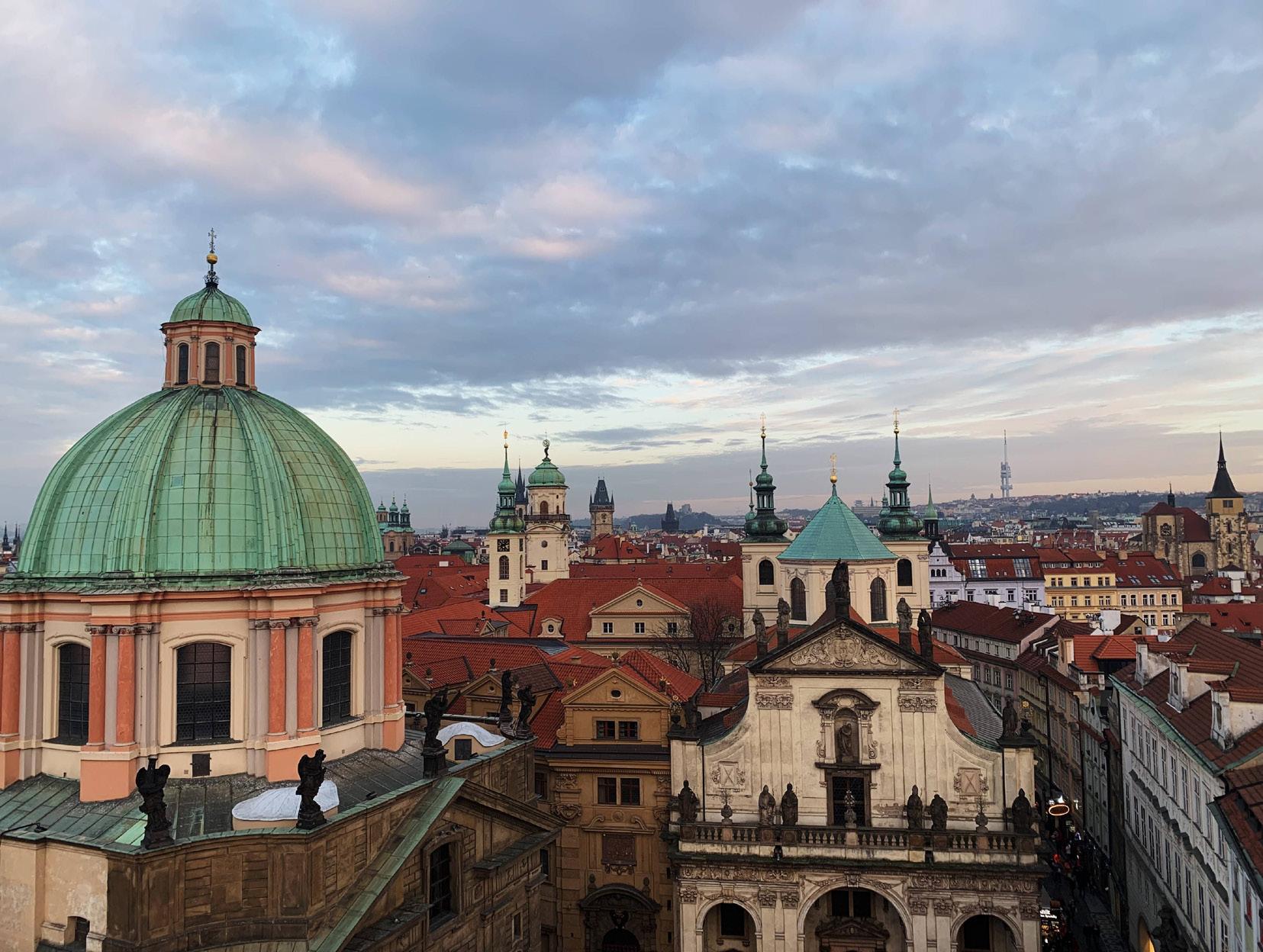 View from Old Town Bridge Tower, Prague, Czech Republic [Rachel Yackel]
View from Old Town Bridge Tower, Prague, Czech Republic [Rachel Yackel]
a local with two months spent in Prague under my belt. As I’m bombarded by their speech, I realize that for once it is a language I recognize. I have seen this duo before on my tram ride, two girls in their late twenties, one with flowing black hair, and the other with light red. I turn the volume down on my “chill tram” playlist and tune into their conversation. As I listen to their accents I assume they are both from Europe, maybe one from France and one from Spain, with English as their shared language.
They are speaking about boys, relationships, all relatable to my 20-year-old college self. The black-haired girl is telling the other one about how to interpret men’s actions and words, a notion more complex to me than my freshmanyear calculus class. “It is important to take risks, because then you aren’t left wondering. And if the risk doesn’t give you the result you’d hoped for, it is also important to move on. Things happen for a reason.”
What they are saying resonates with me. I had left behind all of my past relationships, ready to begin fresh when I arrived in Prague for my semester abroad. I started seeing the cute American boy I met in Architecture class a few weeks back. We are at the stage in the relationship where we know we like each other, but haven’t decided how serious we want to let the relationship get, considering the time constraint of study abroad. The word “risk” lingers in my mind. I am taking a big risk, emotionally, deciding to see a boy abroad, knowing that the next semester he would be going to Australia and I would head back to school in New York.
As I near my stop, Narodni Divadlo, where I will meet my girls and Uber to the bar across town, I consider leaning over the seat and telling them how much their conversation has helped me. But we are in Prague, and even though they are foreign, two months abroad has taught me that I must stick to the culturally expected actions of the Czech Republic. As I exit at Narodni Divadlo, the city is cast in
36 The Aleph
darkness, but street lamps and talkative groups keep the streets awake.
My friends and I Uber to Lucerna, a bar all the American students go to on Fridays. A few hours and a couple glasses of wine later, my friends and I tram home. “Do you want to get food, oh my gosh can I post this cute pic of us from tonight!? The boy texted me!” Non-connecting sentences flood out of our excited mouths into the otherwise silent tram. This time we are the loud foreigners. I pause and realize I am no local in this situation, just a loud American tourist, and I may never be able to change my cultural habits.
At 2am we arrive back at Vytón, where we met up at the beginning of the night. I say goodbye to my friends and as they walk to their dorm I run to catch the tram that comes only every thirty minutes after midnight. I find myself thinking about how the night would be different had things gone differently with the boy. I laid my feelings on the table tonight. As we sat in a booth at the bar I told him I liked him. He got scared at the slightest sound of commitment and bluntly told me that after this semester he wouldn’t see me again. Why do guys have such a problem with the idea of commitment?
Sitting on the tram, I play the conversation over and over in my head. I slump down and pull my jacket over my crop top, not wanting to draw any unwanted attention. But I catch someone looking at me. No, staring at me through the window reflection. Her eyes are tired, red, with her nightout makeup barely holding on. One hand clutches her purse to her lap, and the other holds her jean jacket closed over a floral crop top. Is she Czech? American? Where is this girl from? A tear rolls down her cheek. Why is she alone on the tram at this hour? Why am I? There aren’t many people filling the seats at this time, but I feel safe knowing she is here. Then I feel the tear hit my own chest and realize I am alone.
a journal of global perspectives 37
Sweat drips down my sleeve as I run to catch the approaching tram. I don’t have time to wait five minutes for the next one, because I am already late for school. I barely make it, stepping on and grabbing a seat, my breath heavy. Prague in the snow is a sight to see. It brings the fairytale to life, turning the city into a snow globe that I get to witness from behind the glass of the tram window. A reverse snow globe?
The tops of the renaissance and gothic buildings lining the road are dusted with a light, soft snow. People prance around the city, a new-found energy in their step. As we slow for each of the normal stops I examine the people waiting for the tram. I love people-watching. The waiting people move into the tram as soon as the doors open, getting to the warmth as fast as possible. Dressed in light coats, they must not have been expecting the sudden snowfall that has surprised us all. A group of moms enter the tram, fretting over their cold babies. It must be the time

DEC 1
Vltava River, Prague, Czech Republic [Marion Miller]
of day for the afternoon stroll that mothers yearn for. As the tram pulls away I catch a man out of the corner of my eye. Wait, is that man outside dead? He’s on his back. His gut surrounding him like a puddle. He is limp. He looks blue. Is it from the cold or is he dead? What is happening? People approach him. I hope they will stop to help him because I sure can’t. Or should I get off at the next stop and be part of the drama? No, I’ll just look in the newspaper tomorrow and see if there is news about a dead man. I’m restless as questions fill my mind and I feel guilty about not helping. But as I learn, when you’re on the tram there are some things that you need to let pass by, and hope everything turns out ok. As the tram keeps going, I hear an ambulance in the distance. In the tram, I am separated from the snowglobe that is Prague - I can’t penetrate the windows and jump into a scene that I am not a part of. So I sit, watch, and wonder.
DEC 10
A text pops up on my phone as I near the third stop before home. “We are so excited to have you home! Bingo is all bathed and groomed.” My mother’s voice echoes in my ears and makes me uneasy; while I can’t wait to see my fluffy dog, I am also filled with a sense of dread that my time in Prague is coming to a close. This texts forces me into the future, a space I have not been in for so long. I have gotten comfortable in the present, and this is a rude awakening. How can I only have a few days left? I have been so absorbed by this thought that, until now, I don’t realize this is my last tram ride. I have spent much of my time with the tram over the past four months, and have learned a lot looking through its windows. The tram had become a home, a safe space from which to view Prague. Suddenly, a ray of sunlight hits my face and I blink my eyes. In this moment I am brought back to the present, where I am alone, sitting on the tram.
-Marion Miller
a journal of global perspectives 39

 Darjeeling Himalayan Railway, India [Brandon Harding]
Darjeeling Himalayan Railway, India [Brandon Harding]
Bad Urach: A Week in the Mountains
My first month in Tübingen, September, was spent mostly acclimating to my new life in a new city, country, and continent. I did this by enrolling in a Deutsch Kompakt Kurs (German intensive language course) through the University of Tübingen. I have made, through this course, many new friends, and I have seen a lot of nearby German cities, such as Stuttgart, Konstanz, Meersburg, and Bad Urach. I also have seen a lot of castles.
The most memorable trip that we went on as a group was our week-long excursion to Bad Urach. Bad Urach is a city about 35km (about 20 miles) southeast of Tübingen, in the Schwäbische Alb (Swabian Alps). We stayed in a hostel in the mountains about a kilometer walk from the historic center of Bad Urach. Once we arrived, we were only allowed to speak German to each other in and outside of class. In addition, we did a theater project where we wrote and performed a skit at the end of the week. In the mornings, after my morning coffee on a balcony overlooking the mountains, we would go to class, and in the afternoons, after my midday coffee on a balcony overlooking the mountains, we would have activities. One day we climbed a mountain to see the castle ruins and a waterfall. Another, we went on a scavenger hunt in the city interviewing residents. But my favorite afternoon adventure of all was the trip to the Residenzschloss.
Historically the seat of the Counts of Württemberg-Urach, the Residenzschloss was constructed in the early 15th century and modelled on the Altes Schloss in Stuttgart. The County of Württemberg, originally one county, was separated in 1442 by the Treaty of Nürtingen into the County of Württemberg-Stuttgart and the County of WürttembergUrach. The two counties were reunited in 1482 through the Treaty of Müsingen, and with the seat of the Count of Württemberg moving back to Stuttgart the Residenzschloss
42 The Aleph
Moments I
became a hunting lodge of the Dukes of Württemberg. The Residenzschloss is known historically and architecturally for its Goldener Saal (Golden Hall), which is a good representation of Renaissance architecture. It is one of the few remaining German renaissance halls, and by and large the best example of the style in Germany. The Goldener Saal is covered in palm tree iconography, the symbol of Count (later Duke) Eberhard I of Württemberg, and was originally constructed for his wedding to the daughter of Ludovico III, the Marquis of Mantua. The Residenzschloss has a wonderful collection of royal sleds that I wholeheartedly recommend seeing, and once it gets a little warmer I plan on returning to Bad Urach to visit the thermal baths, which I have been told are a sight to see.
That week, my week in Bad Urach, was most definitely one of the best weeks of September. And as I sit in Tübingen with winter quickly arriving, I miss sitting on that balcony, with the sun rising early and setting late, coffee in hand.
-Elizabeth Fajardo
 Mount Snowdon Summit, Wales [Meredith Fennell]
Mount Snowdon Summit, Wales [Meredith Fennell]
Do You Regret It?
Standing outside in the cold, misty rain I asked the guide, “do you regret it?”
After learning about the Troubles from a book and my lecturers, it seemed simple to explain - it was a decades-long political conflict with religious undertones between the Unionists and Nationalists. Yet it can be hard to understand because the people involved seem so similar - they’re from the same place, speak the same language, and worship the same God - yet the violent conflict endured for decades. But reading about the Troubles did not prepare me for what I experienced one morning in Belfast.
The day started as a typical city tour, but slowing to a stop on Shankill Road I quickly learned it was so much more. Our guides were political prisoners during the Troubles.
Touring Shankill Road with our Unionist guide, it didn’t seem possible that the slight, soft-spoken man in front of us was once a political prisoner capable of violence. This quickly changed as he spoke of his role in the conflictweapons smuggling, bombings, and murdering upwards of 30 people. So, as the tour ended he asked us if we had any questions. Nervously, I asked, “Do you regret it? Do you regret your part in the Troubles?”
Without hesitation he replied, “Yes…I genuinely regret my actions, but ask your Nationalist guide the same question and he will say no.”
Leaving our Unionist guide, we turned the corner of Shankill Road, drove 400 meters, just beyond the Peace Wall, and into the Falls Road neighborhood. Here, we met our Nationalist guide. As he described the history of the area and his involvement in the conflict, it was clear that he harbored anger.
44 The Aleph
Moments II
Seeing his resentment, I couldn’t get our other guide’s words out of my head, so I asked… “Do you regret it?”
After a moment he replied, “No. And I would do it all again.”
Each guides’ words stuck with me as the sky cleared into a rare sunny day outside my bus window. Emerald fields glistened, and I wondered how such a beautiful place harbored such a troubled past. But for some, the conflict had never ended.
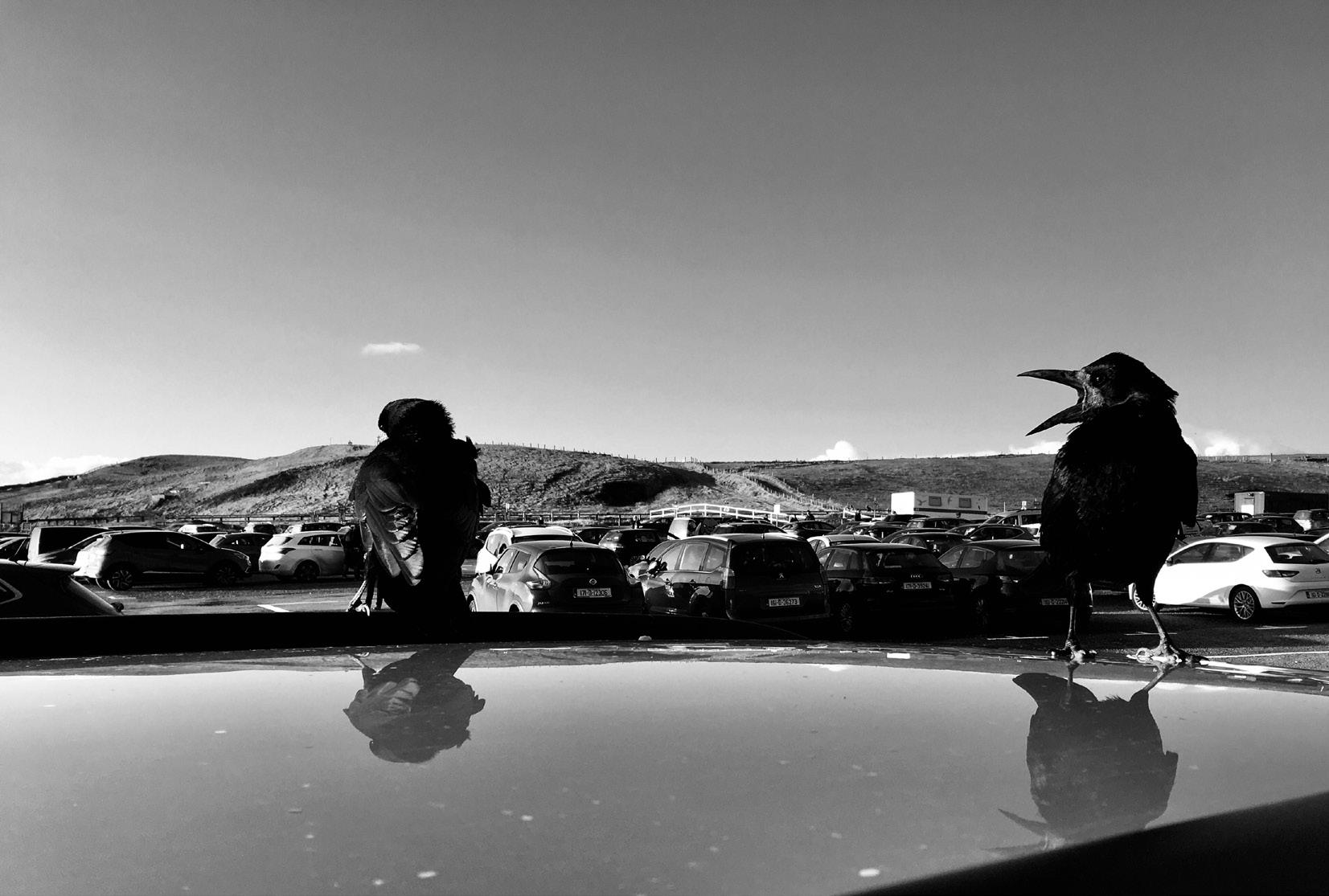
A conflict is more than what is contained in the pages of a book - it is complicated and difficult to recover from: healing takes time.
And all of this became clear to me after asking a simple question.
-Margaret McKean
Hungry Crows in Parking Lot, Ireland [Margaret McKean]
Bergen-Belsen Camp Reflection
It was a cold, snowy day in late January when a few friends and I decided to travel to Bergen-Belsen for the day. Although I had heard about the camp in classes before, I had a personal connection to it after “The March: Bearing Witness to Hope” trip in 2016. Sally Wasserman, a Holocaust survivor who traveled with us, had been a refugee in the Displaced Persons camp there after the war. Although this is about the third or fourth Holocaust memorial I have seen during my time abroad, I thought it would be fascinating to go, especially after seeing the Anne Frank House over the holidays (Anne and her sister Margot were prisoners in the camp).
When we arrived, we walked through the museum filled with the entire timeline of the camp. What I had not realized was that it was used as a Soviet Prisoner of War camp before the Nazis turned part of it into a concentration camp. The museum included hundreds of testimonies from survivors and former POWs, including footage of stories being told, along with artifacts ranging from gas cans to glasses to prisoner uniforms. The museum was set up very well, and even in a rush to get through, it still took us almost 2 ½ hours to get through it.
We then went outside into the snow to walk around the grounds of the camp. Unfortunately, there are no remains of the camp, as it was destroyed soon after it was liberated in an attempt to prevent the spread of typhus and other diseases. The only original landscapes left from the camp are the mass graves scattered across the property. The perimeter of each grave was marked with a stone wall and an engravement reading “Here rests XXX people”, with a date and year. Although there were many small ones, the large ones with 1,000+ people buried in them were the ones that
46 The Aleph Moments III
Memorial to the Murdered Jews of Europe, Berlin, Germany [Jordan Raivel]
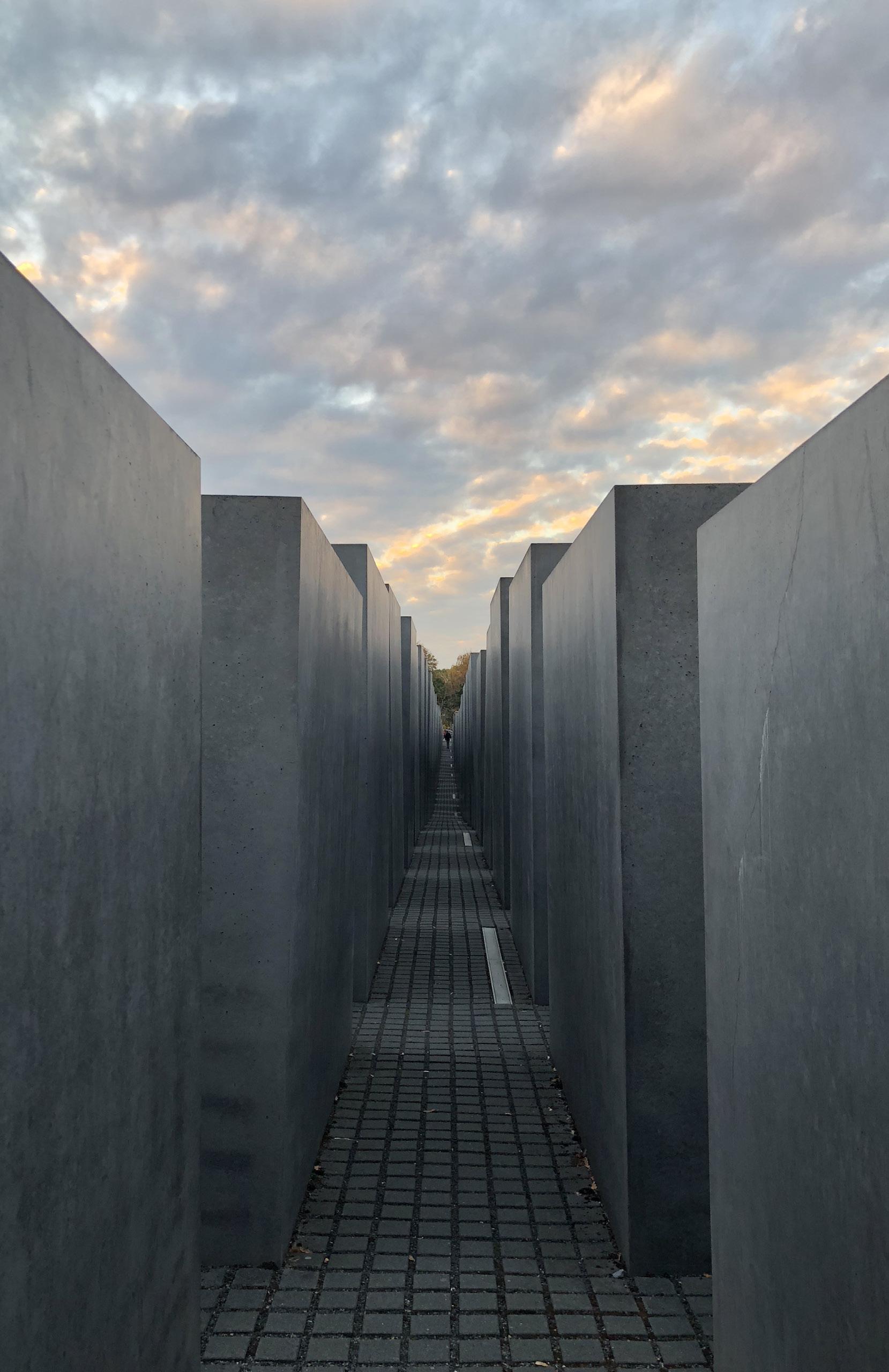
really got to me. As we tried to move on, we came across a few memorials towards the end of the camp, including the Jewish Memorial and the Margot and Anne Frank grave. After spending about 4 hours at the camp, it was time to head back to Bremen and reflect on what we had seen.
Although Bergen-Belsen was different than most of the camps I had seen on my trip in 2016, it was similar to Treblinka in that there was nothing left to see other than the mass graves and memorials that were put up years after the camp was liberated. What I appreciated the most about the visit, though, was the museum and the fact that you had to imagine a lot about what the site was like. The museum did an amazing job of detailing the entire history of the camp, from its days as a Soviet POW camp to an extermination camp to a Displaced Persons camp. After reading about this history and seeing the artifacts from the camp, I was able to picture a lot of what the site looked like before, during, and after WWII. I could see where all of the major buildings stood along with where people lived and worked. The fact that you had to imagine what was there made the impact that much greater, as you’re taking information and processing it differently than you would by seeing it all directly in front of you.
When you have to picture everything on your own you are forced to think about the vile conditions and gross mistreatment the prisoners face rather than hearing about it on a tour through a preserved camp. That is the most significant impact of Bergen-Belsen and I hope to get back there again to spend more time on the grounds of the former camp.
-Cynthia Kellett
48 The Aleph
Ancestral Recall
I had finally found it. I found it tucked away along a side street, three blocks from the metro, up a narrow staircase, and down a short hallway. The adjacent buildings advertised karaoke bars and beauty salons, and countless restaurants filled with reveling office workers, celebrating the end of the week around tables of simmering barbecued meat and bottles of soju. The store I was looking for would not have been out of place in the United States, with shelves lined with board games sporting colorful cardboard cases, and glass display cabinets densely lined with collectible cards. Were I in the US, such a setting might be incredibly familiar to me. Even as it were, in South Korea the environment felt remarkably similar. As I was admiring the cards in their protective display, I heard the attendant at the counter behind me call me over in heavily accented English, “Hey, can I help you?”
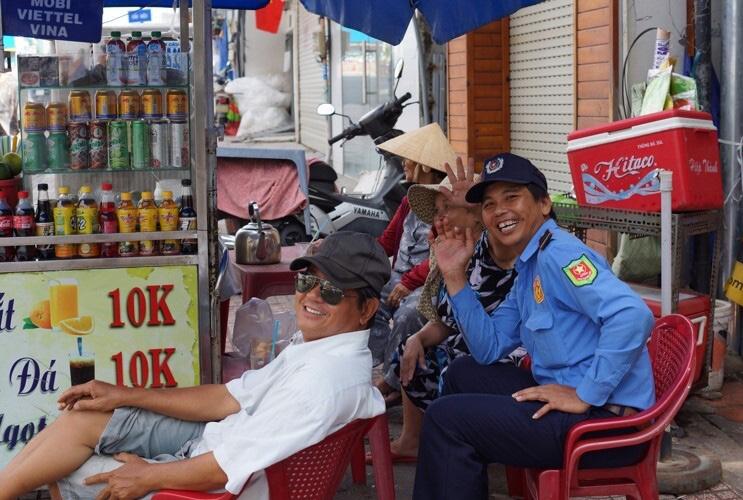
Moments IV
Sidewalk Gathering, Vietnam [Tolulope Arasanyn]
The Eye of Providence, Vietnam [Kristina Worts]

Less than a month prior, I was packing my bags in my parents’ apartment in New York City. Apart from the usual accoutrements of clothes, gifts for the people I would meet during my time abroad, and supplies for the coming semester, a few items in particular would serve as my gateway into a side of Korean culture that many might not be familiar with. In the US, millions of players gather together in game stores and around kitchen tables to play the card game Magic: The Gathering.
First released in 1993 and inspired by the fantasy tropes of Tolkien and C.S. Lewis, players assume the role of powerful wizards known as “Planeswalkers.” Players express their wizardly abilities through cards that allow them to summon fearsome beasts and call upon the power of lightning and fire, all of which is depicted on the cards themselves with detailed artwork. For many, myself included, Magic is more than a simple hobby; it is an outlet for people who might consider themselves to be introverted, as the game’s unique social aspects allow people to connect and push their social boundaries. For others, Magic serves as an outlet for competition for people who do not enjoy traditional sports. My point here is that Magic is an important part of many people’s lives, and as the game spread outside of the US, it brought those same things to people across the world. As I sat in my parents’ apartment, packing my bags in preparation for my semester abroad in Seoul, South Korea, I made sure to leave space for my own Magic deck.
Fast forward to September, back at the game store in Seoul that I had just walked into, and I couldn’t help but feel an intense sense of trepidation. Despite my Korean heritage, I had never learned a single word of Korean before coming to this country, and I was one of only a few people in my immediate family to have gone to Asia at all. Though I found Seoul to be an incredibly accommodating city for speakers of English, I was daunted by the prospect of trying to play a game using game pieces that were written in a language
a journal of global perspectives 51
I could barely comprehend. I was afraid that I would screw up, that I could be accused of cheating, even if by mistake. I didn’t know how people would react to having an Englishspeaking American sitting across the table, an outsider wholly unfamiliar with their language and customs.
All these thoughts and more rushed through my head as I handed over my entrance fee to the store clerk who had waved me over. As I had a few minutes to wait before the evening’s event started, I wandered over to the game tables and watched a group of four Korean players engaged in what seemed to be a rather intense game of 4-way Magic. From their expressions, and the rounds of raucous laughter that would periodically erupt, it was not hard see that these players were engaging in some friendly banter. Although I could not understand their words, as I looked over the game board I could read the story of the game through the cards. Many of the cards were written in Korean, but I recognized the distinctive artwork of the cards and I found that I could easily follow the action. I was snapped out of my reverie by the store attendant calling me and a group of 7 other players to one of the large tables.
Magic has evolved in many ways over the years and the way one group of friends plays the game can be radically different from the way a different group plays. Such differences are often known as “formats,” which are rulesets that determine what cards can be played and how a deck is constructed. What I had signed up for was Draft, a format where players construct their deck of 40 cards in a somewhat random fashion. Groups of cards are passed from player to player, and one must try to select the best cards to add to their deck. I had known going into the draft that the cards were in Korean, but I had my trusty smartphone handy to help me keep the names of cards straight. As the draft concluded, and I was given an opponent selected at random to play against. I would be lying if I didn’t say I was greatly relieved when he said hello to me in English. Despite his struggles to
52 The Aleph
communicate in English, and my total lack of understanding of Korean, I quickly found that we had another medium by which to talk: the language of Magic. Magic players have come up with an expansive codex of jargon and shorthand phrases - many of which, I was pleasantly surprised to find
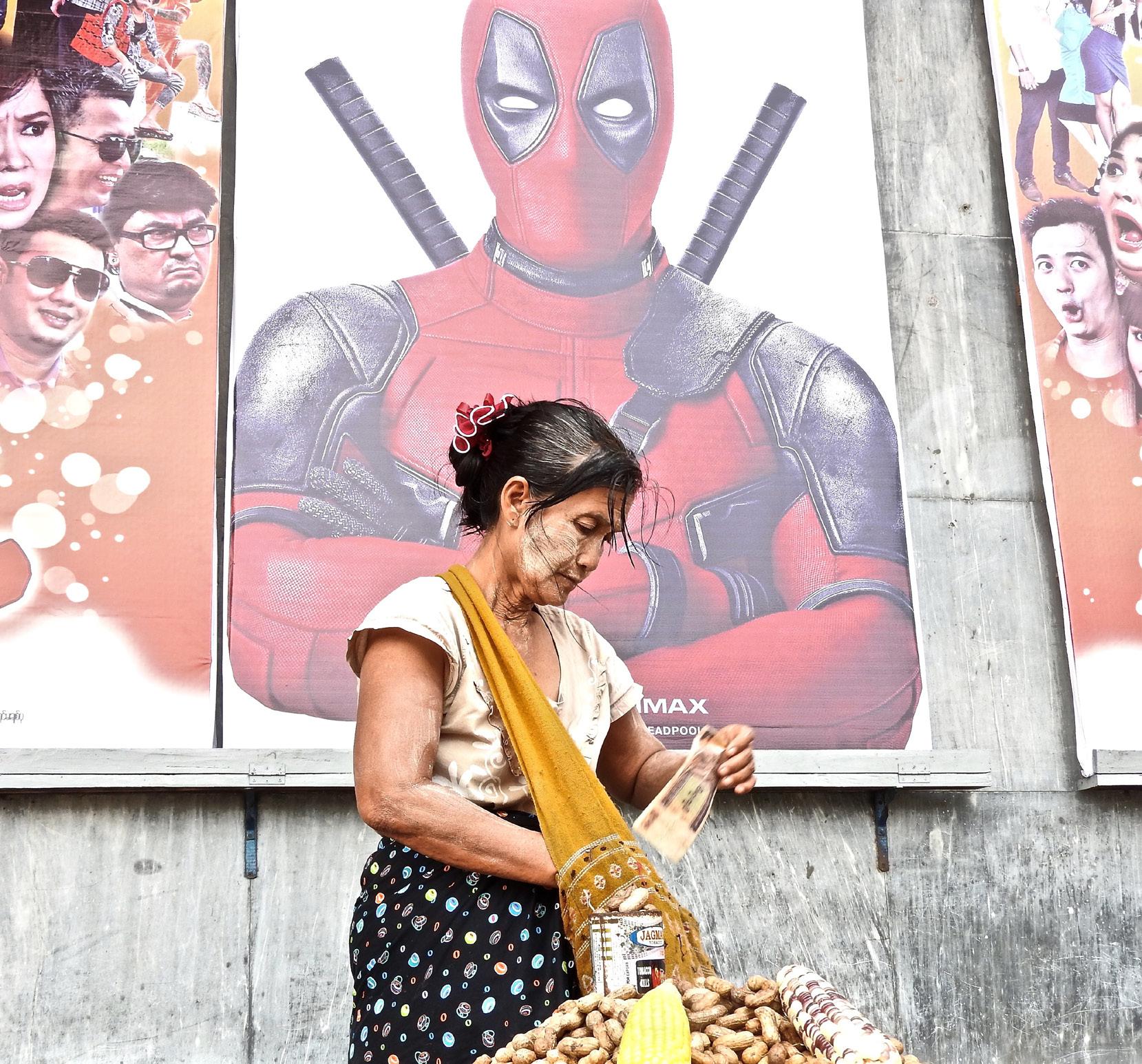
a journal of global perspectives 53
When Two Worlds Collide, Yangon, Myanmar [Patrick Tavares Ruivo Muscari]
out, were also known by my Korean-speaking opponents. Because of this, our game was able to run smoothly, and by the end of game three of our best-of-three series, a small crowd of other players had gathered around to watch us duke it out. And an exciting game it was, with both of us constantly exchanging blows, unable to find any edge. Finally, it came down to the wire: I had exactly one card in my deck that could pull out the win for me, and my opponent was guaranteed to win the very next turn. I went to draw my card…and it was not the one I needed. Releasing a breath held through sheer tension, I offered my opponent the conciliatory handshake, as the spectators around us let out a collective gasp of excitement.
Ultimately, as I look back on this experience, and on my experience in South Korea, I feel like I learned something very important about language. Languages like English and Korean are all well and good, but some ideas, like the rules and intricacies of games, enable whole new methods of communication on their own. Brazilians can travel to Germany and end up playing the exact same version of soccer, despite sharing no common language. Someone like me can travel to the heart of South Korea, connect and build relationships with people through a shared passion, using the medium of a children’s card game. As I look back on my time abroad, I can’t help but feel grateful to the game of Magic, silly as it may be. Without it, I doubt I would have been able to leave my social comfort zone and get myself to interact with native Koreans. Having that shared commonality, across thousands of miles of ocean, provided endless possibilities and the chance to have profound and meaningful experiences that I can take with me wherever I end up in the future.
-Adrian Shin
54 The Aleph
Gunung

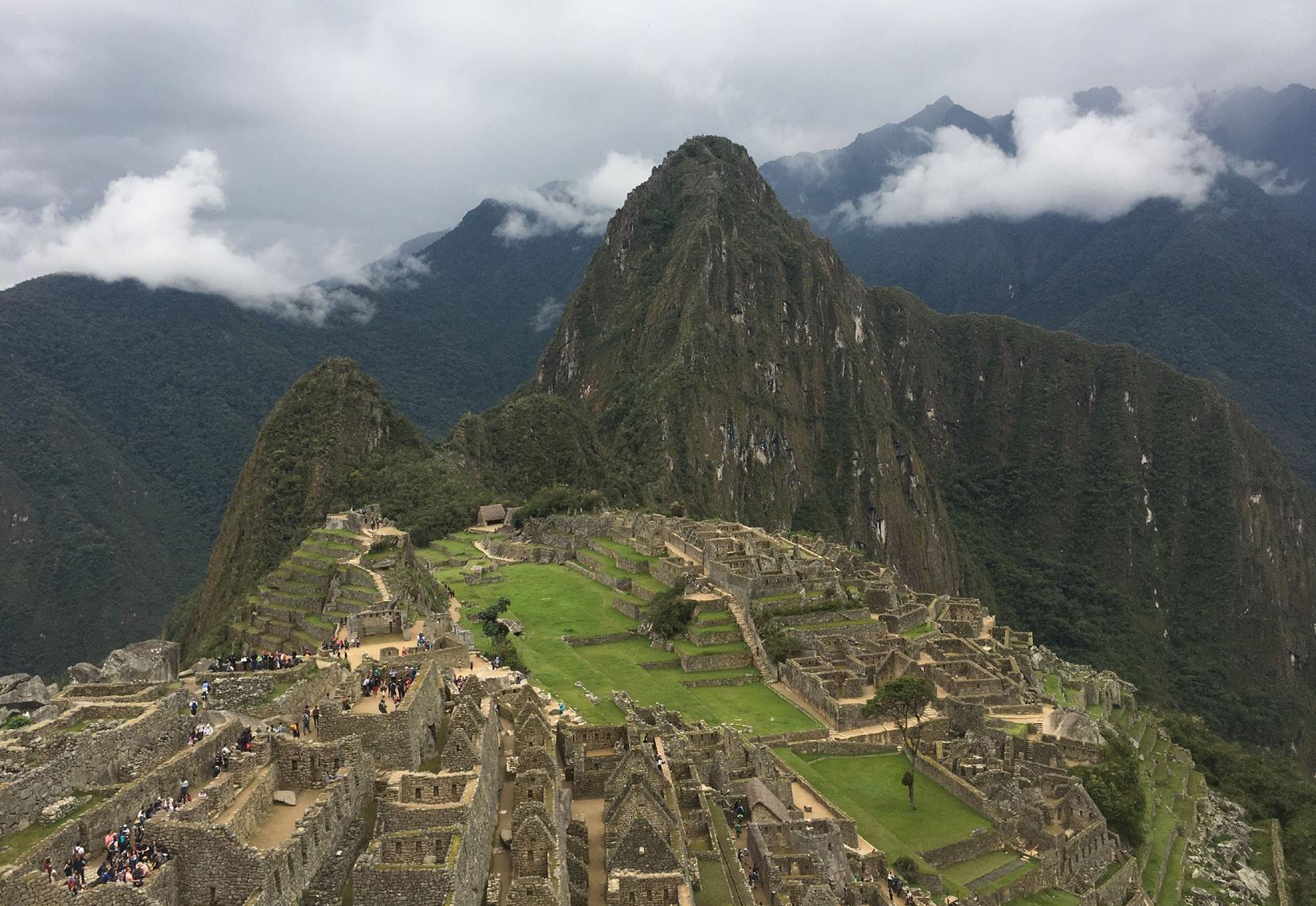 Machu Picchu and Huayna Picchu Mountain, Peru [Alexandra Bilodeau]
Kawi Sebatu Temple, Bali, Indonesia [Mekayla Montgomery]
Machu Picchu and Huayna Picchu Mountain, Peru [Alexandra Bilodeau]
Kawi Sebatu Temple, Bali, Indonesia [Mekayla Montgomery]
Ode to the BVG
On the U-Bahn this morning, smooshed in a crowd of shifting commuters and getting my toes run over as a woman tried to make room for her baby carriage in the alreadypacked train car, I was suddenly overwhelmed by the feeling that the BVG really does love me.
The official slogan of the Berlin Verkehrsbetreib (BVG) is weil wir dich lieben, or “because we love you.” Their advertisements are 4-minute long music videos in which people use public transportation to escape ridiculously unfortunate situations. The ads are hilarious, but they also convey an important truth: in Berlin, public transportation is pervasive and accessible.
I remember on my first night out in Berlin, I turned off my phone and later found myself locked out by my new SIM card when I powered it back on, without the code needed to access cellular data. My heart skipped a beat as I realized that I was across the city from home and couldn’t remember how to get back.
But the BVG took care of me. In the bright station at Alexanderplatz, I connected my phone to the WIFI with which every single tram, U-Bahn, S-Bahn, and bus stop is equipped. A quick search on the BVG app and a few screenshots later, and I had all the information I needed to get home safely.
The BVG works. It is designed to get as many people where they want to go as safely and as expediently as possible, part of the marketing of the city that aims to make public transit attractive. The evidence that it succeeds? Everyone uses it. At 7am businesspeople on their way to work sit next to people who just left the club. A Berlin U-Bahn car is a microcosm of the vibrancy of the city’s people.
56 The Aleph
Moments V
My sketches (p. 59) illustrate the fact that the BVG vehicles are not just useful, they are iconic. The yellow paint makes them recognizable, which only contributes to how successfully they are marketed to Berliners and visitors.
In addition, using the BVG is intuitive; exit a train and cast your glance in a 180-degree arc around the platform. You will see a sign above the access point for every connection that is possible from where you stand: S-lines are green, U-lines are blue, the tram is red, the buses are purple. The symbolism is systematic, and you will be directed up staircases, around bends, over bridges, across roads, and along tunnels to your connection without having to think at all. Passengers are sorted into streams as easily as water is diverted into pipes. Since the first night when I was lost in Alexanderplatz, the system has grown intuitive to me and I can usually make my way anywhere in the city without even pulling out my phone.
 Sunset Over the Liberty Bridge, Budapest, Hungary [Katie Consoli]
Sunset Over the Liberty Bridge, Budapest, Hungary [Katie Consoli]
All these accessible and convenient features enable the BVG to limit sprawl (want to go for a hike? Take the S-Bahn towards Wannsee, and use the same ticket to get on a bus which will literally drive you into the woods with trails, fishing spots, and an island accessible by ferry inhabited by the descendants of Frederick William III’s peafowl). The city is more walkable, safer for pedestrians and bikers, less noisy, and less cluttered by automobiles, which in turn improves the embodied sustainability of a dense and less car-dependent city.
Meanwhile in suburbia, you have to sit for at least 15 minutes in your car by yourself in order to get anywhere. There is nothing that alienates you more from other members of humanity like sitting in traffic on the way to the dentist channel surfing the radio and glaring at the guy in front of you who’s texting when the light turns green.
By contrast, there is something tender about sitting among an ever-refreshing cohort of strangers wherever you go. Sometimes, a train car is bubbling with a blend of voices, and every once in a while, I’ll get on a crowded car that is totally, uncannily silent. Fifty strangers stand shoulder-toshoulder, shuffling, swaying; everyone is elsewhere.
To be one passenger on one of hundreds of trains in one of so many cities, crossing thousands of paths every moment, my own bustle tangling with the bustles of innumerable others - it makes me feel small in a wonderful way. I am one of many, connected to my fellow travelers no matter how drastically we may differ in minute and specific ways. We are equal, the way every bird in the flock rises from the field in a single dark mass, the flapping of so many wings sounding as one great rush. Therein lies the power of a good transit system.
-Abbey Frederick
58 The Aleph
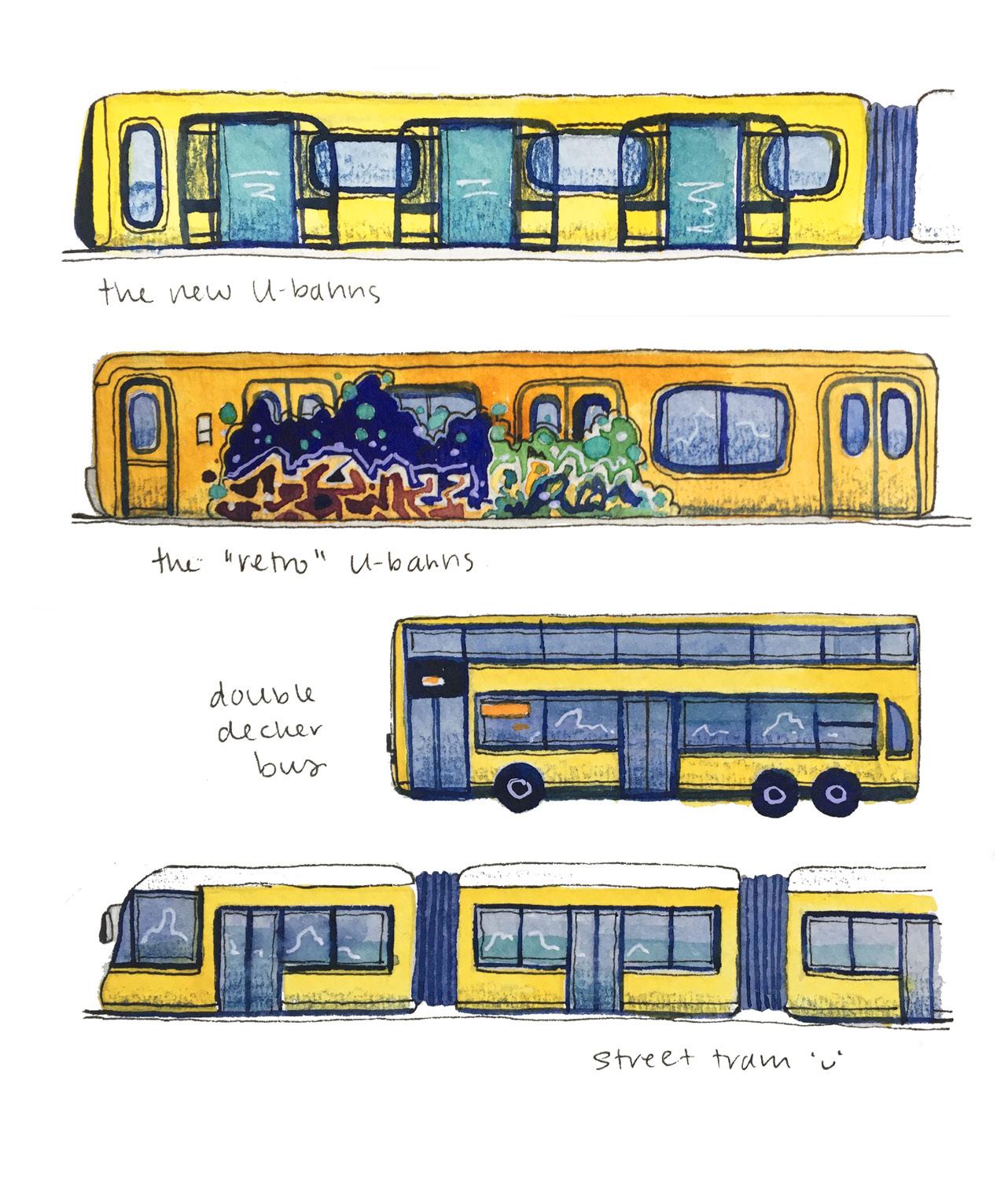
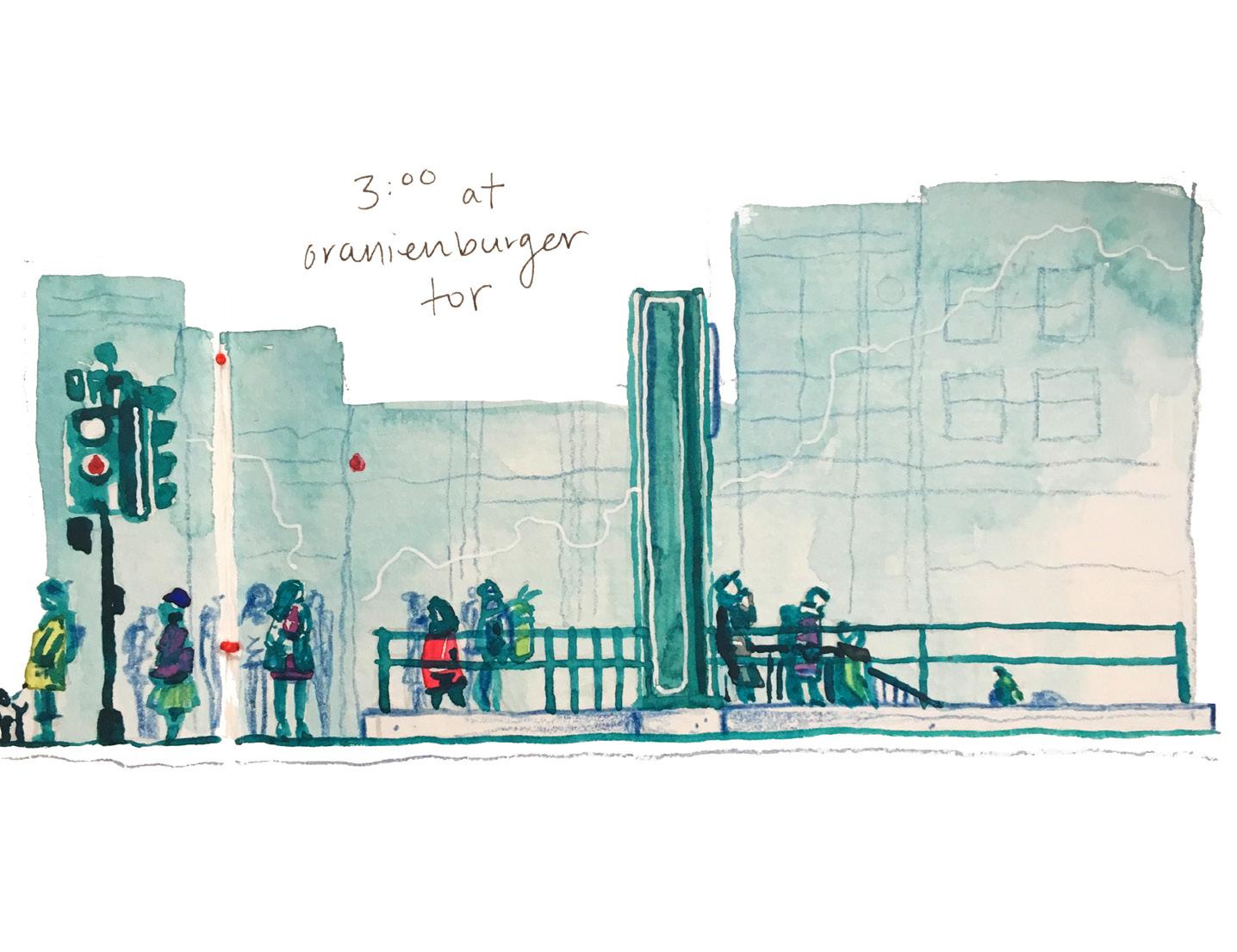
Ladies on Motorcycle, Vietnam [Tolulope Arasanyn]

Ban Gioc Falls, Vietnam [Amanda Breed]
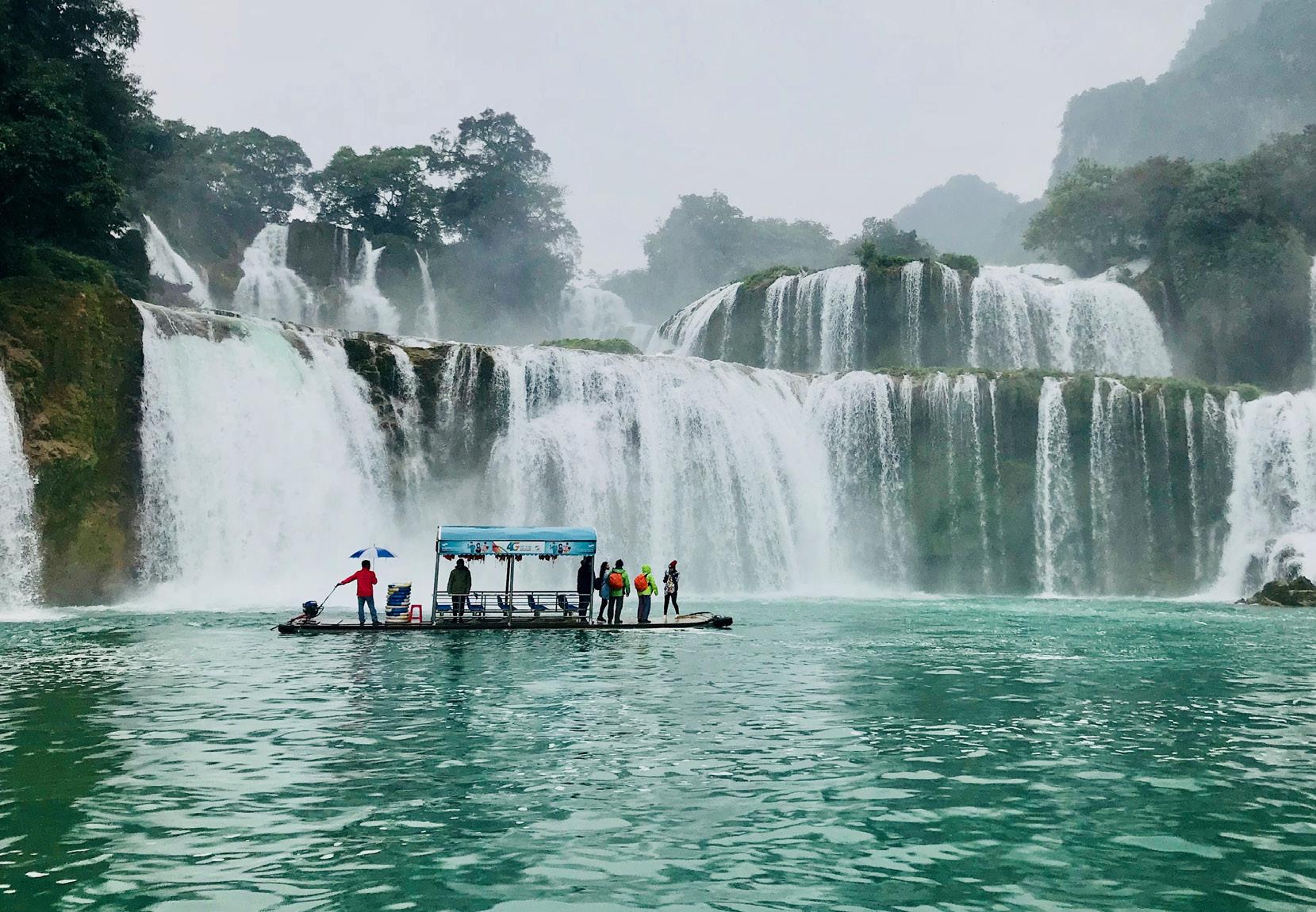
Women Sewing, Ho Chi Minh City, Vietnam [Alyssa Capuano] Babushka, Russia [Alexandra Curtis]

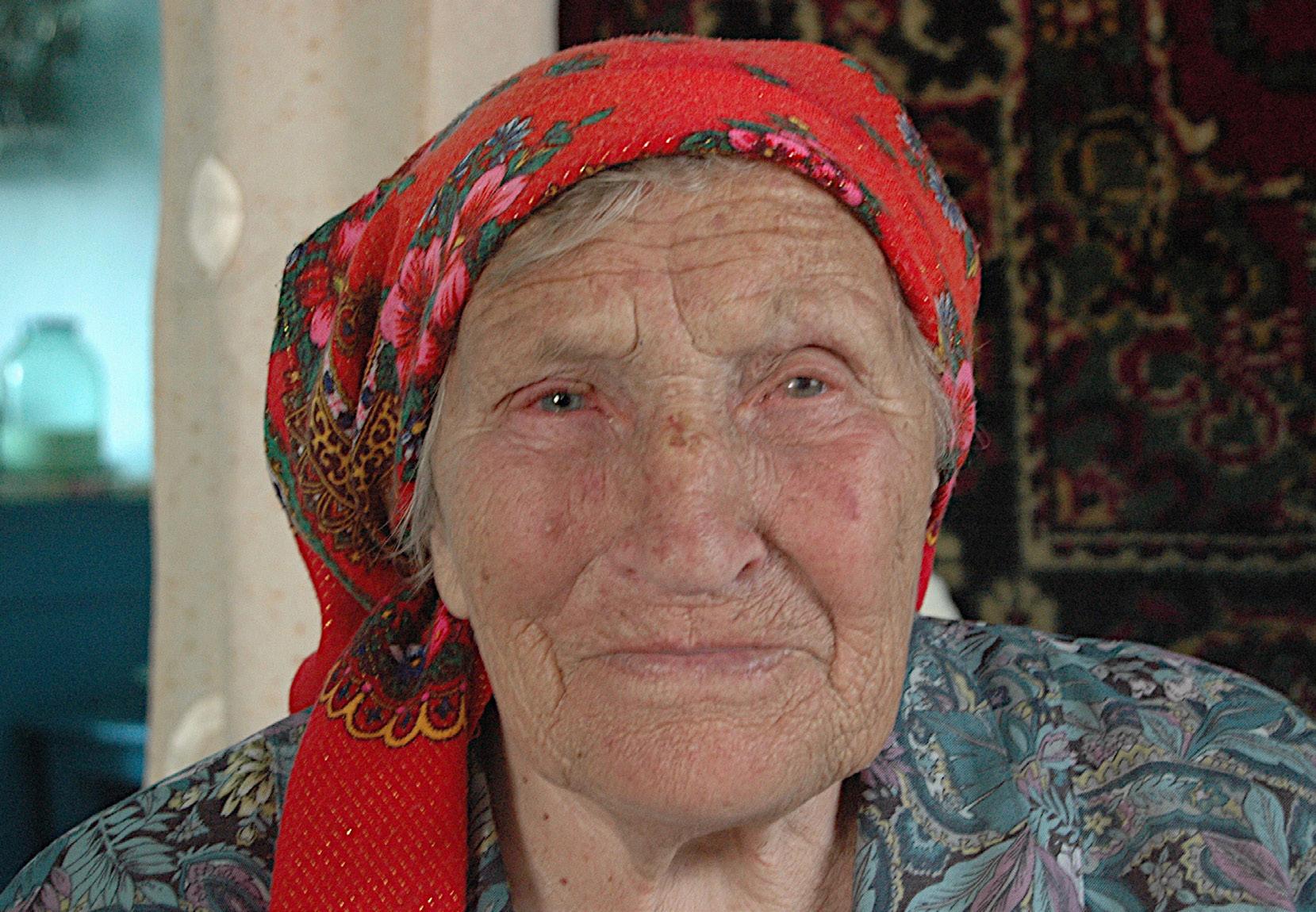
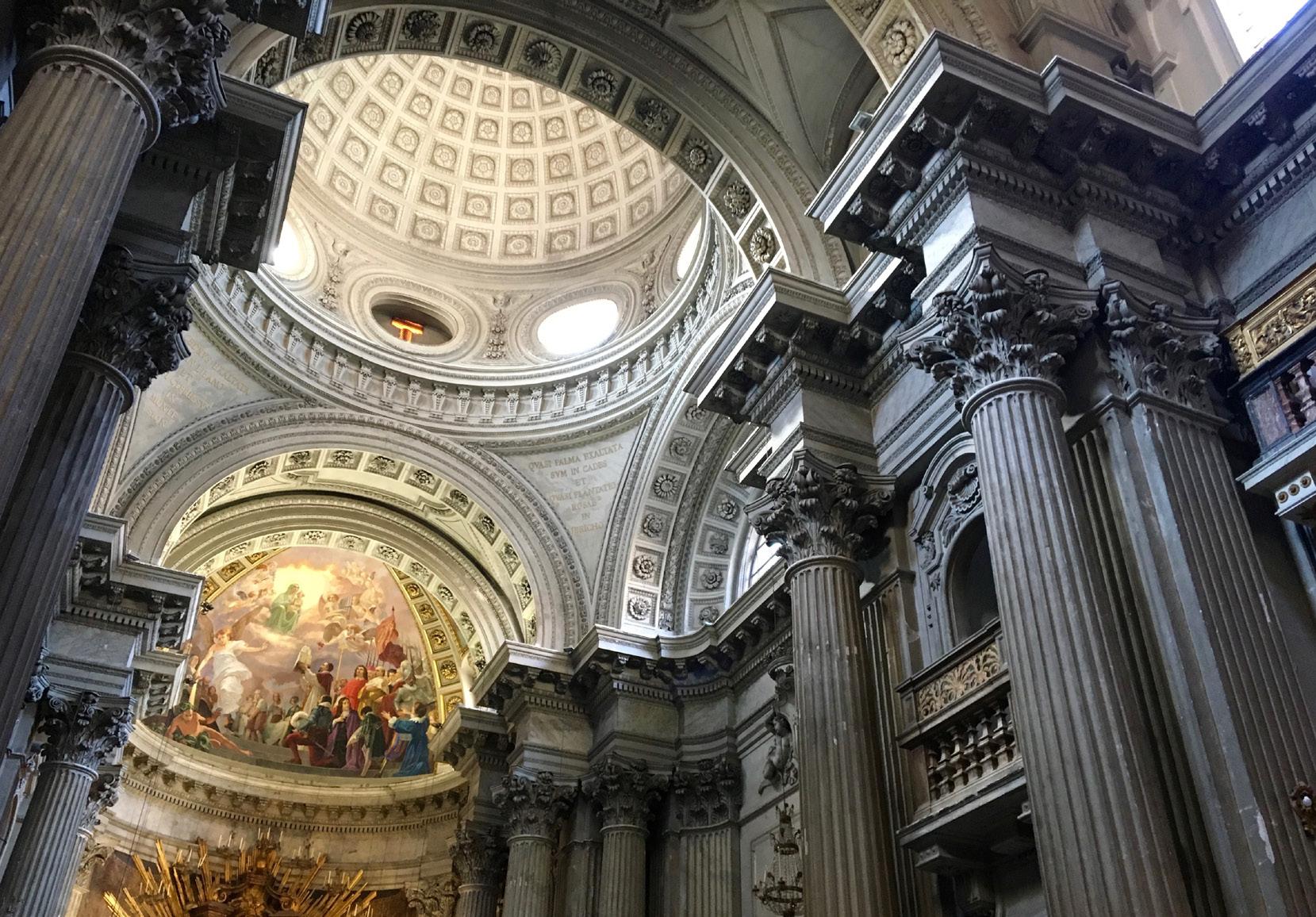
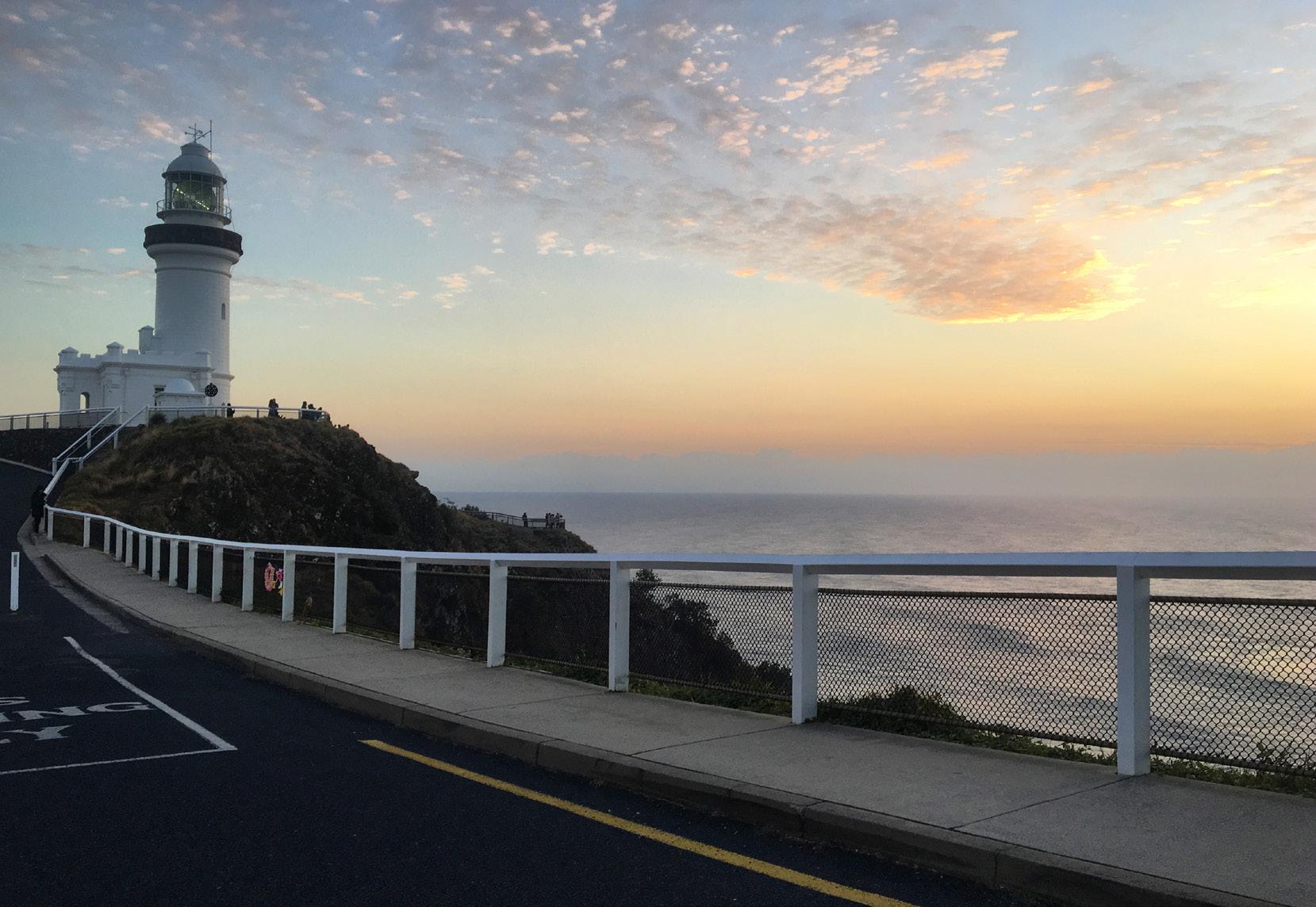 Lighthouse at the Easternmost Point in Mainland Australia [Morgan Ross] Santa Maria in Portico Church, Lazio, Italy [Shannon Smith]
Lighthouse at the Easternmost Point in Mainland Australia [Morgan Ross] Santa Maria in Portico Church, Lazio, Italy [Shannon Smith]
A Self-Made Entrepreneur, Sikkim, India [Elise Donovan] Street Artists, Rome, Italy [Eileen Lent]

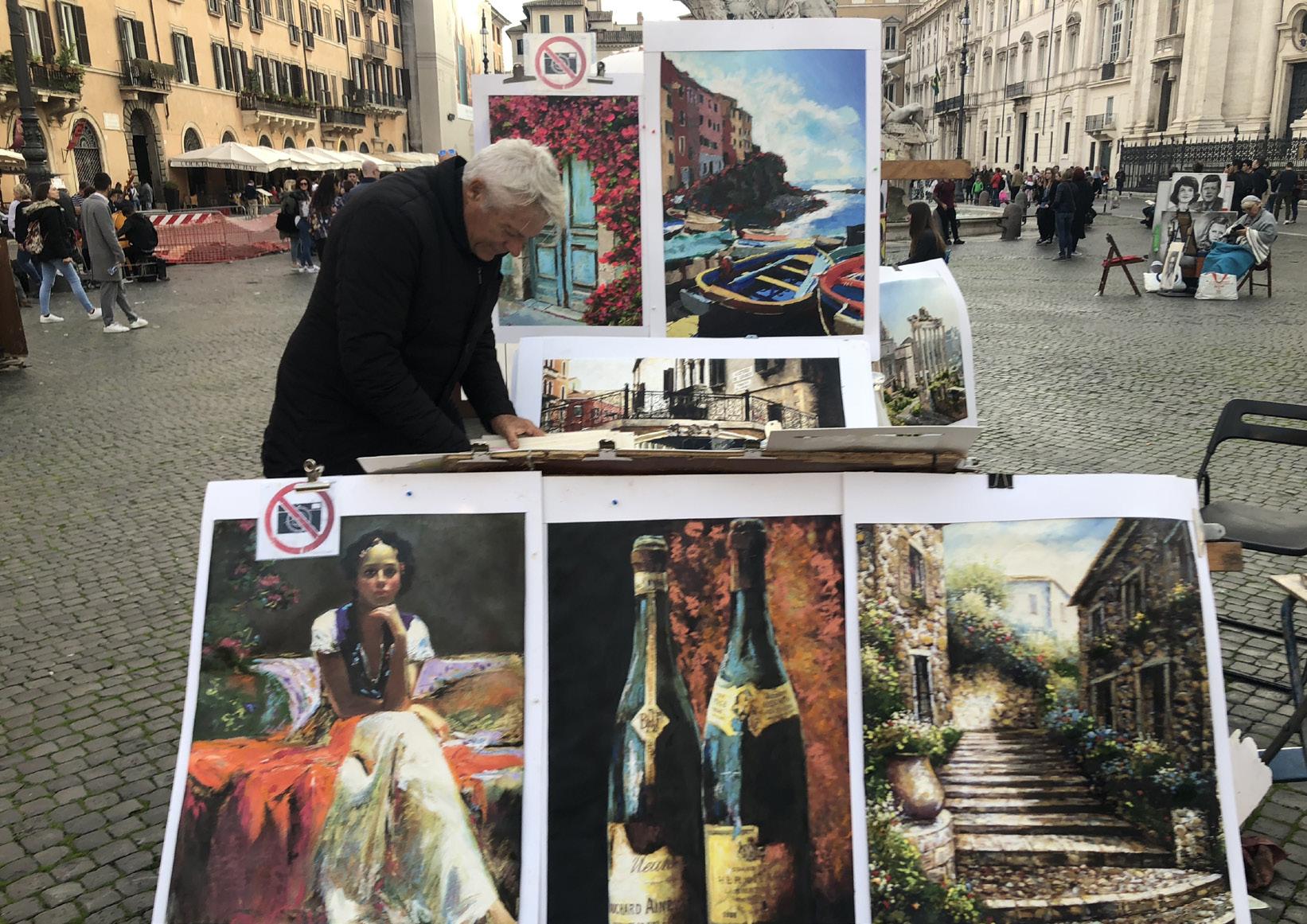
Proud Local in Cam Thanh Fishing Village, Vietnam [Ali Turner]
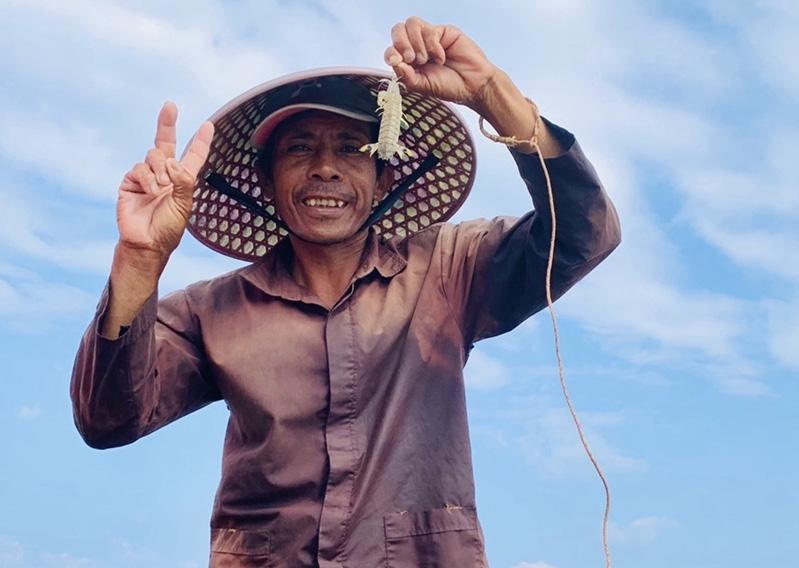
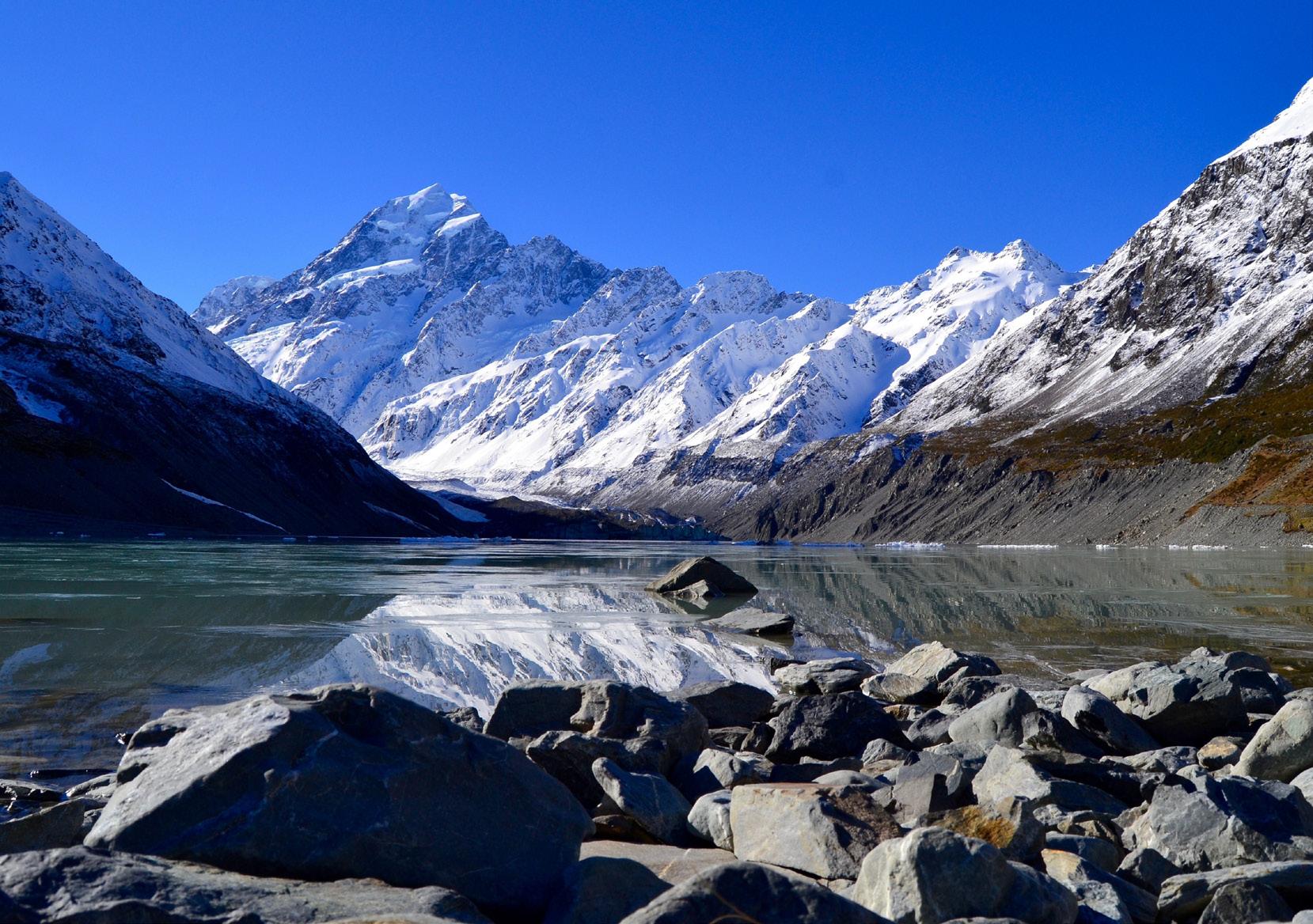 Mount Cook, New Zealand [Brooke Kelly]
Mount Cook, New Zealand [Brooke Kelly]
Woman with Water Buffalo, Vietnam [Olivia Bennett]
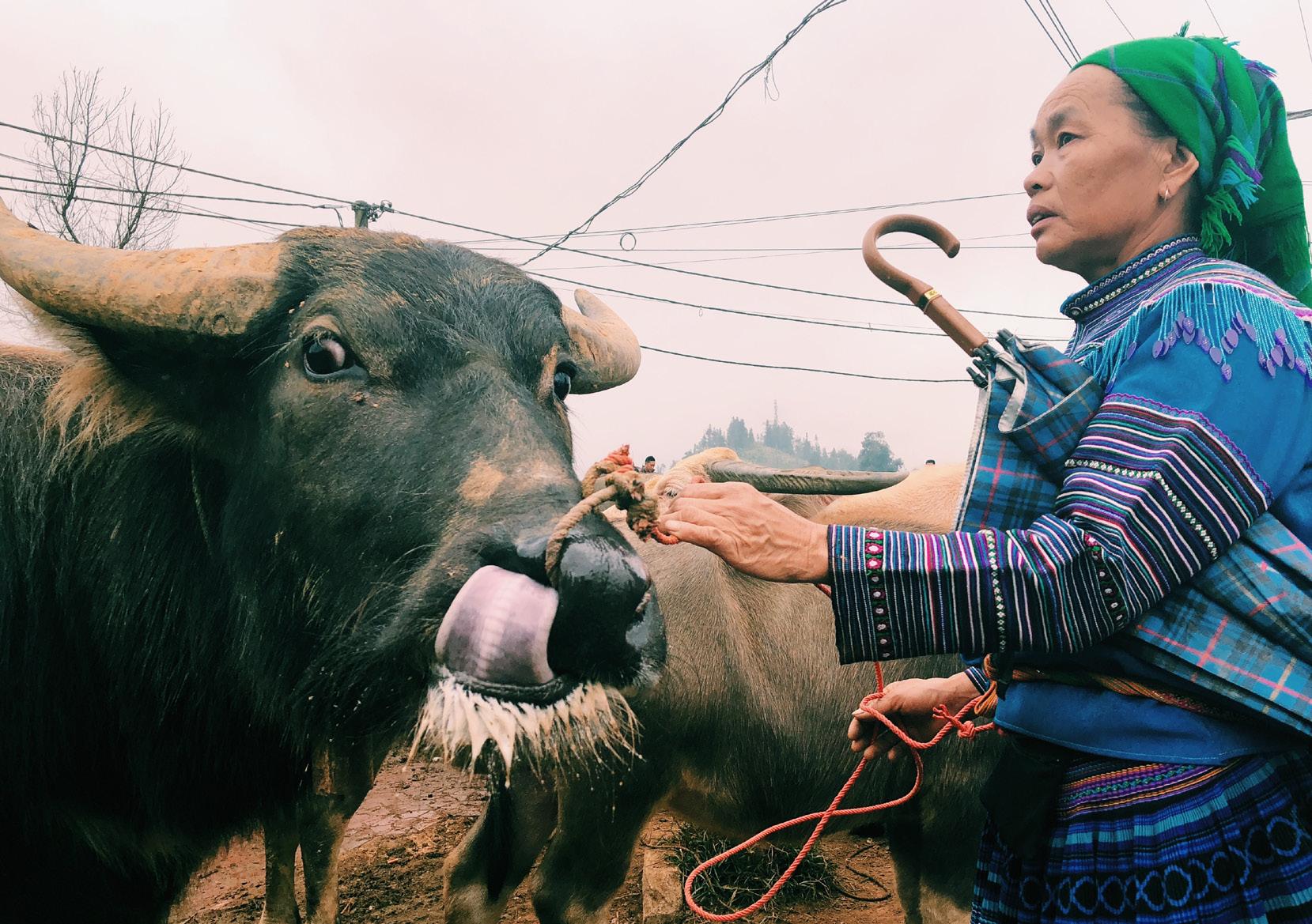
The Iconic Ace Cafe, London, England [John Schenk]
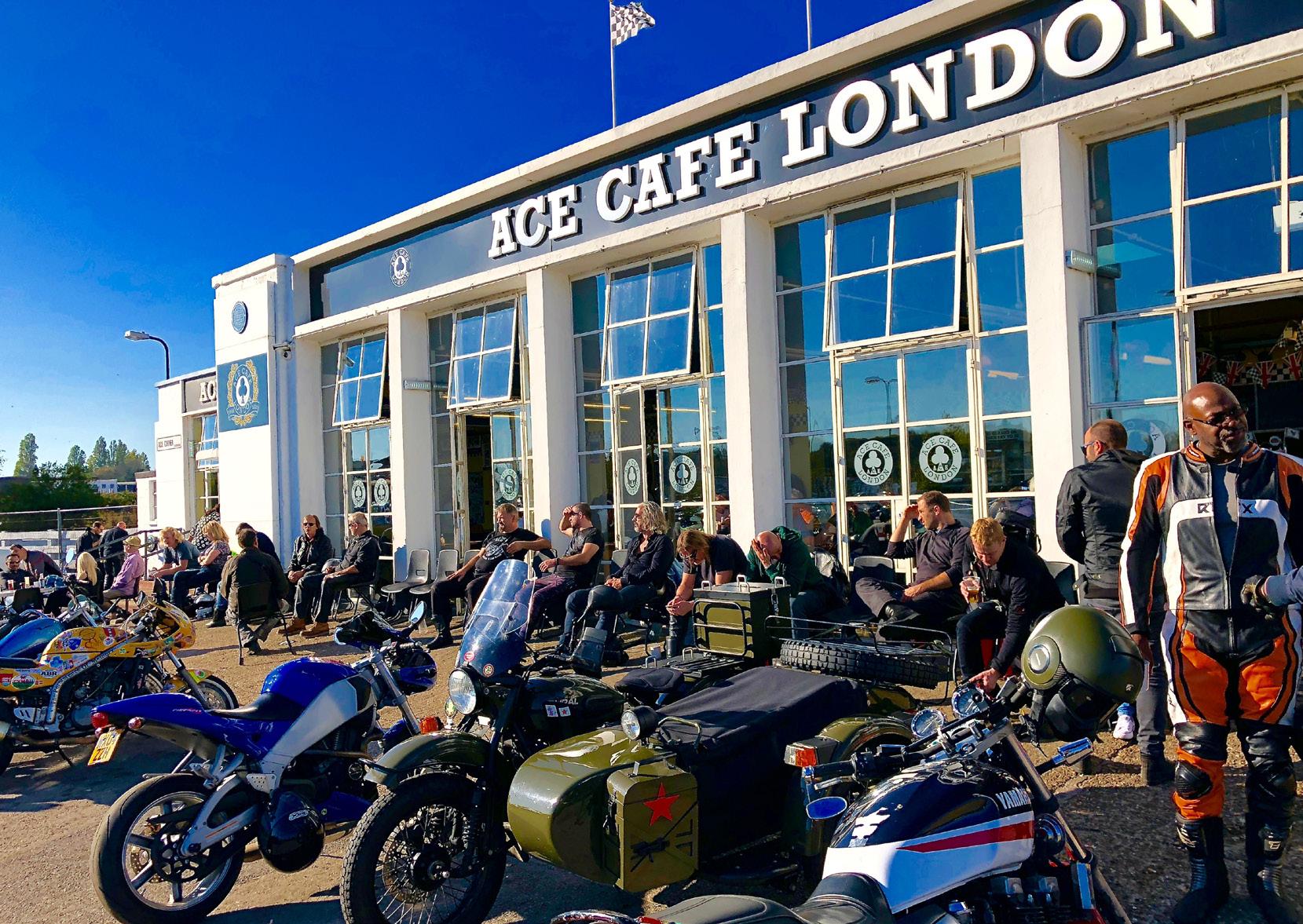
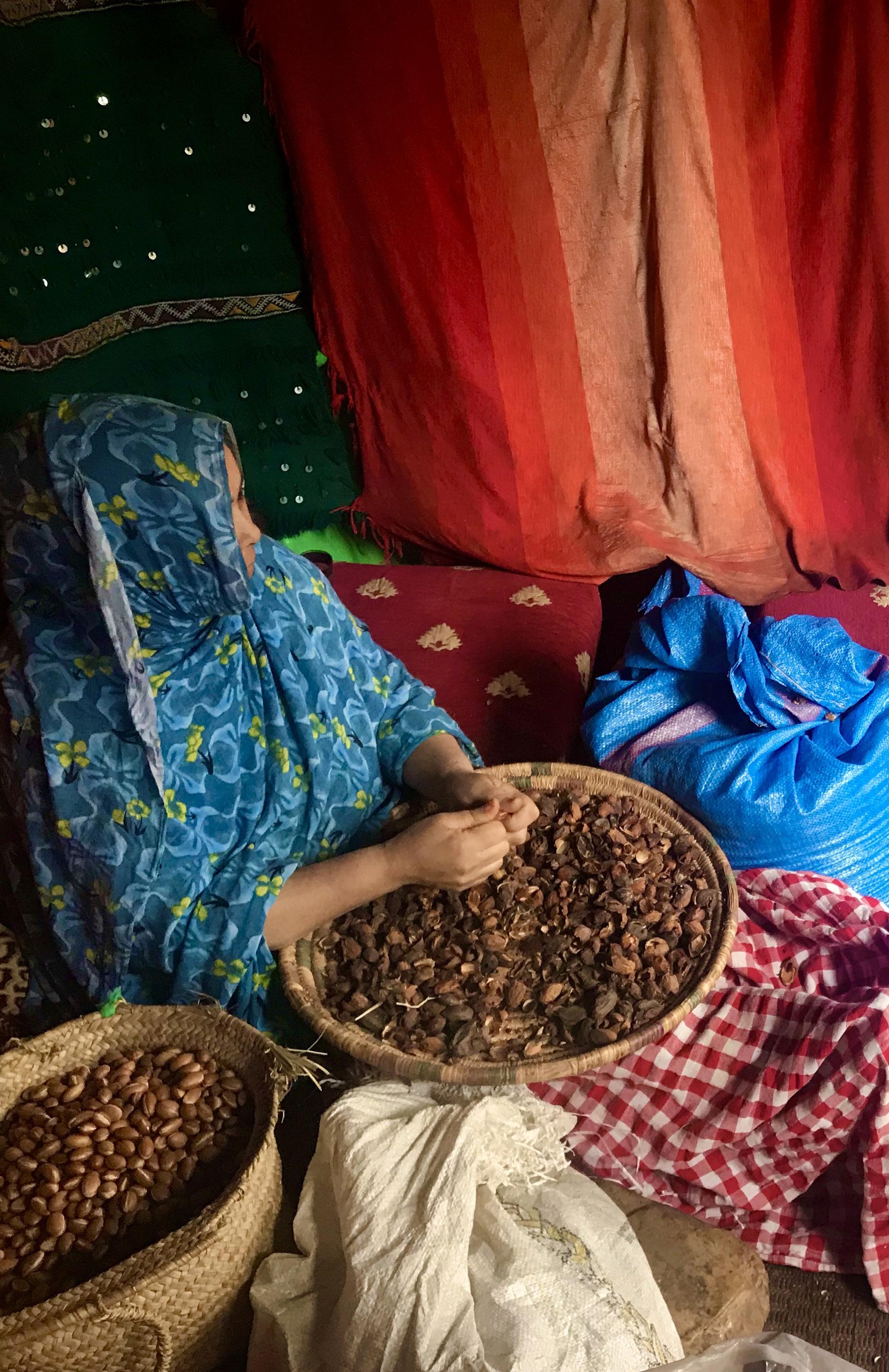
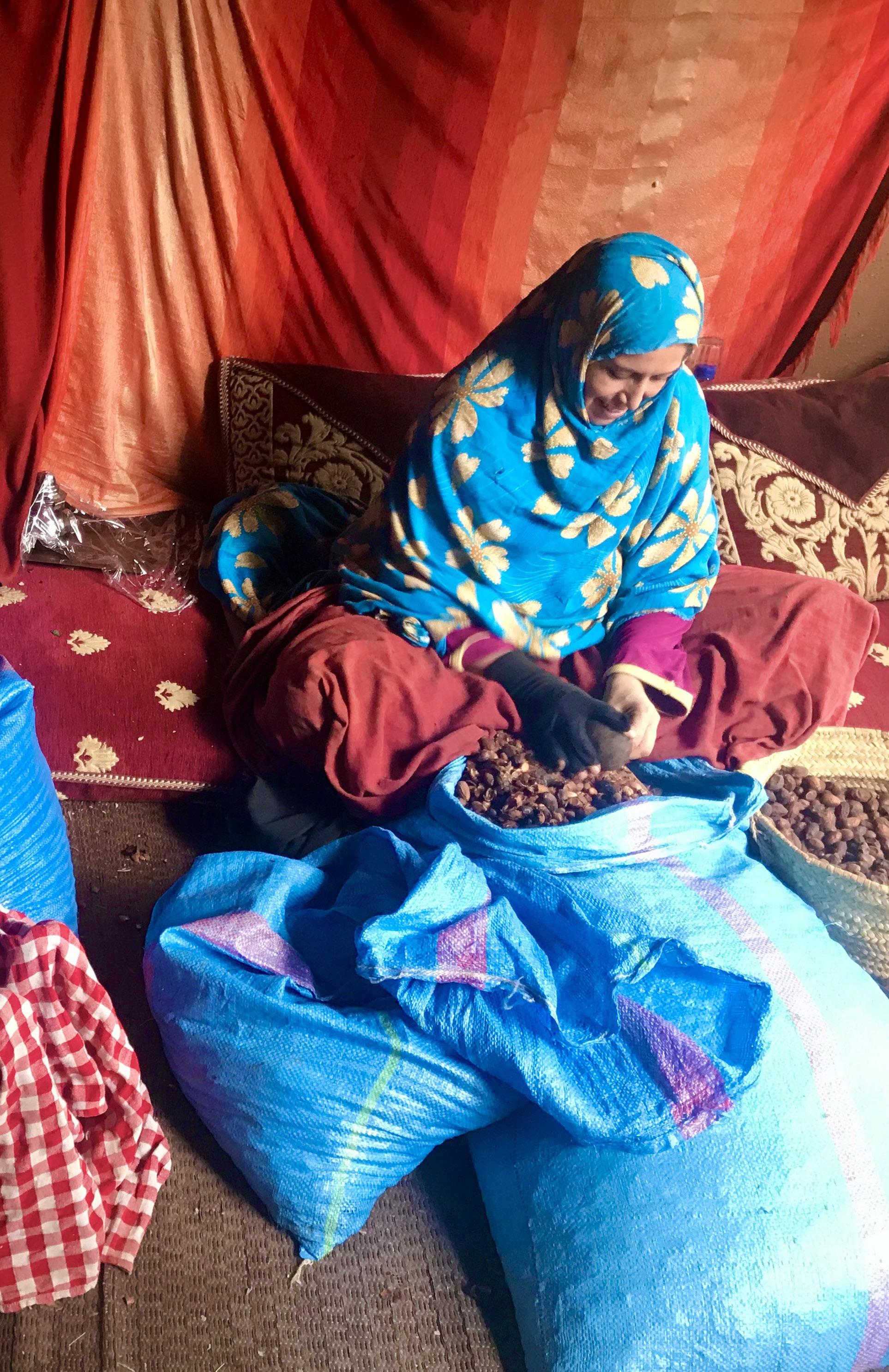 Women shelling argan tree shells, Morocco [Samantha Buckenmaier]
Women shelling argan tree shells, Morocco [Samantha Buckenmaier]
A Ceiling of Umbrellas, Irleand [Lindsay Lesniak]
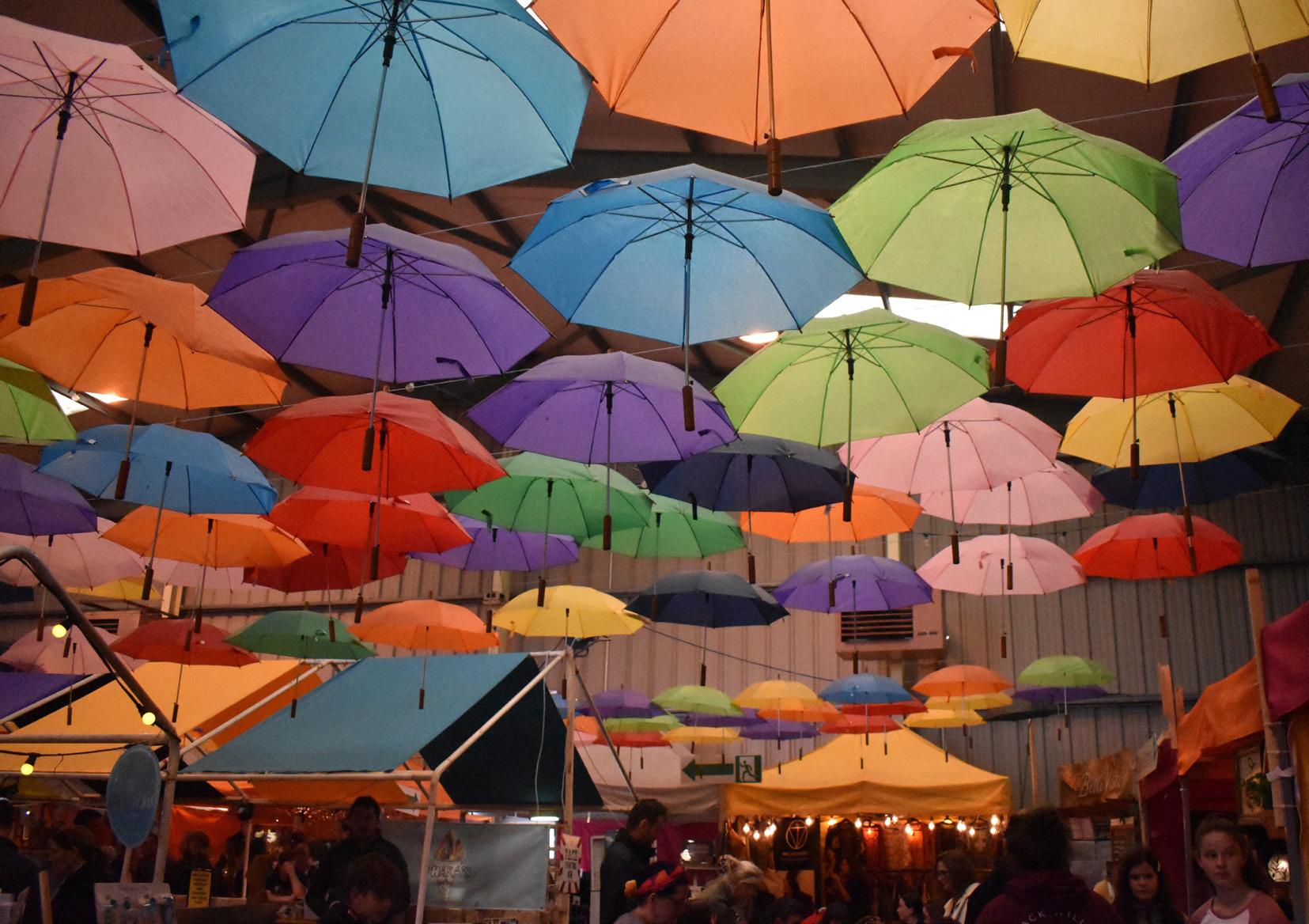
Gorée Island, Senegal [Djeneba Ballo]
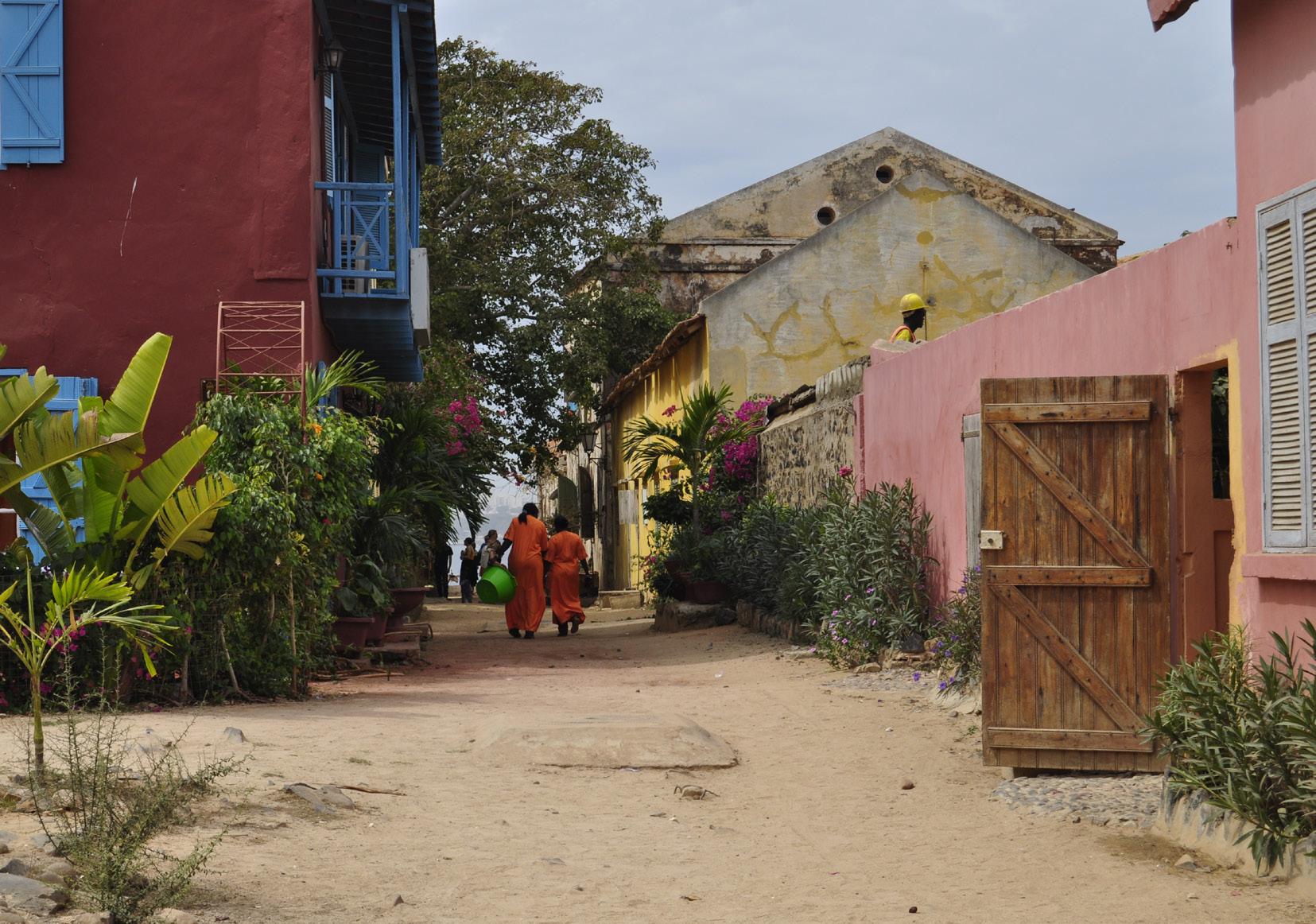
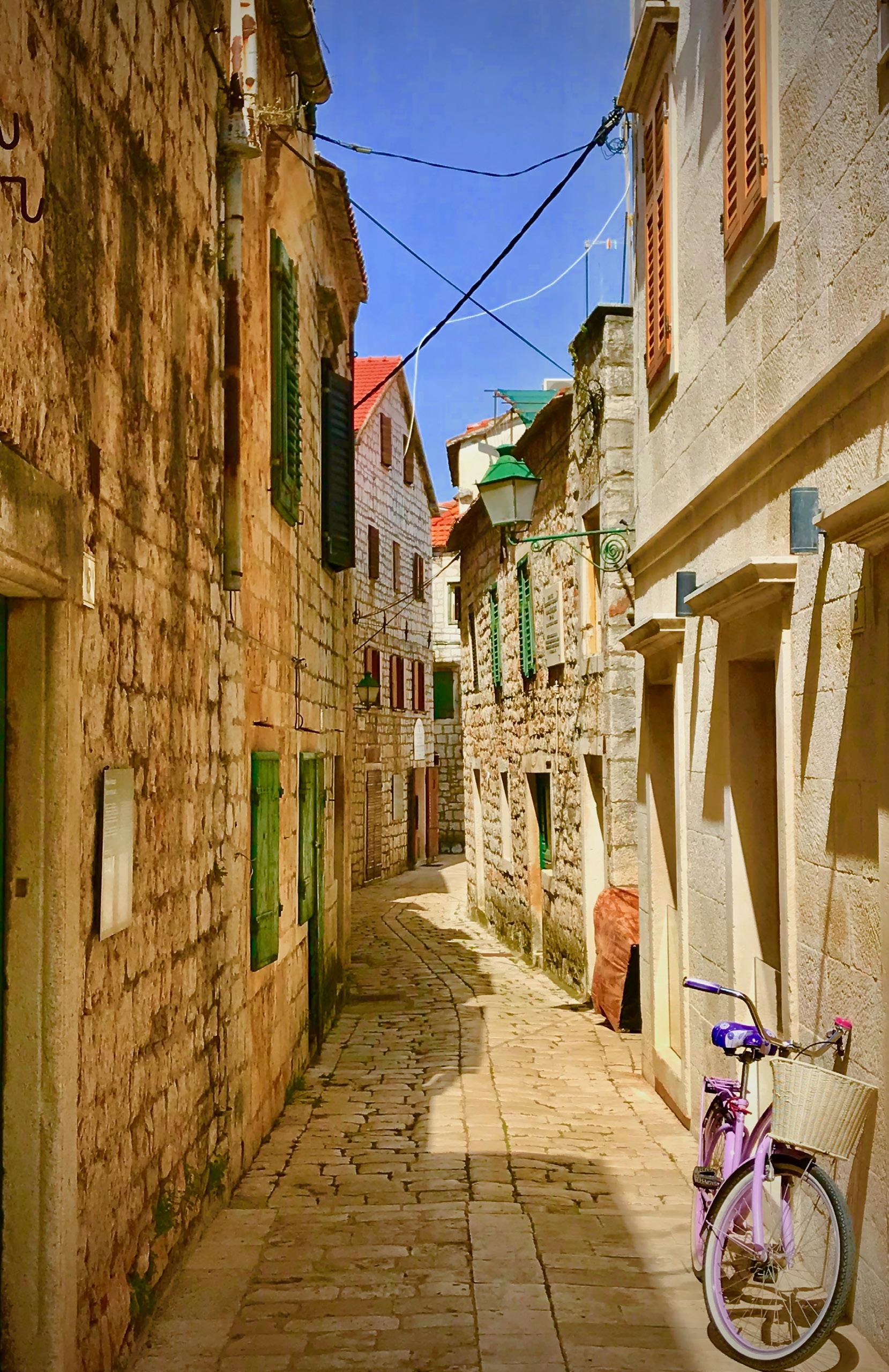 Alleyway in Stari Grad, Croatia [Chad Kilvert]
Alleyway in Stari Grad, Croatia [Chad Kilvert]
Rue Monsieur, Paris, France [Jenna Bredvik]
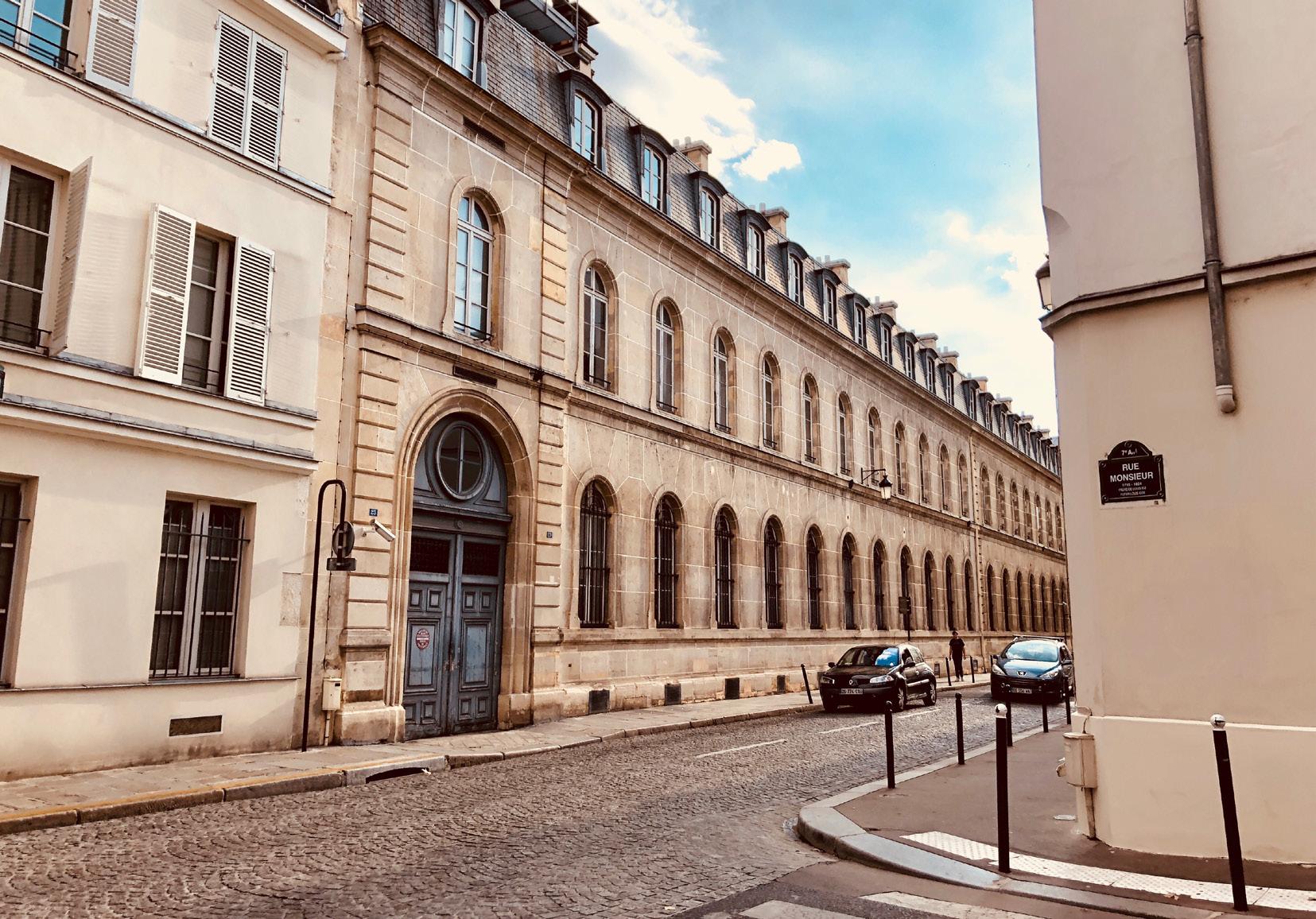
At Ease, Copenhagen, Denmark [Brian Helms]
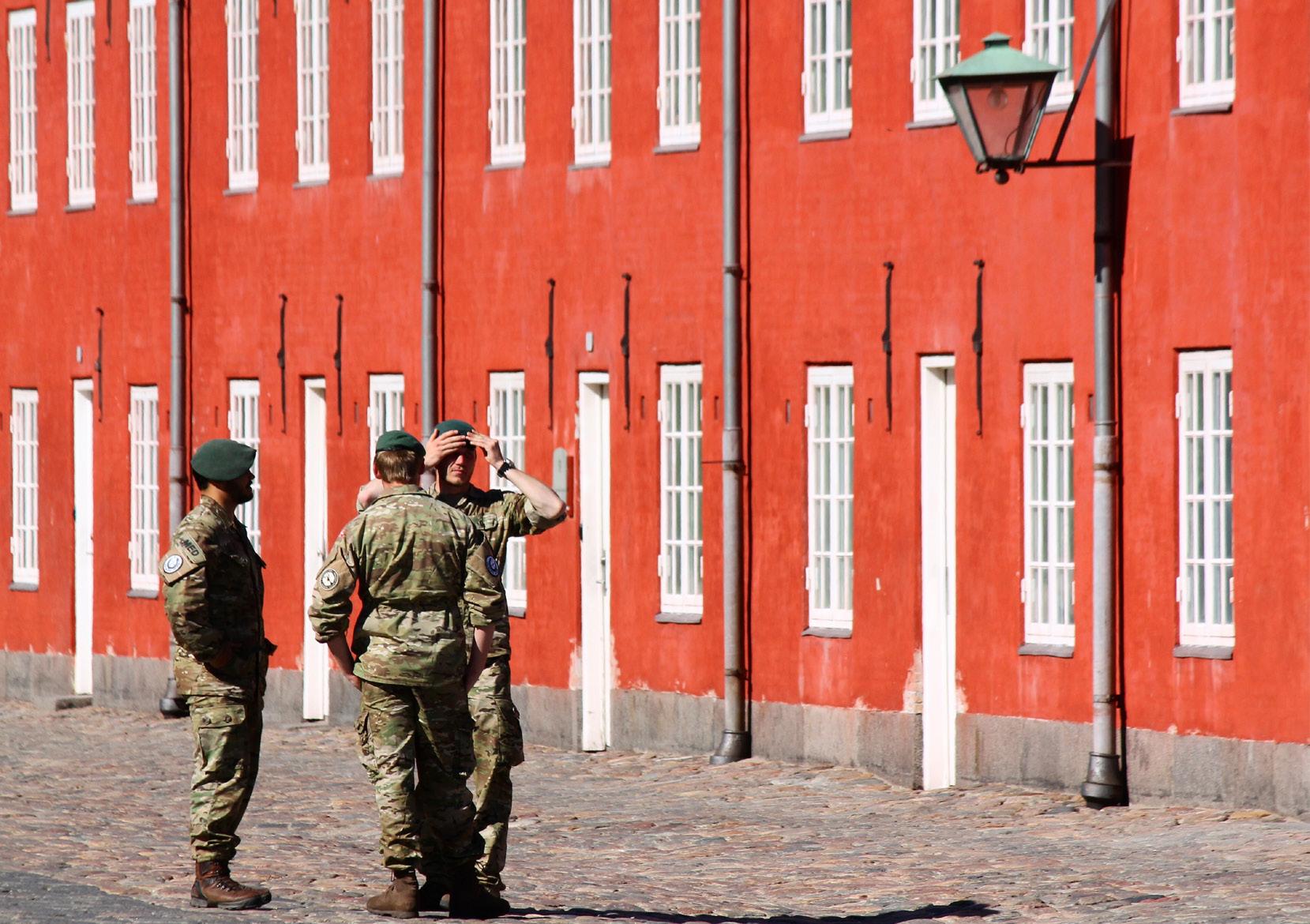
Prague Castle at Sunset, Czech Republic [Tanner Poisson] Farmer in Angkor Wat, Cambodia [Jonah Salita]
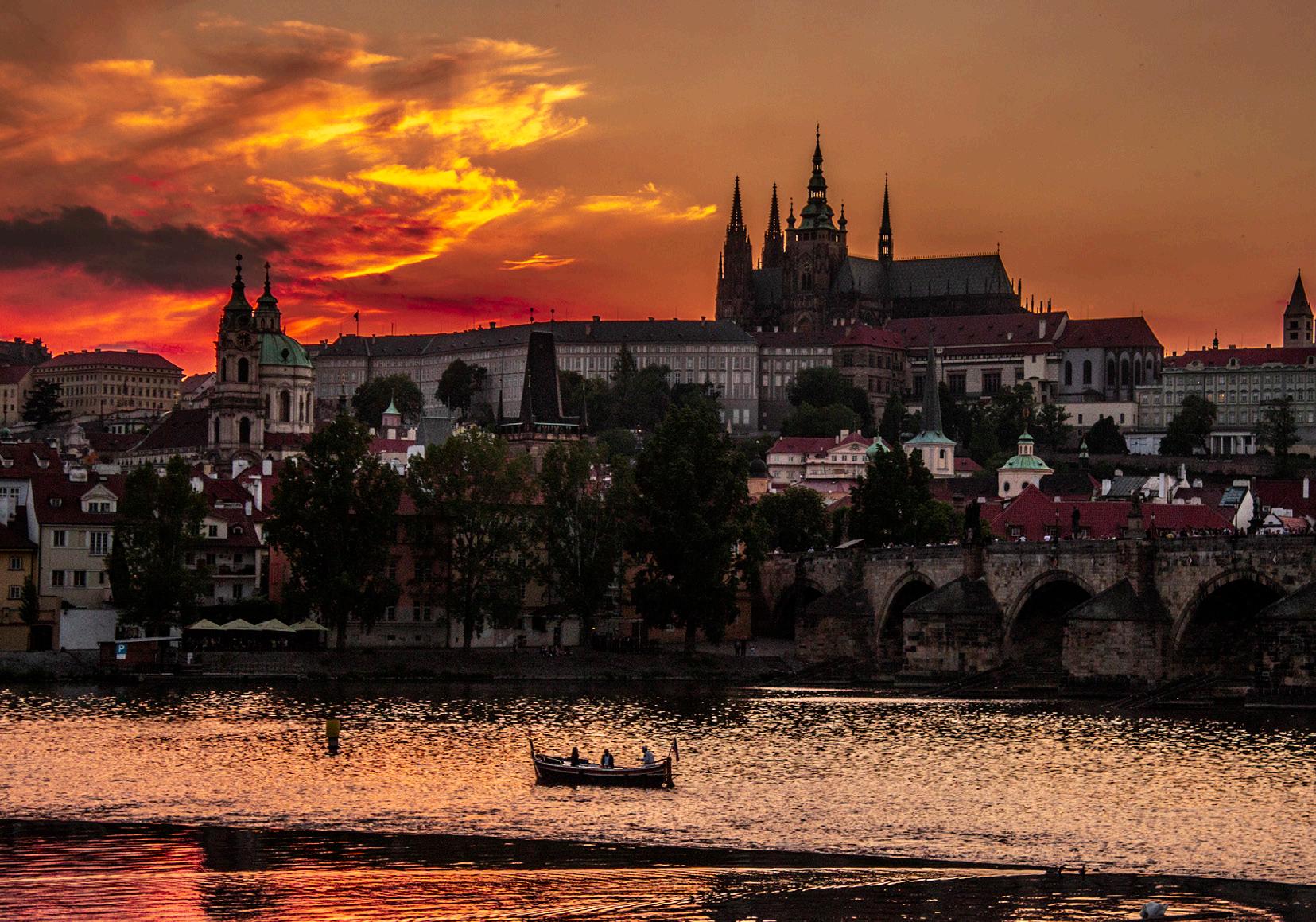
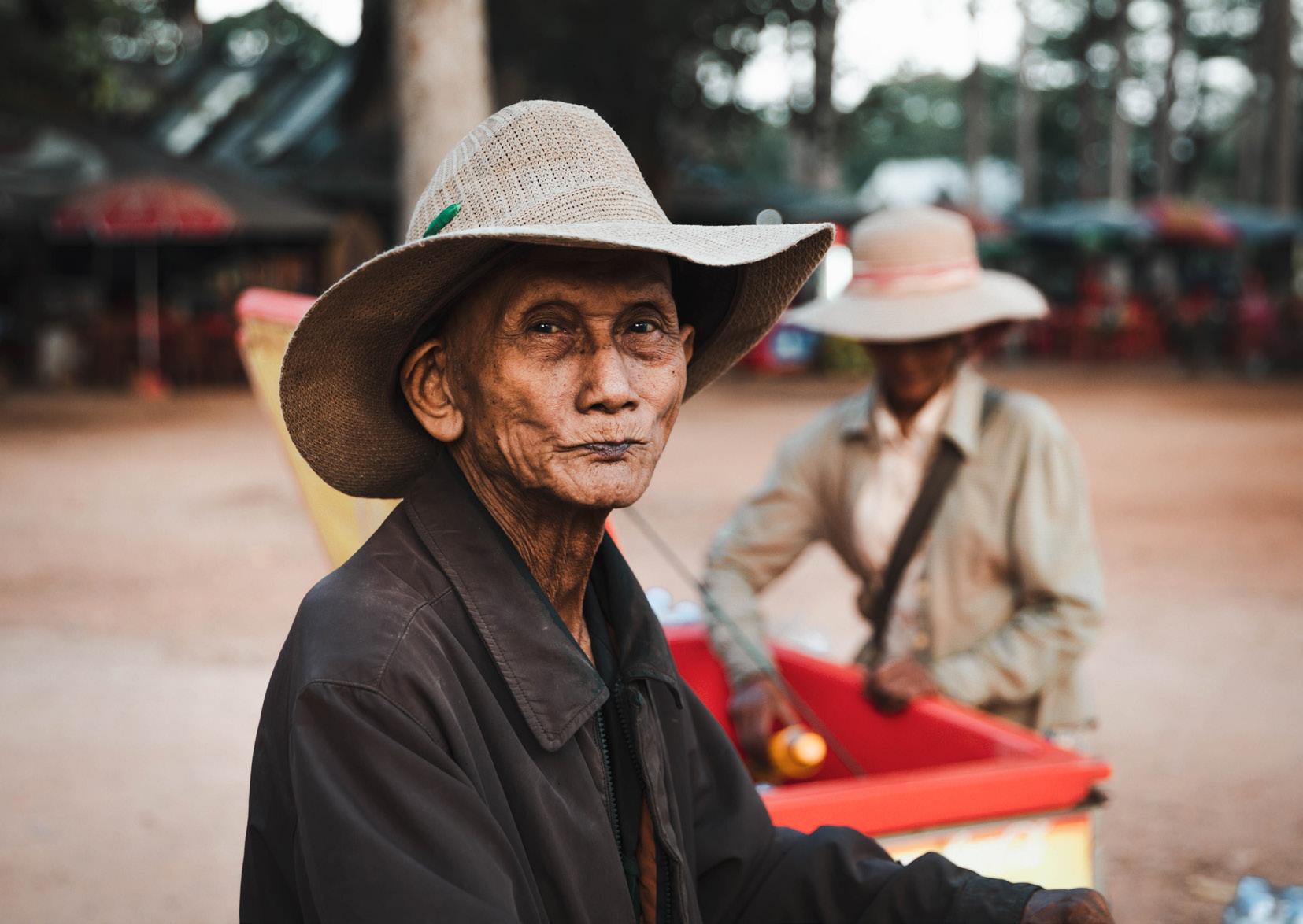
Transporting Bananas, Vietnam [Aubrey Johnson]

Colorful Fruit, Italy [Tai-Ling Bey]
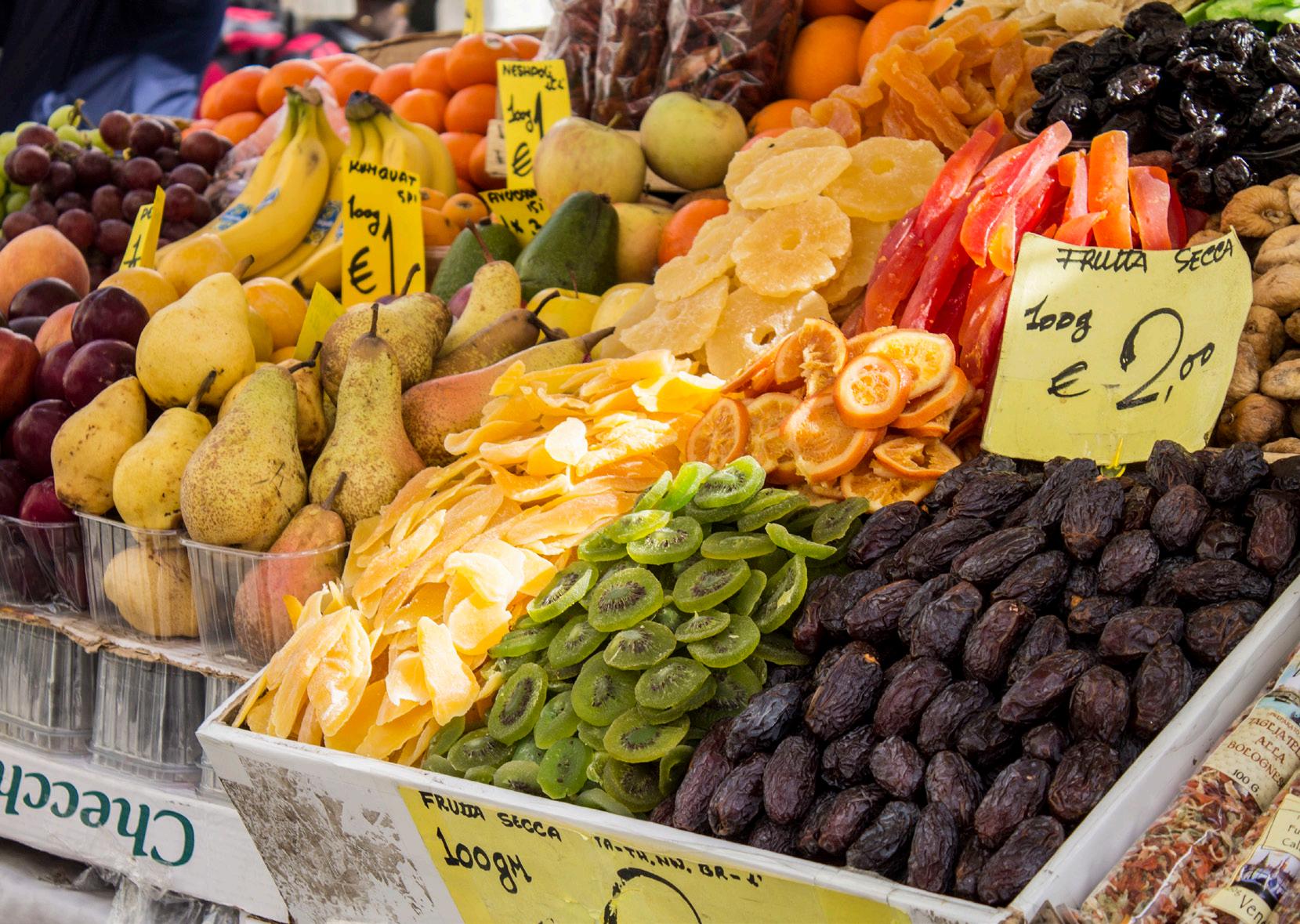
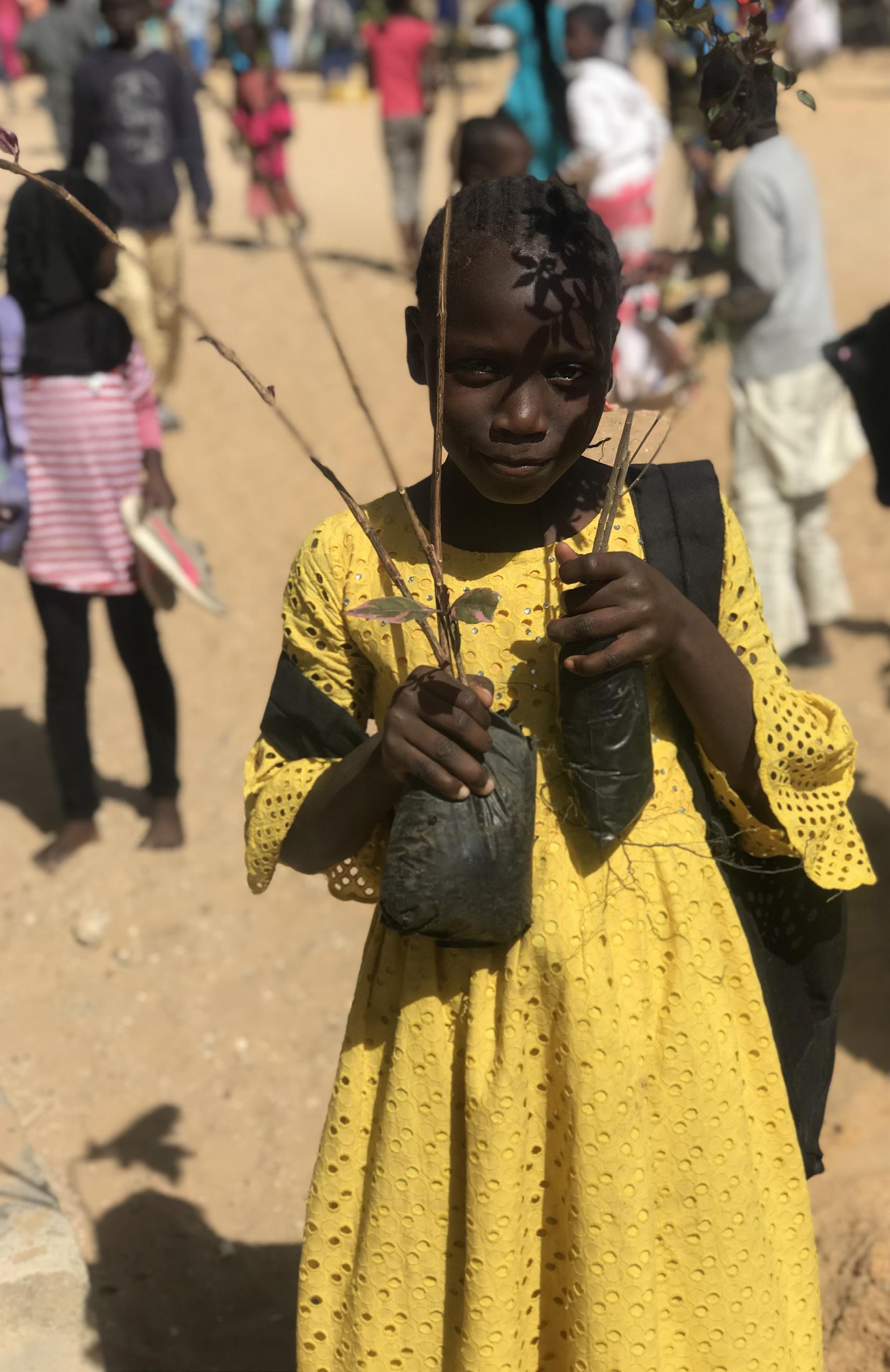 Student Planting Trees, Senegal [Djeneba Ballo]
Student Planting Trees, Senegal [Djeneba Ballo]
Parliament Building, Budapest, Hungary [Brianna Hurysz]
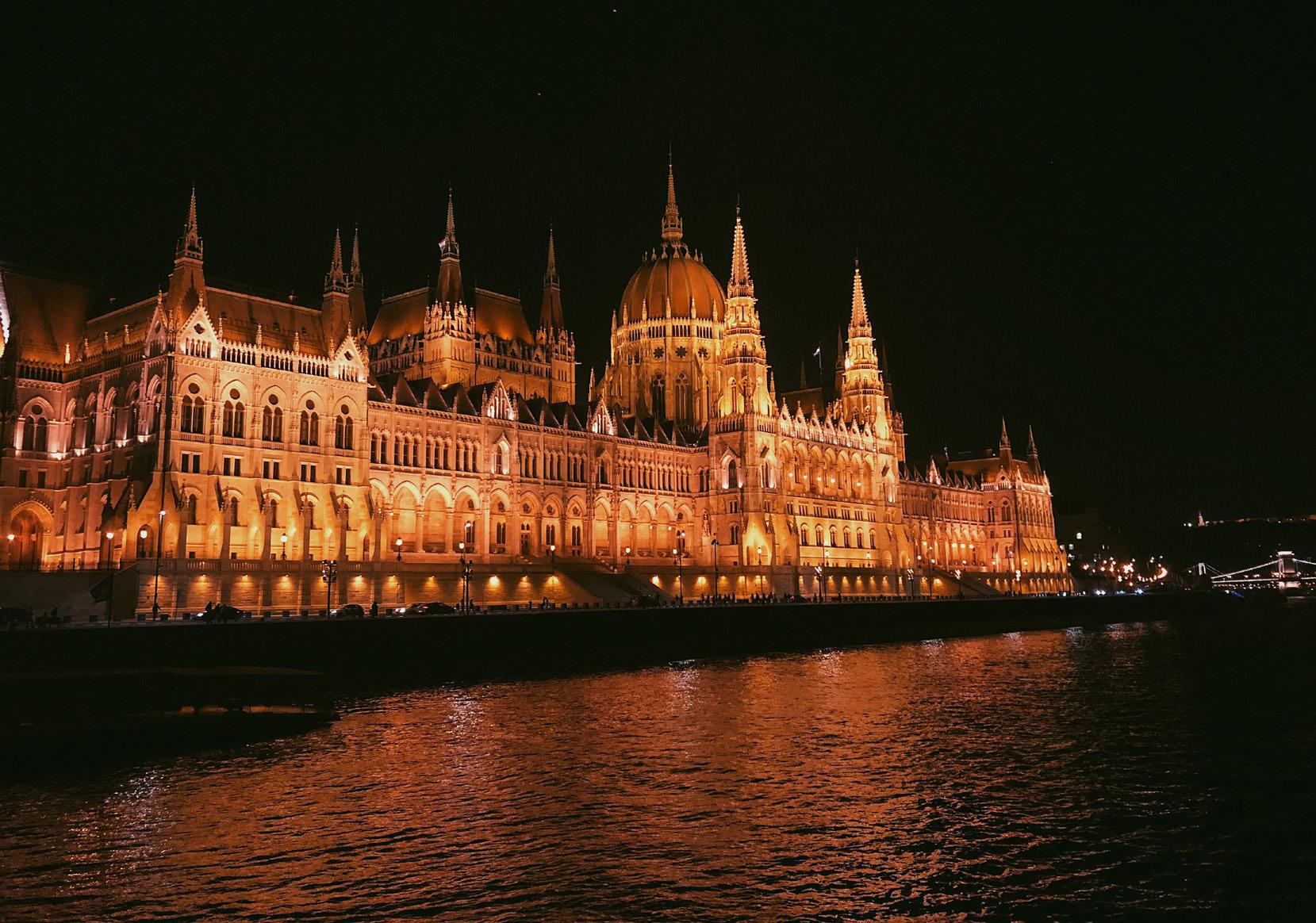
Canal Traffic, Venice, Italy [Tai-Ling Bey]
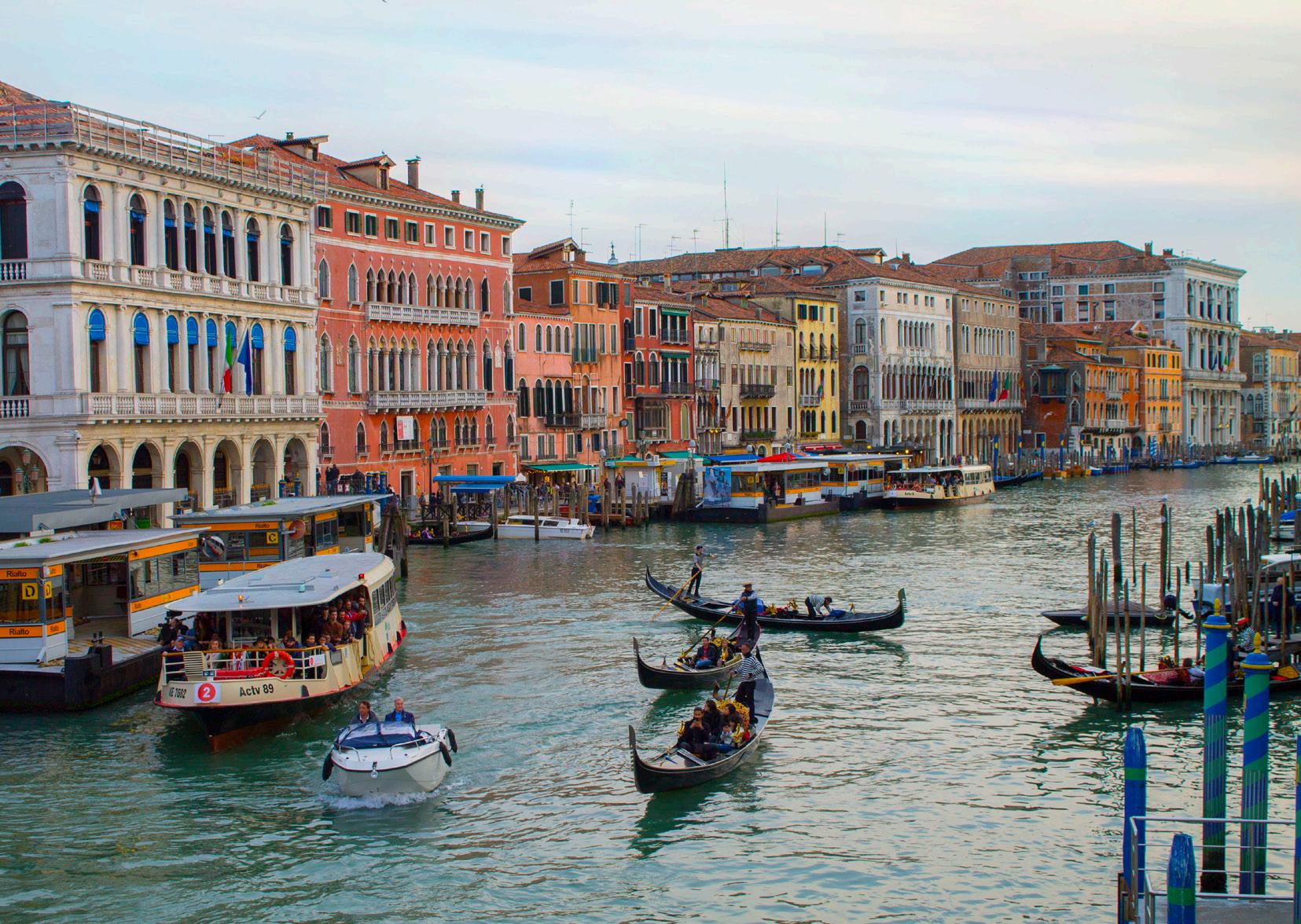
Sunset in Stockholm, Sweden [Bjørn Antell] Women Working, Ghana [Maya Weber]
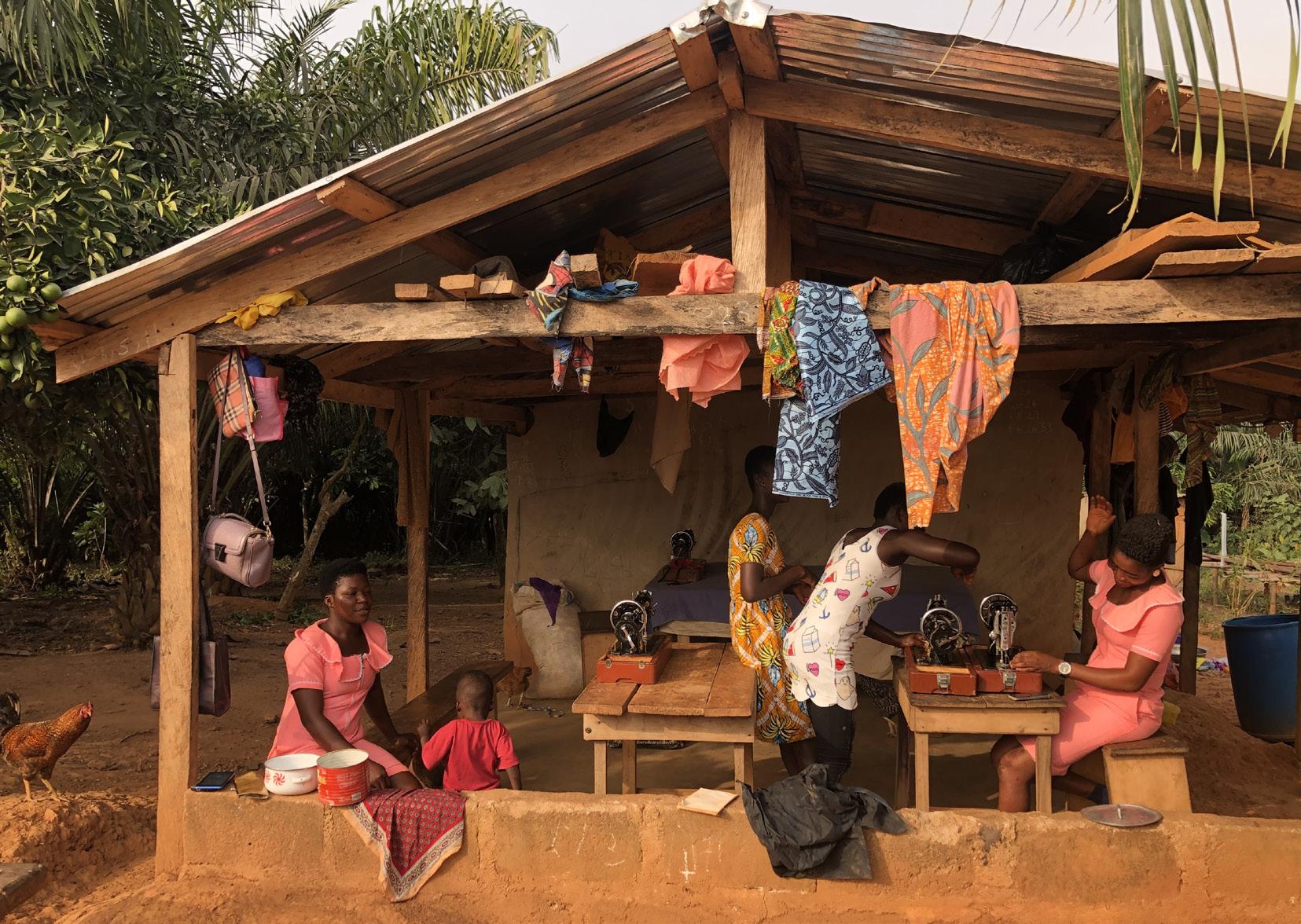
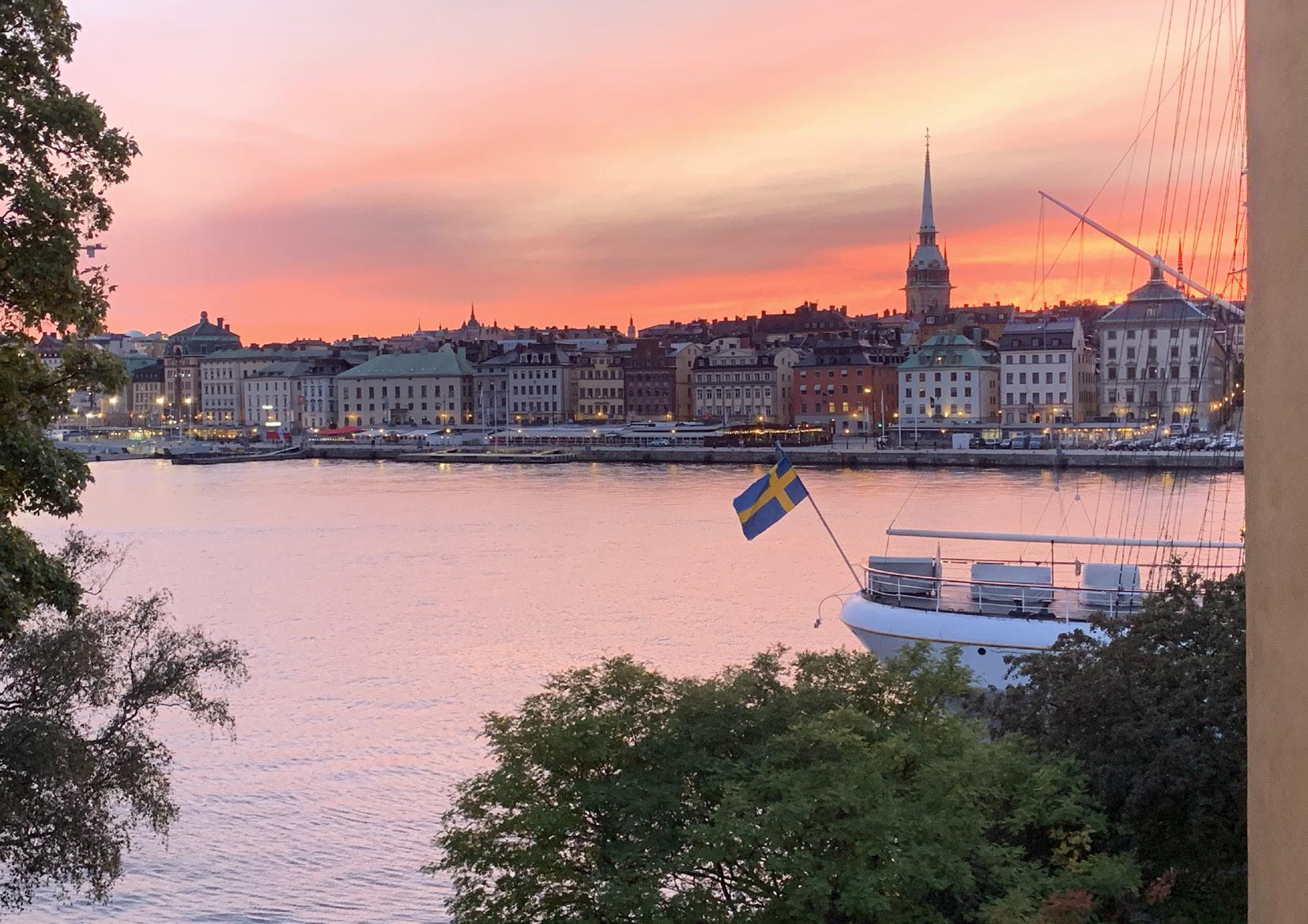
Neist Point Lighthouse, Isle of Skye, Scotland [Peggy Wagner]
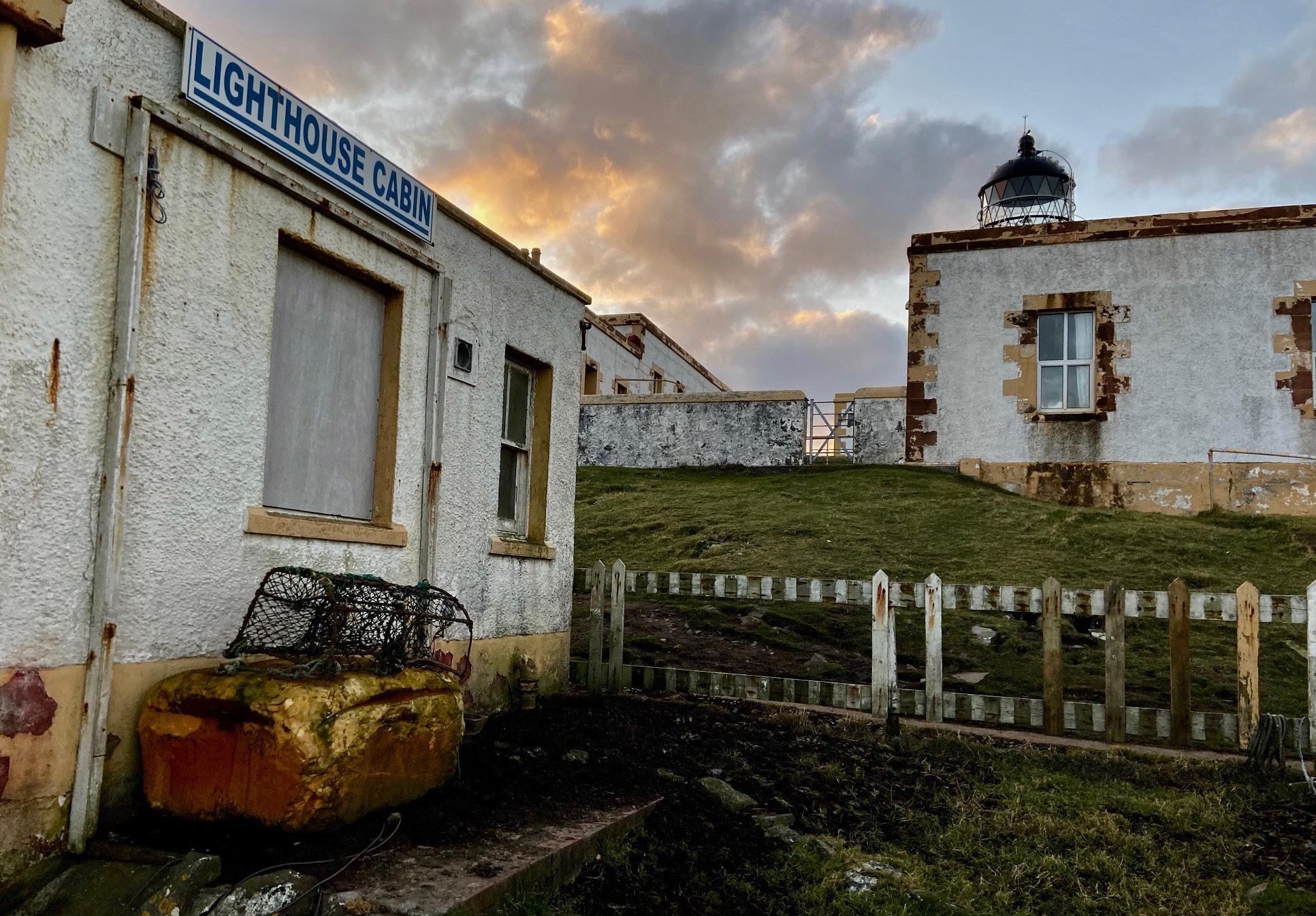
Overlooking the Roman Forum, Rome, Italy [Emma Consoli]

On Horseback, Argentina [Emma Honey] Lake Bled, Slovenia [Nicholas Stone]
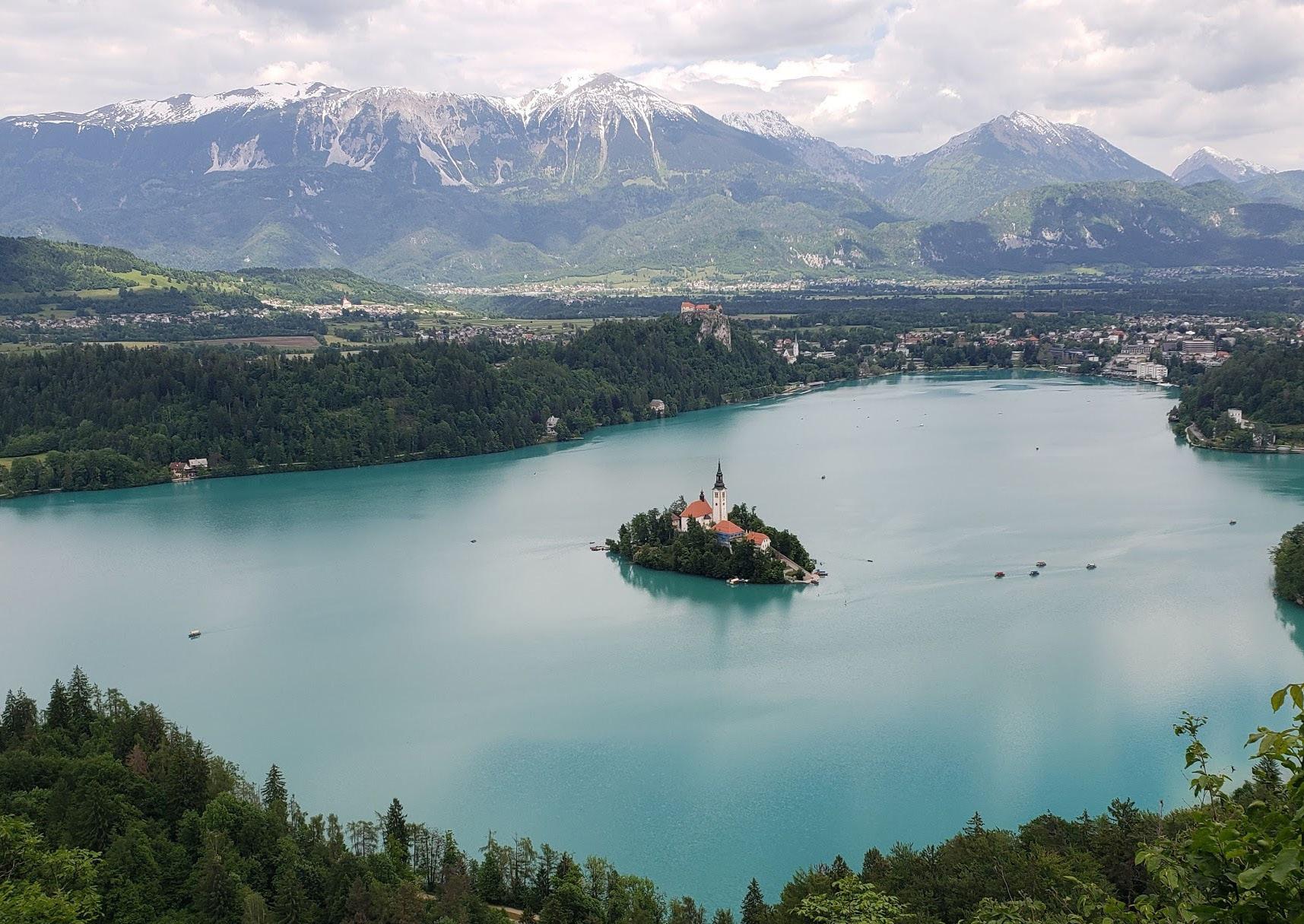
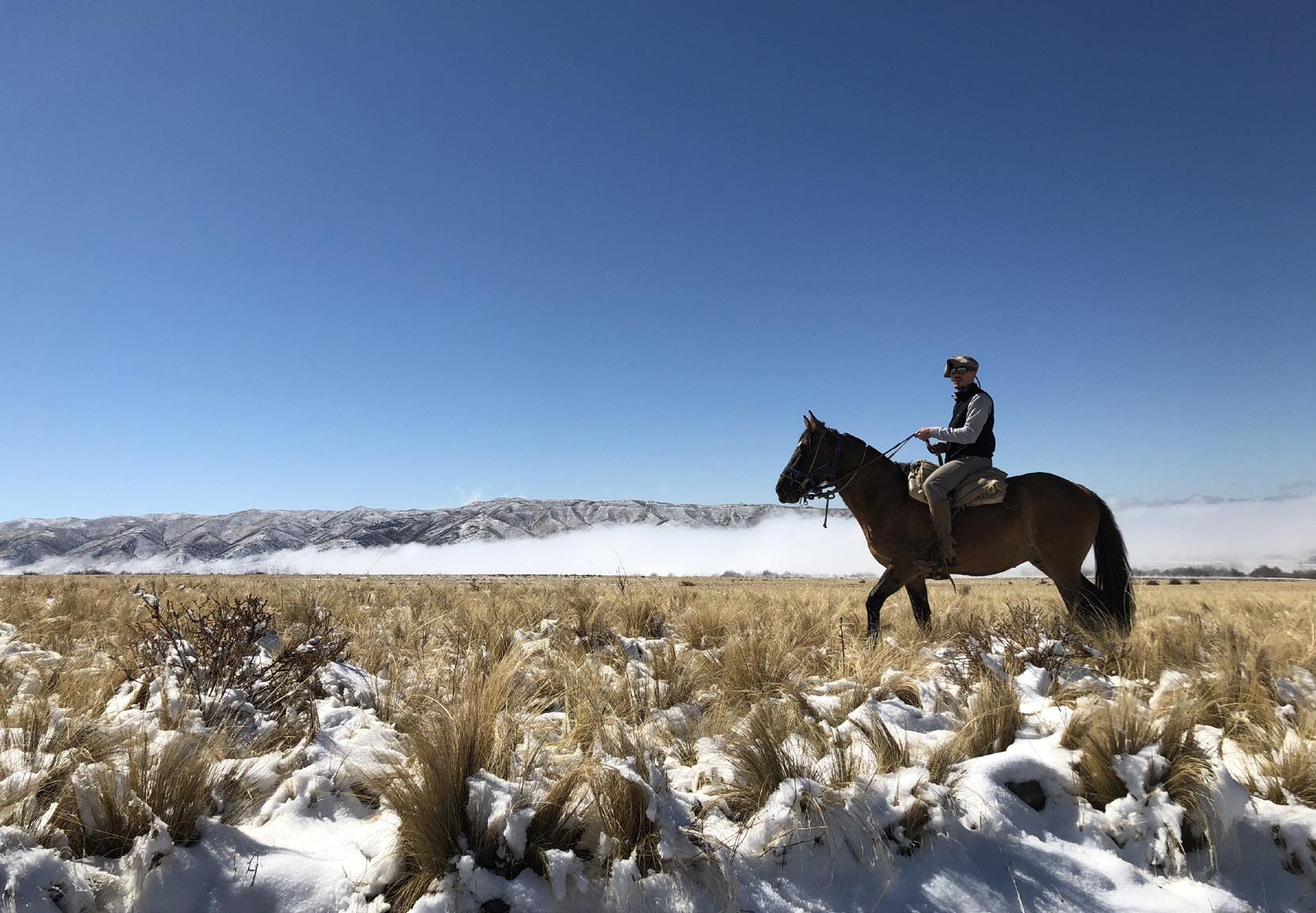
Local Coffee Shops & Neighborhood Character in Berlin

One of my favorite urban sketching subjects is the storefront elevation; drawing a storefront is a great way to represent the liveliness of an urban scene and its inhabitants while also capturing architectural style.
After a few months in Berlin, I’ve begun to get a sense of the distinctions of each of the city’s neighborhoods. There are stereotypes associated with each neighborhood (like Schöneberg has a large population of queer people or Prenzlauer Berg is where all the families live), but the “character” of each area is more complex than can be simplified by
Engagement I
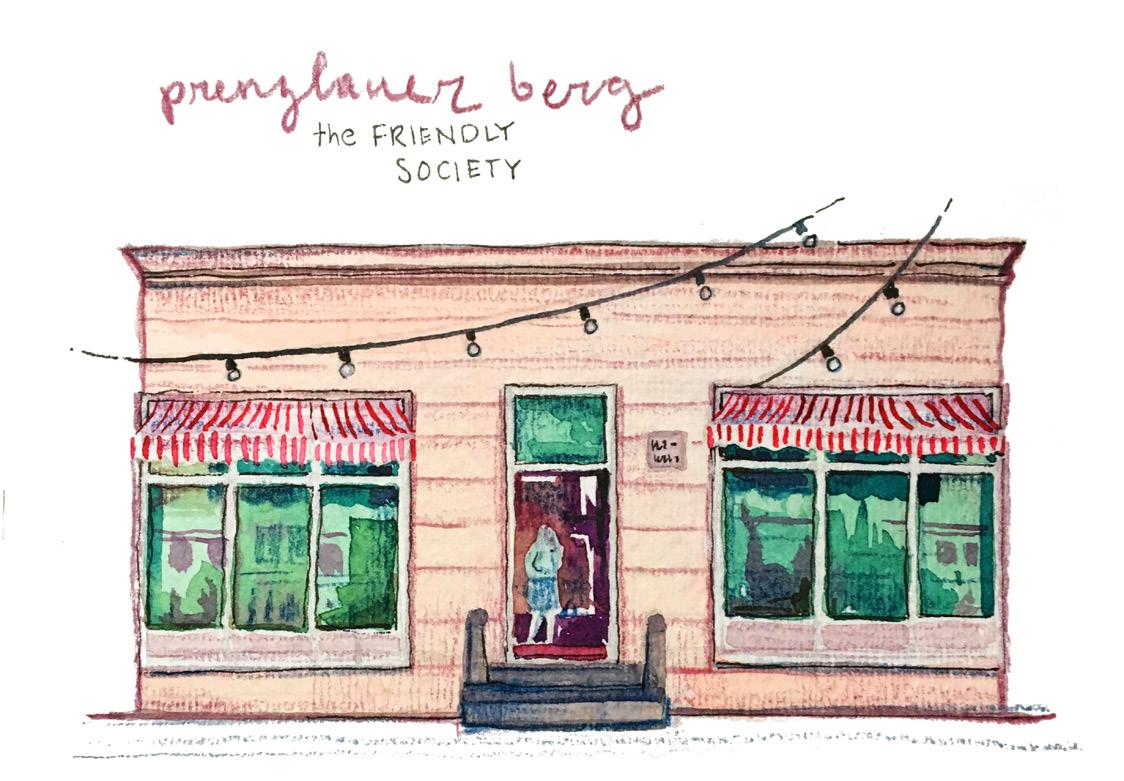
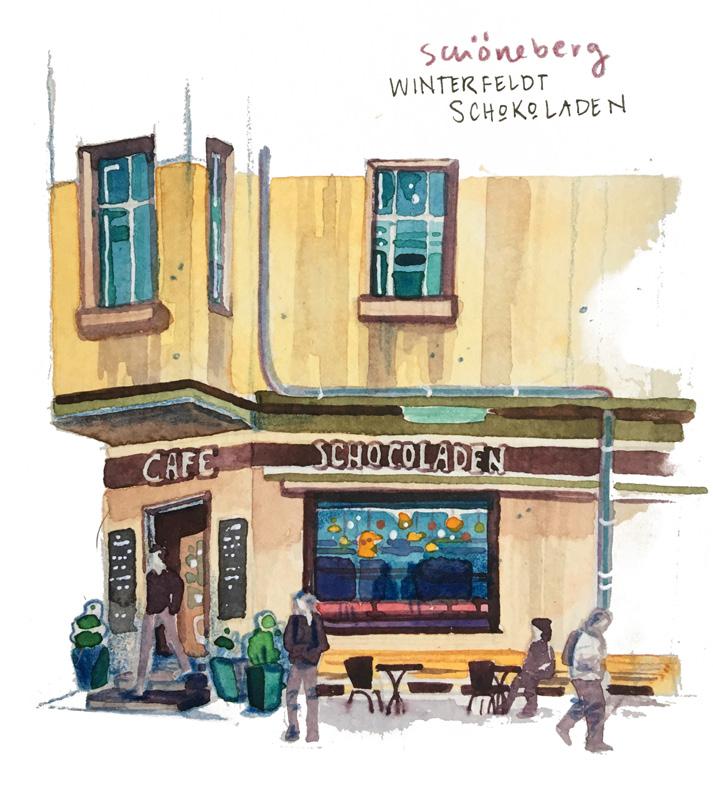
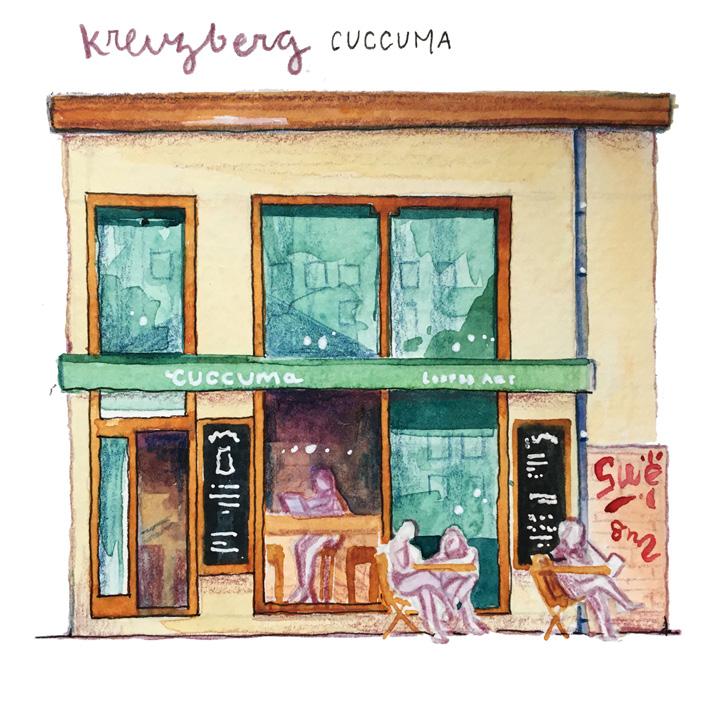
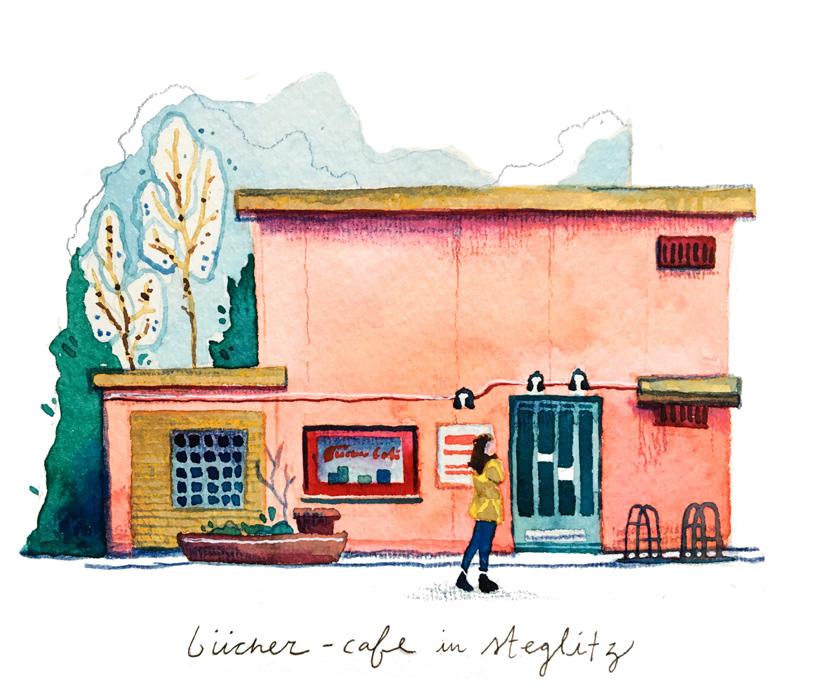

a journal of global perspectives 79
stereotypes or demographics, because each neighborhood has developed a personality as a result of its role in the tumultuous and ruptured history of Berlin. These personalities are constantly changing and interacting with one another as the city grows and changes. I decided a perfect way to explore Berlin’s neighborhoods further would be to draw a storefront from a variety of the neighborhoods.
I should note that I refer to “neighborhoods” rather than “districts” for this project, since the neighborhoods of Berlin are colloquially understood as entities with individual characters (Schöneberg, Prenzlauer Berg, Kreuzberg), rather than the official districts (Tempelhof-Schöneberg, Pankow, or Friedrichshain-Kreuzberg).
I reached out to my peers, who live scattered all across Berlin in various homestays, and asked each of them what their favorite coffee shop is in their neighborhood of residence. Then I visited many of these coffee shops to buy a chai latte and people-watch for a while before sketching the storefront in my sketchbook.
Why coffee shops? I think that this kind of storefront is a fairly ubiquitous motif throughout any city landscape, especially in Berlin (which has a thriving coffee culture). Additionally, because they are such a standard element of any city street, coffee shops are a great way to compare the idiosyncrasies of local character.
For example, the first coffee shop I sketched was in Steglitz, a somewhat peripheral neighborhood in the southern part of Berlin. My friend Ruby lives in Steglitz, and she took me to a small Bücher-Café. It was primarily a book shop with a small café where “they might remember to bring you your coffee,” according to Ruby. Steglitz is largely a residential area, and as Ruby put it, “the only things that are here are here because people who live here use them.” Compared to some of the other parts of Berlin which have been so
80 The Aleph
appropriated by city marketing and inundated by international visitors, this gives Steglitz a quality of sincerity and charm that I thought was reflected well by the Bücher-Café’s simple, nondescript façade.
There are plenty of Berlin neighborhoods which differ noticeably from the quiet, residential Steglitz neighborhood. Berlin has long had a reputation as a hub of creativity and counterculture, and in the past 30 years it has been marketed as such. This draws in vibrancy, but it also changes the composition of the city’s inhabitants, displaces certain populations, and alters the city’s culture itself. Since the late 1980s, gentrification has proceeded in a spiral-like pattern from Kreuzberg to Mitte to Prenzlauer Berg to Friedrichshain, chasing the city’s “creatives” as one subcultural space is appropriated by developers and they move on to the next neighborhood. Today, gentrification is returning in a more advanced stage to Kreuzberg and pushing its way into Neukölln as well.
I visited cafés that exemplify the advanced stages of gentrification in Mitte and Prenzlauer Berg. The processes of gentrification began in full force in Mitte (the neighborhood in the center of the city) around 1992 when investment into the city center became a political priority. By 2005, developers shifted from renovating existing properties to new construction, and much of Berlin’s large-scale luxury development is now occurring there. Café 93 is located in a newer building on a quiet street near the bustling Hackescher Markt, a retail hub. With trendy plants in the windows and 6-euro smoothies, Café 93 is a great representation of the shifts that have occurred in Mitte since it was mainly inhabited by squatters and artists in the 1990s.
Interestingly, when you search for Café 93 on Google Maps, you will find the café listed, but it does not appear on Street View. This is actually the case for many of the places I visited - change occurs so rapidly in Berlin that Google Maps
a journal of global perspectives 81
can’t keep up. Where Café 93 is now, I saw only a blank and empty storefront, reminding me that the Berlin I am experiencing now is quite different than the one my dad experienced when he visited in the 1990s. It’s also different than the one my peers experienced where they were here just last semester, and the one I might experience if I ever return. Berlin is a work in progress.
Many young professionals moved to Prenzlauer Berg in the late 1990s; the neighborhood was marketed as a funky and artistic place with cheap housing, and galleries and studios began to pop up in the neighborhood. I visited one such gallery called the Friendly Society on Easter Sunday with my host mom. The Friendly Society is run by two artists, one a fashion designer and one a painter, who work out of the space and exhibit all kinds of art. They also sell coffee and other drinks. My host mom said on sunnier days she likes to visit the gallery and sit at the tables outside on the quiet, chestnut tree-lined street.
Kreuzberg maintains a reputation for being a funky artistic space today, unlike Prenzlauer Berg which is generally viewed as an affluent family neighborhood. Cuccuma, a coffee shop near the Gneisenauerstraße U-Bahn station, embodies the Kreuzberg “vibe” with large framed collages which appear to be made from band posters or magazines. This kind of change is just beginning to reach Neukölln, which is currently attracting a large number of international residents. I visited a café called Café Engels, which is tucked into a Plattenbau building covered with graffiti. The café is somewhat out of place in the area, and seems to be trying to fit into the more gritty character of the Neukölln neighborhood.
Finally, I’ve included a shop that is just a few blocks away from my own homestay in Schöneberg called Winterfeldt Schokoladen. It doubles as a coffee shop that sells “chocochinos” (in addition to the standard array of coffee drinks)
82 The Aleph
and as a chocolate shop. Winterfeldt Schokoladen is in a bustling area near the Nollendorfplatz U-Bahn station which is always busy at any time of the day or night and where on Saturdays and Wednesdays a large market springs up.
The funny thing is, if I were to walk down 2 or 3 blocks in any direction, the neighborhood changes. Just within Schöneberg, I have visited tiny Spätkaufs with 1-euro takeaway coffee and “roasteries” with 6-euro lattes. In my attempt to represent the character of Berlin’s neighborhoods, what I really discovered is that there exist infinite degrees of variation within every neighborhood, and indeed within every street. It is useful and interesting to trace patterns of change and culture throughout the city, but the real joy of this project is the reminder that in Berlin, there is always something new to discover.
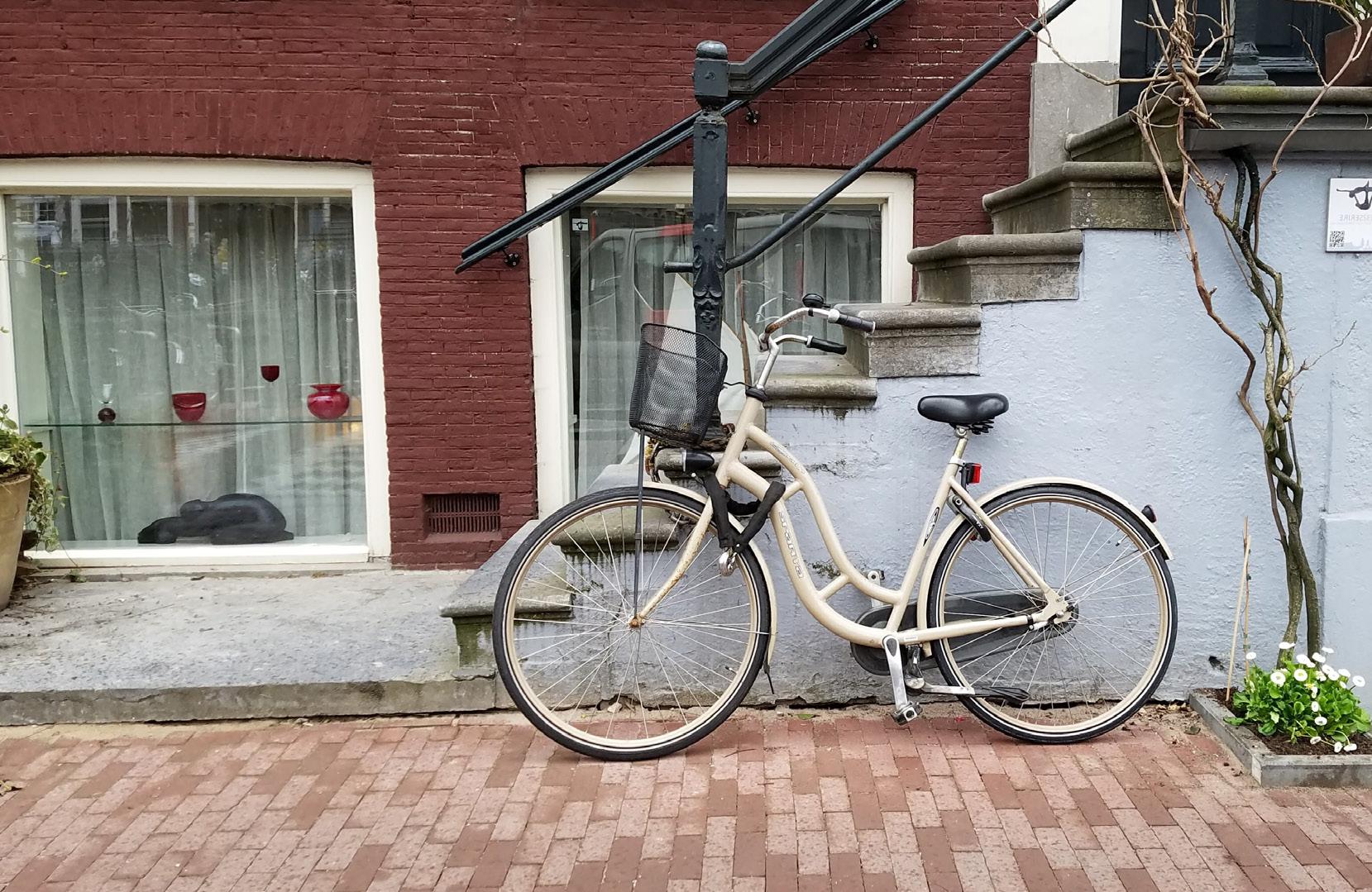 Bike Leaning on Stairs, Copenhagen, Denmark [Kayla McEachern]
-Abbey Frederick
Bike Leaning on Stairs, Copenhagen, Denmark [Kayla McEachern]
-Abbey Frederick
In Dialogue (Durban, South Africa)
“That was my next question. If you don’t wash them when you bathe, when do you?” my host sister asked me, laughing.
“We just sorta throw them in the hamper with the rest of our dirty laundry,” I responded. She looked at me and I knew what the next question was going to be. “But yeah, we change our underwear every night…hopefully.” We sat laughing and talking for quite a long time.
On my first night there I’m sure she could tell I was nervous and maybe she was, too. I went into my room to lie down and she came in a little later. She sat on my bed.
“I don’t really know what Americans talk about.”
I laughed. “Probably the same things you talk about.”
That first night we talked about America (specifically Trump) and piercings. I showed her my tattoos and she told me how she wanted one. Then she said, “Well, the one thing I know all girls like to talk about is boys.” And we did. We talked about boys for a while. She showed me a piece of writing she had been working on forever. A beautiful piece of writing that incited memories I forgot were there. She has found the poetry and musicality in English.
At the grocery store with my host family the other day, I stuck out like a sore thumb. No one really said anything until one woman said something to my host family in Zulu and then turned to me.
“So you’re American?”
“Yep.” I was feeling a little shy. Maybe I was too aware of how American I looked.
“How do you like it here?” is a question I feel like I get every day at this point, and I responded with my typical answer.
84 The Aleph
Engagement II

Portrait of a Young Girl, Ghana [Maya Weber]
“You don’t speak any Zulu?” she asked me. I shook my head no and she looked stunned.
“I start learning tomorrow, though!” I tried to add but she had continued her conversation with my host family. My host mother kindly did her best to inform me of what the woman was saying but I have a feeling I missed most of it.
In conversations with my host parents a lot of what is said by either of us must be repeated. It’s not their fault, either. They do not need to speak English, but they try so hard to communicate with me that the least I can do is focus during my Zulu lessons.
Sawubona.
-Yebo, sawubona. Unjani?
-Ngiyaphila, wena unjani? Nami ngiyaphila, ngiyabonga.
Confused? That’s okay. I’ll give you a hand.
I see you.
-I acknowledge you. I see you. Are you well?
-I am well. And you, are you well? Me too. I am well. I’m thankful (a.k.a. Thank you).
Language can be divisive, but it also allows people to form bonds. It’s harder for me to establish those bonds if I don’t learn the language of the people I am living with. I want to hear their stories and tell them mine. Americans are often seen as self-involved and we can be, I think. It’s not often we look to other cultures to learn from them. Most of us only speak one language and aren’t interested in other cultures - even the ones we have within our country. I’ve learned a lot for a Monday, but I think the most wonderful thing is that in greeting someone we can tell them that we see them. That, I think, is beautiful.
- Carrie Baker
86 The Aleph
Elephant Herd, Kenya [Ali Turner]

Abandoned Boat on Beach, Australia [Liza Plummer]
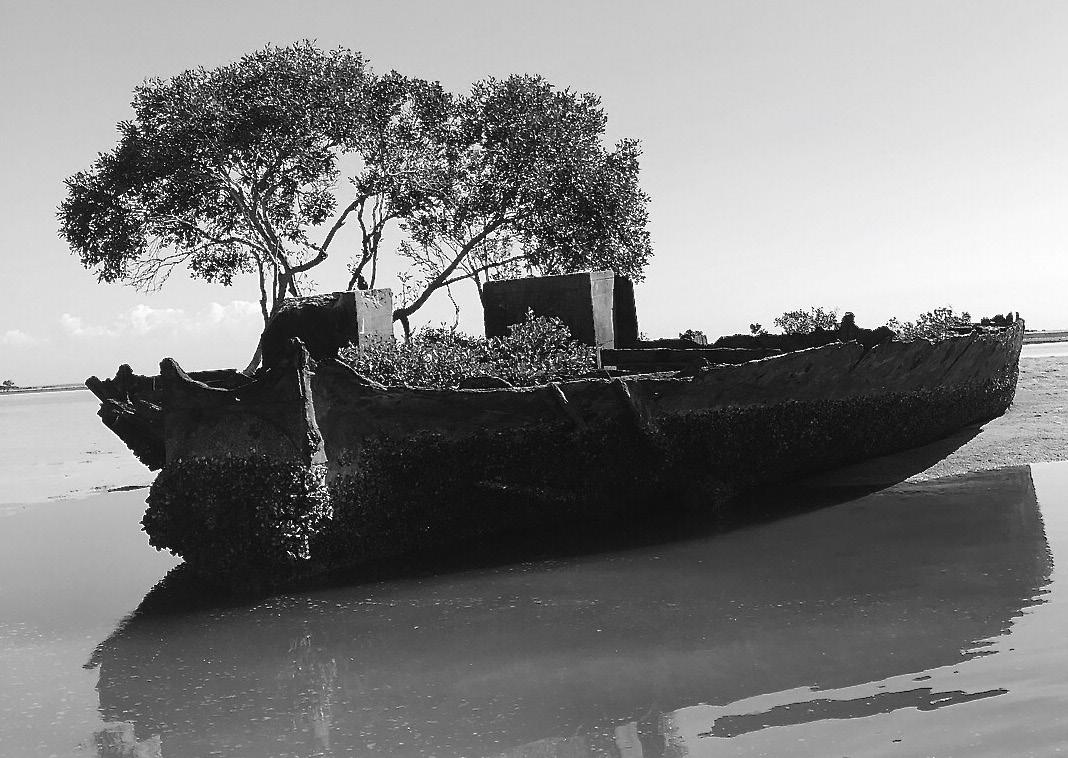
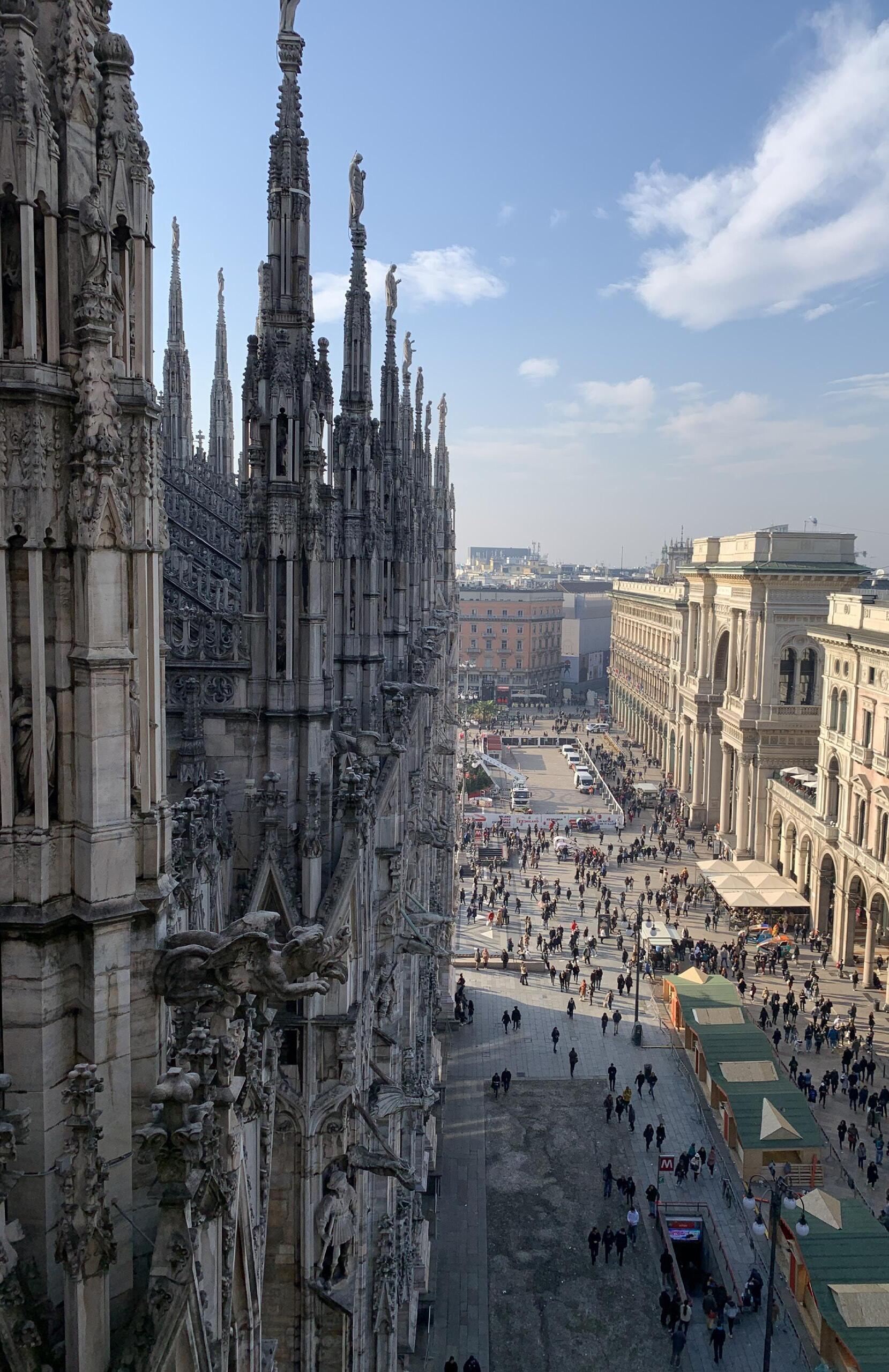 View of Milan, Italy [Susan Kowalski]
View of Milan, Italy [Susan Kowalski]
Querida Sevilla, la mejor ciudad del mundo:
Nunca he pensado que amaría una ciudad como te amo. Me has enseñado mucho sobre la vida, me has dado la mejor familia española y un segundo hogar, y me has permitido conocer las mejores personas y amigos. Estoy muy agradecida por esta experiencia; has cambiado mi vida para siempre.
Cuando vine a tu país en septiembre, fue mi primera vez fuera de los Estados Unidos. Fue un gran choque cultural para mí, pero estaba lista para aprender sobre tu cultura, tu historia, tu lengua y todas las otras cosas que ofreces. Me has servido de plataforma para viajar y conocer toda España y otros países. Fui a muchas ciudades en España, como Granada, Madrid, Barcelona, Córdoba, Aracena, Toledo, Málaga, Cádiz, Grazalema y El Escorial. Además, fui a otras ciudades en otros países, como París, Francia; Venecia, Italia; Lagos, Portugal; Tetuán, Marruecos; Chefchaouen, Marruecos; Asilah, Marruecos; y Tánger, Marruecos. Siempre he soñado con viajar por el mundo, y me has permitido comenzar ese viaje increíble. A pesar de esto, tú eres mi cuidad favorita todavía. Tienes los mejores lugares y personas, y me encanta todo sobre ti. Tienes el parque de María Luisa, el río, la catedral, Las Setas, el Mercado de Triana, y mucho más. Me encanta tumbarme en tu sol, caminar por tus calles, comer tu comida, mirar a tus bailaoras de flamenco, tomar las siestas, hablar tu lengua, etc. Tu estilo de vida es muy relajado, y lo he disfrutado mucho. Te siento como mi hogar.
También yo he aprendido mucho sobre mí gracias a ti. A veces, mis límites han sido puestos a prueba de maneras muy personales, pero soy muy fuerte; puedo hacer cualquier cosa y estoy lista para cualquier desafío que se me presente. No fue fácil dejar mi familia, mi país, mi escuela, mi vida, pero estoy muy contenta de que lo hice. Lo hiciste más fácil al ser una ciudad tan hogareña y acogedora. Eres el mejor lugar para tener esta experiencia.
a journal of global perspectives 89
Una Carta
Engagement III
Además de ser la mejor ciudad, tienes las mejores personas. Por ello, me gustaría dar las gracias a algunas personas que me han ayudado y han mejorado mi experiencia aquí en tu hermosa ciudad:
Primero, la familia anfitriona que tengo ahora. Mi primera familia no era adecuada para mí, pero vosotros sois perfectos. Os quiero mucho; sois personas muy generosas, simpáticas e increíbles. Me siento muy cómoda y somos familia ahora. Gracias por todo. Específicamente, gracias a Marie. Me encantan nuestras conversaciones; tú hablas muy rápido, pero me has ayudado a entender español. Eres la mejor, y gracias por ser un espíritu brillante en mi vida aquí.
Por último, gracias a Shayna. Eres mi mejor amiga, y quiero ser más como tú. Eres muy inocente e inteligente; estás contenta todo el tiempo; eres positiva y generosa. También sé que puedo confiar en ti con cualquier cosa. Gracias por ser la persona a la que siempre puedo acudir con mis problemas; tu consejo es muy importante para mí. Te quiero mucho, Shayna.
En resumen, te quiero, mi ciudad, y todos tus lugares y personas. Esta ha sido la mejor experiencia de mi vida. Nunca te olvidaré y volveré. Gracias por todo, Sevilla. Atentamente, Kelsi Morasse
Translation:
Dear Seville, the Best City in the World,
I have never thought that I would love a city like I love you. You have taught me about life, you have given me the best Spanish family and a second home, and you have allowed
90 The Aleph
me to meet the best people and friends. I am very grateful for this experience; it has changed my life forever.
When I came to your country in September, it was my first time outside of the United States. It was a big culture shock for me, but I was ready to learn about your culture, your history, your language, and all of the other things you have to offer. You have served as a platform for me to travel and get to know all of Spain and other countries. I went to many cities in Spain like Granada, Madrid, Barcelona, Córdoba, Sierra de Aracena, Toledo, Málaga, Cádiz, Grazalema, y El Escorial. I went to other cities in other countries as well like Paris, France; Venice, Italy; Lagos, Portugal; Tetuan, Morocco; Chefchaouen, Morocco; Asilah, Morocco; and Tangier, Morocco. I have always dreamed of traveling through the world, and you have allowed me to begin this incredible journey. Despite this, you are still my favorite city. You have the best places and people, and I love everything about you. You have the Maria Luisa Park, the river, the cathedral, Las Setas, Triana market, and much more. I love soaking in your sun, walking your streets, eating your food, watching your flamenco dancers, taking naps, speaking your language, etc. Your style of life is very relaxed and I have enjoyed it a lot. This city feels like my home.
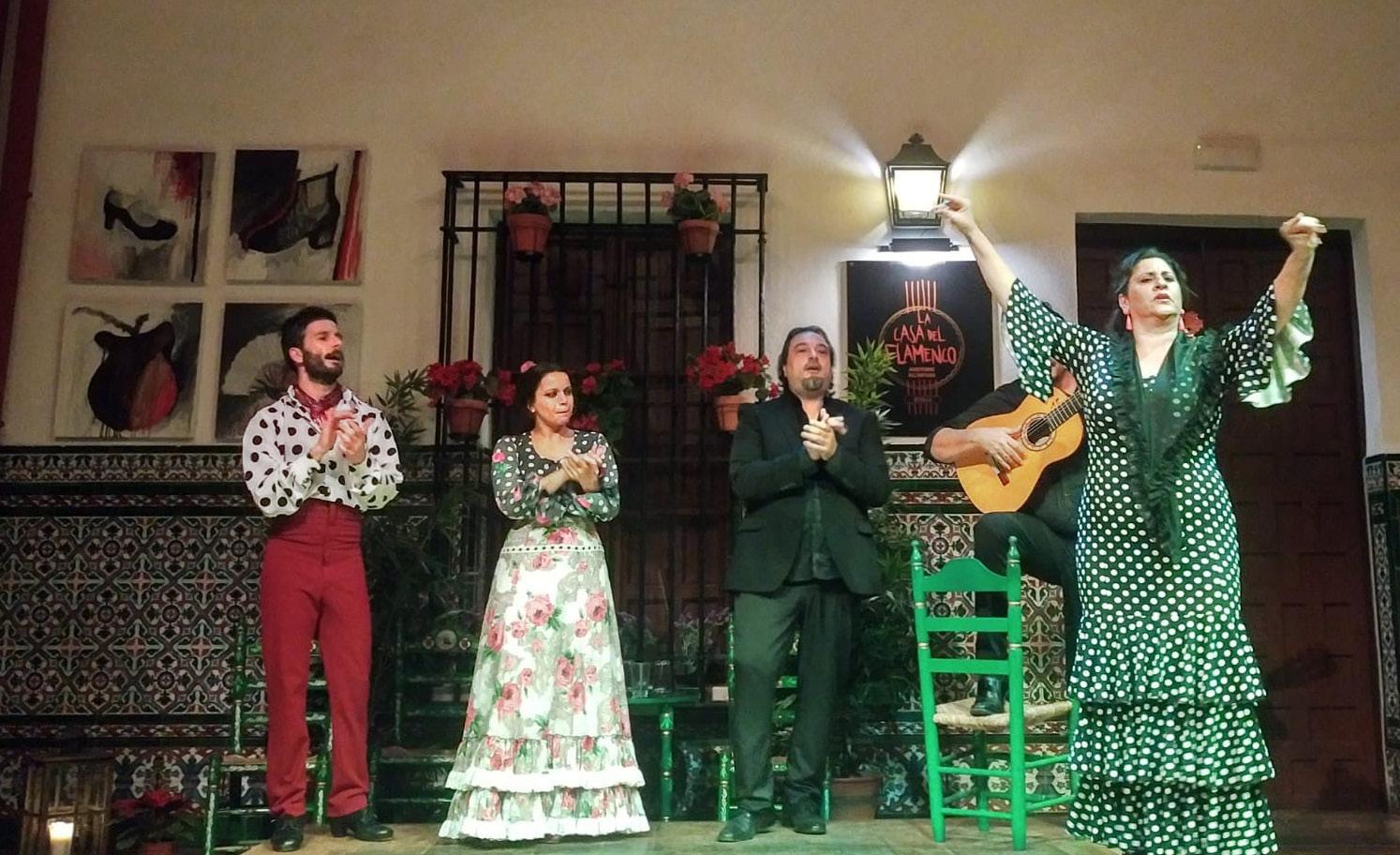 Flamenco Performance, Seville, Spain [Carolyn Girard]
Flamenco Performance, Seville, Spain [Carolyn Girard]
Also, I have learned so much about myself thanks to you. Sometimes, my limits have been tested in very personal ways, but I am strong. I can do anything, and I am ready for any challenge that is presented to me. It wasn’t easy to leave my family, my country, my school, my life, but I am so happy that I did. You made it very easy by being a very homey and cozy city. You are the best place to have this experience.
In addition to being the best city, you have the best people. With that being said, I would like to thank some people that have helped me and made my experience better here in your beautiful city:
First is my host family that I have now. My first family wasn’t quite adequate for me, but you guys are perfect. I love you all so much; you all are very generous, kind, and incredible. I feel very comfortable and we are family now. Thank you for everything. Specifically, thank you, Marie. I love our conversations; you talk very fast, but you have helped me learn Spanish. You are the best and thank you for being a bright spirit in my life here.
Lastly, thank you, Shayna. You are my best friend and I want to be more like you. You are very innocent, intelligent, happy all of the time, positive, and generous. Also, I know that I can trust you with anything. Thank you for being the person that I can always go to with my problems; your advice is very important to me. I love you so much, Shayna.
In all, I love you, my city, and all of your places and people. This has been the best experience of my life. I will never forget you and I will return. Thank you for everything, Seville.
Sincerely,
Kelsi Morasse
92 The Aleph
Birds-Eye View of a New Home, Seville, Spain [Cailey Mastrangelo] Country Road, Pajares, Spain [Sheila Uria]
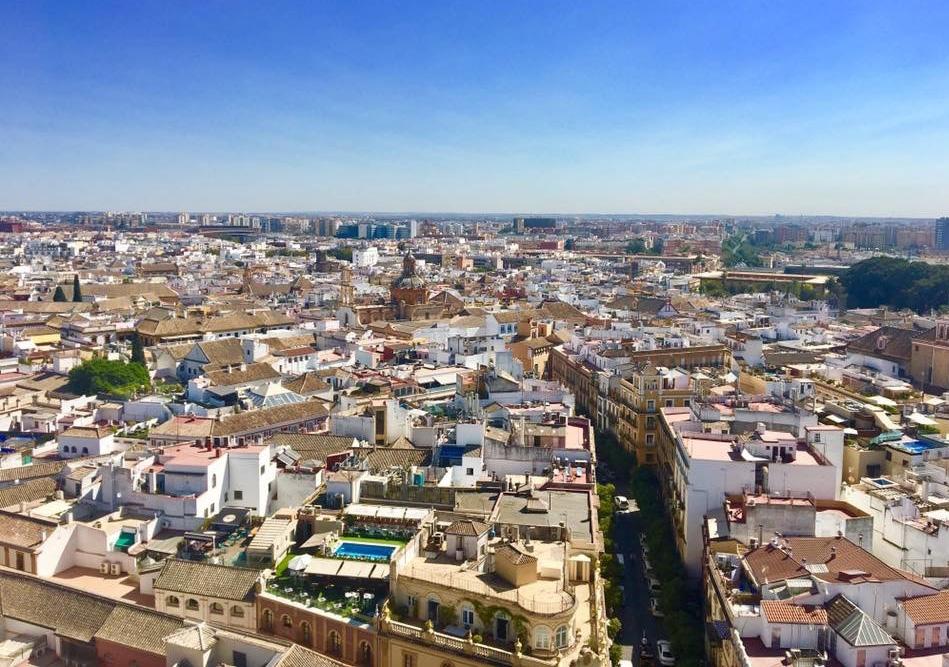
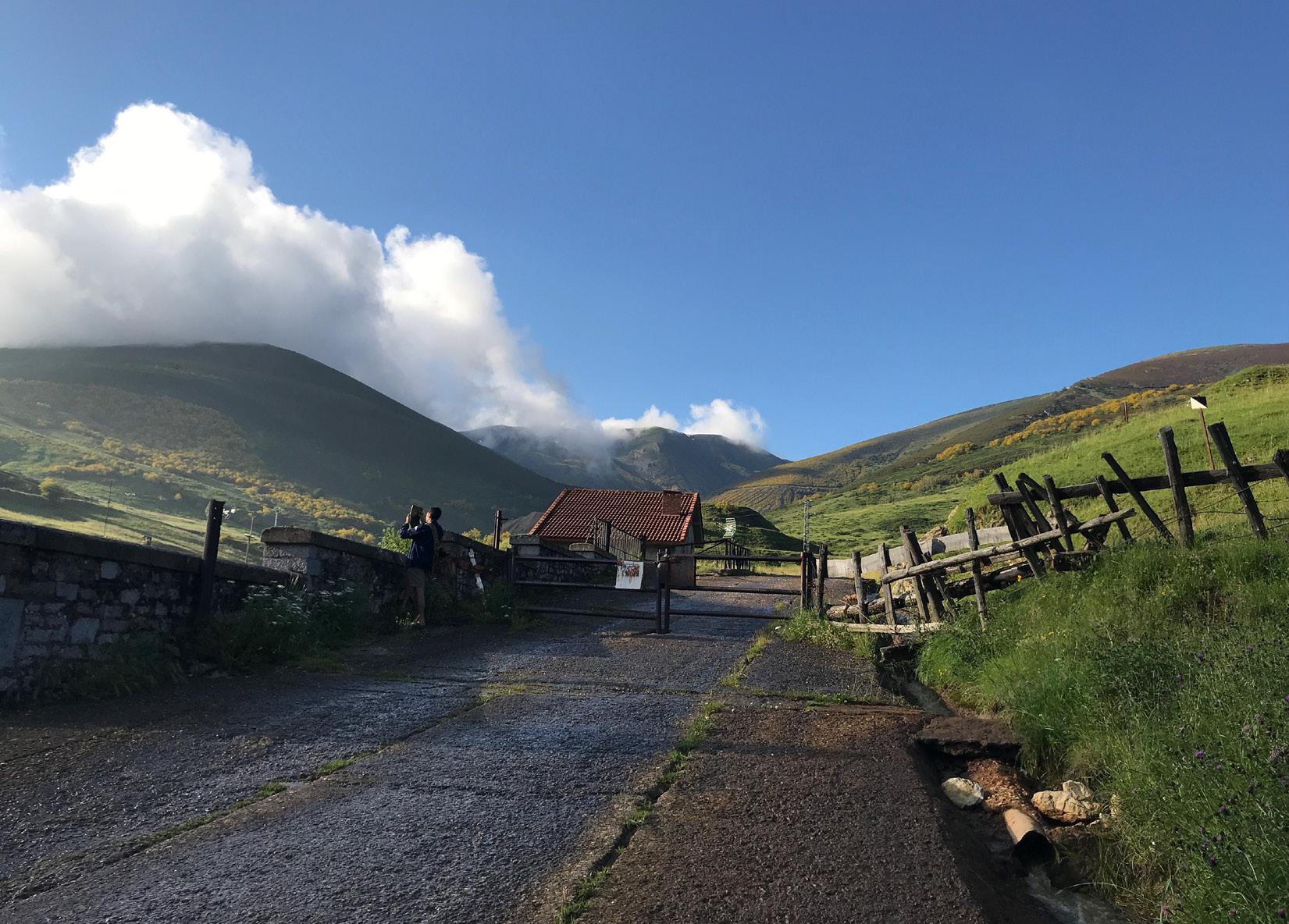
Onsdagssneglen: a recipe for home
On the first day of the adventure, Carl-Johan (9) comes bounding out onto the deck carrying a china plate stacked high with pastry, bouncing in time with his steps, crumbs flying into the air. His greasy blond bowl cut flails in his eyes. Prior to the joyous galloping, he could be heard in the kitchen hollering muffled words in dramatic praise of the afternoon’s sugary snack: Full-Moon tea (CJ’s favorite) and Hindbærsnitter (raspberry cut). Nora fusses over the hypersweetness of the pairing, conscious of my newcomer tongue and her son’s rampant sweet tooth. I haven’t slept in hours, and my jet-lagged conscience craves the soothing taste of crumbling biscuit, tart raspberry preserves, sumptuous white glaze, and a jubilant dusting of Tivoli (little colorful sprinkles named after Tivoli Gardens, the world’s secondoldest amusement park, located in the center of Copenhagen since 1843). Eyes closed, I slip into the homelike taste of what seems to be a pop-tart from heaven.
We start with what is known. In the first few moments, we hold with us what we know. Even in new Danish packaging, it is simple enough to find. Sugar and butter.
Mix 6 tablespoons of softened butter, ¾ cup of brown sugar, and 2 ½ tablespoons of cinnamon in a medium-sized mixing bowl. Close your eyes and inhale the aroma of home. Mix gently with a fork or spatula and be sure to leave some clumps behind for optimal gooeyness. The best filling pulls apart to leave strands of liquid sugar behind. Sugar strands are the mark of love in baking.
At 06:00 on my 20th birthday, I awake to the sound of singing. I dag er det Sarahs fødselsdag! Hurra, hurra, hurra! presented by sleepy faces packed into my perfectly tiny room. Jerrik dressed for work, Dyveke (13) in her favorite robe (artfully stolen from a hotel in Thailand), and Carl-Johan,
94 The Aleph
Engagement IV
nearly naked and half asleep, on Nora’s hip. The scent of today’s bread and wienerbrød (fresh pastry) wafts through the floorboards. The morning continues with presents at the breakfast table, our little family rubbing eyes and sharing laughs as we sip tea and enjoy 25 blissful minutes of morgen-hygge before heading our separate ways. Hygge can be translated only as close as “coziness” in the English language. To have morgen-hygge is, quite simply, to have hygge in the morning. Even before the sun rises, before the cool fog settles outside, we practice hygge. And then we depart: to school, to work, to university, each full of the morning’s sweet quotidian.
A-Tog into the city, three classes, a cappuccino, and a stroll down Rådhusstræde for fresh flowers brings me to the 16:10 A-Tog home. I check in with Nora on the train, and she is just leaving work. By the time I have made it home and parked my bike in the shed, the kitchen windows are foggy from the oven’s heat intermingling with crisp September air on the glass.
By
19:30,
two
Fødselsdagkagen
(birthday cakes) sit atop the kitchen table, blending into a decadent display of Danish flags, tea lights, confetti, and bowls of potato chips and Haribo candy. By 20:00, I feel like the Fødselsdagkagen, engaging as best I can with the sea of Danish conversation around me: jokes, songs, anecdotes. Ten candles on each cake, I blow out one and then the other only to learn that “the candles you miss are the number of boyfriends you’ll have before you die.” Well how about that! I am given a moment of rest by pillow-soft whipped cream and fresh fruit between layers of almond cake.
As it so happens, the first proof of dough takes exactly as long as my commute from university back home. It’s enough time for two chapters of Danish homework. It’s enough time to fall in love with a new place, a new ingredient, a new love, weighing ever so slightly in your heart.
a journal of global perspectives 95
In a large mixing bowl, sprinkle 2 teaspoons of fresh active yeast over 1 cup of cold milk, and gently stir to dissolve. To this mixture, add 2 tablespoons of canola oil, 1 tablespoon of sugar, 1 teaspoon of salt, 1 teaspoon of cardamom, and ½ teaspoon of nutmeg. Slowly knead 3 ½ cups of flour into the mixture. Continue to knead until firm, and place in an oiled bowl. Cover with cheese cloth and allow the dough to double in size (about 40 minutes).
After our hearty evening meal, Dyveke, who has been bouncing in her chair since we sat down, runs to the kitchen to fetch ingredients for dessert: little shortbread cookies and raspberries as a garnish to the main dish. She has been waiting patiently to introduce me to this surprise for weeks. I follow as she pours herself a bowl of koldskål, cold buttermilk soup, made with buttermilk, lemon, and sugar. She crumbles the shortbread cookies atop the pale liquid in her dish, and then artfully places raspberries in polka dots around the bowl. I dip my spoon into the imitation of her perfectly executed treat, and I am overcome with the tangy sweetness of this strange dessert soup. Ahh, the rapture of a new form of sugar, distinct yet unknown to the tongue. I have built myself up to this moment with basic cakes and pastries. The divine taste of this cool dish mingles with my desire to explore, to experience, to embrace more.
Preheat your oven to 435ºF (225ºC). I even love Celsius. So new, so odd, so horrifically inapplicable to the home I came here from. But everything grows on me, and I transform. As the heat rises, check your dough to assure that it too has risen in preparation for transformation. Prepare two 8-inch round baking pans, spreading butter on the base and walls and lining each with parchment paper to protect against sticking.
This particular Friday night we have curled up to watch the first installment of the Julekalender, the Christmas Calen-
96 The Aleph
dar. A 24-part Christmas series, different every year, builds up to a Christmas finale and begins on December 1st. Across Scandinavia, families know to gather at 20:00 every night to watch the next section. In just a few short weeks I’ll spend hours searching for it on the American web, at last finding it in the dregs of the internet, curling up in bed and lapping up every second possible. Tonight, as Tinke, our main char-
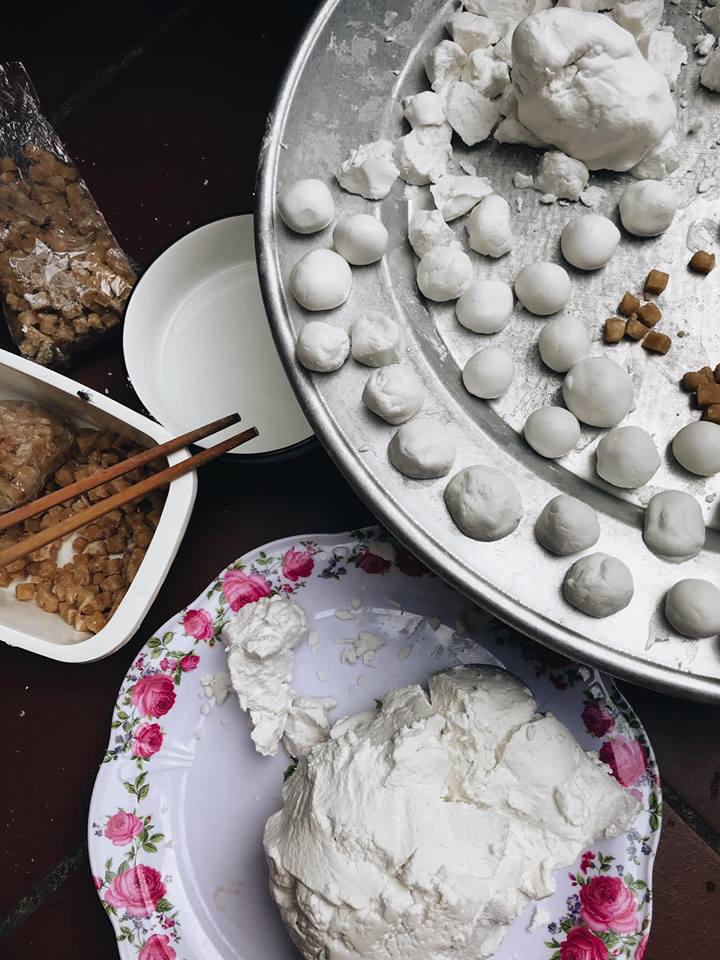
Nyhavn,
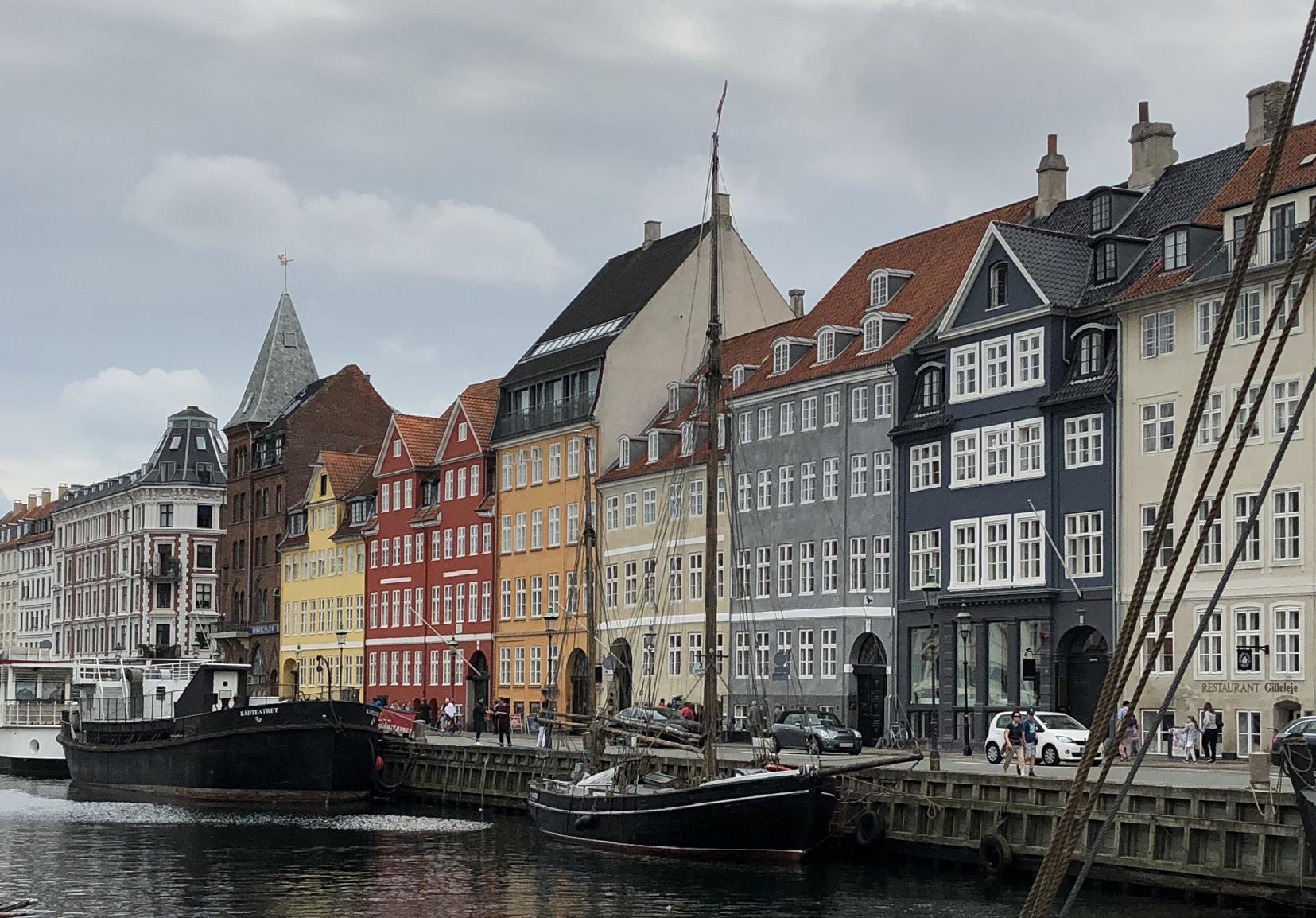 Dessert, Vietnam [Rose Lippman]
Copenhagen, Denmark [Morgan Hamre]
Dessert, Vietnam [Rose Lippman]
Copenhagen, Denmark [Morgan Hamre]
acter, discovers that she is part-human and part-elf, Dyveke and I share staggered gasps. We sit wrapped in blankets, shoulder to shoulder, and she quietly whispers an English narration to aid my “almost” knowledge of the Swedish voices and Danish subtitles. Candles on the windowsills and coffee table flicker against the TV-lit room. Carl-Johan, nestled to my side, squirms, his legs telling him to get up and run laps on the couch. We fill our bellies with tea, of course, and little bowls of candies from last weekend’s trip to southwest Sweden. Carl-Johan and I trade those we don’t like; I accept a licorice lizard for marshmallow teeth, and we are content. The taste of lakrids (licorice) dances circles on my tongue, sweet to bitter, sweet to sour, sweet to salty. We will repeat these steps like clockwork for the next three weeks.
Sprinkle flour on a surface fit for kneading and rolling, a stainless countertop or perhaps a plastic mat. Remove your dough from its bowl and roll out into a 14-inch x 20-inch rectangle using a floured rolling pin. Spread the cinnamon sugar mixture generously across the dough. More and more. Cover the whole thing until you know it will seep into the cracks of the pan while baking, and the sugary crystals will never come unstuck. Nothing needs to be perfect, but everything deserves to be full of that perfect sweetness.
Roll the sheet from the long edge into a fairly tight log. Cut the log into pinwheels, about 14, and place them in the prepared pans in a circular fashion, nestled close to each other. Cover the pans with cheesecloth or a kitchen towel and leave to rest for 30 minutes in the warmest spot in your kitchen.
On Saturday we don our winter coats and, wrapped tight in woolen scarves, head to the other side of the lake for a celebratory winter lunch. Pushing tables together, we plan the next few days: Carl-Johan’s Christmas Concert, cookie baking with Farmor and Farfar (grandma and grandpa). We
98 The Aleph
joke about the packing that I have barely started, and Nora suggests I bring her old suitcase with me as well so that I can smuggle back more Matador Mix (the best Haribo mix of all time) and Lakrids to the States. Jerrik surprises the kids with tickets to New York for spring holiday and we talk excitedly about the weekend we will all spend in Connecticut, tasting real “American food,” seeing black bears in the woods, and going to Target. Big things, stores like Target and infinite aisles of cereal, are non-existent in Denmark. Dyveke and Carl-Johan thrive on the idea of pushing each other around massive stores in shopping carts “like in the movies.” Everything I have here is so picturesque, so wonderful, and yet they can only dream of more. We share bowls of risalamande, creamy rice pudding mixed with sugar, whipped cream, and chopped almonds, decorated with bright, festive cherries on top.
Brush the rested buns with egg and bake for 13 minutes (or until oozing and golden). While baking, prepare the icing by mixing 1 cup of confectioners sugar with about 2 tablespoons of hot water (add water little by little, stopping when the icing ribbons and seeps slowly). The icing is the cherry on top, the first hint of sweetness in the first bite. It needn’t be perfect; in fact, it must be so imperfect that it drips everywhere and coats everything. Remove the buns from the oven and let cool for 5-10 minutes until just warm.
My bags are packed, and my tiny room is empty. Nora and Jerrik have gone in for work, and the kids are at school. Later, they’ll skip Wednesday’s swimming practice so that we can all pile into the car and drive to the airport. For now, I lock my little red bike at the Bagsværd Station and take the A-Tog into the city. I wander around Vestergade, the quaint side street home to my university. A week ago I took my last Humanitarian Law class, located in a big classroom with massive windows, sitting just above a fully functioning night club. I had looked out to the next street over, Strøget, the pedestrian shopping street, during a class on the fall of Yu-
a journal of global perspectives 99
goslavia to distract myself with Christmas decorations and distant church steeples. Today I am on that street, smelling roasted nuts, stopping by the Julemarked (Christmas market) along the way. I pass by the Royal Guard; dozens of toy soldiers clad in Christmas red in contrast to their usual deep blue. I walk by Tivoli one last time, and head up towards Sankt Peders Stræde, home to the oldest church in central Copenhagen, and the most wonderful bakery in the world. Sankt Peders Bageri, the motherland. Fresh onsdagssneglen sit steaming in the window display, surrounded by lovely pastries and breads that will never live up to the sheer beauty of their gooey, sugary counterpart.
On any other day, this treat is called a kanelsnegl, a cinnamon snail. But on Wednesdays, on this Wednesday, the country of Denmark agrees to make them special: Onsdagssneglen - Wednesday Snails - bigger, sweeter, warm, and gooey. I happily hand over the last of my Kroner in exchange for a warm bun the size of my head. Out in the cool December air, I sit at a little metal café table and watch the bikes pass. The snow-white icing, not yet set on the warm bun, pulls away from the paper bag. Onsdagssnegl against the skyline, grey clouds echoing against a row of color block houses. Tugging at the sticky, twisted end, the bun pulls apart in strands of melting buttery cinnamon sugar. The last first bite. Half-melted icing sticks to my nose, and I am content.
When the buns have cooled from hot to warm, pour the icing overtop. Allow it to settle into the crevices, to clump, to look perfectly excessive and absolutely delicious. Serve immediately and let memories of home flood in as spiced sugar coats your mouth. Be messy. Be happy. Savor often, and savor well.
-Sarah Walters
100 The Aleph
Appreciating Art, Edinburgh, Scotland [Kaitlin Hunt]
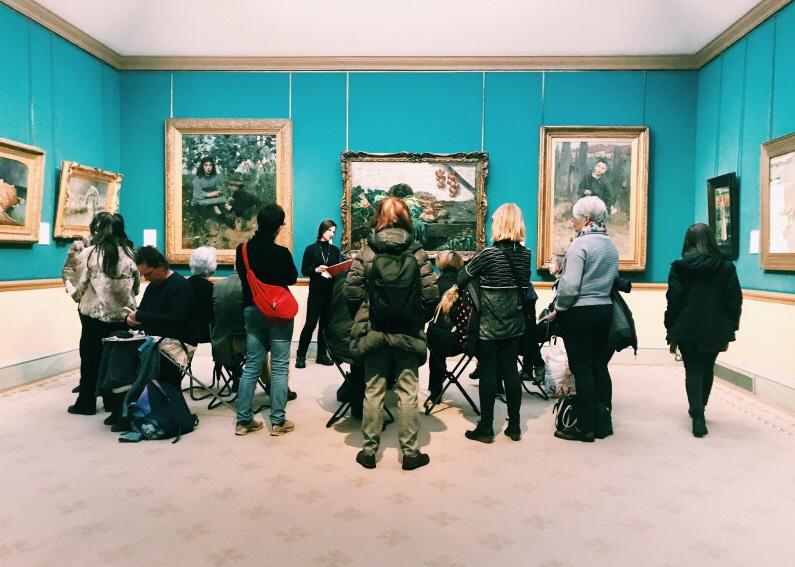
Wind Power, Copenhagen, Denmark [Brian Helms]
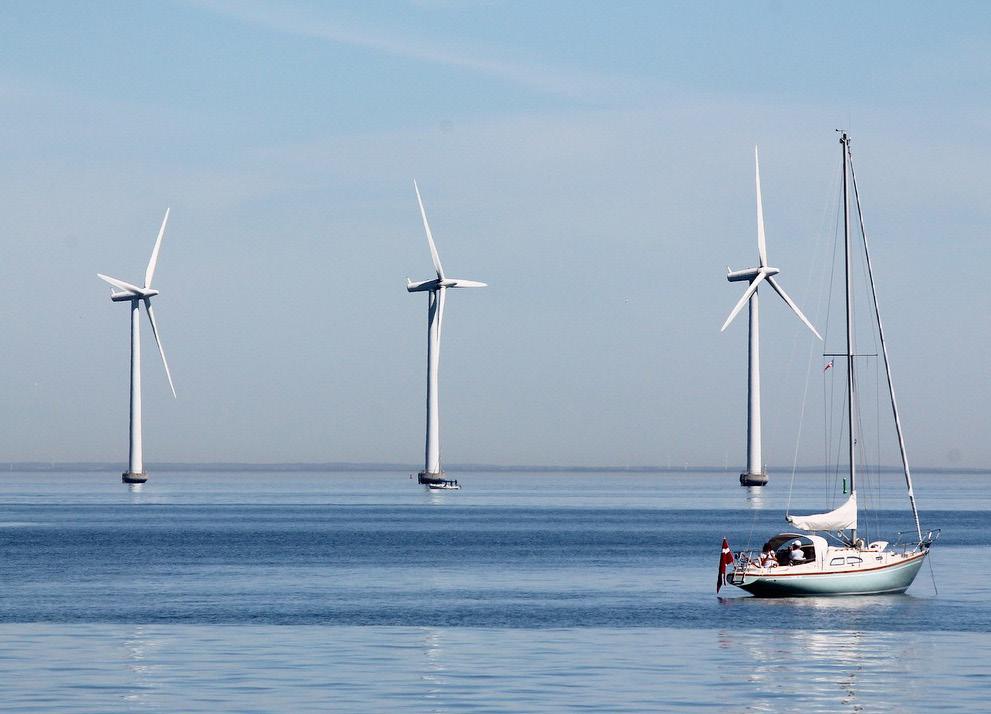
The Color Black is Vibrant in Berlin
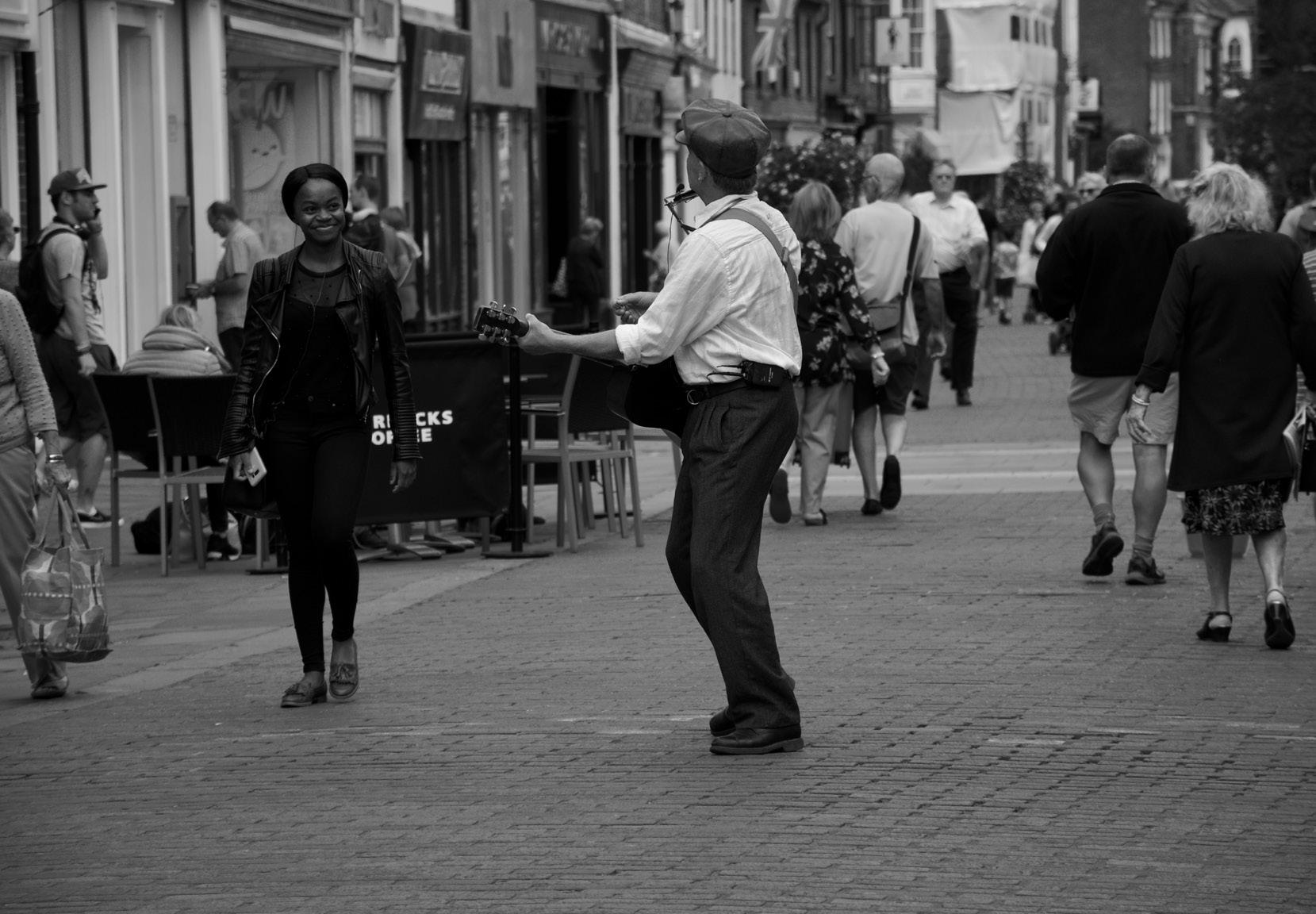
In the Fall of 2019, I flew to Berlin, Germany to study architecture for a semester - a trek that I never imagined I’d be able to undertake. I was terrified, focusing so intently on the degree of culture shock I would experience. How will I, a girl who’s lived in suburbia her whole life, survive in a city full of grunge and expressive people? I took the time to study Berlin before I left, googling things like, “what do Berliners wear” and, “what do Berliners do for fun” to ease my mind about what I was getting myself into. The thing about most places is that you really don’t know what a foreign culture is like until you delve into it; Berlin, however, is an enigma in and of itself so you still might not understand it if it smacked you in the face. I figured I could at least find some tips so that I could blend in as much as possible, but it’s just not that simple.
In the first few weeks of living and breathing Bmusicierlin, I started to notice some parallels between the various styles
Engagement V Musician at Chichester Market, Chichester, England [Elena Ludwig]
and personalities of the people. Black is in no matter where you go, but black is in-in when you’re referring to Berliner style. It’s a fashion staple there and you’d think it would get boring after a while, seeing so many people wearing blackon-black garb. Let me tell you: it’s not. There’s nothing boring about the way these all-black outfits have so much expression and depth; it’s almost like there’s some secret handbook that the Berliners use to perfect the all-black look. I wouldn’t be surprised, either, because “secret keeping” is truly Berlin’s best-kept secret. The clubs, the rooftop restaurants, the parks, are all part of this hypothetical hierarchy of worthiness to disclose to the public. Although there likely isn’t a physical handbook of “How to Dress Like You Are a Permanent Resident of Berlin”, there is absolutely a covert aspect of the culture that these people keep near and dear to them so that it isn’t uprooted by onlookers.
As an art and architecture student, I took a class called Urban Landscape that forced us to examine certain things around the city with a more focused lens. We looked at skylines, walking paths, even the construction of various doors on apartment buildings. Our final project asked us to choose what we found most important about the culture of the city - something we noticed all on our own. Of course, I immediately decided that I would focus on what compelled me all along: the fashion statements and the little details that make a Berliner a Berliner.
I took pictures of everything I saw: stickers on telephone poles, hairstyles, graffiti, bikes, and so many other random things that I saw repetitively. Pick one topic and you can find 10 examples on a single block. What I started to realize is that fashion isn’t the only thing that is so coveted here; there is a collection of quirks that you’d truly have to adopt if you wanted to blend in. I collaged the images that I took to create Frankenstein-like compilations of multiple entities and tried to make them as recognizable as possible in these strange forms. My ultimate goal was to create
a journal of global perspectives 103
a poster to spotlight the most appreciable aspects of a Berliner’s everyday life, sort of like a children’s poster that displays all of the most well-known dinosaurs so they can learn what each looks like.
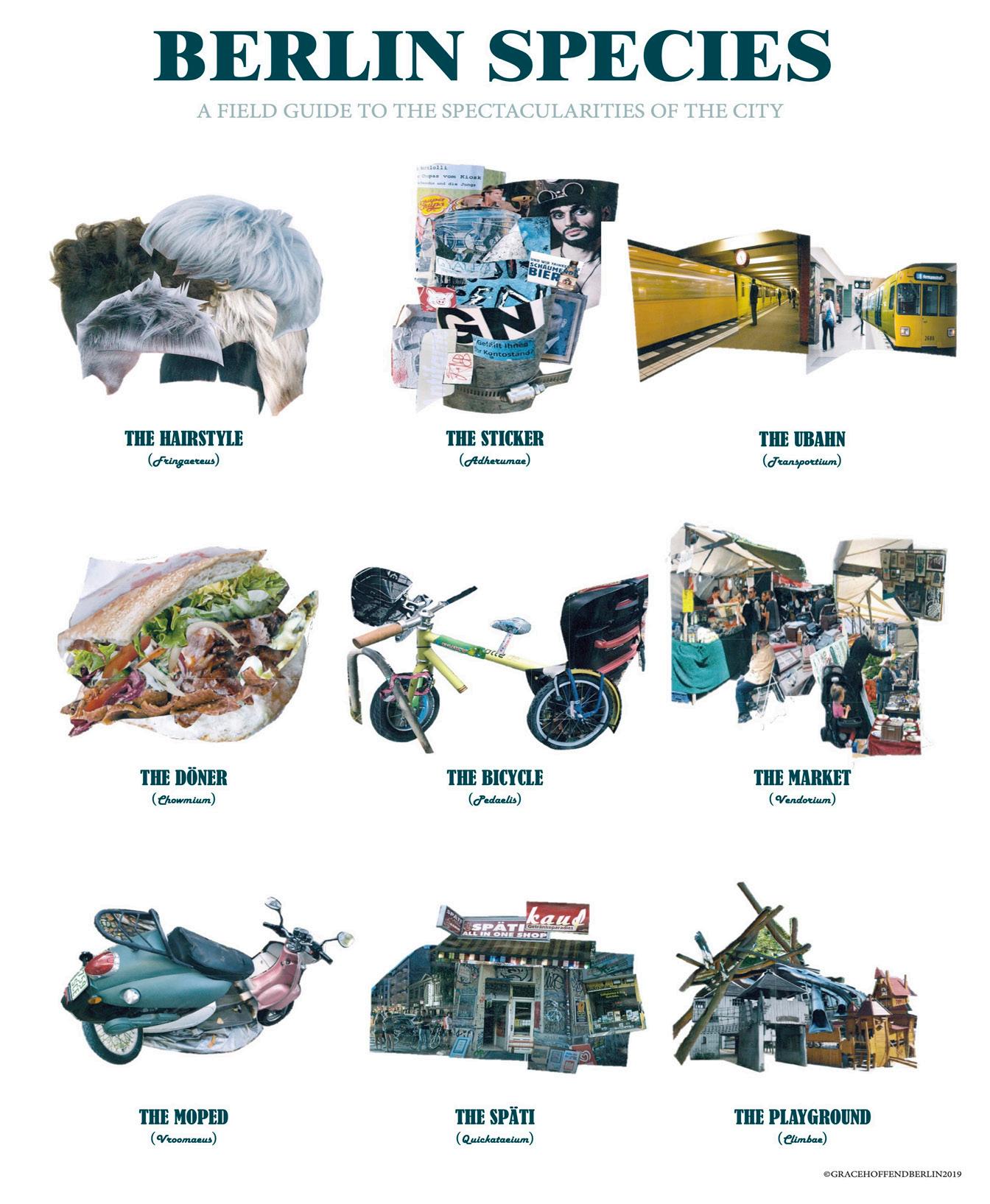
104 The Aleph
This project taught me a lot of things, but mainly that as unpredictable as Berlin might seem, it’s actually extremely predictable. Virtually everyone owns a bike and the döner is the favorite snack of the vast majority. And I would guess about two-thirds of the female population has one of the five most common edgy hairstyles. Although Berliners all seem to have and enjoy the same few things, it’s not all black and white due to the expressive nature of the culture: I’ve learned that the people of Berlin express themselves in their own way.
With all this being said, traveling to Berlin is really an incredible learning experience and you can’t just google these things (remember, they’re in the secret handbook)… you just have to go and see it yourself!
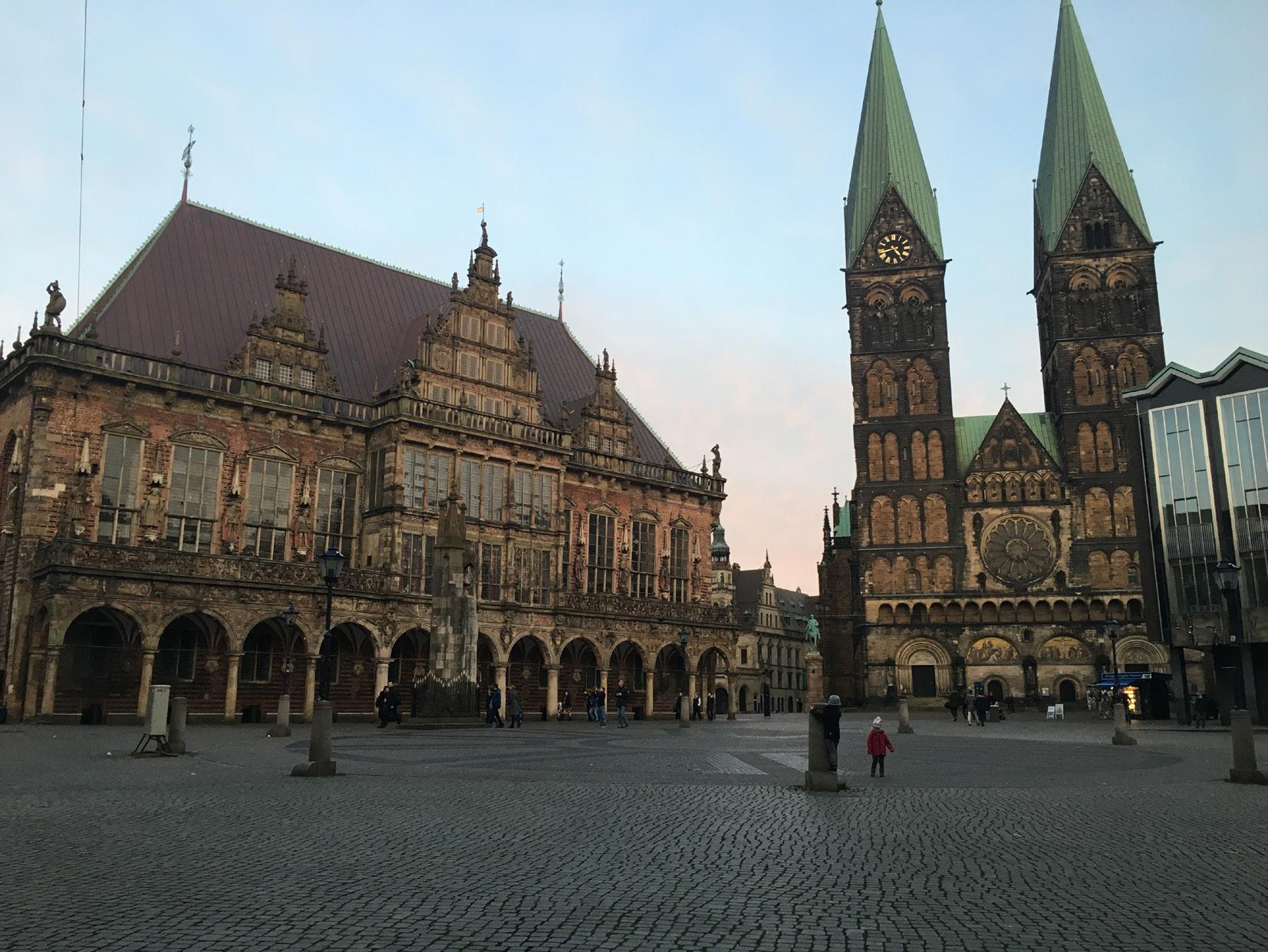 -Grace Hoffend
-Grace Hoffend
Christmas Morning in Bremen, Germany [Cynthia Kellett]
What Spending an Afternoon with a Local Athenian Taught Me…
There is a cat that tries to sneak into the front entrance of my apartment every time I come home. I end my days late at night so I never notice this black mass scurry past me, following the light, warm glow inside my Athens apartment. I long to be like this cat because he can simply jump over fences and roam streets indefinitely, enjoying a freedom that I also desire to experience.
Of course, sometimes it is easier to spend time with the people you have been selected to room with. This is fine and my roommates are lovely, but I recently have been craving interactions with Athenians beyond simple “hellos” and “goodbyes” at supermarkets.
And sometimes the best moments happen when you push yourself to do things alone…
So, this weekend I decided to go to a coffee shop with a local Athenian I had befriended a few days before. We agreed to first meet in a Parisian-style café in Pangrati, books in hand, ready to discuss our favorite literature. We also spoke about our families, the lamentable state of the humanities, and why Greece’s Olympic baseball team might have played a role in the country’s economic crisis (a joke, of course).
What then followed was a quiet adventure through the neighborhood of Exarcheia, window-shopping our way along storefronts filled with overflowing stacks of books.
We began by taking the metro to Exarcheia. I told my friend that I usually just walk to places because I am still unfamiliar with the Athens’ underground train system. He told me not to worry and to just follow him. All along this station’s passageways, there are mini-galleries displaying the ancient ruins uncovered while it was being built. Like an over-
106 The Aleph
Engagement VI
enthused puppy, I wanted to stop at every glass window, but my friend told me that I should not idolize ancient Greece too much since “The people you see in Greece now…well, they had nothing to do with this. We haven’t done anything in millenia…”
“This isn’t true,” I told him, “just look at Exarcheia. It looks like revolutions happen here!”
He scoffed and continued out of the station to one of the many bookstores in the area. We ended up on the bottom floor of one store, trying to find Greek translations of novels I cherish and most of which he also knew. However, to my surprise, he has never read the Odyssey, Antigone, Lysistrata… I had expected my friend to fit my checklist of what a ‘typical’ Greek should be like. But what he had said about idolizing Greece now made sense; while immersing yourself in ancient Greek culture, it is necessary to understand the country’s history, and we should also try to free ourselves from a history that is distant from our lives now.
While my friend acknowledges Greece’s contributions to civilization, he realizes how much-vaunted history can lead to passivity. He wants to direct films, move to Germany, resist the ultra-nationalists…and none of this will happen if he clings to nostalgia for a distant past. I, too, do not want to idolize a history I never knew. I want to understand Greece as it stands now…and to roam the streets with feline friends…
-Barbara Kasomenakis
a journal of global perspectives 107
Horse in Field, Ireland [Margaret McKean]
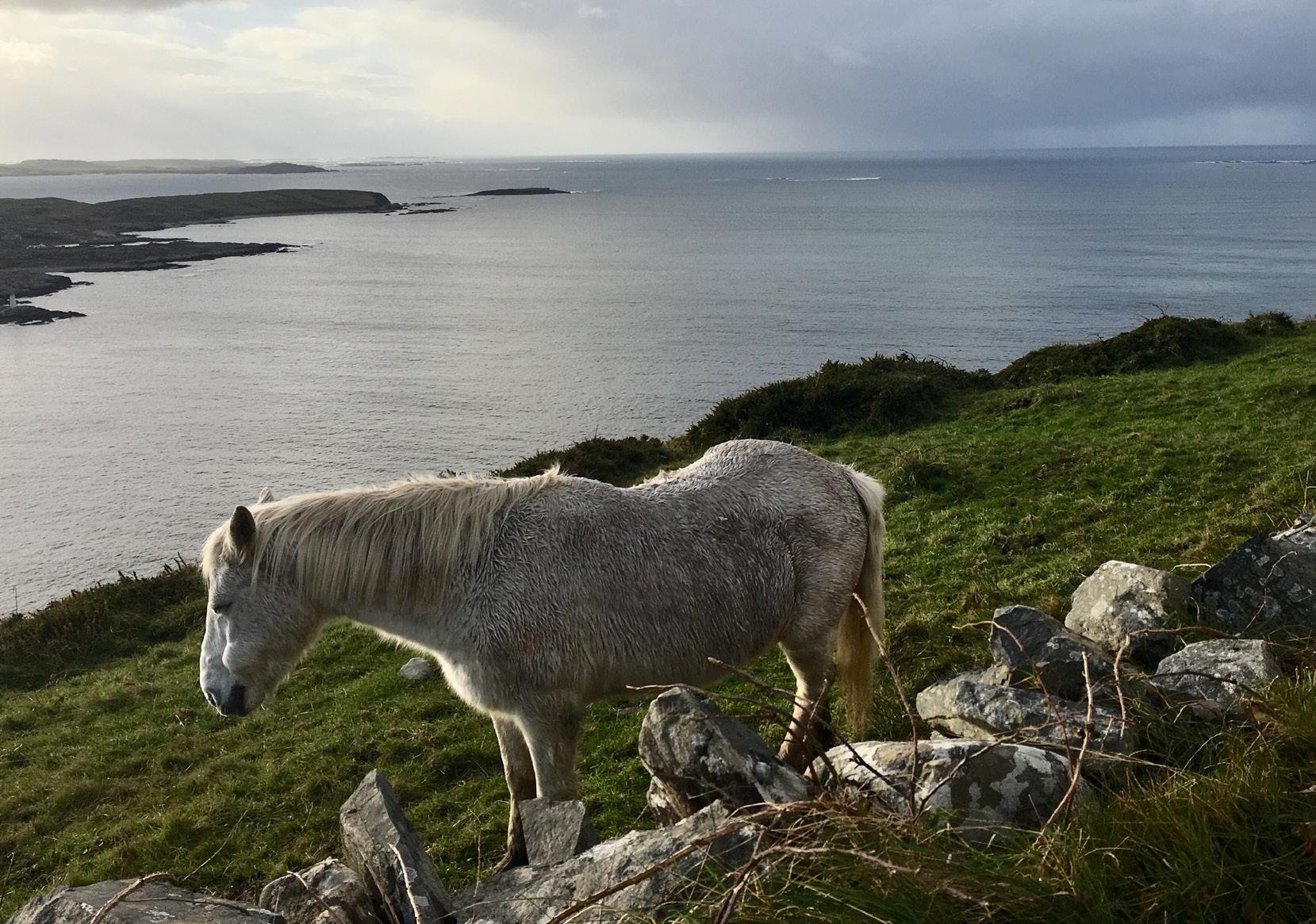
A Ferry Framed by a Rainbow, Cleggan Bay, Ireland [Madeline Conroy]
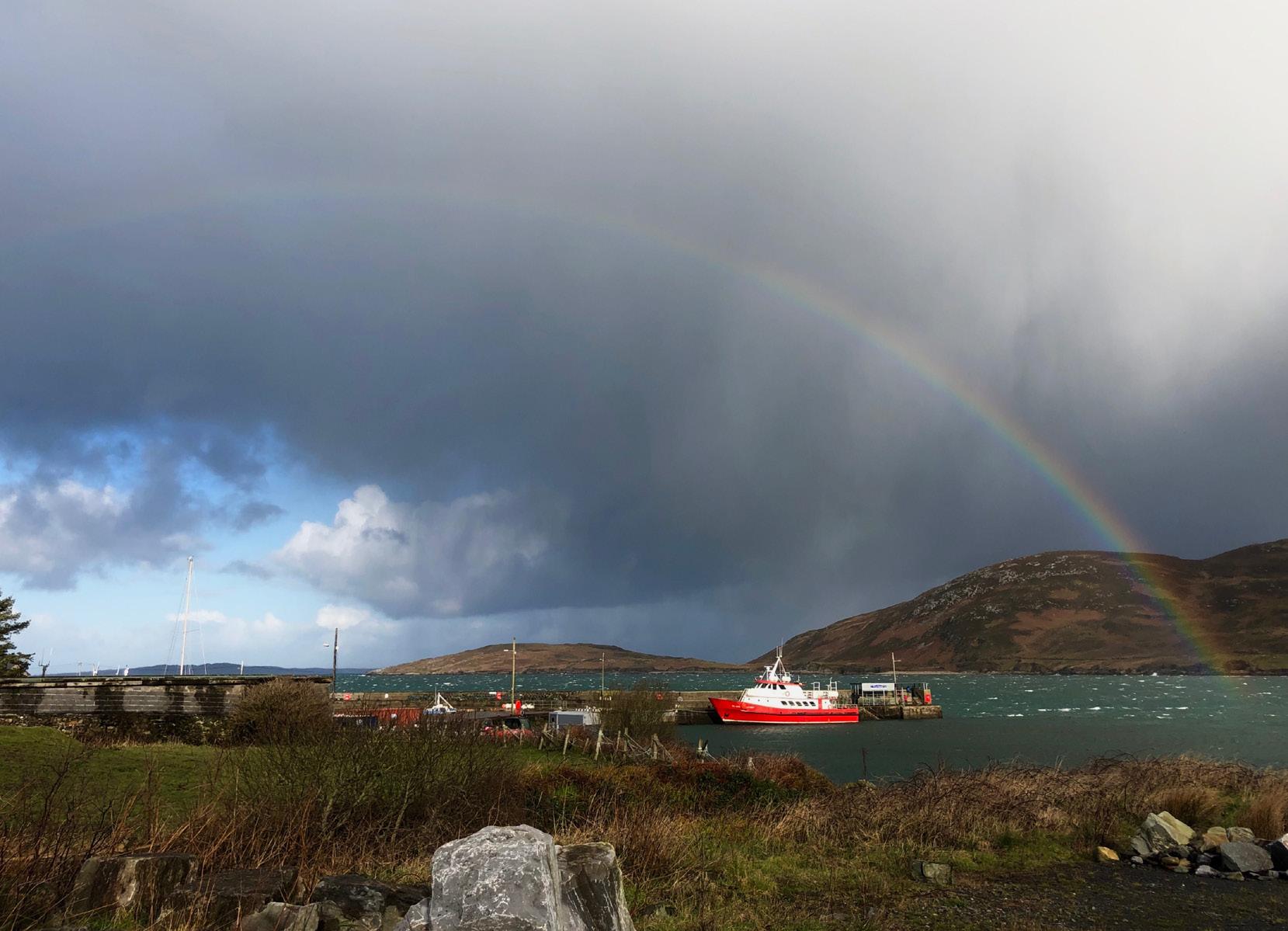
Quays
Home, familiar, safe. Why would anyone leave? Green trees, salt air, fishing ships coming and going.
Landed in a foreign land. Feeling alone even though I’m surrounded; none of them I know - nor do they know me. Rugged, harsh landscape surrounds us, sharp rocks line the narrow roads waiting for their next victims.
The smell of peat mixes with fresh scones intertwining and weaving its way around the gaps of the cobblestone underfoot. Twinkling fairy lights line the street above as we make our way blearily home.
Wood crackles in the fireplace as tepid black liquid slides down our throats warming us from the inside out.
The sideways rain on a Sunday speckles across glasses and hides the muted blue, green, yellow and one vibrant red house by the bay.
Every weekend somewhere new. Jetted off to be stranded by a tram, see intricate mosaics, travel in solitude, get fined, and accidentally steal.
Rainy nights and sunny days all spent together in the musty stone-walled pubs, telling stories and listening to music.
Home, familiar, safe. Green trees, salt air, fishing ships coming and going. Why would anyone leave?
-Molly Englert
a journal of global perspectives 109 Verse & Vision I
Left Her Home, Gained Her Sight
To be wide-eyed but fail to see, Is not much of a mystery. For when her eyes were set on old, familiar territories, To see, became to watch and stare, No curious heart, no mind aware.
And shortly to her great despair, She left her home, to lands unknown, But soon enough she learned to see, The world, her new discovery. To see, became to long and feel, To close her eyes and seek the real.
In search, she found a world ablaze, With flames of different hues and shades, In it, she learned to love, find thrill, In what once seemed so strange, unreal. In her, it set a spark alight, And made her path, once dim, so bright. By venturing out into the night, She left her home and gained her sight.
-Davida Eyam-Ozung
110 The Aleph
Verse & Vision II
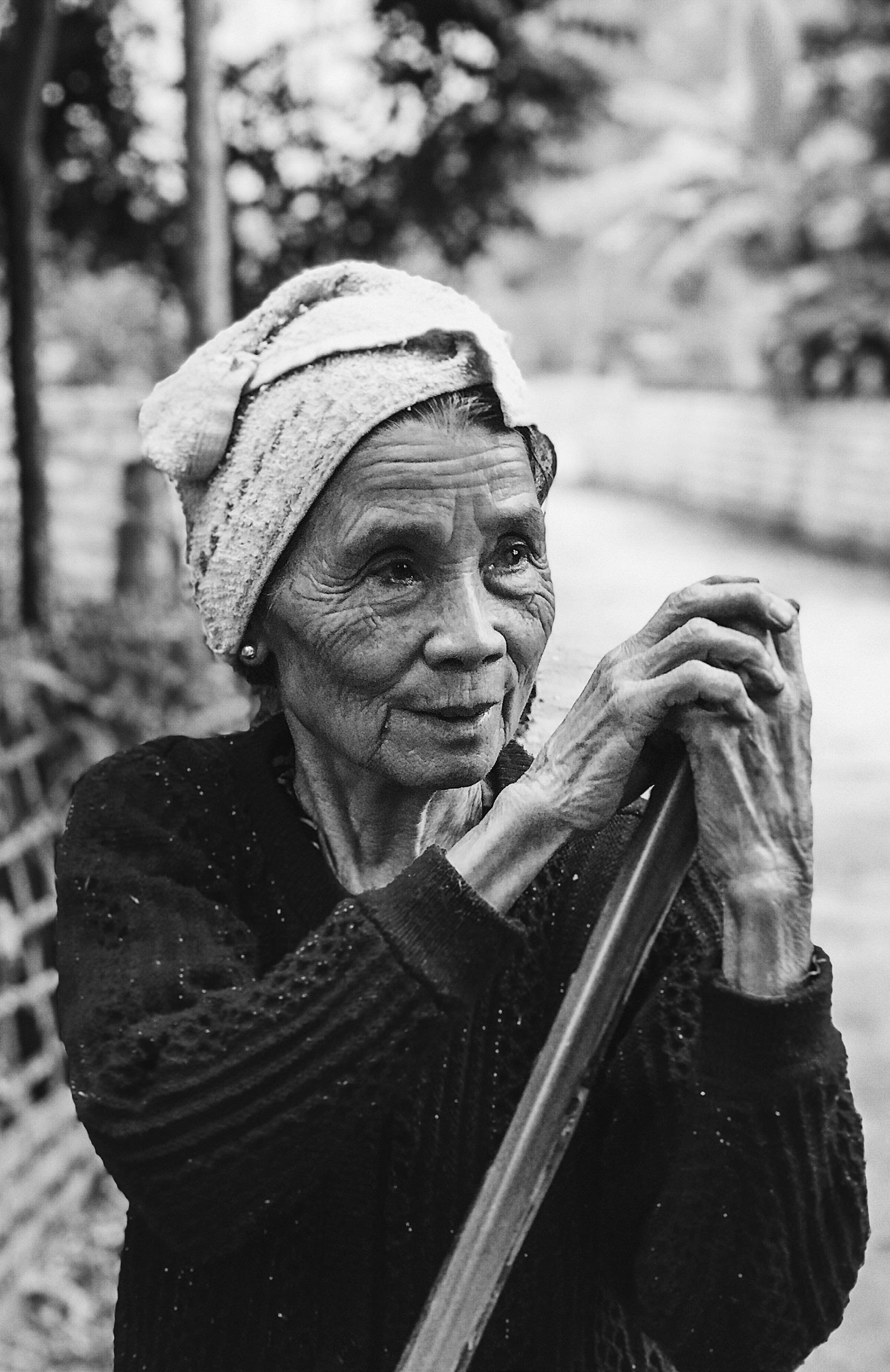
Portrait of Woman, Vietnam [Kristina Worts]
LGB(t)Q+ in Berlin
pronouns. he, she, they, them, it? how do we translate this? but better yet, how can a city and a culture and a language call itself the pride and joy of LGBTQ, when they don’t even have a word for the T.

Verse & Vision III
-Gianna Gonzalez
Neuschwanstein Castle, Bavaria, Germany [Cynthia Kellett]

Rooftop View of the Bundestag, Berlin, Germany [Cynthia Kellett]
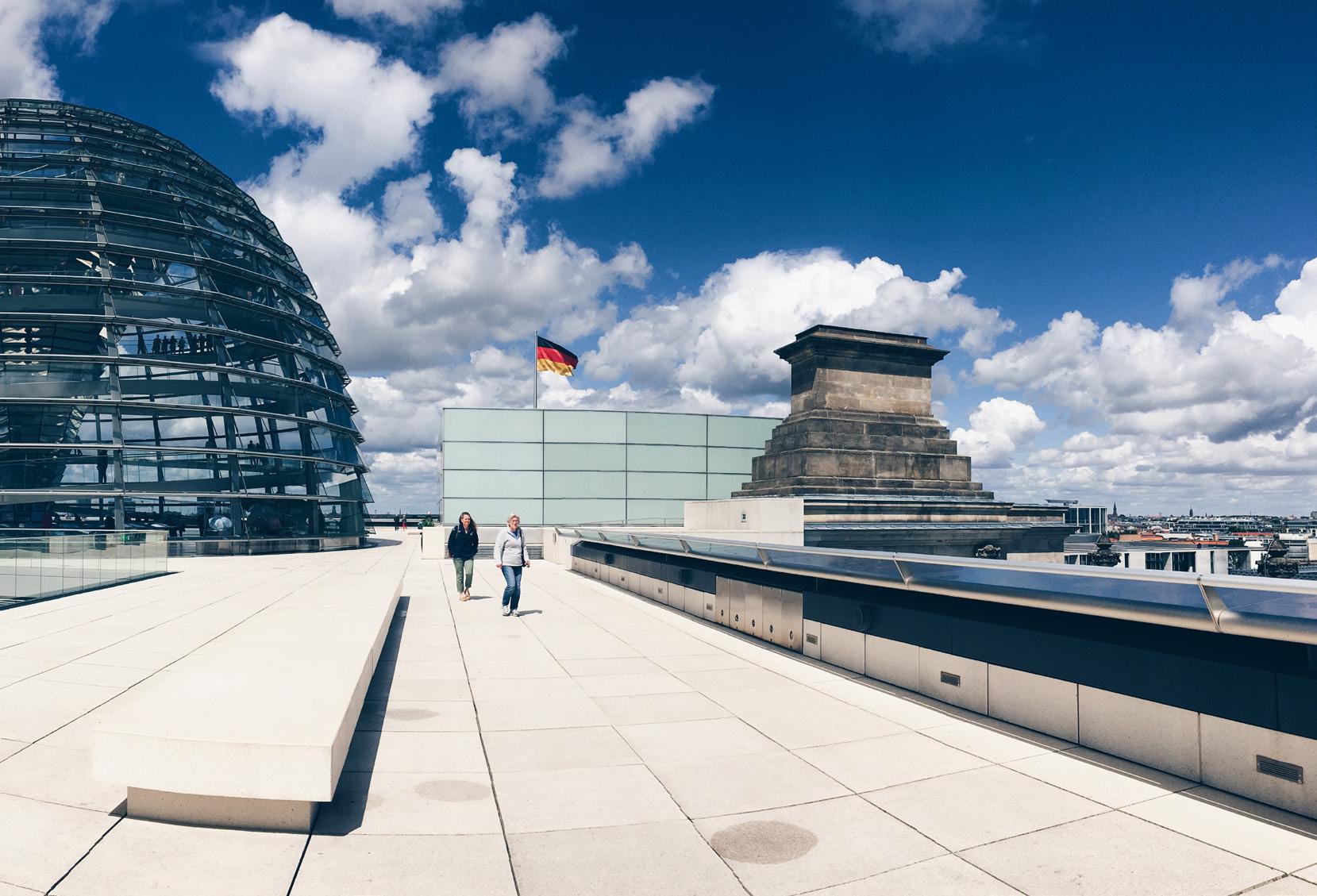
We Don’t Need a Taxi!
My first weekend abroad in Ecuador was a free weekend. We were on a faculty-led program, so much of our time was filled, but this first weekend was our time and our professors encouraged us to explore the city of Quito that we would call home for the next 8 weeks before moving to Peru. As my friends and I had been exploring the city all week, we decided to take our host professor’s advice and visit some natural hot springs called Papallacta. We were not well-versed in the language, as we had only taken one semester of beginner Spanish before embarking on this semester-long journey. However, we felt confident that amongst the five of us, we could pull together enough to get ourselves there and back.
We met early the following morning at our school and walked down the street to get a taxi, which would take us to the bus station. This was about 40 minutes south of where we lived. We didn’t want to take two taxis for only five people, so we crammed ourselves and all our backpacks into a very small car, convincing the driver that we were comfortable, and we began our journey. When we arrived at the station, we unloaded ourselves from the cab, and entered the massive building.
This was the main bus station in Quito and we were immediately overwhelmed by the hustle and bustle. People were moving all around, coming up to us trying to sell things, and ticket vendors were yelling from their booths, each trying to lure us in with the best prices and non-stop service to our destination. We began reading signs, searching for the bus our professor told us to take, until we found a row of booths for buses going to Papallacta. We approached a counter, using the little Spanish we knew, haggled the price of the tickets and made our way to the bus. We were there fairly early, so we were able to sit together and get comfortable for the lengthy ride we were about to take.
114 The Aleph
Lessons 1
The bus ride was about two and a half hours total. We expected a trip with very few stops but we ended up stopping multiple times in every town we went through, picking up passengers, luggage, and vendors, who would ride from one stop to the next trying to sell headphones and snacks. Not knowing where we were, or how far we were from our destination, we told the bus driver numerous times where we were headed in the hope he would inform us when we arrived at our stop. We soon left the smaller cities surrounding Quito and made our way up into the mountains. As we stared out the windows enjoying the breathtaking views, we began to grow nervous as we had been on the bus for over two hours. Suddenly, our bus driver slammed on the brakes at the top of a hill and shouted, “Papallacta!” This was our cue, so we hurriedly grabbed our belongings and made our way off the bus. The man kindly told us that the last bus back to Quito left at 6:00pm from this same stop, and that our final destination was just around the corner. We thanked him, and started our walk.
As we went around the corner, we saw a sign that read “Papallacta—2.7 km”. Assuming that this meant we would
On the Road to Papallacta, Ecuador [Elizabeth Anderson]

only have to walk for a mile or so, and we had just been sitting on a cramped bus for nearly three hours, we decided we could use the exercise. We began our walk and many taxis passed by. They would slow down to offer us a ride, but we repeatedly insisted that we did not need a taxi and continued the hike. The road was windy, and seemed to be straight uphill the entire time.
Through the fog, we passed small houses, shops, and a number of farms, admiring the view when the clouds were high enough for us to see. We began to question whether we were heading in the right direction, as signs were few and far between, until we ran into a row of small restaurants. If we learned anything during our first week, it was that small restaurants like this always surrounded tourist attractions, assuring us we were getting closer. Our professor told us that we would pass a number of smaller, public hot springs before we made it to our final destination at the end of the road. We were losing energy quickly, as this hike was at 11,000 feet of elevation, which we had not adjusted to yet. Out of breath and ready for lunch, we finally made it to Papallacta.
We enjoyed lunch in a restaurant that surrounded the hot springs before purchasing tickets and enjoying a (well-deserved) relaxing afternoon. As we floated in the water and admired the gorgeous natural beauty surrounding us, we laughed at our earlier remarks and persistence in trekking up this mountain, rather than taking the easy way out and catching a ride to the top.
And this was not a lesson learned; “We don’t need a taxi!” became the catch phrase of our entire experience abroad, as we frequently chose to climb up steep hills to save a couple of dollars and get our steps in for the day.
- Elizabeth Anderson
116 The Aleph
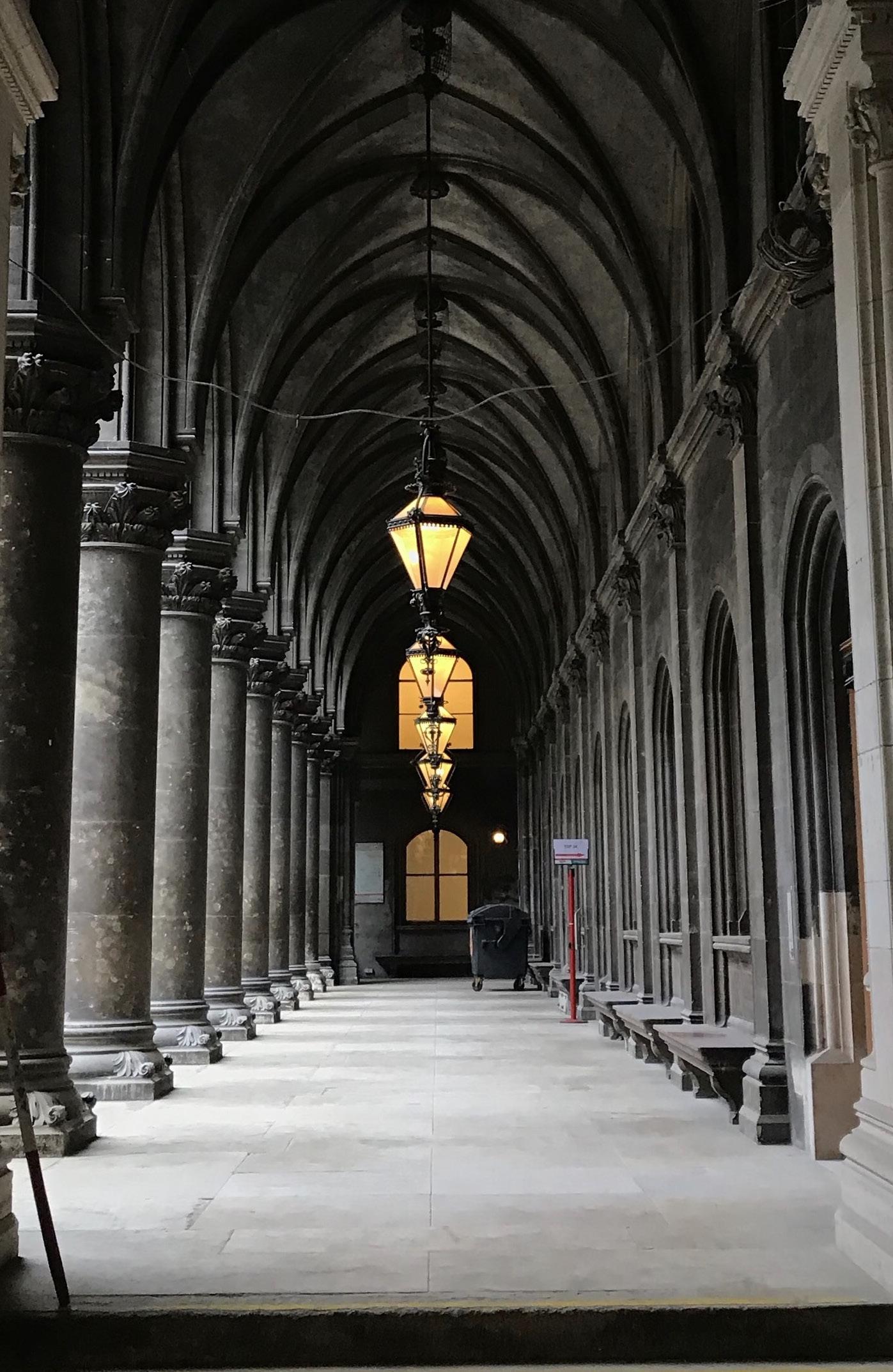 Hallway of Vienna City Hall, Vienna, Austria [Alex Shaw]
Hallway of Vienna City Hall, Vienna, Austria [Alex Shaw]
Home Is Where the Hygge Is
My host sister Ida had an assignment for one of her 4thgrade classes to take a photo that represents the answer to the question: what is home? For her photo, she chose to display a group of items she found around the house including photos, some stuffed animals, her keys, a box with jewelry and some craft supplies, a book about dance, and yes, the TV remote. After collecting all the items, she asked her mom and me to be in the photo with her, so we gathered around the table and used the selfie stick to capture Ida’s version of home. Mette, my host mom, asked Ida if she had done the same thing at her dad’s house this weekend, but she responded no. It’s interesting to me that she didn’t consider doing it at her dad’s house where she spends part of every other week. To her, home is here with her mom.
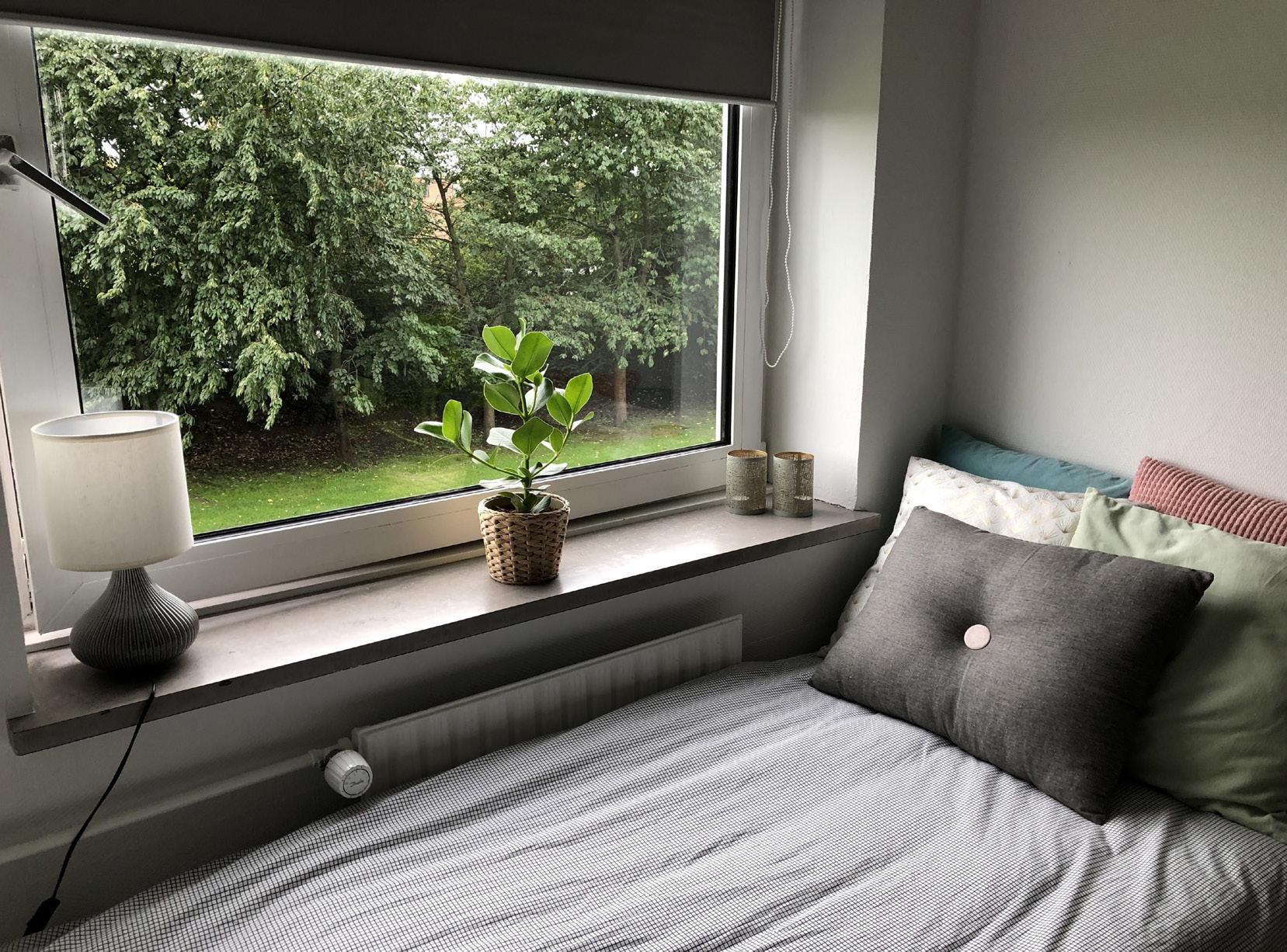
Lessons II
My Room, Copenhagen, Denmark [Morgan Hamre]
Ida’s assignment prompted me to think about what makes something home. Is it the place where you keep all your things? Or is it the place where you spend most of your time? One of my friends considers herself at home when she is at college, but I’ve never felt this way. Even though we both spend eight months of the year living there, she considers it home and I don’t. Maybe the way I feel about school is the way Ida feels about her dad’s house: we enjoy being there and we spend a lot of time there, but it doesn’t feel like home.
The first thing that comes to mind when I think of home is Maine. There’s something about being in Maine that makes me feel at home. Home, to me, is eating dinner around the dining room table. It’s sitting on the couch in the living room. It’s curling up in bed. It’s baking cookies in the kitchen. Home is more than a place. A home is a place that evokes a feeling.
There is a word in Danish that I think perfectly represents what home is: hygge (hoo-gə). There’s no word in English that really captures what it means, but it loosely translates to a feeling of coziness, comfort, wellness, and contentment. Hygge is not something you can create or something you can buy; rather, it’s a feeling that comes from enjoying a moment. Home is hygge.
A house is a place where you live. A home is where you feel a sense of comfort and belonging. Mette and Ida opened up their house to me and it became my home.
-Morgan Hamre
a journal of global perspectives 119
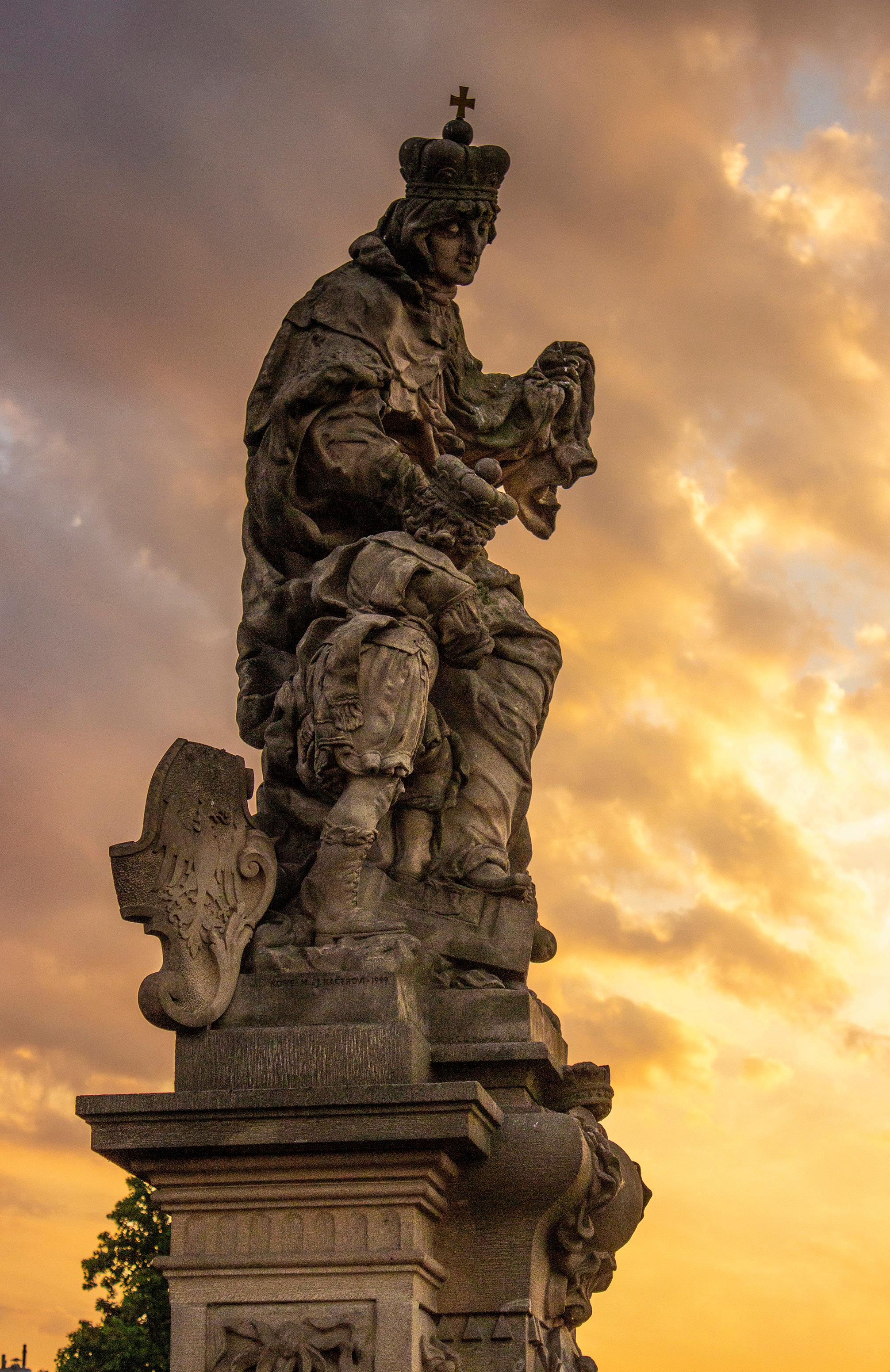 St. Ludmila on Charles Bridge, Prague, Czech Republic [Tanner Poisson]
St. Ludmila on Charles Bridge, Prague, Czech Republic [Tanner Poisson]
Walking on Ice
Walking down Lenin Street in a small Siberian city on November 9th, I can’t imagine it would be too difficult to pick out which poor pedestrians are the foreigners and which (even poorer) pedestrians are local. Of course, I would be the foreigner in this scenario, slipping a little bit every few feet despite consciously placing each foot ahead of the other with extreme trepidation. The Russians, however, seemed unaware of the ice at all, continuing to stroll by with the greatest of nonchalance. Every once in a while, I’d fall flat on the ground and they’d simply walk by, without even a glance back to see if I had broken my spine.
Barnaul is a rather modern city, with many more potholes and street lamps than there are great white birch trees or bears. I have also noticed that the city takes very little interest in removing the ice from most of its sidewalks. Every so often you may see a sidewalk cleaner come by in a pathetic attempt to brush a bit of the slush away. Not once have I seen any salt being put down (probably because it

Lessons III
Road Sign, Barnaul, Russia [Alexandra Curtis]
rarely gets warm enough for salt to even work properly), but also not once have I seen a Russian slip while walking. If this were America, there would be an uproar from the elderly community, concerned about safety. But this is not the case in Russia. No, in Barnaul the babushki simply wrap their head scarves up a little bit tighter, don their fur coats, pull out their walking canes, and take to the streets.
I was thinking about this a lot as I was walking (and slipping), about how easy this all seems to everybody else but me. But then it came to me that all these people, even the little boy walking by in a full snowsuit with his mother’s mitten in hand, have been learning to navigate this landscape since the day they first could walk. The babushki know this better than anyone; time has given them the knowledge of where to step to keep going. For them, it’s about adapting to their surroundings and a need to survive. It was November and while the Russian winter was just starting, I found myself a little alarmed by all the snow and wind - and back at home I knew my dad was still blowing the leaves off the lawn every Sunday afternoon.
It’s a completely different terrain from what I know and from what I think most people would even consider hospitable. And yet, the people here (not just a few but 200,000 in the city of Barnaul alone) thrive. They not only walk on ice, but they do it with style, too. Those who have been to Russia know that even the worst snow and ice could not stop a Russian woman from wearing her heels - and to my great surprise, that principle held true even in the depths of the Siberian taiga. Women strut in chic stiletto heels, with little nails hidden secretly underneath for traction, and wear lush fur coats that go down past their knees, costing more than a month’s salary (at the very least). Coats that would look laughably posh on an American street just seem so natural in Russia, for some reason. And these coats are designed not just to look good, but to absorb heat like a sponge. The result? A natural survival technique that
122 The Aleph
St. Basil’s Cathedral, Moscow, Russia [Emma Bilton]
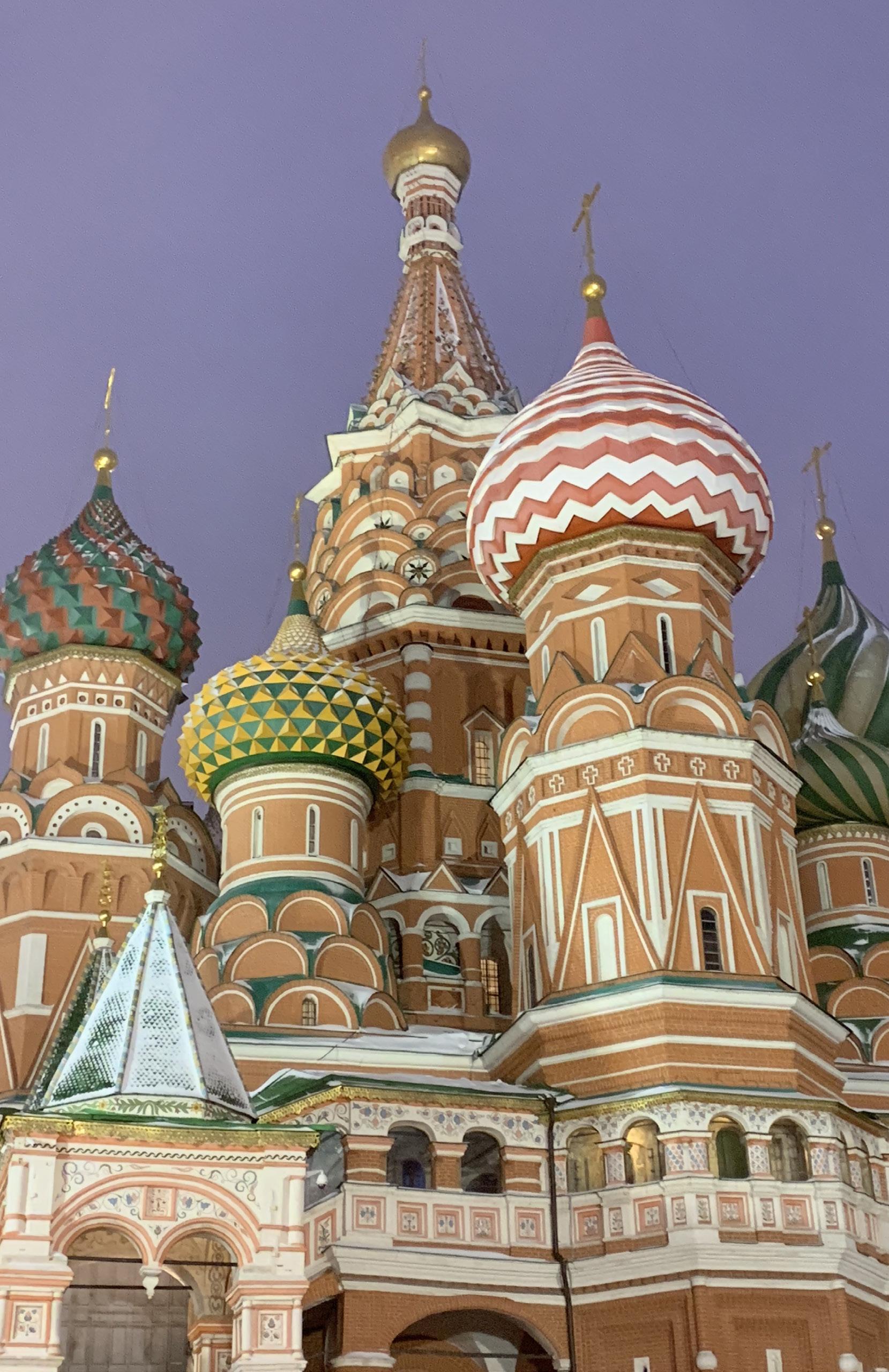
resists the tides of social activism and fashion, because warmth will always be in fashion in Russia.

I used to scoff at the big fur coats and the slippery ice, but somehow by the end of my trip I found myself gripping the ice a bit better and with a secret desire for my own luxurious coat. No longer did I take each step on the ice with trepidation, but with a sense of confidence.
Barnaul got frostier and icier as November turned to December and the real winter began to settle in. The days became blurred by snow flurries and passed by one after the other. As I was packing up my apartment to come home, where there had been no snow yet, the thought of walking on dry, solid land once more seemed passé, or possibly too good to be true. I left my time in Barnaul feeling like maybe the winter would never end, that the city would stay frozen just as it had been forever, but knowing that I myself, despite the frost and fumble, managed to grow.
Windmills in Kinderdijk, Netherlands [Gabriel Pietrorazio]
The changes I experienced weren’t things I felt immediately or intensely. In fact, a lot of the time in Barnaul I felt frustrated. I was hoping to feel the kind of life-changing study abroad experience everyone talks about, when in actuality it just felt like I was falling a lot. Both literally and metaphorically, I fell constantly while trying to make my way through the streets, to converse, and to blend in with the rest of Russia. I didn’t always have the best footing, and frequently words came tumbling out of my mouth in all the wrong order and in all the wrong ways. I felt each fall severely at first but, eventually, I got used to the blows.
It wasn’t until I got to the airport in New York that I realized the immensity of the armor I’d put on. I had to handle a situation with missing baggage and as I approached a TSA officer the first thought in my head was, “Oh god, how am I going to explain this in Russian…?” But then it clicked: I didn’t have to. This man spoke English and this was the easiest thing in the world to do. I used to cringe at asking for help and talking to strangers, often choosing to take the wrong path on my own rather than ask for guidance. But
 Freezing Night in the Arctic Circle, Troms, Norway [Joshua Wasserman]
Freezing Night in the Arctic Circle, Troms, Norway [Joshua Wasserman]
now the idea of being able to ask for help did not startle me - rather, it calmed me so completely.
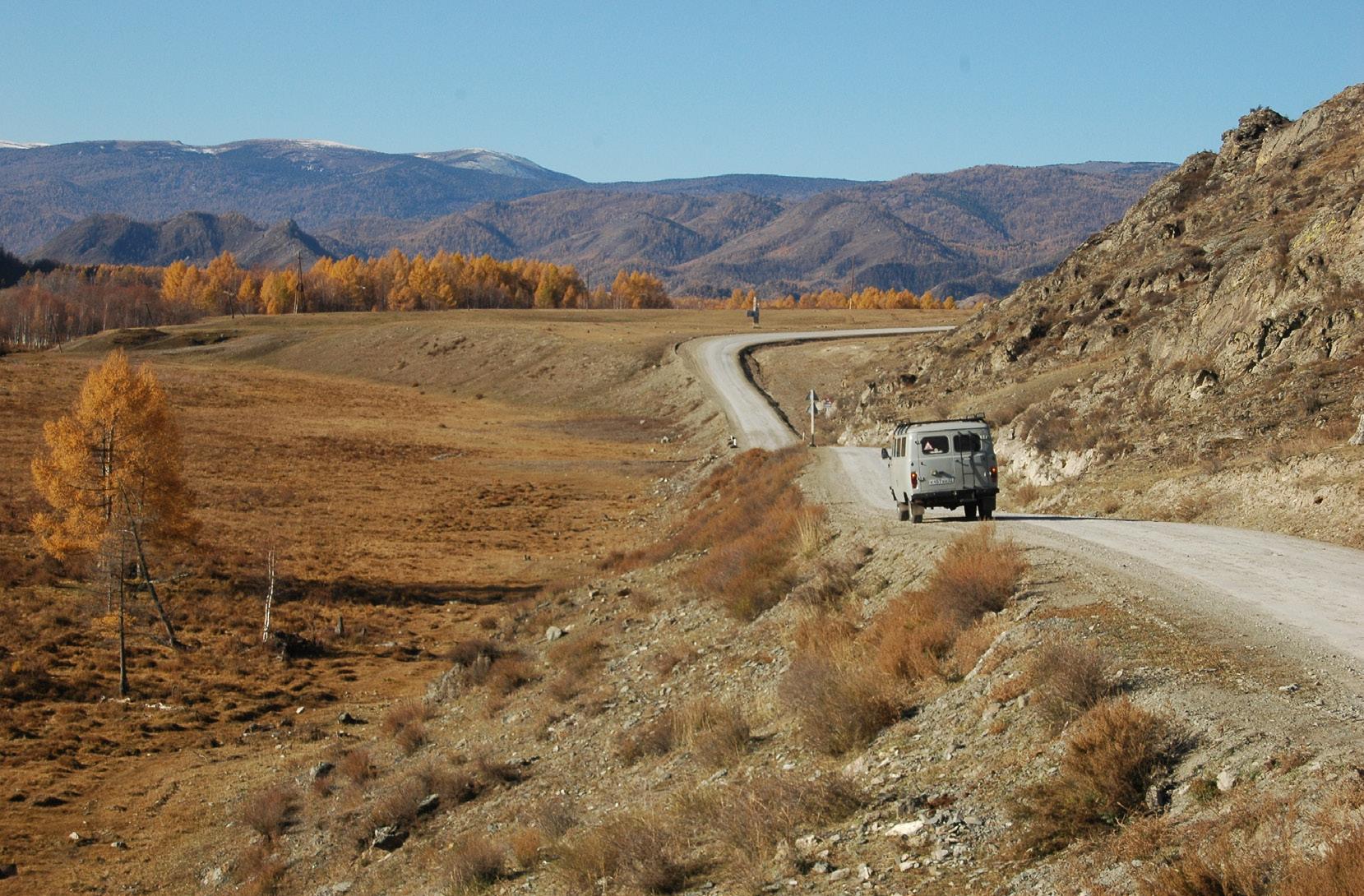
Russia humbled me in this way because it forced me to need help. I had spent the last few months asking for help with the most basic of tasks, because I had the linguistic ability of a 4-year-old. This wasn’t a situation I could just tough my way out of and I knew that I had people who were happy to help me get by; I had to give up my independent fight for perfection and it was so humbling to be free of it at last. After falling enough times, I had to just accept the fact that I sounded stupid and that I looked really foolish, but I was learning so much. And not just in the ways I had initially expected; of course, my Russian skills improved, but my people skills and resilience developed in ways I didn’t expect. And I learned to walk on ice and tolerate the cold - not skills one would put on a resume, but ones important to me nonetheless.
-Alexandra Curtis
Altai Mountains, Russia [Alexandra Curtis]
The Window
I keep thinking about the window in my grandma’s front door. There isn’t a very specific or eventful memory behind it, yet it’s often on my mind. It was early evening, about 4:00pm, when I was leaving her house with my mom and sister. I’m not sure how old I was (seven, eight, eleven?) but I was certainly a child. I believe it was December, rapidly approaching the winter solstice, so the outside world was that particular shade of blue that comes fast on the heels of twilight. Her front door featured three square windows lined up vertically, the middle one at my height. As if it’s right in front of me now, I see that square of blue set against the honey-colored door encompassed by the soothing, golden light from inside her home.
In Professor Anna Creadick’s class Reading the Irish Environment, we often discuss how we view the world around us and how we define things like place, nature, and space. My grandma’s window is one of those spaces that I just can’t get out of my head, and for whatever reason, it holds so much meaning to me. Right now I’m studying abroad in Galway, Ireland. I wouldn’t call myself homesick, but there are certain images, places, memories that sometimes pile up in my head, layering over each other and forcing me out of this context. It’s not abnormal for me to have half a mind in the past and half in the future with no part left for the present. But as it stands, it’s not the best headspace for studying abroad, when you want to be in the moment and experiencing all this place has to offer you.
But how do I ground myself in the present? Not only do I have these half-baked memories of place and time swirling around in my head, but I’m learning so much about Irish history and historical sites that the past is too chaotic to ignore. And it’s not like the future is kept at arm’s length, either; I can’t just forget about my need for internship
a journal of global perspectives 127
Lessons IV
experience, money, and housing before I land in the US. All of those issues loom like one of those ultra-dramatic Gothic-style storms in the distance. For some, the solution to this temporal displacement is wandering around town, discovering different nooks and crannies of Galway and the surrounding area. But for me, that waywardness leads down a rabbit hole of overwhelming introspection. Without a purpose, I drift down a river of time and space in my head, unable to be present in the environment around me.
My solution is to be task-oriented and to engage with people. I have a reason for going somewhere and if I see something that interests me along the way, I can investigate without feeling like I’m wandering aimlessly. Talking with others helps take me outside my own head and concentrate on the present, but of course I’m not always surrounded by people, nor do I always feel like talking. Slowly, I’m realizing that the best way to proceed when I’m alone is to continue the memory. It’s fine, actually more than fine, to have a safe space in your head where you can stay in stressful times, but it might be damaging to your study abroad experience if it distracts you from reality. Instead of standing at that window, staring out into the deep blue world from a safely cocooned space, I can move outside the bubble. Instead of fixating on the window, I’ll focus on opening the door to the immersive now.
-Madeline Conroy
128 The Aleph
 Watchtower in the Bay, Greece [Jon Hartnett ]
Watchtower in the Bay, Greece [Jon Hartnett ]
Within Jinja, Uganda
The last city I loved was Jinja, Uganda. It was also the first city in which I lived alone. Jinja is famous as the “Source of the Nile,” where it begins to bubble from Lake Victoria towards Egypt. I came to Jinja in November, the final month of my semester studying in East Africa, to work for a hostel and adventure tourism company. I took pictures, made brochures and answered emails, but I was really there for the river. The river is Jinja’s lifeblood. It flows through the city and the hearts of its residents.
The northeast end of Main Street is dusty and noisy and hot. Motorcycles and commercial vans, called matatus, dance through broken intersections and slip past little book shops that also sell eggs and grocery stores that also sell live chickens. A chaos carefully rehearsed. The smell of burning always fills the air, the matatu drivers always shout, I almost always get a little lost.
Jinja is an old town. It began to flourish in the early twentieth century when the British, then controlling Uganda as a protectorate, built a post office, a police station, and colonial outpost into the red riverside clay. They named the streets after themselves and called the city their own. Moving westward, the first noticeable change is in the streets. The hard-packed dirt gives way to pothole-ridden cement and finally to freshly laid gravel.
The southwest end of Main Street is clean and quiet and cool. The Lake Victoria breeze lazily climbs its way up Bell Avenue, and standing just right on the corner of Bell and Main you can see the lake, placid and inviting. When I come this way, it’s usually for a store owned by a Dutch woman that stocks maple syrup and Annie’s Mac & Cheese. This is the mzungu end of town, in a country where mzungu is the way to say white person.
130 The Aleph
Lessons V
The disconnect between the ends of Main Street is so obvious it seems heavy-handed, invented to illustrate to you the colonial history of Jinja. I bring it up because as someone who endlessly walked Main Street, north and south, the streets are indicative of the city. My ease in walking end to end is indicative of something as well.
In Jinja, I am a minority. People turn to watch as I walk on the street, even on the southwest end. It’s not an experience I am used to. At first, I wondered if this is what it’s like to be a minority in America. Quickly, I realized I was incredibly wrong.
In Jinja, being a mzungu is a privilege. People may watch, and make comments, and strike up a conversation, but all because white people hold power. Even now, almost 60 years after independence, my whiteness carries dominance and, for some, distrust. For others, reverence. Here, this topsy-turvy minority hierarchy carries colonial ghosts.
If Main Street is a symbol of Jinja’s disunion, then the River Nile is a symbol of its synthesis. Long before the British arrived, Jinja found its origins as a place rocky enough to cross from one bank of the Nile to the other. Today, the river slides into whitewater, forming rapids spectacular enough to earn Jinja the title of “Adventure Capital of East Africa.” People come together on the river. Rafting, kayaking, and other businesses employ and support both Jinjans and world travelers.
Jinja has three dams. The Owens Falls Dam was opened in 1954, ushering in a new era for the city. It was constructed to generate electricity, and was generally a good idea. It brought power to the city so the British could continue to develop. If only they knew Uganda would win independence eight years later. Consequently, the dam also smoothed over the actual “Source of the Nile” the city was famous for. What was once a tumble of water is now a small pocket of bubbles.
a journal of global perspectives 131
In 1955, the Amber Court Club hosted Queen Elizabeth II as she traveled to Uganda to celebrate the opening of the dam. Its courtyard held receptions, and guests held drinks in their hands. Later, the club is said to have been a frequent haunt of Uganda’s ruthless dictator, Idi Amin, and that he had an affinity for the pool tables in the back room. He also had an affinity, so it’s said, for removing political dissenters’ limbs and reattaching them facing the wrong direction.
One of the assignments I completed for the adventure company involved photographing the city’s historical sites. Most of them were straightforward: the Madvhani business building, the war cemetery, and the oldest church in Jinja. I had particular trouble, though, finding the Amber Court Club. Sitting on the edge of Jinja town covered in waving grasses and climbing flowers, the members of the Amber Court Club are now goats and mischievous children. It was abandoned in the 1970s when Amin expelled nearly everyone of Indian descent from Uganda, including the Amber Court Club’s owners.
Uganda has a significant population of Indians and other Asians because the British colonized Asia before turning towards Africa. Then, eager to establish themselves, the British compelled thousands to immigrate to Uganda as skilled laborers, middlemen in empire building.
Amin evicted Asians on the grounds of disloyalty and financial malpractice. I think he was taking aim at the scapegoat, at the ghosts instead of the colonizers. I like to imagine there was a time that, following this proclamation, he arrived at the Amber Court Club on another trip to Jinja. Expecting billiards and a drink, he pulled up the drive to find emptiness. I hope the irony was not lost on him.
Jinja’s second dam is called Bujagali. Bujagali Falls once roared down below the village, drawing visitors from all
132 The Aleph
over Uganda. The falls were said to be home to the Spirit of Bujabald that protects the community and the country.
In November 2011, Bujagali Dam opened and the falls and the spirit flooded into flatness. A large section of whitewater rapids was lost with it, forcing each of Jinja’s rafting companies to reorganize their trips. The residents of Bujagali supported the project’s promise of free electricity, compensation, and hope. The compensation was not enough, the hope fell quickly into regret. No one is quite sure what happened to that free electricity.
The Ugandan government pushed along the Bujagali Dam project, designed to produce hydroelectric power, and in the capital of Kampala it was considered to be a generally good idea. What they failed to consider: the importance of the tourism industry, the fragility of the flora and fauna, and the best interests of those who actually lived there.
 Main Street, Jinja, Uganda [Lilly Bianchi]
Main Street, Jinja, Uganda [Lilly Bianchi]
The construction of the dam destroyed ecologically precious riverbanks, threatening the teetering ecosystem. To mitigate the environmental effects, a conservation area was established for the protection of both the whitewater and the riverbanks. It was called the Kalagala Offset Area, and was to be protected and untouched. Despite this, just six days after I arrived in Jinja in November 2018, the Isimba Dam was opened in the middle of it.
I got lost in the Amber Court neighborhood even when the Club wasn’t what I was looking for. On Thanksgiving, the American students and British kayakers I had befriended decided to have a proper Thanksgiving at Brad and Fiona’s rented house. Brad and Fiona (British) didn’t know what a proper Thanksgiving was, so the Americans needed to take charge.
We planned a meal of every dish from home we could find in Jinja. Aliya made meatballs and mashed potatoes, Madee cooked spaghetti. Caleb roasted ribs and burgers, Tamsyn made salsa and guacamole. I brought the mac & cheese, Fiona was in charge of dessert. Her special pie turned out to be Nilla wafers arranged between Nutella and melted marshmallow.
I lived farthest from Brad and Fiona, and was the last to arrive. I asked the driver to drop me at an intersection since I had no address, only take the first left, go right at the dead end and look for the blue gate. However, Brad was mistaken and to find his house you needed to take the second left, and I was wandering circles throughout Amber Court.
On the equator, the sun sets in a flash – there is no such thing as dusk. This was the only time I was scared while in Jinja. This is an interesting place to be wandering alone, said a man paused under a streetlight. I felt a different kind of aloneness, and this one I didn’t like. Eventually, Aliya came
134 The Aleph
out to find me and we had a very pleasant Thanksgiving. But all through the evening, I couldn’t help but feel haunted.
The Isimba Dam is the third dam in Jinja. The city’s whitewater economy recovered after Bujagali, moving homes, moving rafting trips, moving moving moving. Now there is no more space to move. Jinja is in flux, it is a mess; it is all anyone is talking about in Uganda, and in the world of whitewater. Over 8,000 people were displaced by the dam’s reservoir. The conservation area has been rendered useless. The beloved whitewater that brought Jinja together has been reduced once again.
When I think of Isimba, I feel powerless in a country where mzungu is one of the ways to say power. This dam was generally not a good idea. Uganda now has so much electricity that it exports some to Kenya. The politicians in Kampala, so it’s said, only green-lighted the project because they were paid off by the Chinese, who were constructing the dam.
I feel helpless, and deeply saddened to see the whitewater go. My heart aches for the city and the friends that I made there. But I am no longer in Jinja. I walked beyond the southwest end of Main Street, past Bell Avenue and past the Nile, right into my own comfortable American home. And so, in a way, my love for Jinja was not long-lasting. I still love it, but not the same as when I lived it. I admire those that stay, and am a little envious too, even though they are burdened with three dams.
One Saturday, I ate dinner at the rafting company’s river camp. I joined the Americans and the Brits and we ate burgers and drank beer on a large deck overlooking the Nile. A lot of people were a little bit drunk, and the evening was quickly cloaked in a golden shimmer. I still cannot find the
a journal of global perspectives 135
words to describe the mood, except to say that it reminded me of one of Jay Gatsby’s lavish parties. Only in this situation, I was Nick Caraway, where all of my dinner partners knew the city in ways that I didn’t. They were kayakers, all of them, and had been in Jinja for much longer than I. They knew the city, and the way to Amber Court and exactly how much to pay for a taxi into town.
I watched as the night turned quickly into memory. I was within and without, simultaneously enchanted and repelled by the inexhaustible variety of life, says Nick, and this sentence kept floating through my head as if caught in an eddy. The shining Nile sunset Jinja was easy to love, but I knew that this was not the only Jinja.
I felt my love was more complicated than that, the Jinja within and without the walls of the river camp, and I felt uneasy in weighing the many layers of the city.
Rather, my love for Jinja is in the way it swallowed me. I remember still the way one sidewalk panel juts up in protest in front of the bookseller. Sometimes the taste of the dusty roads will find me in the middle of the morning. In my last few days in Jinja, I found myself touching everything. Running my fingertips over all of the pillars I passed, feeling the texture of the big palm leaves lining the back roads. I started saving bottle caps, business cards, taxi cab numbers. Jinja was something slipping quickly out from under me.
-Lilly Bianchi
136 The Aleph
Tannery in Chouara, Morocco [Connor Solomon]
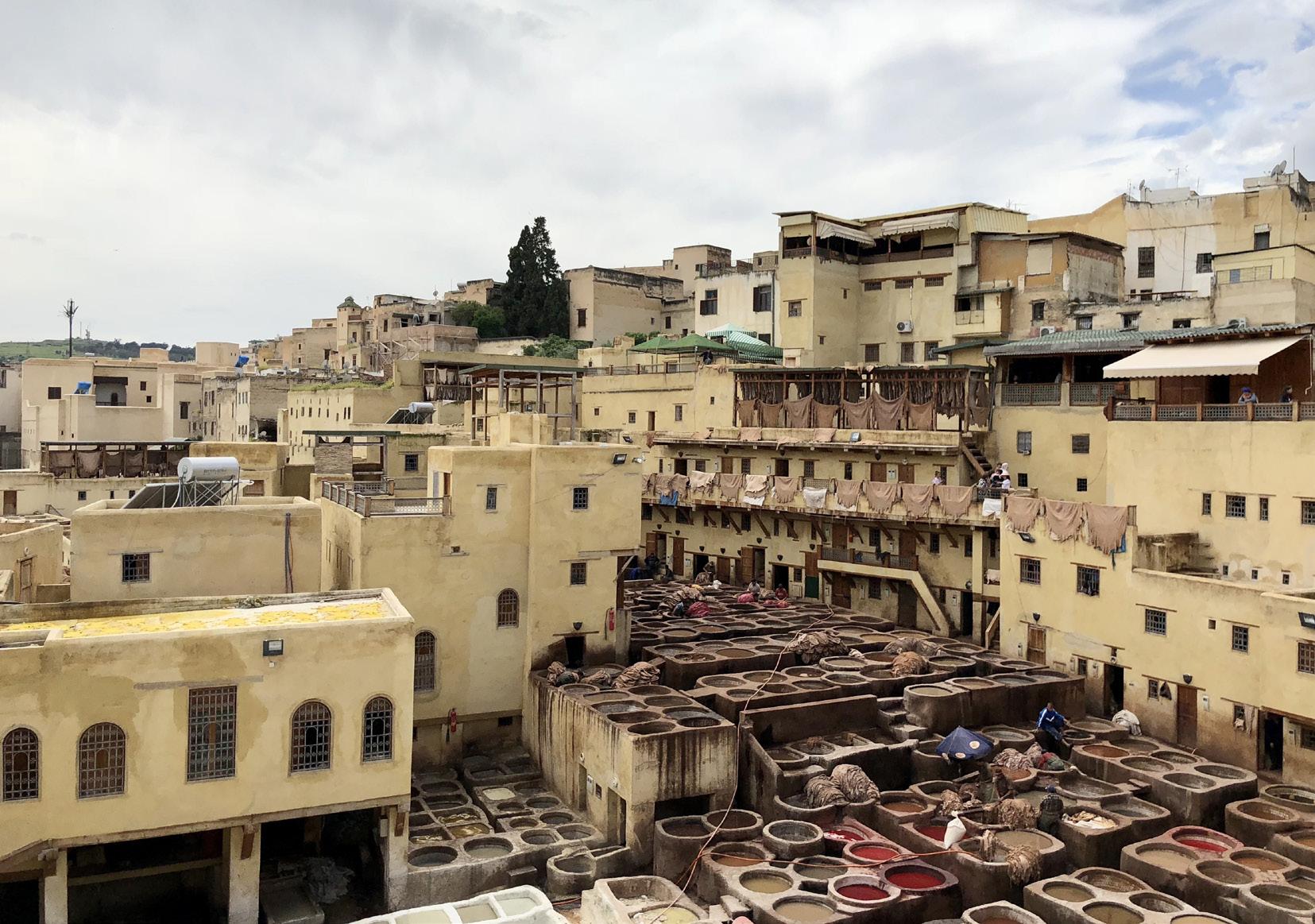
Safari Vans in Kenya [Elizabeth Anderson]
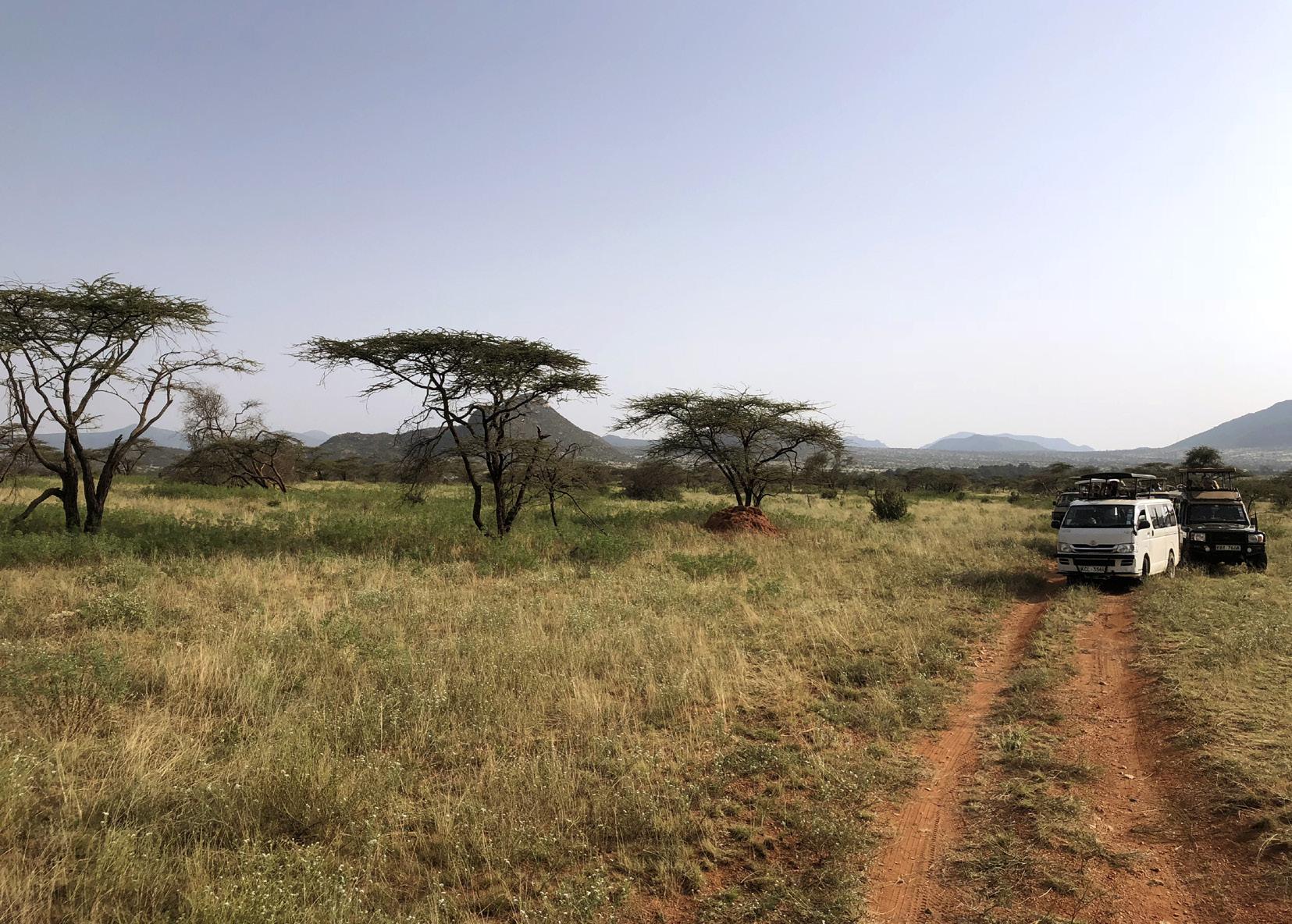
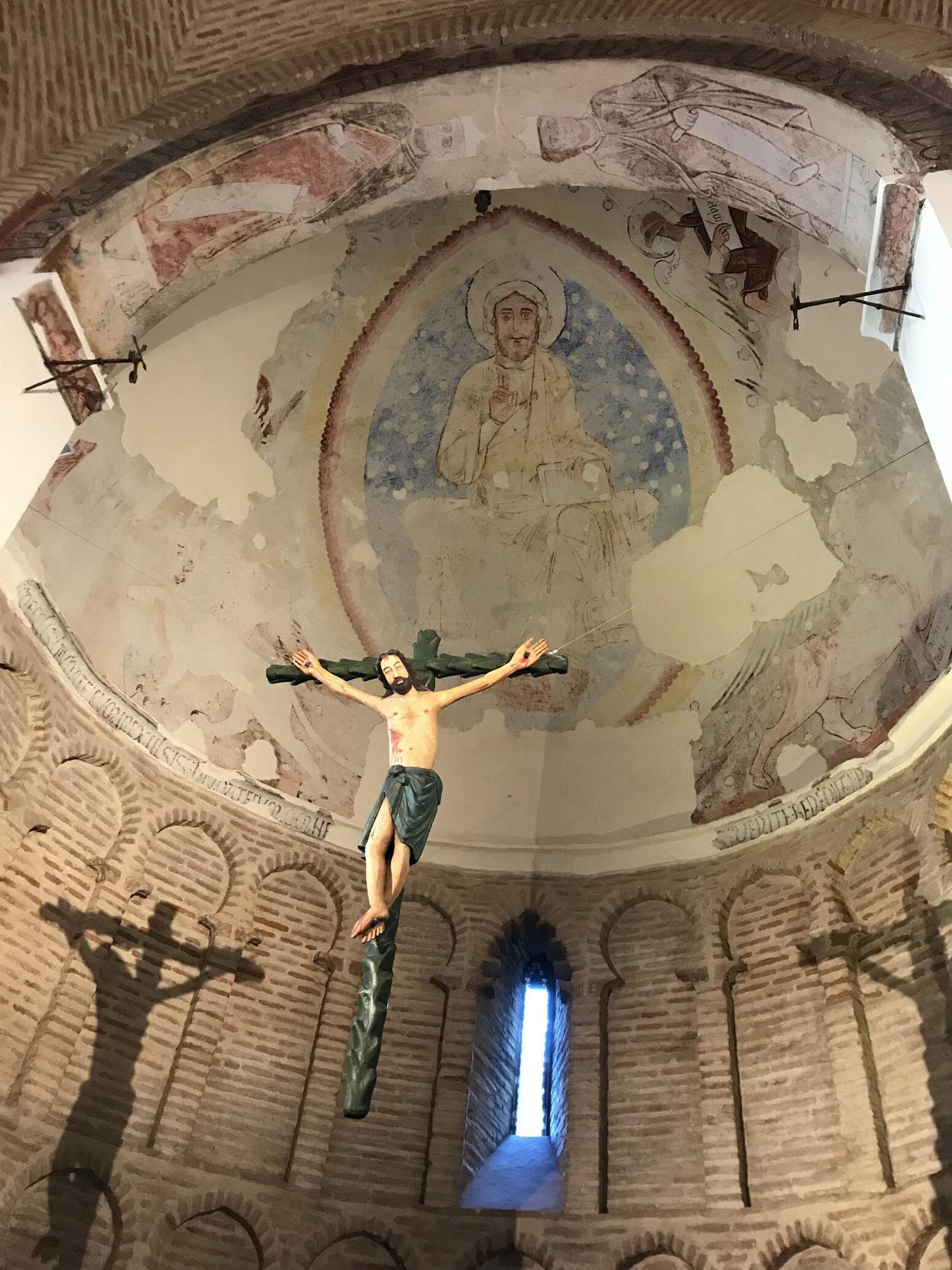
138 The Aleph
Intermixed Cultures, Mosque of Cristo de la Luz, Toledo, Spain [Luz De Leon]
Gentrifying Structures

Rapid industrialization coupled with massive migration in the 19th and 20th centuries has forced Berlin many times to expand its borders and build homes for a new wave of newcomers. An urban planning solution to a rapidly growing work force without homes came in 1861 when James Hobrecht devised an expansion of Berlin’s infrastructure to accommodate its new growth.
The Hobrecht Plan, as it was called, continued the existing street lines outward while imposing order in the spaces in between and along Berlin’s many canals. Massive building lots were then parceled out into larger blocks to allow for higher structures with courtyards. This, however, was not an aesthetic choice but a functional one: a courtyard would allow each room to have a window for light and, more importantly, access to a ladder in the case of a fire. Lower-class
Lessons VI
Street Life in Sweden [Peter Collins]
families and smaller-scale industry would fill the courtyards of these dense urban blocks as middle-class tenants would occupy the apartments above. These structures were given the name Mietskasernen (“rental barracks”).
Now, fast forward to a divided Berlin in the 1970s or 1980s: a once invisible line is materialized by concrete and the razed urban fabric in between is defined by its barren landscape and military patrols. As a result, the families who once lived in these 19th century apartments flee to more suburban communities. These Mietskasernen, decrepit from lack of use, stood empty on both sides of the wall. Squatters and punk artists, who had fled from their own communities in an act of rebellion or as a means to survive, would come to live in these structures. Here, they would find wooden floors almost a century old and small balconies that would fill the rooms with light. Social rejects turned architects, they would design their own homes with their own resources, reclaiming these lost spaces independent of the communities they left.
Jump forward again to Berlin’s reunification following the fall of the wall in 1989. Granting these squatters and artists their deserved rights to these homes, the German government also helped them bring their personalized apartments up to code. However, as these old homes were cleaned up and legitimized, they became attractive to those looking to move to a revitalized part of this European metropolis. In short, the process of gentrification began as those who brought life to these old homes were eventually forced to leave due to rent hikes and an increased cost of living. Soon, coffee shops and vintage stores replaced mom & pop bakeries and newsstands. As this economic shift altered the fabric of these communities, the names of these structures also changed: they were no longer called Mietskaserne, but rather Altbau, literally an “old building”, a much more marketable name than its militaristic predecessor.
140 The Aleph
Overall, Berlin has generally good renter’s rights and rent control, yet the city is once again rapidly changing due to the gentrification of communities with a punk past. I am currently staying in one of these older apartments, although mine was never home to squatters or punk artists (I think). There is a feeling of guilt being a visitor to this vastly changing urban fabric. I am not buying people out of their apartments, but I do go to new coffee shops run by young people who dress like me. The history of the architecture of my home tells a story of loss, renewal, and rejection. But where do I fall in all this?
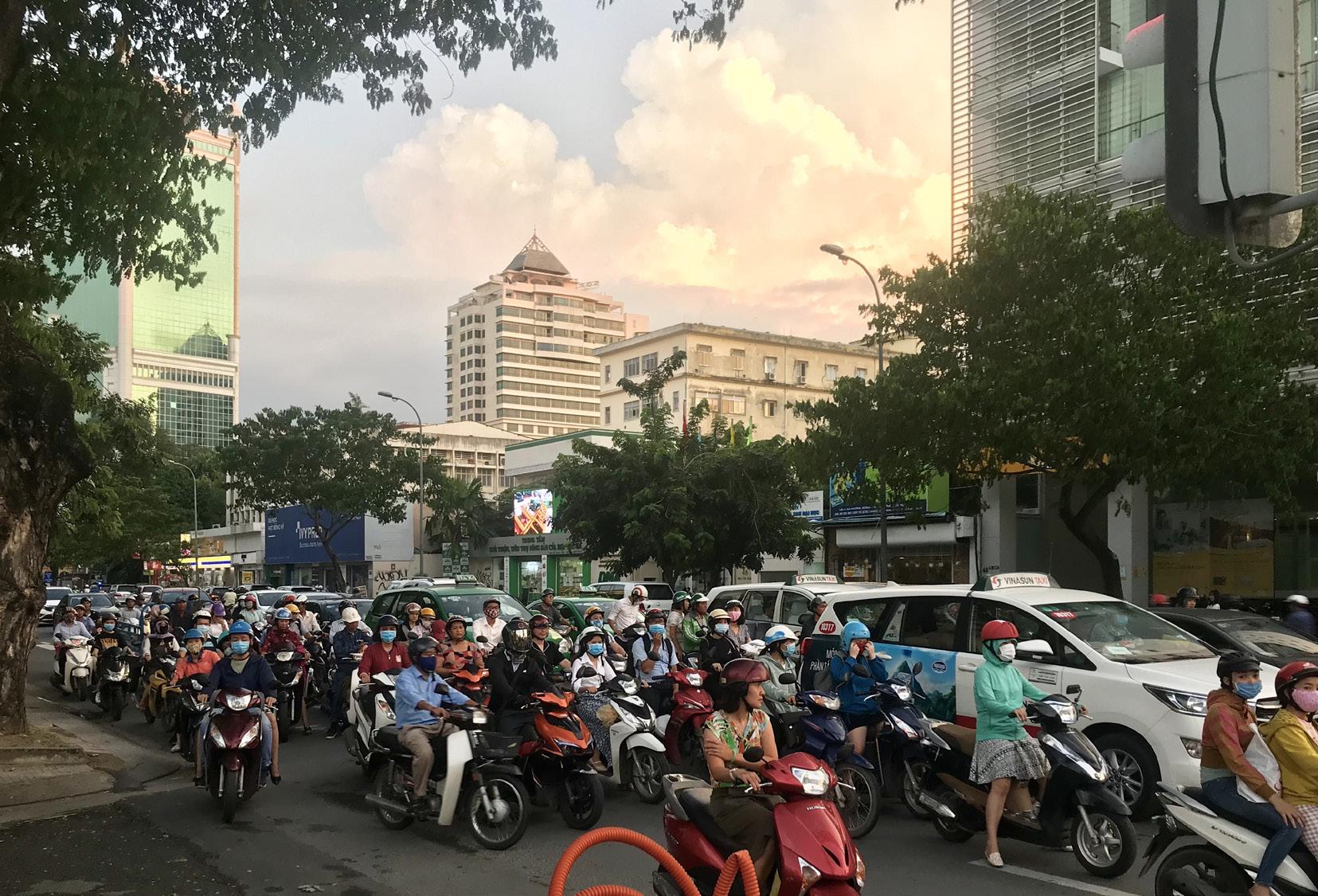
a journal of global perspectives 141
Crowded Street in Vietnam [Samuel Thurston]
-Bramm Watkin
Kleingärten
Riding the S-Bahn back and forth to classes and while out exploring the city, something that I occasionally saw flashing past the window intrigued me. Though I knew that parks and green spaces abound in Berlin, I wasn’t sure just what these big plots of gardens and rows of tiny houses were.
On a field trip with one of my professors, we rode past one of these places on a train and I finally inquired about what they were. I learned that they are called Kleingärten (little gardens) and that they exist as little oases around Berlin as a means for city residents to keep gardens, spend time outside, and grow their own food when the weather permits.
The idea of food security was actually the basis for the creation of Kleingärten. During the industrial revolution in Europe, the living conditions were anything but ideal for residents of increasingly urbanized environments. City administrators, churches, and employers implemented the idea of Kleingärten to allow residents to grow food for themselves while isolated from agricultural systems outside of the city.
This strategy for solving agricultural isolation continued to be significant through WWI, serving as a way for city residents to survive war-time rationing and shortages. This is similar to the “victory gardens” popularized in the US during this time, specifically in regard to helping the war effort. This history has given Kleingärten a special place in German city life. According to estimates, there are more than 800 Kleingarten complexes in Berlin alone.
Currently, however, Kleingärten are being reevaluated in light of some of the new challenges of urban life in Berlin. Due to the re-privatization of public housing and
142 The Aleph Lessons VII
a significant decrease in government-subsidized housing across the city over the last few decades, affordable housing in Berlin has become harder and harder to find. This leads many people to look at Kleingärten and question their significant use of city land and the fact that they are specifically zoned as non-residential areas, meant only for tool storage or a weekend get-away.
As the structure of the city changes, new development has continued to fill cultural and structural gaps between the old East and West Berlin. Kleingärten, which have existed to serve the health and wellbeing of the urban working class, may need to shift in structure and practice to continue this service under new circumstances.
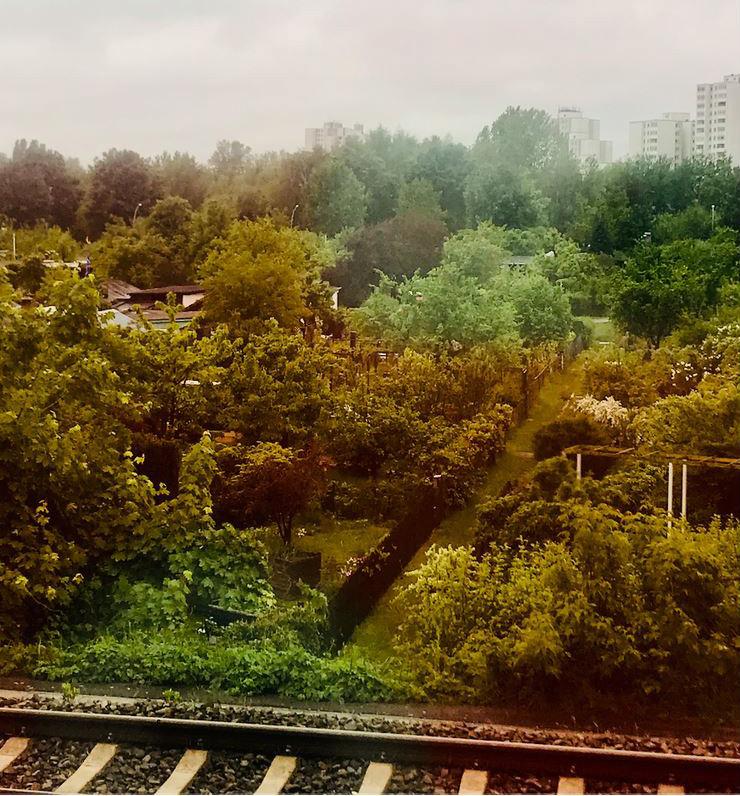 -Ruby Williams
-Ruby Williams
a journal of global perspectives 143
Kleingärten from Train Window [Ruby Williams]
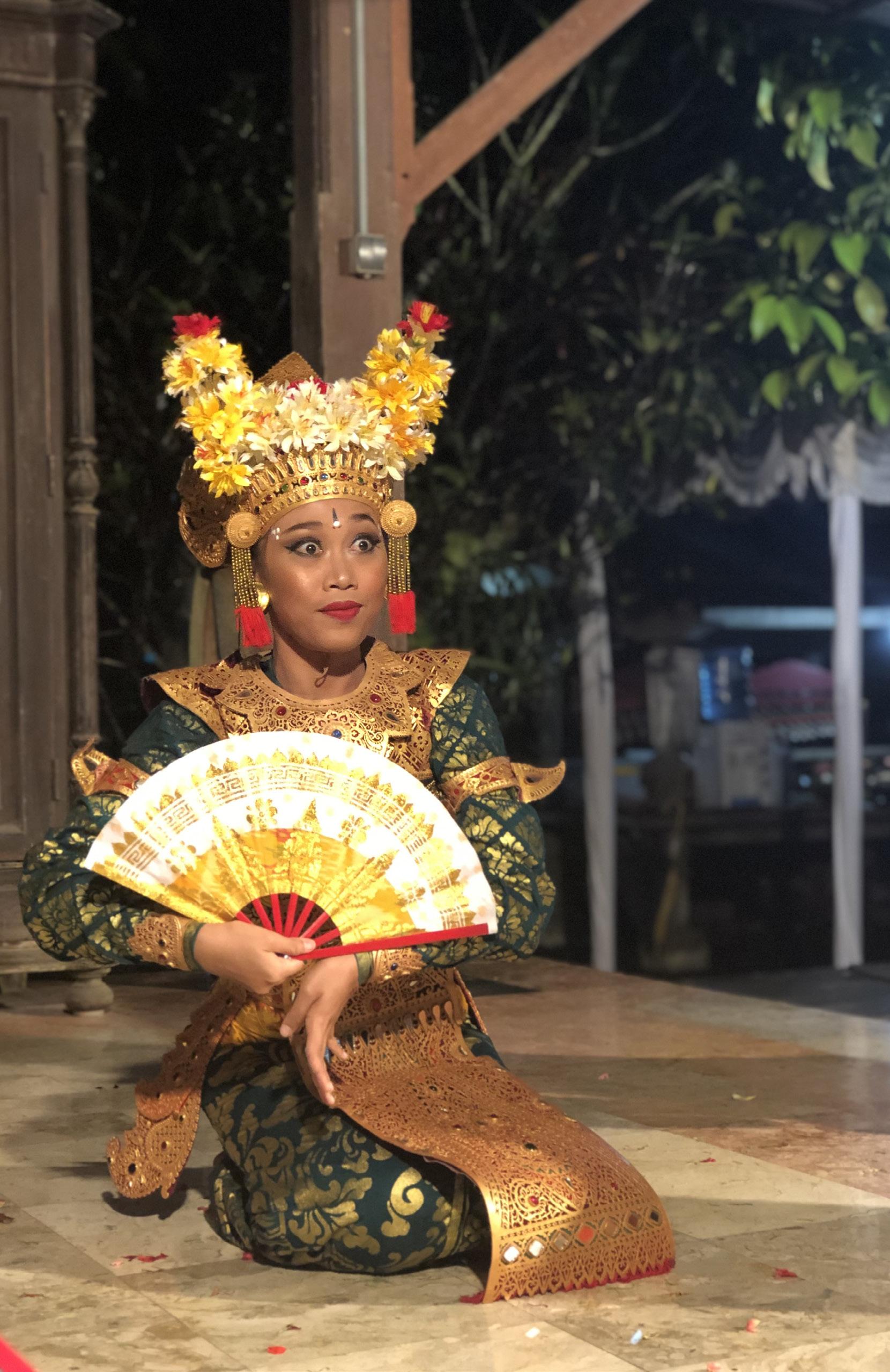 Balinese Dancer, Indonesia [Alexa Puleio]
Balinese Dancer, Indonesia [Alexa Puleio]
Superwoman
When I stepped off the bus in Nyeri, I was greeted by the friendly faces of seven Kenyan families. I searched around, unsure which woman could be the host mom that I had been given. An older man, wearing a Seattle Seahawks tshirt and baseball hat, walked over and greeted my friend Madee, while his wife gave her a hug. “You must be Aliya,” they beamed. Madee and I exchanged eye contact and laughed for a moment, unsure how best to clarify that they had the wrong daughter. Upon realizing their mistake, they quickly turned to me and gave me the same greeting, embracing me as their daughter for the next week. Looking back, this single moment was largely symbolic of my week spent in Nyeri. There was constant confusion and miscommunication, but they were always paired with the best intentions.
Mary couldn’t have been more than five feet tall, but her plump figure, an indication of wealth in rural Kenya, kept her from appearing so short. Her smooth, glowing skin made her lose 20 years in her appearance and gave little hint to the constant hard work that was expected of her as a woman in Nyeri. She had short, curly hair that always appeared perfectly gelled, leaving it with a perfect sheen in the hot, equatorial sun. Throughout my week as her daughter, I never saw her appear anything but put together, whether we were digging in the farm, walking to church, or cleaning the house.
As we drove the short five minutes to their house, I was given the brief opportunity to take in my surroundings. Nyeri is located in the center of Kenya, and while NyeriTown serves as an urban center, its surroundings are rural. The region is heavily dominated by the Kikuyus, the largest ethnic group in Kenya. Cradled in a valley between Mount Kenya and the Aberdare Mountains, the area is lush with vegetation, boasting flourishing tea plantations, while
a journal of global perspectives 145
Portraits I
bananas and avocados go to waste on the streets after outnumbering the mouths they could feed. Tetu West, the county where I was staying, features a central market, but primarily consists of private properties where families live and rely on subsistence farming. A poorly paved road runs through the center of the village, while dirt paths, vibrantly colored by rusted orange soil, sprawl in every direction.
When we arrived at an orange gate, I stepped inside to see the house that I would call home for the next week. The main structure, where we would sleep, stood to the left. It was simple but welcoming, consisting of gray, concrete
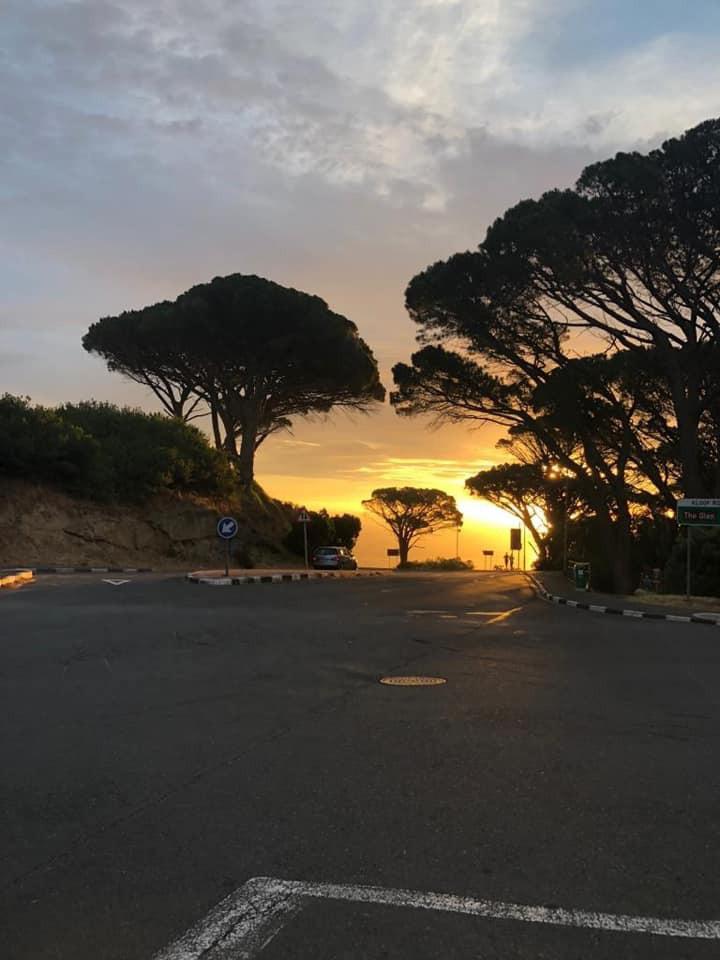
146 The Aleph
Cape Town, South Africa [Carrie Baker]
walls and a blue tin roof. Just a few yards away stood the kitchen. It was a basic structure that matched the house in its materials but had only one square, eight-by-eight-foot room, complete with a running sink and chimney. Although my family had a working propane stove inside the house, it was only used to reheat previously cooked food; instead, as an ode to East African tradition, the cooking was done over a fire in the kitchen. This kitchen became a sacred place during my week in Nyeri; it was where I would spend many hours throughout that following week, struggling to peel potatoes while Mary effortlessly sliced vegetables in her palm like a reality show chef.
Earlier in the week, when I had opened the card revealing the identity of my future family, I had read that I would have a mother, father, and two sisters, named Beatrice and Alice. The simple sheet of paper told me that my father, Isaac, was a schoolteacher, Mary was a beekeeper, Beatrice was a nurse, and Alice was in school. After arriving, I soon learned that both of my sisters would be away for the week, and Isaac’s school was over two hours away. This meant that I had only two days to bond with Isaac before he left to work for the week, leaving me alone with Mary for the remainder of my stay. In an otherwise empty household, we had only each other to pass the slow-moving time that was characteristic of rural Kenya.
As a high school graduate, Mary was well educated, especially for a woman in Nyeri where less than 60% of girls continue education after primary school. However, the language barrier still made it difficult for us to communicate. She spoke phrases of broken English, but we generally relied on some combination of English, Swahili, Kikuyu, and hand gestures. One day, as we sat cutting vegetables, she asked me to go inside and bring an orange. I returned with an orange and she began to chuckle. “No, I wanted an orange.” I laughed along with her, pretending to understand what was going on. Confused, I returned to the refrigera-
a journal of global perspectives 147
tor, which sat in the living room unplugged, and grabbed the only other item inside, a mango. When I returned to the kitchen, she beamed, proud that her new American daughter was finally beginning to understand her Nyeri English.
This sort of miscommunication happened constantly throughout the week. However, as time went on, we found other ways to connect, allowing us to jump the cultural and language barriers that laid between us. On the second day, as we sat on the metal bench just outside the house, I asked her to sing for me. I had heard her humming throughout the morning, and she always had the radio on as she would cook and clean. She agreed, opening up her voice for me to hear as she sang about praising the good lord. Her voice was warm and smooth, well-earned after many years spent soothing crying babies. When she finished, she turned to me, asking me to do the same. I had never sung for anyone before, but I allowed myself to return the musical offering, opting for “I’ll Fly Away,” a familiar song that brought back memories of comfort and home. In doing so, I shared with her more than I ever could through a combination of broken languages and body signals. After those short few moments, she was no longer a woman from rural Kenya who was opening her home to me, and I wasn’t a random American girl that had stepped off a bus completely clueless. We had shared an experience, and a love of music, that made us close. She became my mom for the rest of the week.
My parents, like most other Kenyans, were good Christians, thanks to the enduring presence of missionaries throughout the colonial era. As Christianity invaded even the most rural regions of the country, ethnic groups, including the Kikuyus, were encouraged to abandon their traditional religions. European missionaries converted the leaders of various ethnic groups, who in turn were given the responsibility of converting the rest of their community. What followed was the widespread adoption of Christianity
148 The Aleph
 Mount Kilimanjaro, Amboseli National Park, Kenya [Aliya Brown]
Mount Kilimanjaro, Amboseli National Park, Kenya [Aliya Brown]
throughout Kenya, where today over three-quarters of the population identify as Christians. These religious holdings are particularly strong in rural Kenya, where God is held responsible for everything from children’s academic success to weather patterns.
The presence of Christianity in my host parents’ lives was nearly suffocating for me, an Atheistic Jew. They went to church every week and plastered their walls with posters of Jesus, ensuring the constant presence of God in their home. God was cited as the obvious explanation for the way things were, and my mother thanked Him for sun, thanked Him for rain, thanked Him for her children, and thanked Him for me. The songs that floated from her lips matched those sung by a gospel choir, and the answer to any complex issue was simple - just pray. Knowing that my lack of religious identity would be just as baffling to my mother as her devout Christianity was to me, I actively avoided any direct conversation regarding religion. However, my best efforts were defeated as we stood in church on Sunday morning. As the choir briefly paused before continuing on to another song, my mother turned to me. “Like your church at home?” she asked. I tried to explain that I don’t go to church but instead to synagogue, abandoning my Atheism in attempts to explain my Jewish background. She furrowed her eyebrows, deep in thought, finally saying “Is that a different kind of Christianity? I’ve never heard of it.” I eventually settled with a simple nod of confirmation. She released a quick sigh of relief.
After only a few mornings, my mother and I had developed our own routine. “Arreeyuh!” Mary’s high-pitched wakeup call would ring from outside my bedroom, maybe even outside the house. As I stepped outside, rubbing the sleep away from my eyes, I could hear the clashing and clanging of pans as she stirred the chai and prepared breakfast. “We have much work to do,” she told me, handing me a bowl to fill with chicken feed. As soon as I’d finished restocking
150 The Aleph
the chicken coop with supplies, my hands were filled with scraps of fruit, chicken feet (the only part of the animal that was not included in our meal), and egg shells to bring to the pigs. I admired the fact that nothing was wasted in Nyeri. I eventually made my way back up to the kitchen, where the sink was filled with dishes for the week. Mary watched in awe as I picked up the steel wool and bar of soap, scrubbing the remnants away from a cast iron skillet. “You already know how to wash dishes? You’re such a good girl,” she marveled.
One evening, as we sat on the sofa eating our ugali and sukumawiki, Mary opened up about life as a woman in Nyeri. She told me about how she was married by the age of 19 (the same age I was as I sat listening) and had Beatrice at 20. Her sister was the same way. Since then, she has been doing the same things that she continues to do today - cooking, cleaning, farming, mothering. “The women here have hard lives,” she stated simply, as a well-known fact. “But I don’t want my daughters to be the same way. That’s why we insisted both girls go to university.”
Like most women in rural Kenya, Mary works relentlessly. Nyeri is a traditional area - the men typically earn income for the family, leaving the women with everything else required to maintain a household, ranging from running errands to scrubbing floors to slicing vegetables to nursing babies. As a self-proclaimed feminist, I did not understand this cultural divide until I became embedded within it. Each day, I helped Mary clean the house, work on the farm, cook, and do whatever else needed to be done. Before my father left to work for the week, he would come home from his daily errands and sit in the living room, watching television, waiting for one of us to bring him his dinner. My mother never seemed to resent this; in Nyeri, it was simply her duty as his wife. At times, I would also walk to my Aunt Olivia’s house, assisting with the same chores. Olivia had a three-month-old baby, and she would constantly rotate
a journal of global perspectives 151
between breastfeeding and cooking, breastfeeding and cleaning, breastfeeding and hand-washing laundry. Mary and Olivia were individually taking on a workload that was difficult for my parents when it was shared. While I had entered the homestay with the opinion that anyone trapped in such rigid gender roles was to be pitied, I soon began scolding myself for ever thinking in such a way. These women did not need my sympathy - these women were superhuman.
The power dynamics associated with gender in Nyeri have a complex history. According to ancient myths regarding the creation of the Kikuyu people, their society was actually a matriarchy initially. However, the women soon began to abuse their power over the men, treating them with cruelty and a lack of justice. Ready to end the period of oppression, the Kikuyu men plotted a coup, planning to impregnate all of the women simultaneously and overthrow them when they were most physically vulnerable. The impacts of this myth remain significant today in the fact that women throughout Kenya have significantly less power than men. They make up less than a quarter of Parliament despite a constitutional law prohibiting more than a two-thirds gender majority. Along with this, the women who do choose to run for Parliament are met with threats of rape and genderbased violence. Other aspects of Kikuyu culture, like the language itself, reflect this. The Kikuyu word mutumia, frequently used for the word woman, translates to “the silent one.”
The night before I left had a sort of sorrow that hung in the air. As we exchanged gifts, my mother thanked me profusely for the salted caramels, Dr. Seuss book, and decorated hand towel that I had brought her. She looked me deep in the eyes, holding her hand to her chest and repeating, “God bless you.” I knew that it would be hard to say goodbye the next morning. Mary had adopted me and shared her life, her knowledge, and everything else she had to give with
152 The Aleph
me. In just one short week, she had become someone that was a part of a life-changing experience; she herself had been life-changing. Perhaps the most profound part of it all was that she was thanking me. As we ate our breakfast on that final morning, she confessed to me, eyes swelling with tears, “I know that you have to, but I don’t want you to leave. I feel like you’re my real daughter.” She, too, had been my real mom. She had taken care of me, guiding me throughout the week to become everything a Kenyan woman wants her daughter to be. It’s not what I was taught to be as an American girl, and not all that I want to be as a woman. Yet, the true underlying lessons of generosity, strength, and kindness were instilled within me. These are values that I will forever hold onto because of Mary, and for that I can never truly thank her enough.
-Aliya Brown
 Young Soccer Magician, Tuscania, Italy [Susie Register]
Young Soccer Magician, Tuscania, Italy [Susie Register]
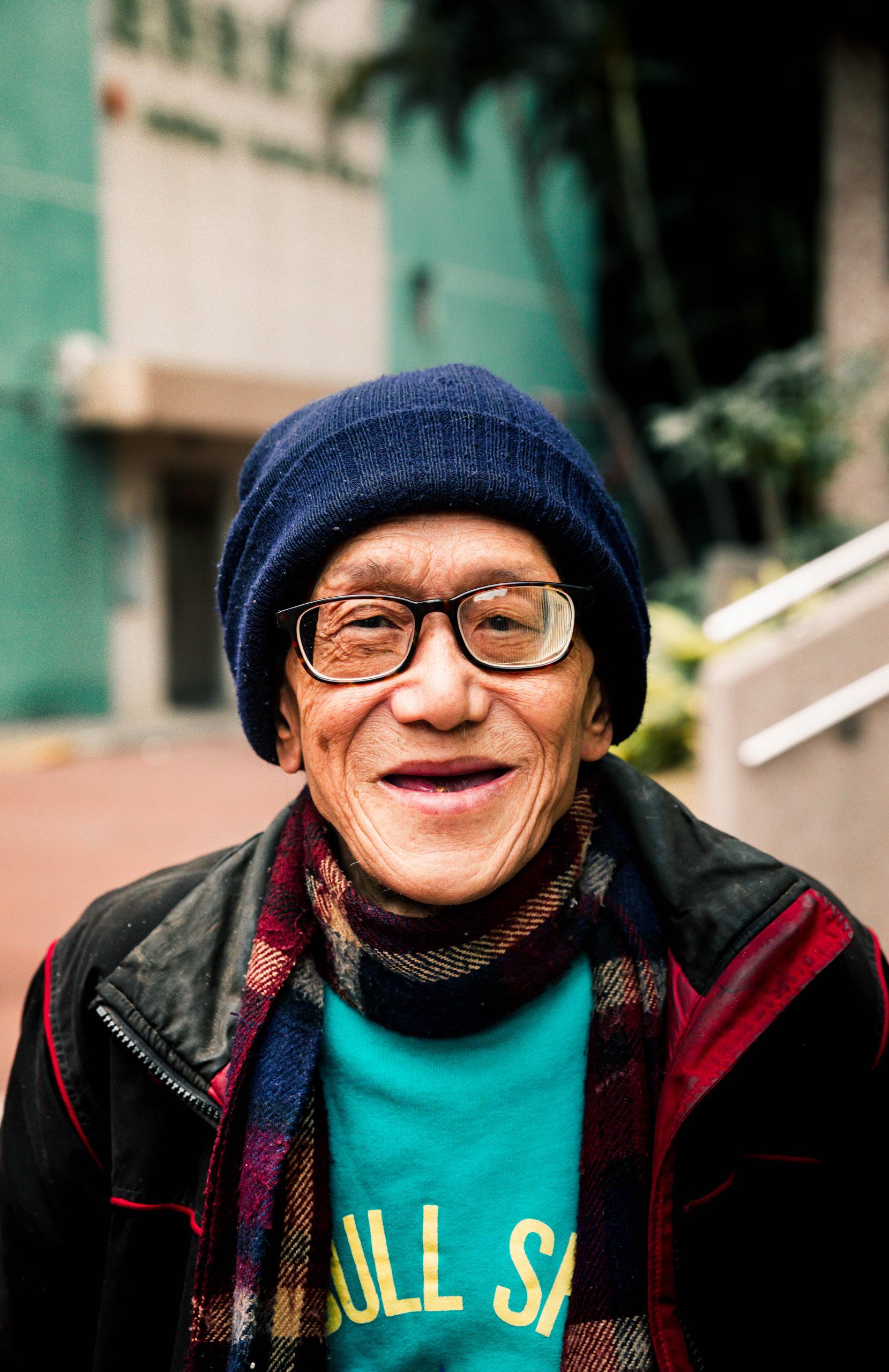
Fu Tei Resident, Hong Kong [Jonah Salita]
Bean Man and the Start of It All
I’ve been living in Kreuzberg, a Kiez of Berlin for just over a month now. Kreuzberg is a history-rich, vibrant, art-centered, and rapidly gentrifying borough of Berlin. As anyone can see all over the city, but especially in my area, there’s a lot of art - everywhere. The concept of public versus private space is much more blurred here in Berlin, and every corner, every windowsill - every relatively empty space, is an opportunity.
It all started during my first week here. As my eyes wandered around, taking in every inch that I could, I discovered something amazing - his name is Bean Man. Well, technically I don’t know what his name is, but I call him Bean Man. He’s a small, happy, orange bean holding up a marker that an artist painted in the door frame of a house near me. I wouldn’t have taken much notice of him, but then...we met again. A week later, a few blocks away, there he was, in
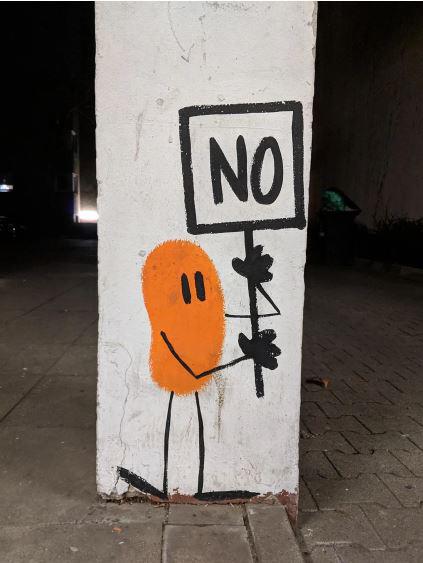
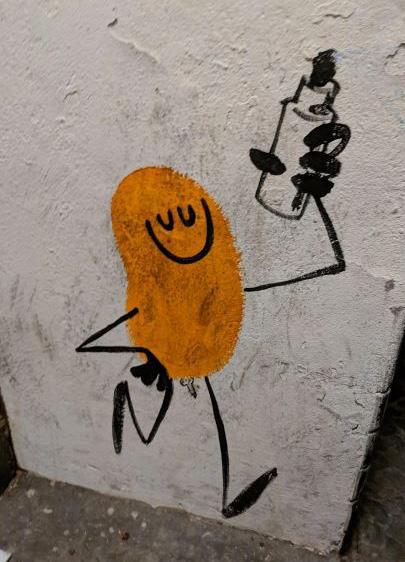
Portraits II
a similar location, but this time reading a book. In this moment, he became Bean Man, and from then on I became set on finding every one of him.
Humans crave continuity, and something about finding Bean Man not only gave me a sense of joy and accomplishment, but oddly, made me feel at home. He became my Bean Man. And, as far as I know, he only exists in Kreuzberg and the adjoining neighborhood of Neukölln (or, as some refer to the grey area in between, Kreuzkölln). Therefore, whenever I see him, I know I’m close to home. It’s art like this that gives neighborhoods identity, and public art as a whole is woven into the historical and social fabric of Berlin.
The history of free speech in Berlin is particularly interesting, and graffiti and public art has long been utilized for political purposes, propaganda, and as a way to unite, rebel, or make peace. What’s so special about it, though, is by being free it inherently takes on a new meaning. Anyone can access it and the artist has no obligations to anyone - no clients to sell to and no curator to impress. Because there’s no profit, though, resources are often limited - but limitations lead to creativity and are often the key to success.
I have a particular interest in not just public art, but serial public art - instances where the artist created more than one piece that work in a series throughout the city of Berlin. So, join me this semester as I explore its role here historically and currently. I’ll be asking, and trying to answer, questions like:
Why is public art important? How does serial art differ from singular art pieces? Why do artists choose to do this? How does the art interact with the public? How does the public interact with the art? How does scale impact the series? What is the history of the art? What is the message of the art?
To wrap up Bean Man and to answer the question I know some of you are asking - yes, I found him again, four
156 The Aleph
times to be exact. Also, I found another similar character in Schöneberg, another Kiez I spend a lot of time in. He’s a little amorphous white bird I nicknamed Erdnussvogel (“Peanut Bird” in German) for his resemblance to a peanut. I can’t officially confirm this, but after some research I believe that Erdnussvogel is done by the same artist as Bean Man. In a way, it feels like a little piece of Kreuzberg all the way on the other side of the city.
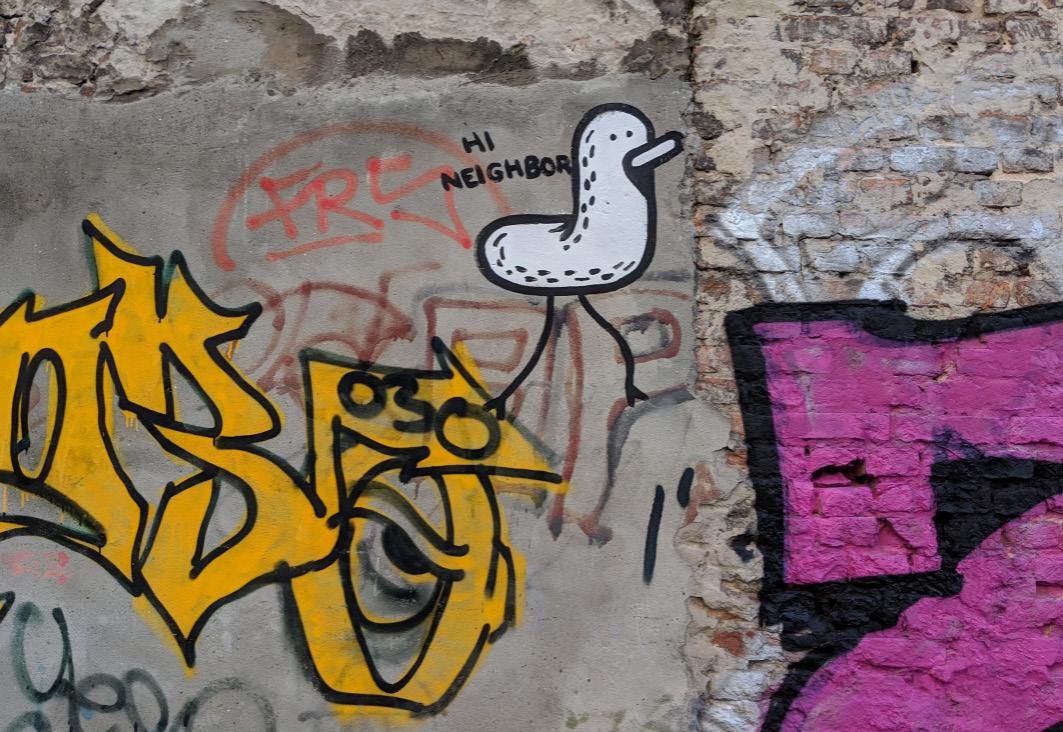
All in all, there does seem to be a political message behind both Bean Man and Erdnussvogel. Sometimes Bean Man is pictured with strike signs with messages such as “#education is not a crime” and “nobody keeps election promisesvote for nobody”. But the vast majority of them are simply...fun. Bean Man is usually smiling, and going about his day-to-day business alongside the rest of the inhabitants of Berlin, and, of course, making their day a little brighter.
-Lauren Downes
On the Water, Chichester, England [Elena Ludwig]
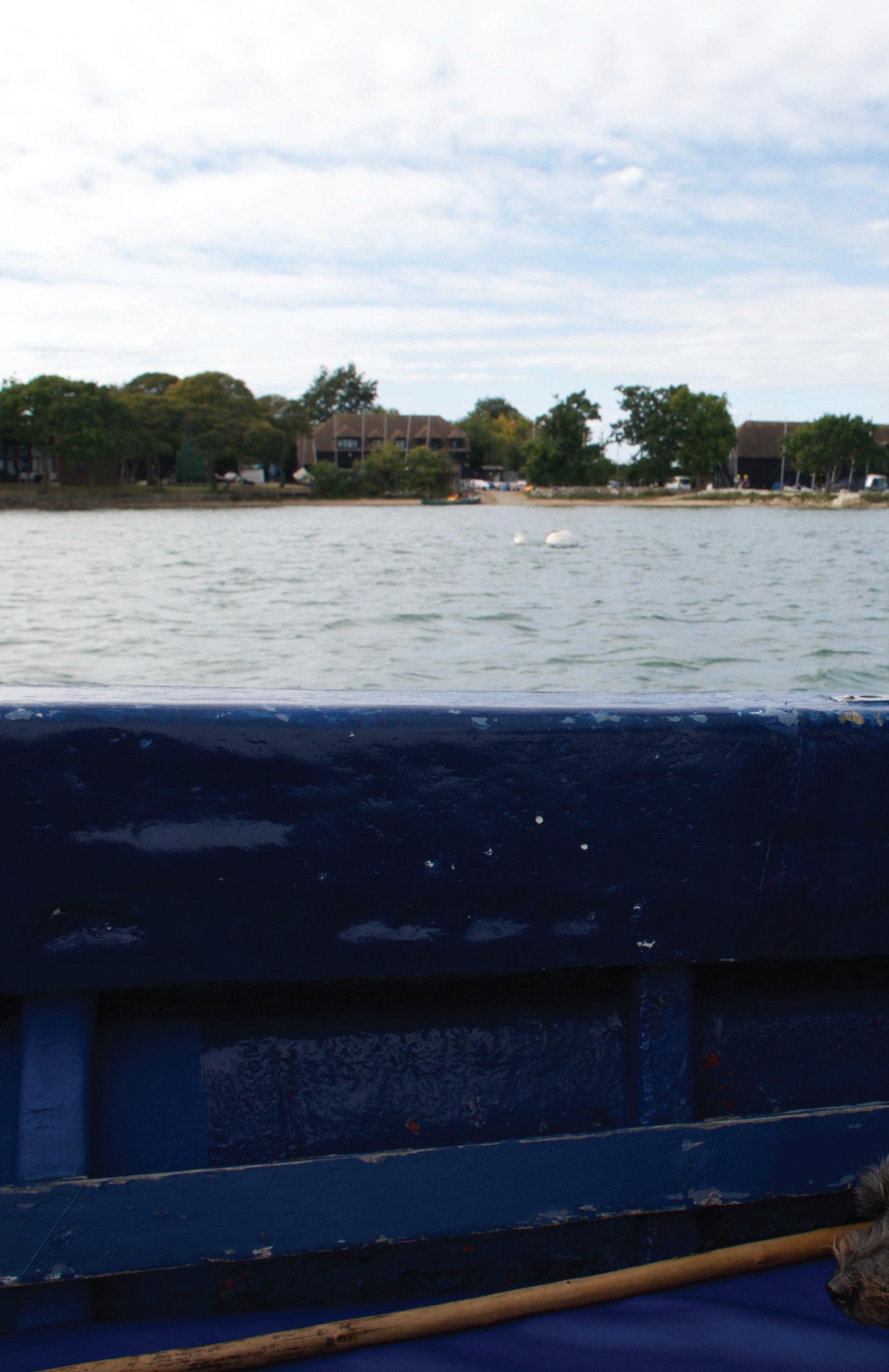
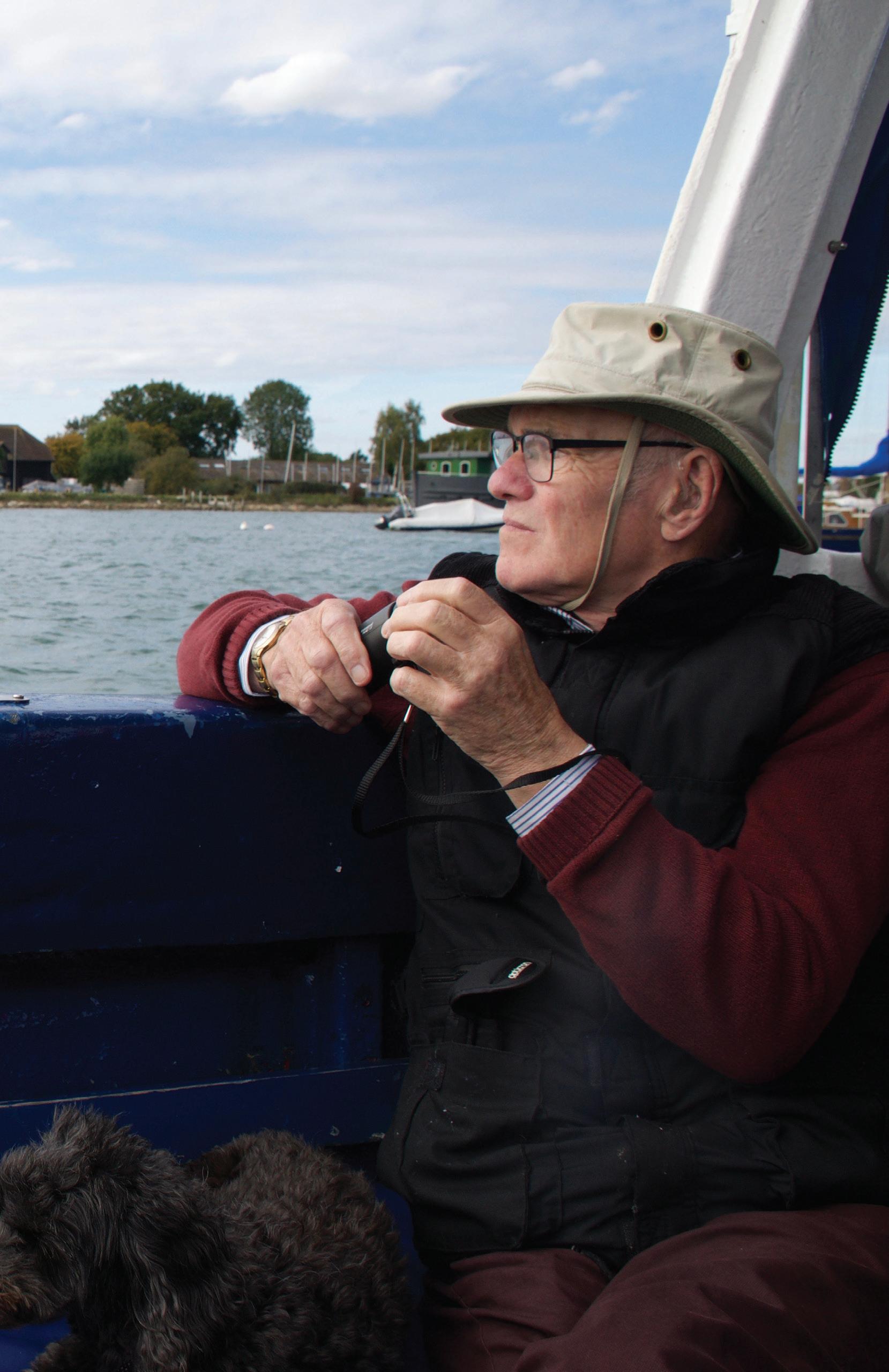
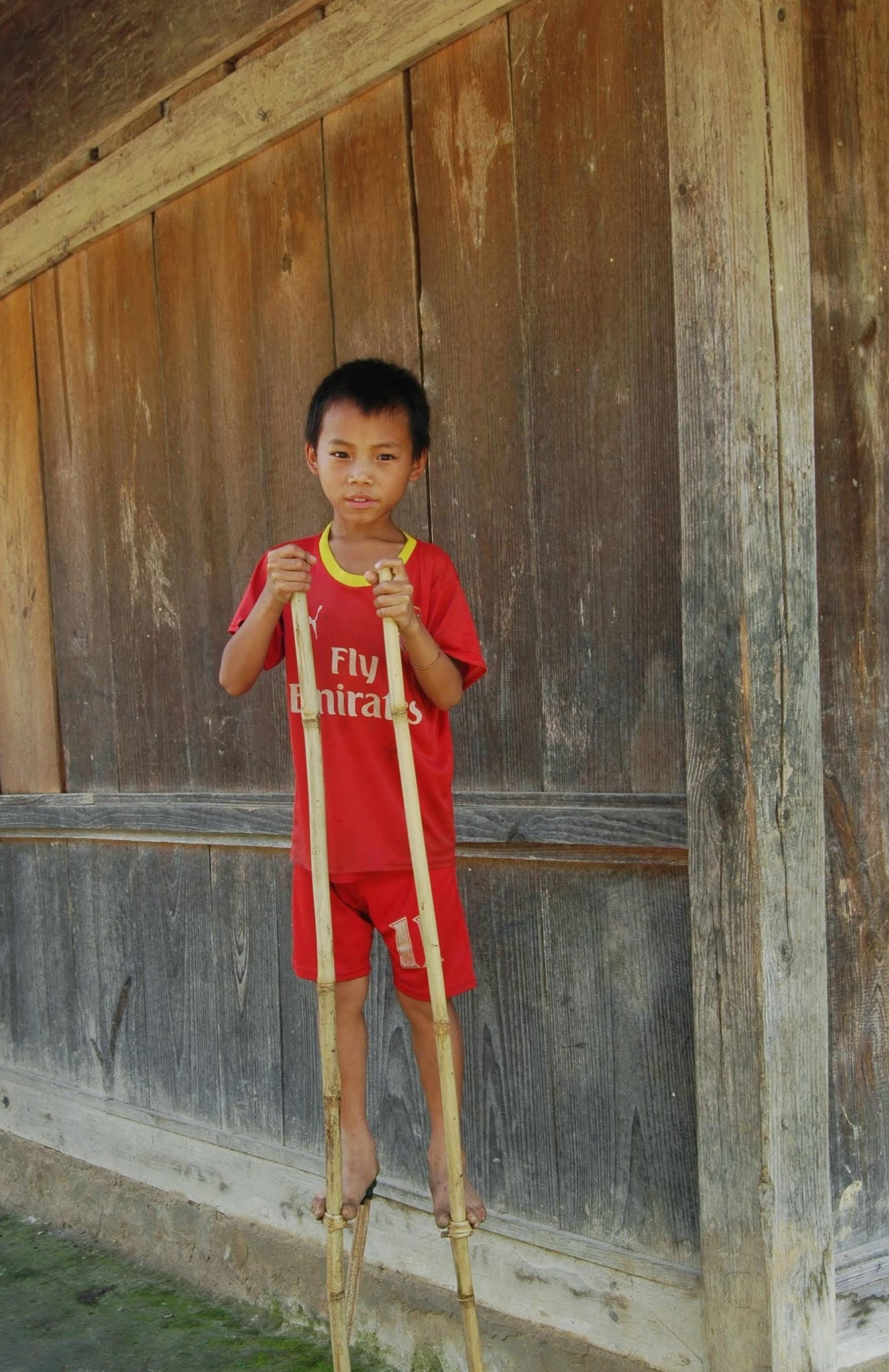 In a Village Near Sa Pa, Vietnam [Alyssa Capuano]
In a Village Near Sa Pa, Vietnam [Alyssa Capuano]
Kurt Schwitters: Significant Scraps
In my freshman year of college, I heard the name Kurt Schwitters for the first time. I was taking an English class in modernism and we were learning about some of the multimedia artists of the early 20th century.
My professor handed out copies of a small black and white portrait of a very serious-looking man with a tidy suit and a mustache, saying something to the effect of, “Feel free to modify him as you want, stick things to him, draw on him, he would appreciate it.” As we proceeded to doodle on his face, we learned about this man. Kurt Schwitters was born in 1887 in Hannover, Germany, and was active in Dadaist groups there and throughout Europe. When his work was deemed “degenerate” by Nazi authorities, he fled to Norway and later to England where he spent the rest of his life.
He engaged in various multimedia forms like spoken and written poetry, but one word that is very important for learning about Schwitters is merz. It is a form of collage that Schwitters worked on throughout his artistic career. The word itself reportedly was extracted from the phrase “Commerz Bank” as it appeared on a piece of paper in one of Schwitters’ collages. My professor told us a story about Schwitters, noting that if he liked someone he might try to nick some of their personalia to use for a piece, like a pencil they had chewed on, a ticket stub, or a thread from their coat, something that they had lived with for a time.
His pieces ranged from framed wall art to living structures like his Merzbau where he turned his house into one huge collage, featuring various themed “grottoes”. The walls, ceilings, and windows all came to be layers thick with found objects like scraps of paper, cigarettes, bits of machinery, paint, pamphlets, and any other oddity that he found intriguing.
a journal of global perspectives 161 Portraits III
The thing that I initially loved about Schwitters’ merz was the idea of trying to capture concepts, places, or people with the flotsam and jetsam that surrounded them. I myself have long been a memorabilia keeper, becoming attached to unremarkable things simply based on their proximity to an important event, or being from an important time. For years I kept a box of bottle caps, postcards, sugar packets, and business cards, occasionally going through and putting like things in their own folder for a sort of time capsule effect. I felt a kinship with Schwitters’ use of things, but also felt cautious of succumbing totally to the hoarder urge and building a merzbau of my own.
Long after my English class, I kept my little modified portrait of Kurt Schwitters. I had given him earrings, glasses,
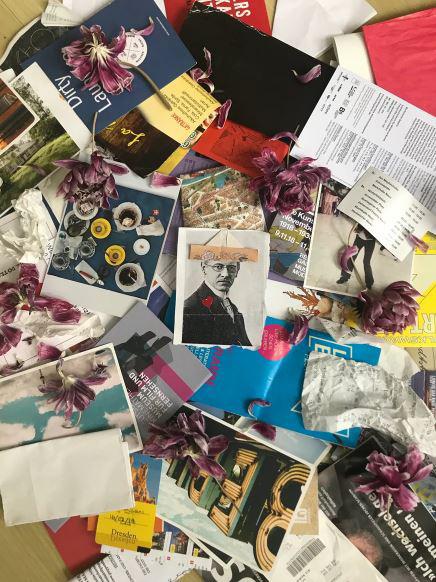
162 The Aleph
and a post-it note captain’s hat. The spirit of his work was inspiring but also gave me a little laugh when I needed it. When I learned that I would have the opportunity to spend a semester in Berlin and would be documenting my time there in a blog, it seemed like the perfect time to embrace my love of merz.
As I document my experiences in the Berlin program, I will use my own version of merz in two ways. I will seek out aspects of merz in Berlin society and visual culture, but also making my own little projects as a way to capture experiences of cultural difference and exploration. Let the merz begin!
 -Ruby Williams
-Ruby Williams
International
Carnivale, Nice, France [Gabriella Goodwin]
Almost every day I cross the canal bridge from my Kiez to the next. And, almost every week, I find a new carpet or mattress attached to the bridge railing. Recently, there was mattress painted with anti-Palestine slogans. By the time I came back that day, it was gone. But, just two days later, an old carpet was up in its place. This time, the carpet was spray painted with a strong political message calling for change. The carpet was signed “Sozi36”. This wasn’t the first time I had seen Sozi36’s work. They’re a graffiti artist native to my area, Kreuzberg 36 (36 being the area code, just like in Sozi’s name). I see Sozi36’s tags everywhere, but what makes this artist’s work so interesting is how rapidly they churn out unabashed political criticism.
In a 2017 interview with Finding Berlin, Sozi explains their hate for capitalism and imperialism and the unique situation of watching “Keiz vs. Gentrification live” here in Kreuzberg:
Kreuzberg has the best audience ever to do stuff on the street. I can communicate with the people here. There are so many majorities and minorities to offend! Sozi36 wouldn’t make it far in Reinickendorf [another borough in Berlin]. The homogeneity would end the conversation rather quickly.
Sozi’s comment highlights so many of the advantages to public art and, specifically, graffiti art. The meaning of art changes drastically based on context, and the flexibility of graffiti’s location gives it a huge advantage when it comes to impacting audiences. This isn’t a museum, this is my morning commute, and I see Sozi’s art whether I want to or not. The conversation is forced on the viewer. In addition, the art is in the context of exactly where these issues are happening. Every time I see Sozi’s work, I see people stopped in
164 The Aleph
Sozi36
Portraits IV
front of it. Their medium allows for context and exposure, and their anonymity allows for raw, controversial content. Sozi36 wouldn’t work without these advantages, and I look forward to seeing what else they create.

a journal of global perspectives 165
-Lauren Downes
East Side Gallery in Berlin, Germany [Ruby Williams]
the Aleph a journal of global perspectives
Volume XV, 2022

166 The Aleph
Finished Chess Pieces, Transylvania, Romania [Alex Shaw]






 Making Chess Pieces, Transylvania, Romania [Rachel Meller]
Making Chess Pieces, Transylvania, Romania [Rachel Meller]



 Remote Beach, Edinburgh, Scotland [Kaitlin Hunt]
Remote Beach, Edinburgh, Scotland [Kaitlin Hunt]





 Sitting Atop Lion Rock, Piha Beach, New Zealand [Madison McIntee]
Sitting Atop Lion Rock, Piha Beach, New Zealand [Madison McIntee]
 Mount Brown Hut, Kokatahi, New Zealand [Brooke Kelly]
Mount Brown Hut, Kokatahi, New Zealand [Brooke Kelly]
 Sheep Gather Skittishly, Australia [Audrey Hunt]
Sheep Gather Skittishly, Australia [Audrey Hunt]
 Windsurfer at Takapuna Beach, New Zealand [Grace Stribling-Hough]
-Brooke Kelly
Windsurfer at Takapuna Beach, New Zealand [Grace Stribling-Hough]
-Brooke Kelly
 Colosseum, Rome, Italy [Danielle LaBare]
Colosseum, Rome, Italy [Danielle LaBare]
 -Emma Consoli
Sunrise over Manarola, Cinque Terre, Italy [Jenna Bredvik]
-Emma Consoli
Sunrise over Manarola, Cinque Terre, Italy [Jenna Bredvik]
 View of Český Krumlov, Czech Republic [Jenna Bredvik]
View of Český Krumlov, Czech Republic [Jenna Bredvik]
 View from Old Town Bridge Tower, Prague, Czech Republic [Rachel Yackel]
View from Old Town Bridge Tower, Prague, Czech Republic [Rachel Yackel]


 Darjeeling Himalayan Railway, India [Brandon Harding]
Darjeeling Himalayan Railway, India [Brandon Harding]
 Mount Snowdon Summit, Wales [Meredith Fennell]
Mount Snowdon Summit, Wales [Meredith Fennell]






 Machu Picchu and Huayna Picchu Mountain, Peru [Alexandra Bilodeau]
Kawi Sebatu Temple, Bali, Indonesia [Mekayla Montgomery]
Machu Picchu and Huayna Picchu Mountain, Peru [Alexandra Bilodeau]
Kawi Sebatu Temple, Bali, Indonesia [Mekayla Montgomery]
 Sunset Over the Liberty Bridge, Budapest, Hungary [Katie Consoli]
Sunset Over the Liberty Bridge, Budapest, Hungary [Katie Consoli]







 Lighthouse at the Easternmost Point in Mainland Australia [Morgan Ross] Santa Maria in Portico Church, Lazio, Italy [Shannon Smith]
Lighthouse at the Easternmost Point in Mainland Australia [Morgan Ross] Santa Maria in Portico Church, Lazio, Italy [Shannon Smith]



 Mount Cook, New Zealand [Brooke Kelly]
Mount Cook, New Zealand [Brooke Kelly]



 Women shelling argan tree shells, Morocco [Samantha Buckenmaier]
Women shelling argan tree shells, Morocco [Samantha Buckenmaier]


 Alleyway in Stari Grad, Croatia [Chad Kilvert]
Alleyway in Stari Grad, Croatia [Chad Kilvert]






 Student Planting Trees, Senegal [Djeneba Ballo]
Student Planting Trees, Senegal [Djeneba Ballo]














 Bike Leaning on Stairs, Copenhagen, Denmark [Kayla McEachern]
-Abbey Frederick
Bike Leaning on Stairs, Copenhagen, Denmark [Kayla McEachern]
-Abbey Frederick



 View of Milan, Italy [Susan Kowalski]
View of Milan, Italy [Susan Kowalski]
 Flamenco Performance, Seville, Spain [Carolyn Girard]
Flamenco Performance, Seville, Spain [Carolyn Girard]



 Dessert, Vietnam [Rose Lippman]
Copenhagen, Denmark [Morgan Hamre]
Dessert, Vietnam [Rose Lippman]
Copenhagen, Denmark [Morgan Hamre]




 -Grace Hoffend
-Grace Hoffend







 Hallway of Vienna City Hall, Vienna, Austria [Alex Shaw]
Hallway of Vienna City Hall, Vienna, Austria [Alex Shaw]

 St. Ludmila on Charles Bridge, Prague, Czech Republic [Tanner Poisson]
St. Ludmila on Charles Bridge, Prague, Czech Republic [Tanner Poisson]



 Freezing Night in the Arctic Circle, Troms, Norway [Joshua Wasserman]
Freezing Night in the Arctic Circle, Troms, Norway [Joshua Wasserman]

 Watchtower in the Bay, Greece [Jon Hartnett ]
Watchtower in the Bay, Greece [Jon Hartnett ]
 Main Street, Jinja, Uganda [Lilly Bianchi]
Main Street, Jinja, Uganda [Lilly Bianchi]





 -Ruby Williams
-Ruby Williams
 Balinese Dancer, Indonesia [Alexa Puleio]
Balinese Dancer, Indonesia [Alexa Puleio]

 Mount Kilimanjaro, Amboseli National Park, Kenya [Aliya Brown]
Mount Kilimanjaro, Amboseli National Park, Kenya [Aliya Brown]
 Young Soccer Magician, Tuscania, Italy [Susie Register]
Young Soccer Magician, Tuscania, Italy [Susie Register]






 In a Village Near Sa Pa, Vietnam [Alyssa Capuano]
In a Village Near Sa Pa, Vietnam [Alyssa Capuano]

 -Ruby Williams
-Ruby Williams

